
Home » Destinations » Europe » Estonia » Travelling the Baltics: Your Perfect Baltic Itinerary

Travelling the Baltics: Your Perfect Baltic Itinerary
Links in this article may earn us a little money if you book/ order stuff. More here .
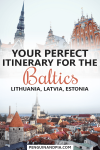
Thinking of Travelling the Baltics? Here’s a Sample Baltic Itinerary!
If you want a Baltic travel itinerary, you are in the right place! Planning a trip to the Baltics can be a challenge – even though they are so small, there is a ton to do and see in each of the Baltic States!
This is the first post about the Baltics on Penguin and Pia so we are going to be adding lots more information on the region in the future!
As a good place to start, below is a sample itinerary with the capitals, day trips, hostels, and other points of interest in the Baltic states.
In fact, all of Eric’s hostels in all three countries made our massive list of European hostels we loved staying at!
Table of Contents
Things to Consider When Travelling the Baltics
Before you dive into Baltic trip planning, you’ll want to consider a few details. From the currency they use (the Euro) to the weather, safety, and the best time to visit, we cover a few key areas below to help you prepare.
What are the Baltic States?
The Baltics (not to be confused with the Balkans, another region we absolutely love) is a small grouping of countries that are bordering the Baltic Sea in the Northeast part of Europe.
While a few of the countries that lie on the Baltic Sea can be considered Baltic countries, the Baltic States in their traditional definition are Lithuania, Latvia, and Estonia.
These three countries were part of the Soviet Union until their independence in 1991. Their capitals are beautiful, and are Vilnius, Riga, and Tallinn , in order of above!
Best Time to Visit the Baltics
Realistically, the best time to visit the Baltic countries depends on the type of travel you like to do. It will also depend on the types of activities you want to.
Eric visited in the winter and while it was much colder, there was still lots to do and explore. Another perk was that there were fewer people around.
Also, he wouldn’t have been able to go bobsledding in Latvia (see below) if it was summertime! There’s a reason a few of the Baltic capitals made the list of our favourite cities in Europe to visit in the winter .
Summertime means that the national parks in Estonia are full of hikers and wildlife. Summertime also means that the beaches along the Baltic Sea (like in Klaipėda, Lithuania) are going to be full of sun-seekers.
Day trips to Trakai Castle in the summer mean beautiful lakes and water activities. The winter means walking on the lake and enjoying the cold but peaceful atmosphere. See – there is no easy answer!
For the best of all worlds, consider visiting in the shoulder seasons of April-May and then September-October. The spring is cooler and there might be some rain but there will be fewer crowds and the snow will be gone.
The fall can also be nice because up in Estonia especially you’ll get to see beautiful coloured leaves.
Getting Around the Baltics
Getting around the Baltics is pretty easy since there are only so many large centres and they are all connected via highways (usually). This makes planning a route a no-brainer if you just stick to where the highways bring you!
We’ll get to car rentals below. As for Eric’s trip, he took the bus between all the Baltic capitals, ending in Estonia. It was awesome – we actually wrote a whole detailed post on taking the bus between the Baltic capitals from Vilnius to Riga to Tallinn .
The bus company in the region is LUX Express. He even took it from Warsaw to Vilnius to start the Baltic portion of the trip.
To be honest, after travelling with the big names like Megabus, FlixBus, ones in the Balkans like CroatiaBus, LUX was probably the cheapest and overall best experiences he has had with a bus company.
The best part about LUX Express is that tickets can be cheap but still a quality experience. You can check the timetables and latest deals on the LUX Express website .
Car Rental in The Baltics
If you are feeling like driving as opposed to the bus, renting a car is definitely a good option here in the Baltics. The thing is that these countries aren’t very big and so driving between places isn’t a huge time commitment like in other countries.
Plus, having a car means that you can adventure off and day trip if you want to see more than what you would be able to by sticking to a bus route.
In the Baltics, the highways are pretty good – regional roads between cities are paved and well-maintained. With any country, the more rural you get, the worse the roads become but that’s sort of a standard you’d come to expect.
Another big plus is that since the Baltics are all in the EU and the Schengen Zone, there are no internal borders between them. So you can drive wherever you like and cross borders without any problems!
Given that Baltic road trips are very doable, there are loads of rental car agencies available. You can compare prices from different agencies for the duration of your trip with this handy tool . Make sure to read the fine print about additional costs in case there are any issues.
Are the Baltics Safe?
Because so little is typically known about the region – this is a popular question to ask. With a rich history and an intimidating neighbour to the east (Russia), it’s no wonder we wonder if the Baltics are safe.
In short, we think the answer is: yes, but. The Baltics themselves are politically stable and developed nations. They are in the EU – and that wouldn’t happen if the countries still needed to get their act together. With any country, however, it’s always wise to keep your guard up in an unfamiliar place.
The capitals are beautiful and can get quite touristy in the summers. As a result, you’ll want to watch your pockets in crowded areas in the Old towns of Riga and Tallinn. If you decide to hike through a National Park, remember to lock your car and/or take valuables with you.
A local connection (who took Eric for beers and dinner in Vilnius the first night he arrived) mentioned that you wouldn’t want to hang around the main train/bus station at night.
That said, is there any train station you WANT to hang around at night in any country? Not really. So, use common sense or ask locals/hotels/tour providers about what’s a good area or not!
Travel Insurance for the Baltics
When visiting the Baltic countries (or travelling in general) it’s usually a good idea to have travel insurance. This includes medical travel insurances and the coverage for things like lost baggage or delays.
If you aren’t already covered by a company plan, extended medical plan, or a credit card insurance plan, we recommend that you get private travel insurance.
Travelling the Baltics: A Sample Baltic Itinerary
If you plan on travelling the Baltics, we want to help you out with a sample Baltic itinerary.
We’ve decided to write about it in the way that Eric did it – south to north. This means that you’d start in Vilnius, Lithuania and head through Latvia to Tallinn, Estonia.
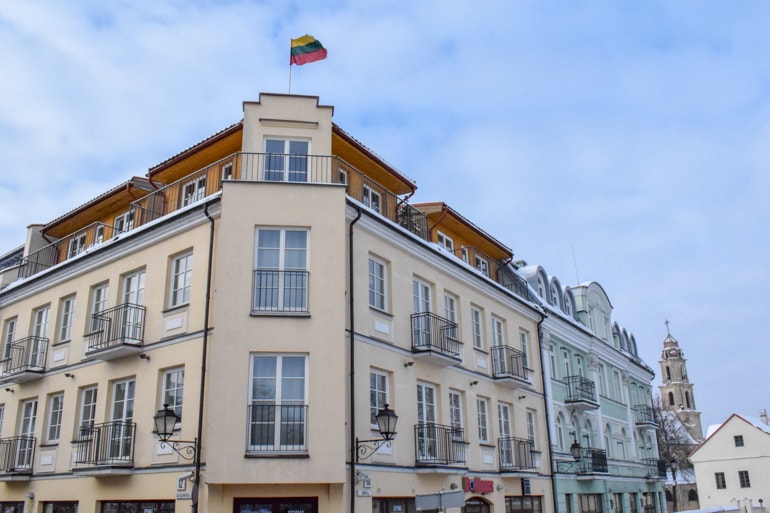
- Estimated Time to Stay: 2 nights
- How to Get There: Bus from Warsaw, Poland is about 7 hours, could also fly into Vilnius.
Beginning the itinerary with a great first city, Vilnius is a rich city full of history around every turn. Eric explored the city on his own for most of the days he was there.
In that time, he explored the Hill of Three Crosses, Vilnius Cathedral, the Bell Tower among other attractions. If you wanted an actual guide (and not just wander as Eric did) then you can go on a Vilnius walking tour with a local guide .
When Eric stayed there, he stayed in Jimmy Jumps House Hostel . It was a great stay – the people were awesome, the staff were friendly and welcoming, the location is right in the centre of the city, and they even make you waffles for breakfast!
Accommodation for Vilnius: Check for hotel deals or Hostelworld for great hostels !
Trakai (and the Castle)
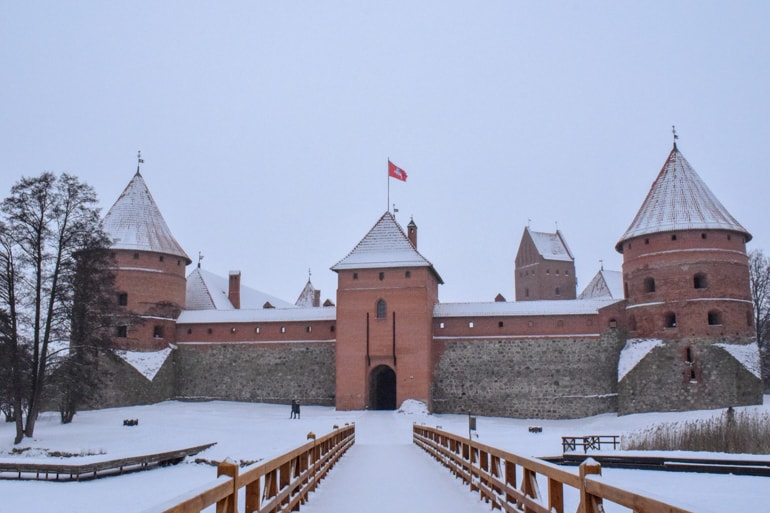
- Estimated Time to Stay: Day Trip
- How to Get There: Bus from Vilnius, car would also be easy – takes about 40 minutes.
Whether it’s the summer or the winter, a day trip to Trakai (and to visit the Castle) is definitely worth your time.
Eric went in the wintertime and even though it was super cold, it was really cool to basically have the castle to himself! The town itself is situated on the lake so it’s beautiful in the summertime as well.
Trakai Castle was built in the 14th century and remains an important place for Lithuanians as a medieval stronghold and a symbolic place of where statehood is preserved.
There are lots of different exhibits and galleries within the castle so it’s worth the admission fee. You can learn more about the town and castle here .
Nearby, the town is filled with small shops, cafes, and restaurants. These were open in the wintertime and we can’t even imagine how busy (but lively) the town must be in the summer.
If you wanted to leave the car in Vilnius, you could always take a day tour to Trakai to make the journey and guided tour super simple. If you planned on staying in Trakai in the summer, there are resorts and guest houses available!
Accommodation for Trakai: Check for guesthouse and resort deals !
- Estimated Time to Stay: 1-2 Nights
- How to Get There: Train, Bus, or Car – all methods take approximately 1 hour and 30 minutes from Vilnius.
Eric really only drove through Kaunas but his local friend who met him for dinner was from there. He explained that Vilnius, as the capital, was better for history and charm, whereas Kaunas was more lively with things to do for the younger crowds.
Obviously, there is a great deal of history in Kaunas with a castle, a monastery, cathedral, and many museums.
There are generally lots of cafes, restaurants, and shops in Kaunas as well as venues for music, etc. To learn more about Kaunas, check out the tourism website !
Accommodation for Kaunas: Check Booking.com for hotel deals or Hostelworld for great hostels !
- Estimated Time to Stay: 1 Night, or Pass Through on the way to Šiauliai. Could also Day Trip from Kaunas if necessary
- How to Get There: Car or Bus is best – 2 hours on the highway from Kaunas
Heading out to the coast of the Baltic, you’ll find the port city of Klaipėda. Klaipėda is a historic city with seafaring roots that go back centuries.
The old wooden, German-style buildings along the ports serve as a charming backdrop for cruisers that arrive at the busy port.
Klaipėda is actually Lithuania’s third-largest city – and so there are lots of things to do from museums to restaurants, theatres and green space.
The National Park – Curonian Spit – is a massive sand dune located close to the city. You can learn more about visiting Klaipėda here .
Accommodation for Klaipėda: Check for seaside hotel deals or Hostelworld for great hostels !
- Estimated Time to Stay: 1 Night
- How to Get There: From Klaipėda, Car is about 2 hours, Train varies from 2-3 hours, route/stops depending
As the fourth largest city in Lithuania, you might think there’s nothing left to see! That’s where Šiauliai proves you wrong.
While you’ll find many old museums in the city, the city is also a place of pilgrimage and served as a place of resistance to Soviet rule.
As a result, you’ll find the Hill of Crosses nearby to the city. On the Hill, there are over 100,000 wooden crosses that have been left there over the decades. It really is a sight to see and a place to be respected.
If you wanted to see the Hill of Crosses for yourself but weren’t planning on heading to Šiauliai on the way to Riga, consider a day trip from Vilnius for a Hill of Crosses Tour .
Accommodation for Šiauliai: Check Booking.com for hotel deals !
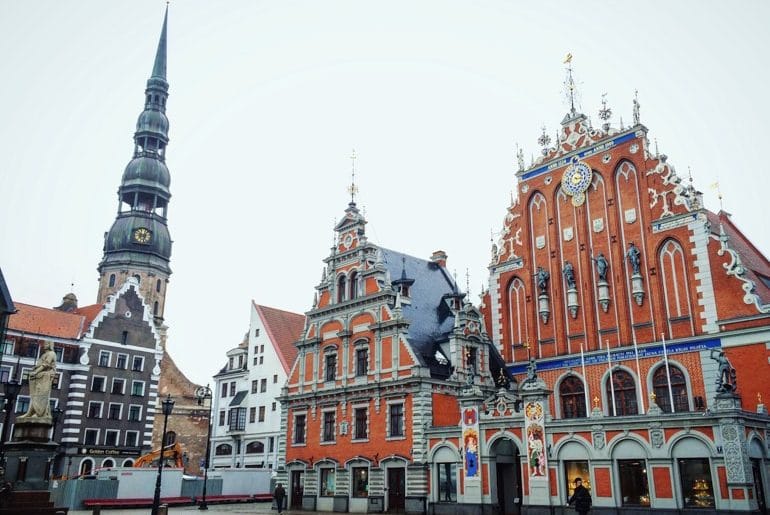
- Estimated Time to Stay: 2-4 Nights
- How to Get There: Car from Šiauliai is just under 2 hours, Train from Šiauliai is just over 2 hours.
As the largest of the Baltic capitals, there is TONS to do in Riga! Eric loved the city when we did his trip – and he wants to bring Lisa there someday soon so she can experience it, too!
Riga is a fantastic mix of history with new-age shops, coffee places, restaurants, and style. You get hints of former Soviet rule mixed with progressive ideas from the young people.
Not to mention it has incredible buildings, cathedrals, monuments, and other must-see attractions (like the Space Monkey statue).
Given the amount of history to Riga (much of it being significant Soviet history) a walking tour with an emphasis on Soviet tales might be for you! Besides that, there is lots of great food in Riga.
Eric tried the local cuisine of deep-fried bread at the traditional restaurant and beer hall. Now, if you are thinking “hmm, that would be delicious and definitely not healthy for you”… you’d be absolutely correct.
If you wanted to try other authentic cuisines, consider a food tour around Riga with a local guide who knows their stuff! We plan on writing up a whole other post on Riga soon so you’ll get lots more tips there.
As for a place to stay Eric stayed at Naughty Squirrel Backpackers . Technically a party hostel, it wasn’t as crazy as it sounds.
The staff were great, the people were nice, and the place was huge. You could lounge around or choose to socialise if you wanted. Bunks and rooms were huge and had amenities in the bunk which is always a nice detail.
Eric would definitely stay again for the tiny bar on hand and the free welcome shot of Latvian liqueur – Black Balsam!
Accommodation for Riga: Check for great Riga hotel deals or Hostelworld for great hostels !
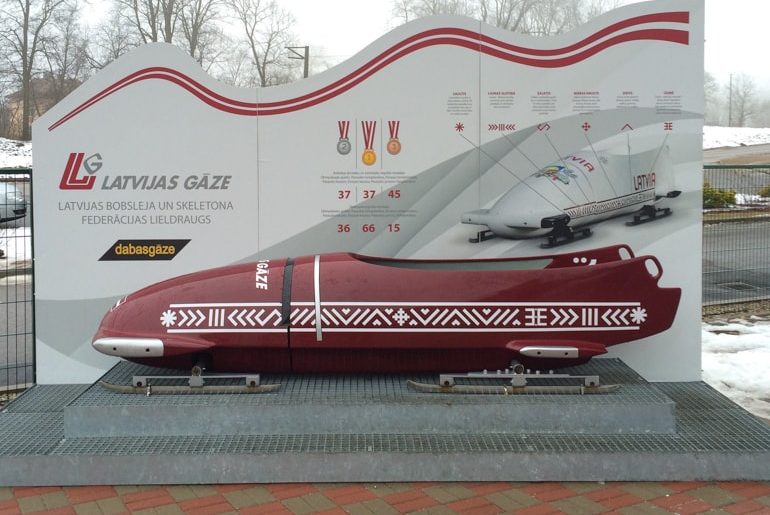
- Estimated Time to Stay: 1 Night or Day Trip
- How to Get There: Just under an hour driving, just over an hour with the Train.
Sigulda makes a great day trip or a longer escape from the city. Known for dense forests, castles, and parks, the city has one other attraction that is well-known around the world.
Sigulda is home to one of the world’s few operational bobsled tracks that are open to visitors – and you can ride a real bobsled down it!
Eric paid for the experience to be driven by a member of the Latvian sliding team – and WOW is it worth it!
The town itself is charming but the draw for people is the number of things to do that will excite you and keep you busy. You can learn more about Sigulda here .
Accommodation for Sigulda: Check Booking.com for hotel deals !
- Estimated Time to Stay: Day Trip
- How to Get There: Train or Car both take about 40 minutes (train can be shorter or longer route depending)
If you’re done with Riga and want to check out more along the Gulf of Riga, then head to Jūrmala. This beach town is a resort city that lies just west of the capital making it a great day trip.
The city is known for its massive sandy beach that gets busy in the summers as people head there to cool off and hang out by the water.
The shore is lined with seaside villas and other shops made from wood seeming like they were plucked from another era!
There are also a few parks and wooded areas that are great for small walks and hikes. Learn more about visiting Jūrmala here .
Accommodation for Jūrmala: Check Booking.com for hotel deals !
Pärnu + Soomaa Wetlands
- Estimated Time to Stay: 1 Night
- How to Get There: Car or Bus are about 2 hours and 20 minutes from Riga (slightly longer from Sigulda or Jūrmala)
If you want to enjoy the Estonian version of Jūrmala, then head to Pärnu. Known for its Estonian sunshine and sandy beach, Pärnu Beach is a resort town with youthful vibes, cool art, and historical bathhouses scattered through the city.
Pärnu is actually the fourth largest city in Estonia but the population balloons in the summertime with tourists and locals coming out to enjoy the water in Pärnu Bay.
From restaurants to nightlife there’s something for everyone. Check out more to do in Pärnu here .
Nearby, the Soomaa Wetlands are located in Soomaa National Park. The park itself is known for its high water. This makes the area great for canoeing and sighting wildlife.
Accommodation for Pärnu: Check Booking.com for hotel deals !
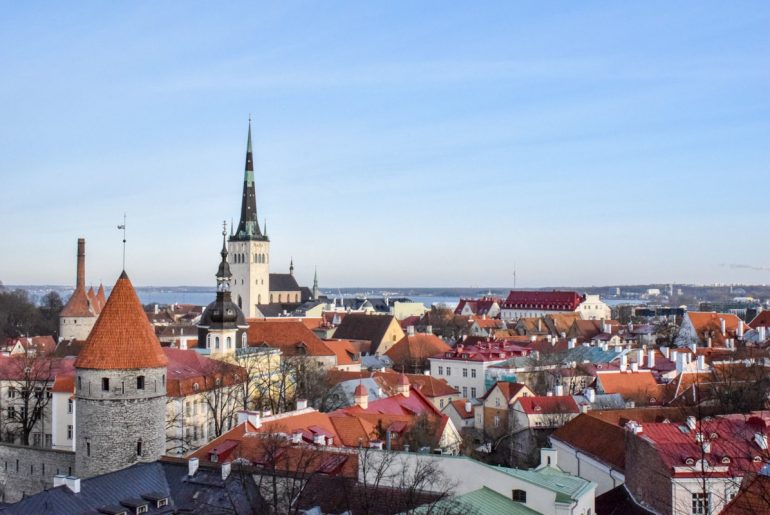
- Estimated Time to Stay: 2 or 3 Nights
- How to Get There: Car, Bus, or Train – just over an hour, 1.5 hours, or 2.5 hours, respectively, from Pärnu
Oh, Tallinn. Such a beautiful city. Eric was lucky enough to be guided around Tallinn by his former flatmate from when he lived in Edinburgh.
Needless to say, having a local around was a great way to experience the city! It was great to have a local show Eric around – she’s even (since) written a guide on spending one day in Tallinn !
Tallinn is known for its Old Town. So, you should start off with a wander there. The bright rooftops and cobblestone alleyways transport you back into medieval times.
There is quite a bit of history and amazing restaurants, cafes, and churches in the area. We walked around with our local guide but you could hop on a bike and take a guided tour – might be lots faster and you’ll get some exercise!
If you are done with attractions in the city centre, you should visit the Tallinn Tv Tower which is located just a quick bus ride away. As the tallest building in Northern Europe, it’s a pretty great attraction that is worth the view for the price of admission!
Eric visited with his friend and even though the views were a little cloudy it was still amazing to see the countryside and the Baltic Sea! If you know you want to go in the high season – get a line skip ticket for the Tallinn Tv Tower .
As for sleeping, Eric stayed at Red Emperor Bar and Hostel. For the price and the location, the hostel was good. There was a bar onsite (never got too crazy, just very social) with a lounge for loud and another one for quiet.
The rooms were standard – good lockers, good bunks, good bathroom facilities. The staff was very chill and you even get a beer with check-in!
The location is just outside the Old Town so like we said – it’s a good place to crash for a few nights and meet interesting people.
Accommodation for Tallinn: Check Booking.com for hotel deals or Hostelworld for great hostels !
Lahemaa National Park
- How to Get There: Car, Bus, or even a Taxi – each take about 45 minutes one way from Tallinn
With a landscape and wildlife similar to Canada (they are at similar latitudes to parts of Northern Canada), Lahemaa National Park is a nature lover’s dream.
Lahemaa is just a short distance from Tallinn yet it’s such an important forested area for conservation in Northern Europe that includes hiking to rock cliffs, waterfalls, beaches, and even moose!
If you want to learn more about Lahemaa, you can check out the official website . To make the trip even more simple, you could make the day trip a day tour to Lahemaa from Tallinn with a guide.
Optional – Day Trip to Helsinki
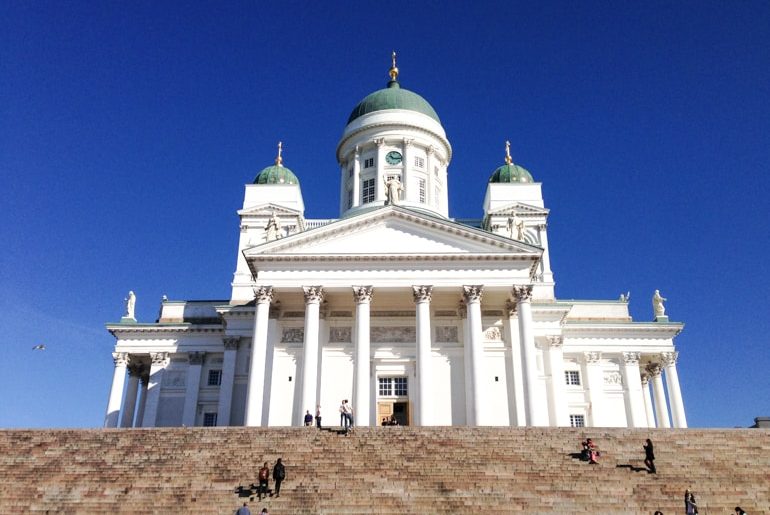
- Estimated Time to Stay: Day Trip or Overnight Trip
- How to Get There: Ferry from Tallinn is 3 hours. Flying takes 30 minutes (Eric did it by accident – it’s a long story).
Ah yes, a Helsinki day trip from Tallinn. Taking the ferry to Finland is a great option if you’ve got a day to kill and you’ve seen everything in Tallinn and the surrounding area.
That said, we wrote a whole post on how to take the ferry from Tallinn to Helsinki (and back) so check that out if you are interested!
Once you get to Helsinki, there is loads to do and see. Eric only had a few hours to explore the city but really wants to return with Lisa since she’s never been. I
f you want to know what to check out in Helsinki, read the guide written by our local connection Nick about the perfect day in Helsinki ! That said if you DID want to sleep there, check below for great places to stay in Helsinki.
Accommodation for Helsinki: Check Booking.com for hotel deals or Hostelworld for great hostels !
And there you have it – a few great ideas and a rough itinerary around the Baltics. In the end, there is so much to check out in these tiny countries that you’ll end up coming back for another trip or two.
This post was just to get you acquainted with the countries and the idea of travelling the Baltics! What do you think? Have you been to the Baltics or are you considering it? We can’t wait to get back there because Eric wants to show Lisa around! We’ll keep ya posted!
- Compare flights on Skyscanner
- Check for Hotel Deals or Book A Hostel
- Get A Rental Car (depending on the destination)
- Research plug types and possibly get a travel adapter
- Go over our packing list
Pin it for later!
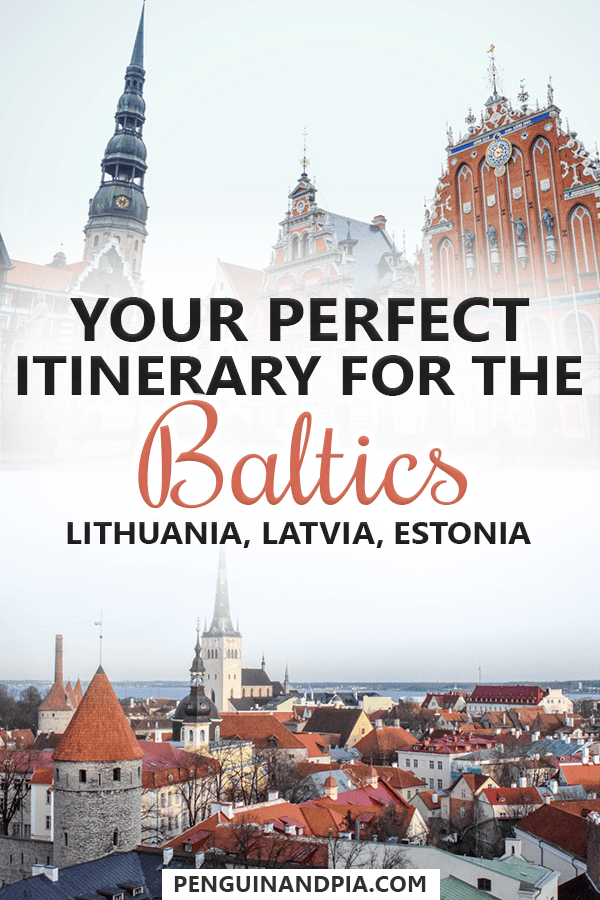
As an Amazon Associate we earn from qualifying purchases.
Destinations
Privacy policy
Disclaimer & Affiliate Disclosure
Terms of use
© 2024 Creativlier Media Inc.
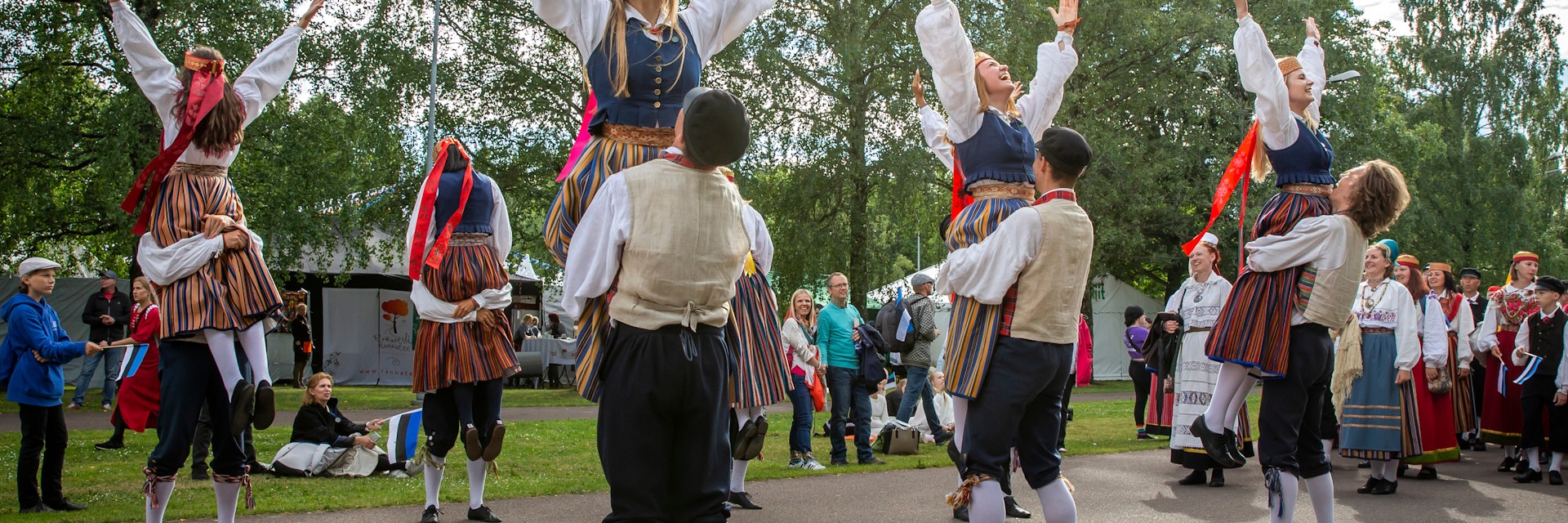
Shutterstock / Katiekk
The Baltic States
A land of crumbling castles, soaring dunes, enchanting forests and magical lakes – a trip to the Baltic proves that fairy tales do come true.
Leave the planning to a local expert
Experience the real The Baltic States. Let a local expert handle the planning for you.
Attractions
Must-see attractions.

Hill of Crosses
Lithuania's fabled Hill of Crosses is a symbol of defiance as much as a pilgrimage site. More than 100,000 crosses have been planted on this low hill,…
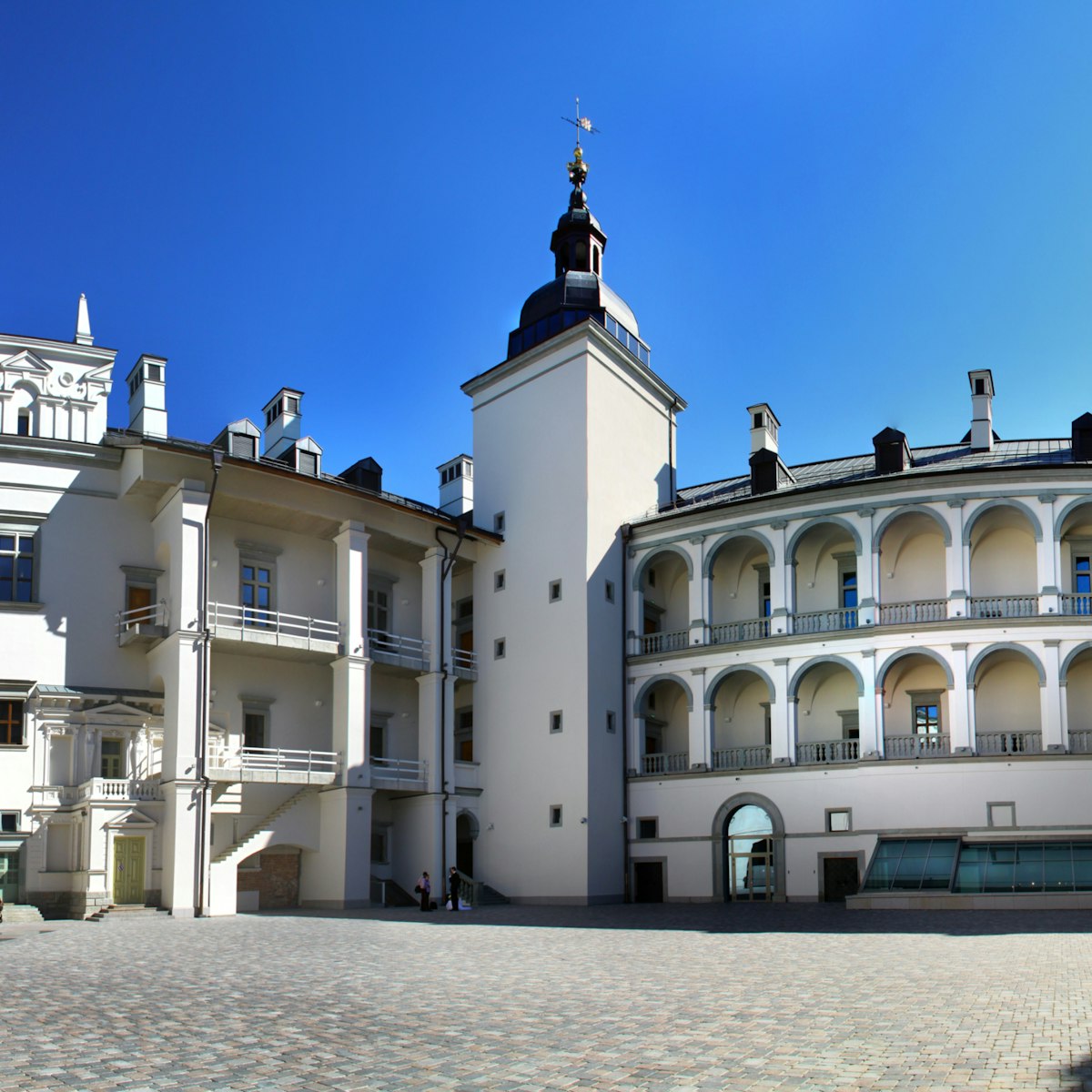
Palace of the Grand Dukes of Lithuania
If you only see one museum in Vilnius, make it this one. On a site that has been settled since the 4th century AD stands the latest in a procession of…
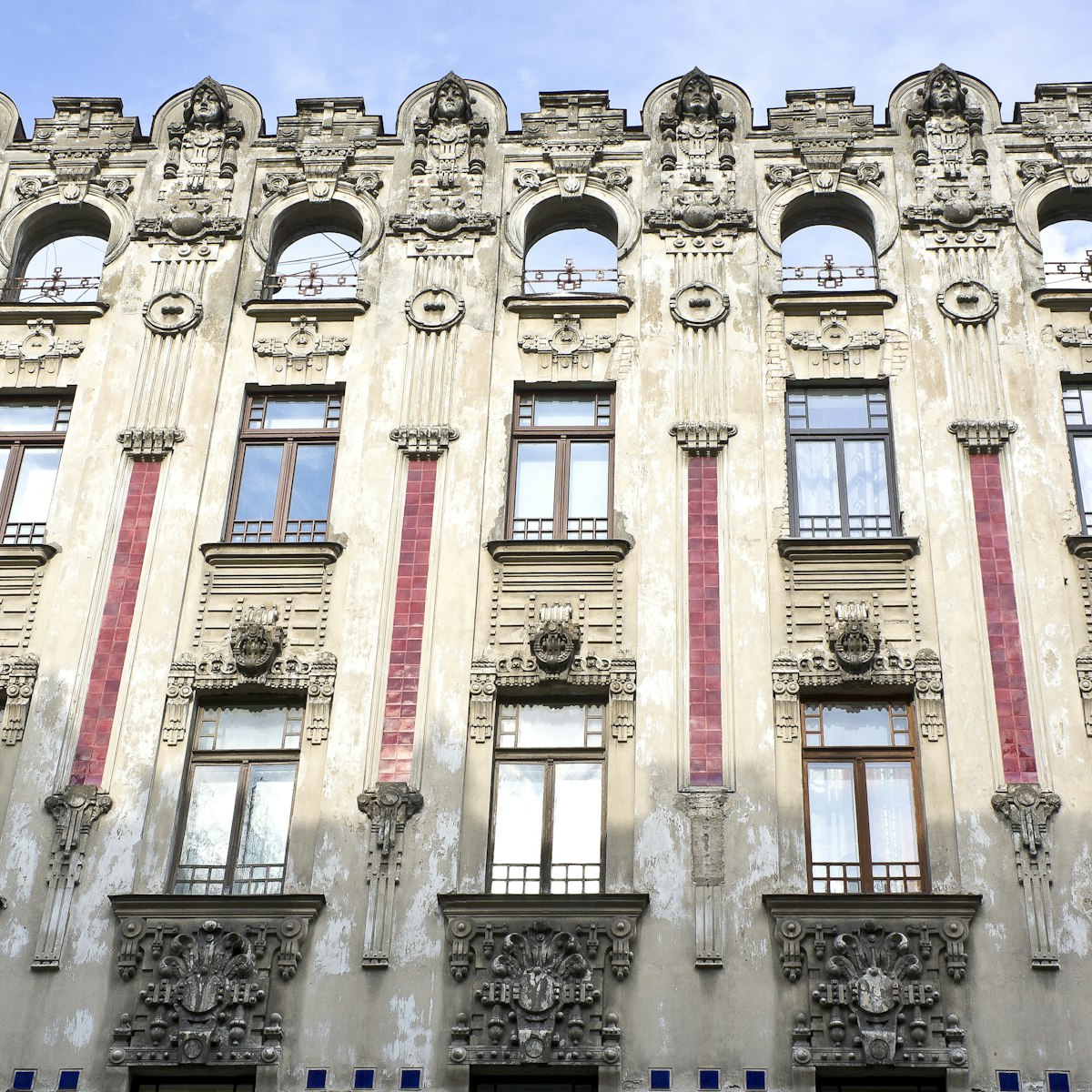
Alberta Iela
Central Rīga
Like a huge painting that you can spend hours staring at, as your eye detects more and more intriguing details, this must-see Rīga sight is in fact a…
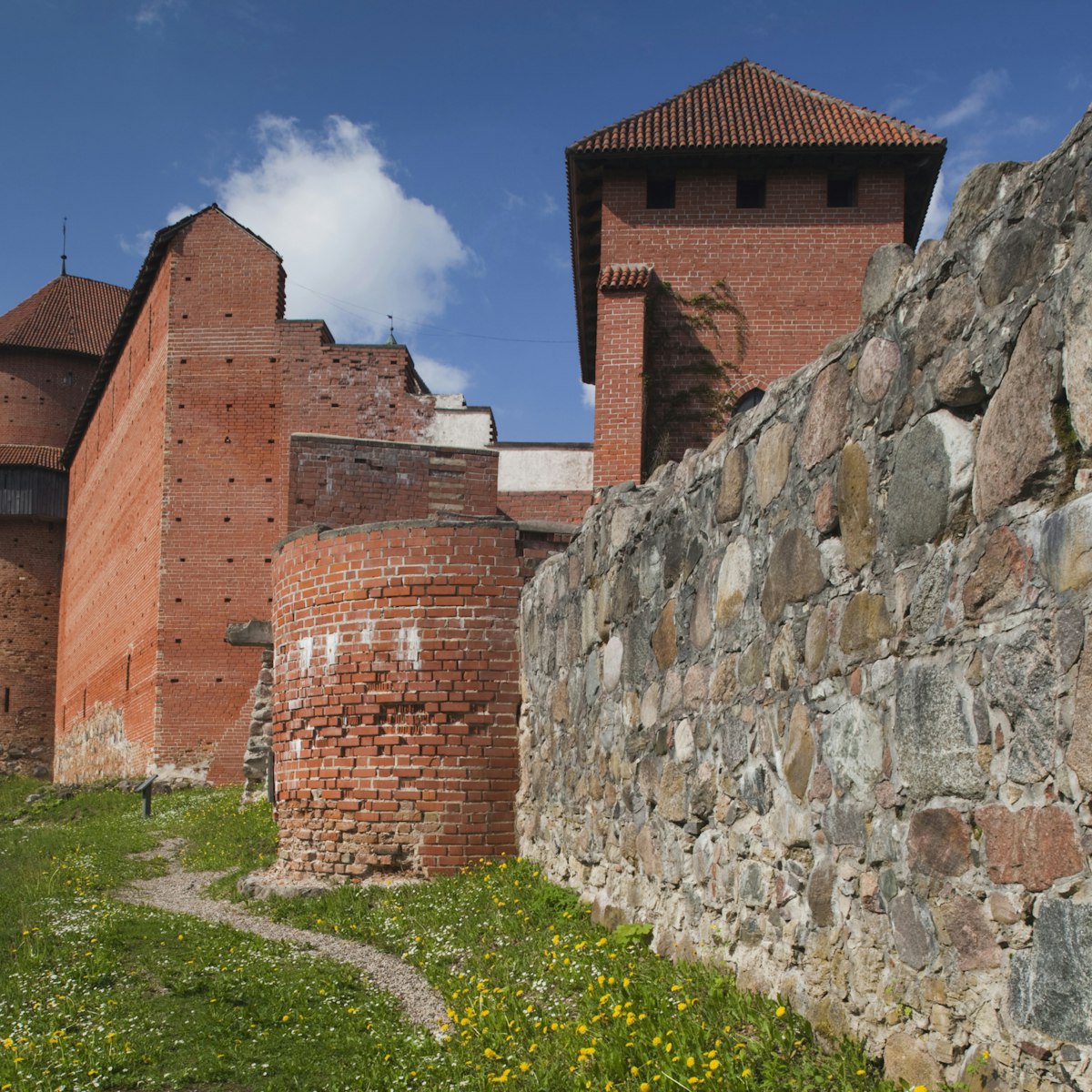
Turaida Museum Reserve
Turaida means ‘God’s Garden’ in ancient Livonian, and this green knoll capped with a fairy-tale castle is certainly a heavenly place. The red-brick castle…
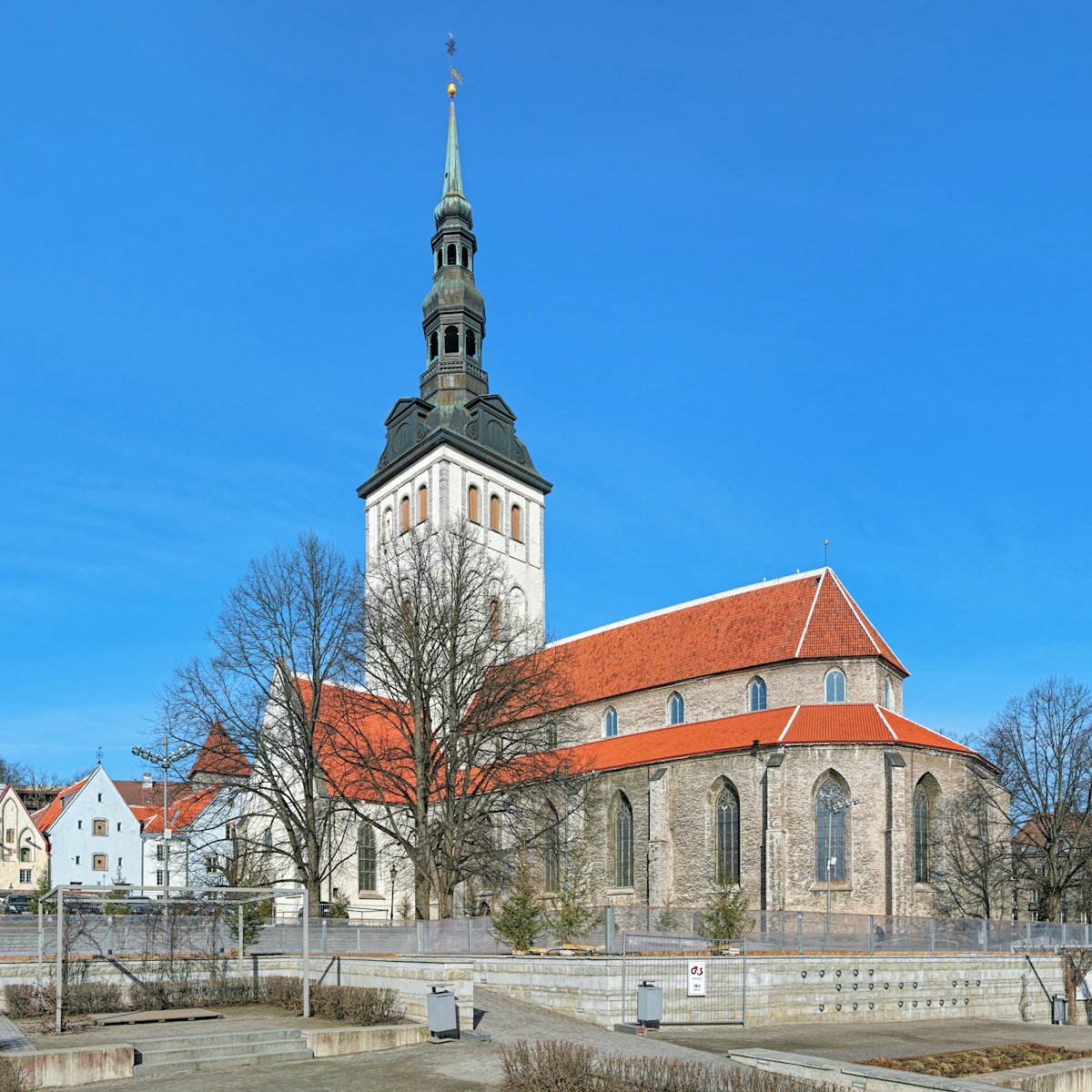
Niguliste Museum
Dating from the 13th century, the imposing St Nicholas' Church (Niguliste kirik) was badly damaged by Soviet bombers in 1944 and a fire in the 1980s, but…
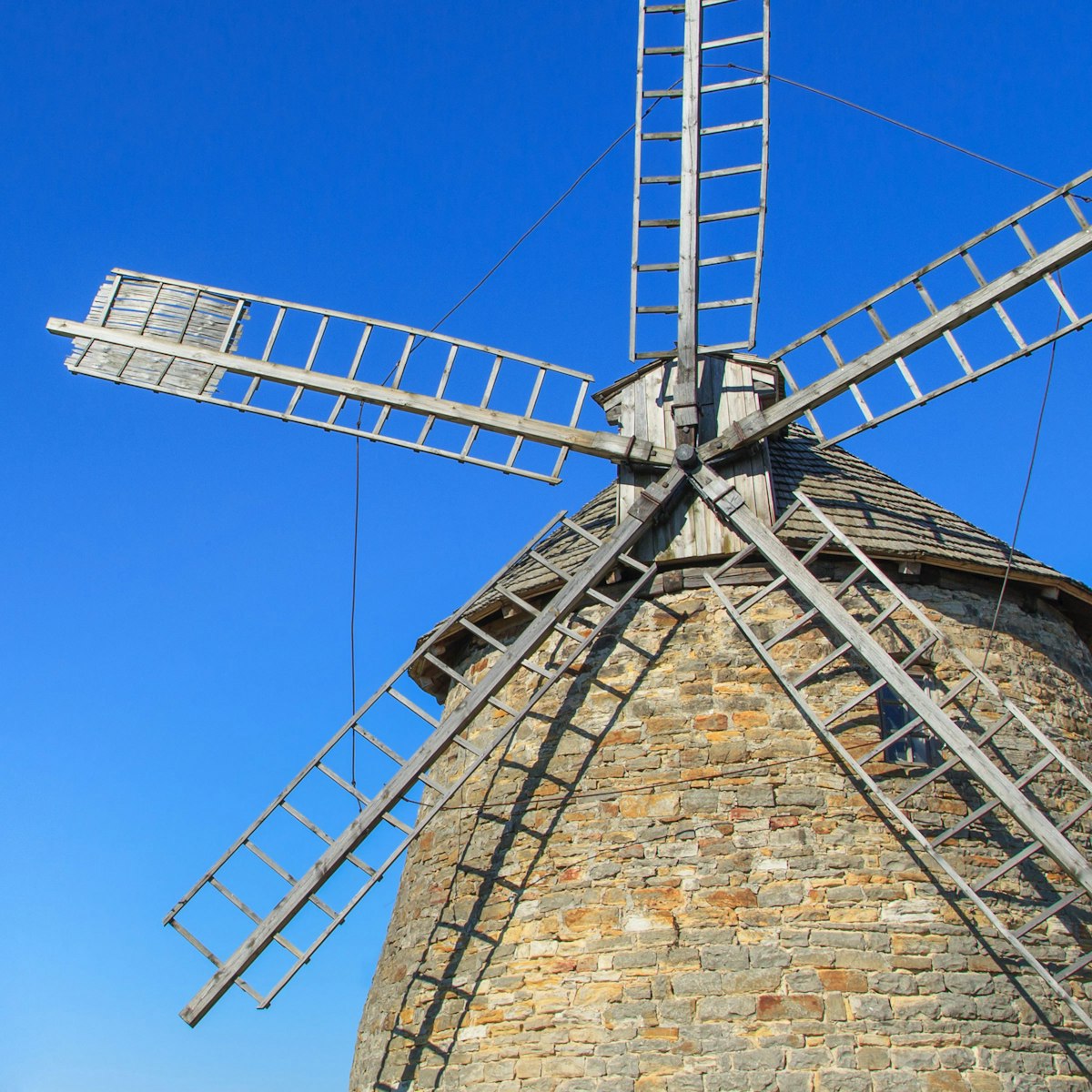
Estonian Open-Air Museum
This sprawling ethnographic and architectural complex comprises 80 historic Estonian buildings, plucked from across the country and resurrected in…
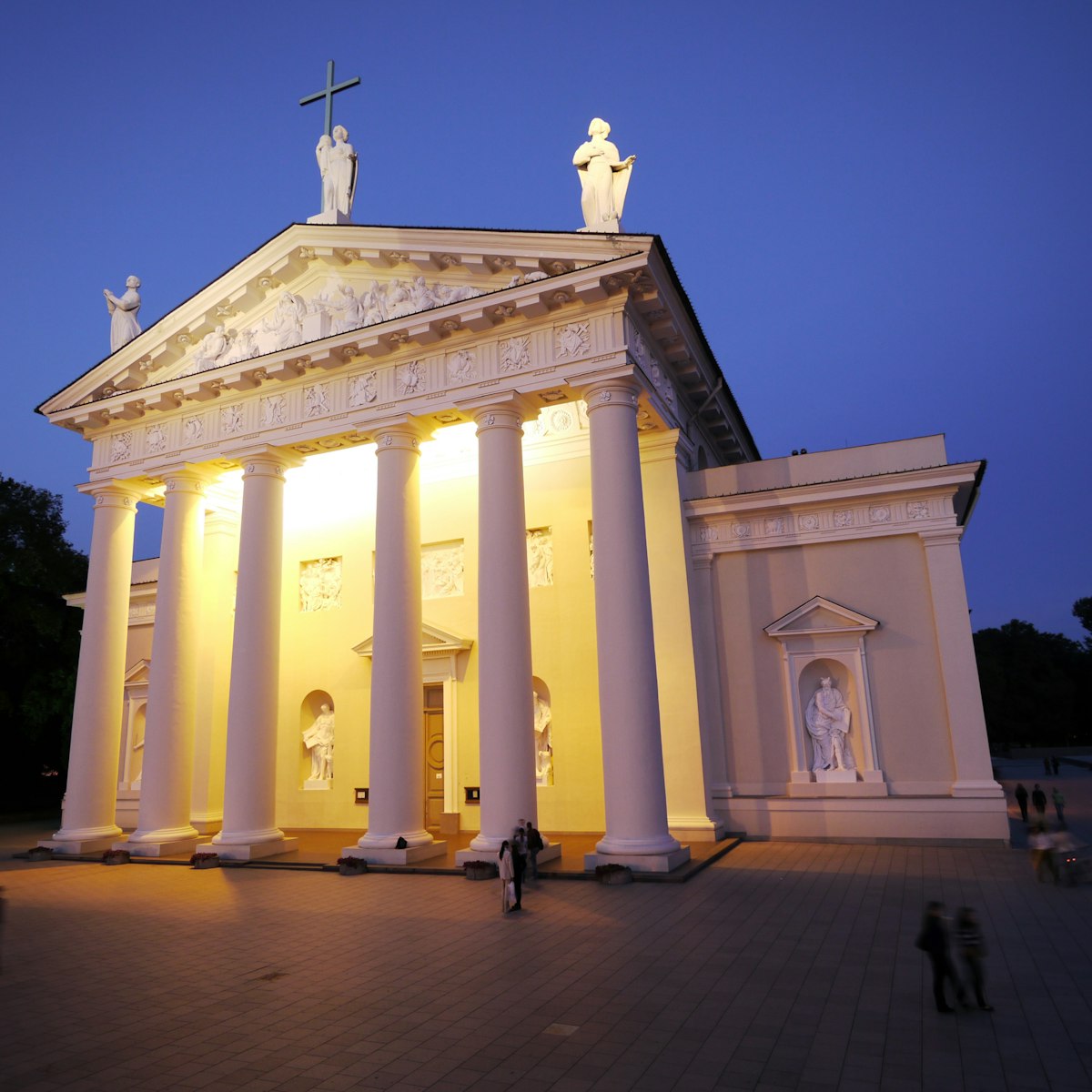
Vilnius Cathedral
Stately Vilnius Cathedral, divorced from its freestanding belfry, is a national symbol and the city's most instantly recognisable building. Known in full…
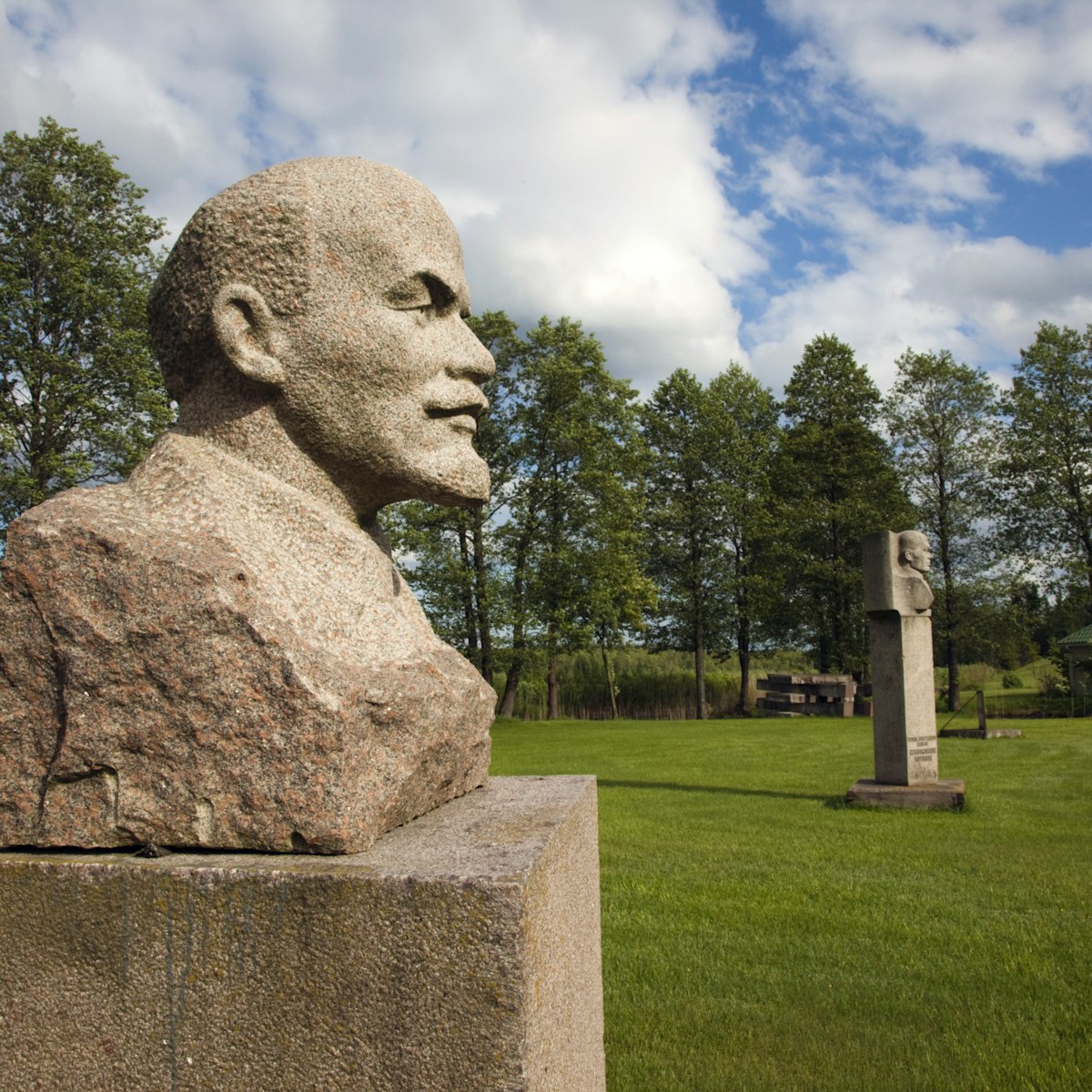
Grūtas Park
With Soviet-era statues of Lenin, Stalin and prominent Lithuanian members of the Communist Party that once dominated Lithuanian towns lining the forest…
Plan with a local
Experience the real Baltic States
Let a local expert craft your dream trip.
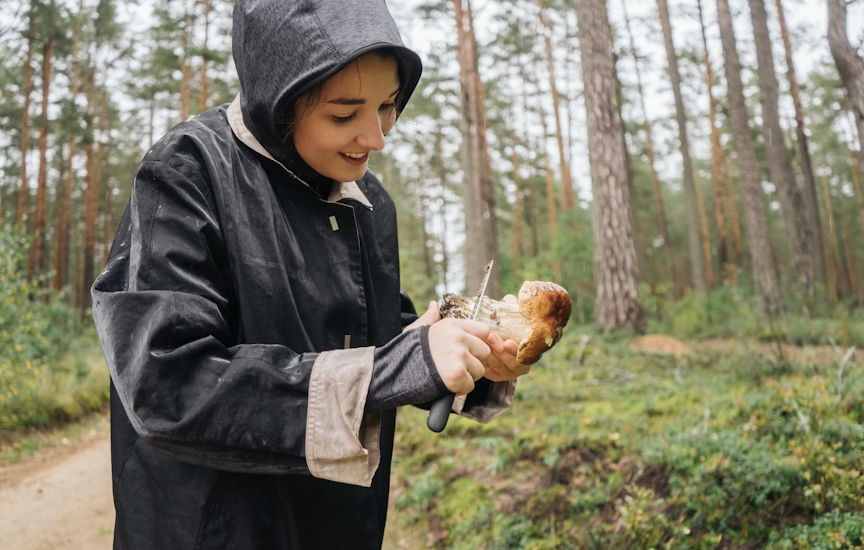
Latest stories from The Baltic States
Filter by interest:
- All Interests
- Adventure Travel
- Art & Culture
- Beaches, Coasts & Islands
- Food & Drink
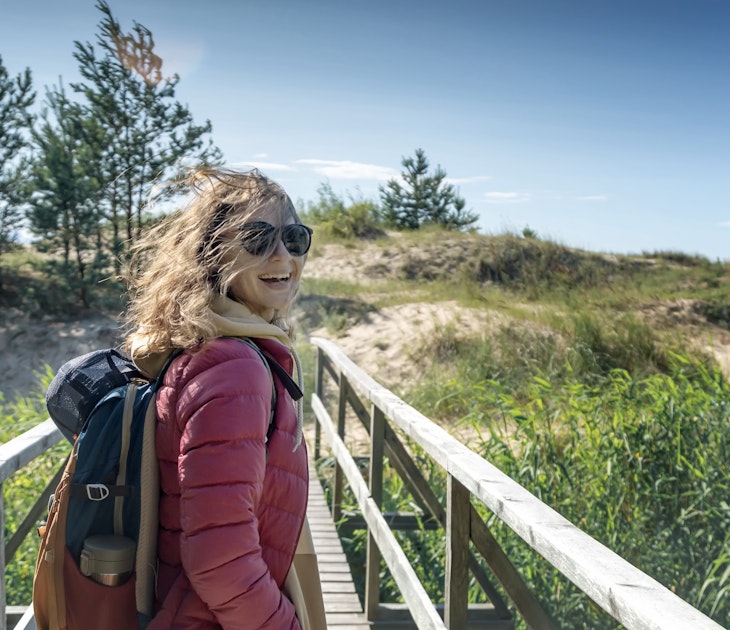
Sep 21, 2023 • 6 min read
The Baltic Trails take ambitious hikers through the wooded national parks, beaches and historic towns of Estonia, Latvia and Lithuania.
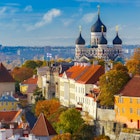
Oct 9, 2019 • 4 min read
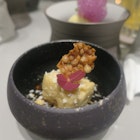
May 20, 2019 • 9 min read
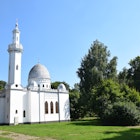
May 13, 2019 • 6 min read
Purchase our award-winning guidebooks
Get to the heart of The Baltic States with one of our in-depth, award-winning guidebooks, covering maps, itineraries, and expert guidance.
The Baltic States and beyond


Baltics Travel Itinerary: 2 Weeks in Estonia, Latvia & Lithuania (+ Map)
By Author Jurga
Posted on Last updated: January 19, 2023

Are you thinking of traveling to the Baltics, want to see all three countries – Lithuania, Latvia, and Estonia – but are not sure how to plan your itinerary? Do you want to know how much time to spend in each country and what not to miss? This guide will help you plan an unforgettable trip to the Baltic region – find out!
In this article, we share a two-week Baltics trip itinerary that allows you to see the highlights of Estonia, Latvia, and Lithuania. You will get to explore a good mixture of vibrant cities and rural areas, go hiking, relax by the beach and discover the food scene of each country.
This Baltics trip includes the famous capital cities Tallinn, Riga, and Vilnius, where you discover a bustling lifestyle and admire charming historic city centers and beautiful architecture. In addition, it also takes you to the lesser-known areas of each country. You get to spend two nights on Saaremaa, Estonia’s biggest island, explore the castles of Sigulda, Latvia, and climb the impressive sand dunes in the Curonian Spit in Lithuania .
Even though two weeks are not enough time to see everything the Baltics have to offer, this itinerary will help you make the most of your time and be sure that you don’t miss any of the ‘musts’.
Good to know: The best way to visit the Baltics is by renting a car and doing a self-drive road trip . But this trip is also doable without a car – there are excellent bus/train connections (and buses are reliable and comfortable) and for some popular places nearby, you can also take day tours from the capital cities. This itinerary is structured as a self-drive Baltics road trip but it also includes all the tips and suggestions for those who are using public transport. Take a look!
Baltics Travel Itinerary – OVERVIEW:
Days 1-2: tallinn, estonia.
- Days 3-4: Kuressaare, Estonia
- Day 5: Tartu, Estonia
Day 6: Cēsis, Latvia
- Day 7: Sigulda, Latvia
- Days 8-9: Riga, Latvia
- Day 10: Hill of Crosses & Klaipeda, Lithuania
- Day 11: Day trip to Curonian Spit, Lithuania
- Day 12: Kaunas, Lithuania
- Day 13: Trakai & Vilnius, Lithuania
- Day 14: Vilnius, Lithuania
- Assitional suggestions for a longer trip
- Practical info & tips
Good to know: This Baltics travel itinerary starts in Tallinn, Estonia, and ends in Vilnius, Lithuania, but you can easily do it the other way around – from Vilnius to Tallinn. There’s really not much difference which way you travel, and both cities have very good flight connections to various European countries.
Here’s our suggested Baltics travel itinerary:
Start your Baltics trip in Tallinn. Estonia’s capital is famous for its medieval Old Town, and during the next two days, you’ll have the chance to wander through narrow cobblestone alleys, climb the city walls and sample Estonian food.
Here are some highlights of Tallinn you should check out:
Town Hall Square
While walking through the Old Town, you will eventually end up at Town Hall Square . Here, you can discover lots of traditional old houses and a great atmosphere.
At one end of Town Hall Square, you can see the City Hall . In summer, you have the chance to climb to the top of the tower and enjoy the view. This is also the perfect place if you want to try Estonian food. Head to the III Draakon, a tavern in the town hall building, where you can sample elk soup, elk pastries, or lingonberry juice.
Almost opposite the town hall, you can find the Raeapteek . The Town Council Pharmacy is the oldest continuously operating pharmacy in Europe. If you go inside, you can visit a small exhibition or try claret, a wine produced here since 1467.
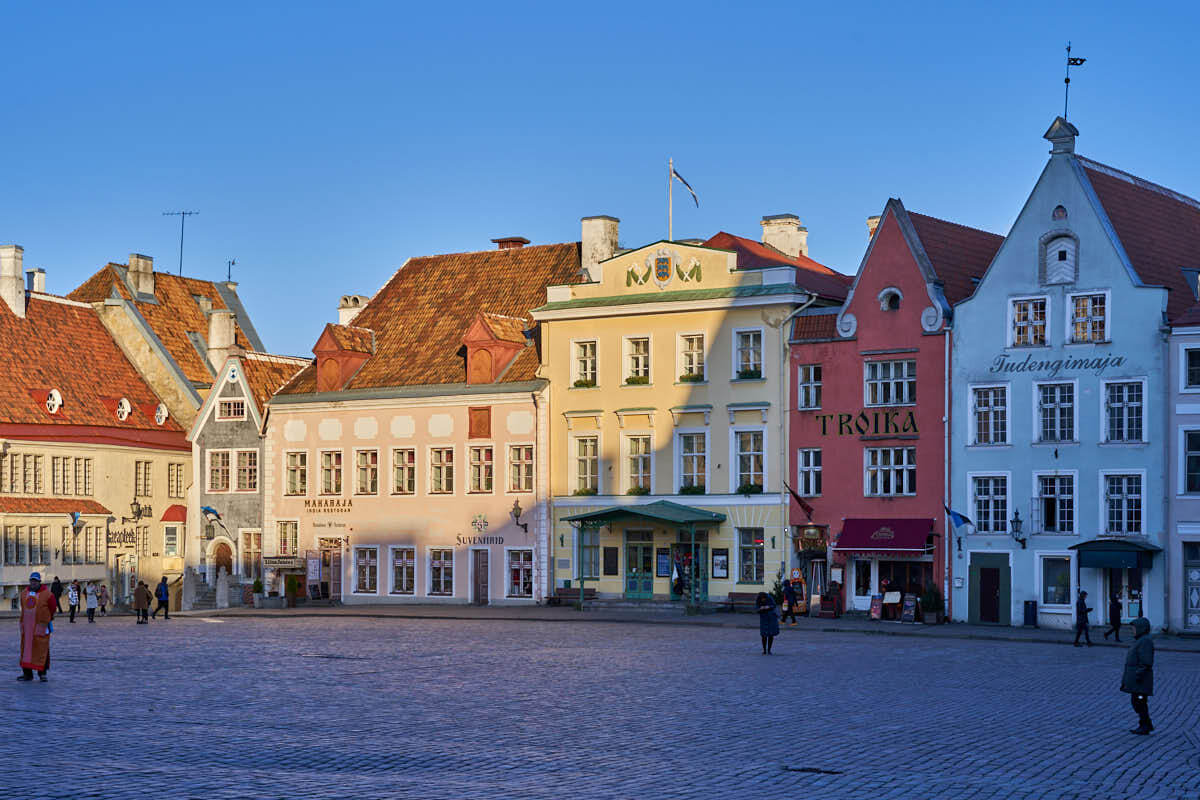
Toompea Hill
If you want to see Tallinn from above, you should head to Toompea Hill . Up here, you can find multiple viewing platforms that will offer fantastic views of the Old Town’s red roofs.
The Kohtuotsa lookout is the most famous platform, but it can get very busy. If you want to avoid the crowds, head to the Patkuli viewing platform instead, where you’ll run into fewer tourists. On clear days, you can even see the Baltic Sea from up here.
While up on Toompea Hill, make sure to check out the Alexander Nevsky Cathedral . The Russian Orthodox Cathedral is one of Tallinn’s most beautiful churches.

Tallinn’s City Walls
Some parts of the city wall that once surrounded all of Tallinn are still intact, and you have the opportunity to climb them in multiple places.
The first entrance is at Hellemann Tower . Here, you can walk on a piece of wall that is around 200 meters long. You have the chance to climb up into the watchtowers, too, to enjoy a very different viewpoint compared to Toompea Hill.
Up on Toompea Hill, you can find Kiek in de Kök Tower . Up here, you can also get on top of the city wall, and you can even enjoy a drink in the cafe on the wall. Your entrance ticket also gives you access to the tower. On each of the six floors, you can visit an exhibition about Tallinn, its city wall, and its history.

Additional recommendations
If you would like to learn more about the city, you can opt for this popular private walking tour with a local .
If you want to get the most of your stay and see more of Estonia, consider taking a half-day trip to Jägala Waterfall and Harju County . This area is east of Tallinn and you won’t be passing here when continuing your trip.
Where to Stay in Tallinn
For the best experience, stay in the old city center. There are many nice accommodations for all budgets here. We recommend Hestia Hotel Kentmanni.
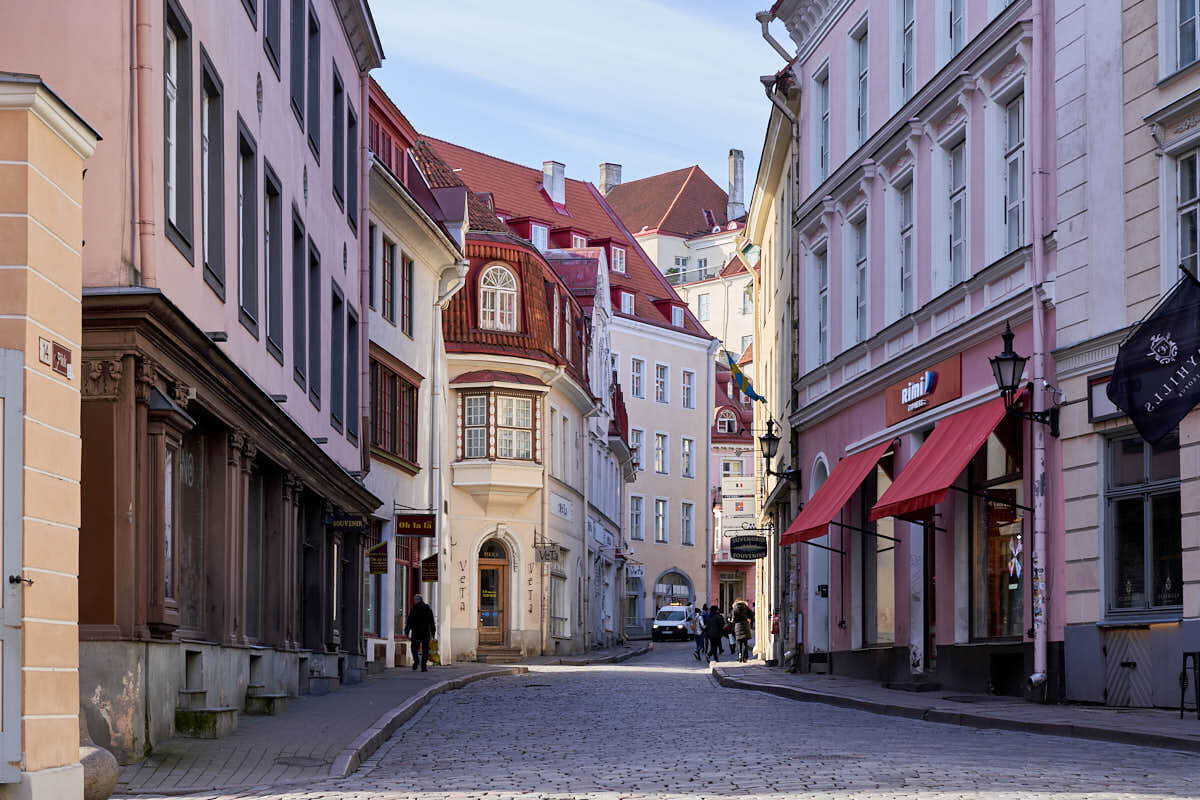
Days 3-4: Kuressaare
If you are planning a self-drive road trip through the Baltics, it’s best to rent a car from this day on . Here you can find some of the best deals for car rental in Tallinn .
After leaving the city, travel to Saaremaa, Estonia’s biggest island . The journey takes around 4 hours, including a half-hour ferry ride. If you are driving, make sure to arrive at the Virtsu ferry port at least 15 minutes before departure (if you take a bus, you don’t have to worry about that). Here you can find the ferry schedule and more practical info (you need a ferry from Virtsu to Kuivatsu).
Without a car: There are regular bus connections between Tallinn and Kuressaare, the biggest town on Saaremaa.
On Saaremaa Island, base yourself in Kuressaare , where you can find most of the island’s attractions. Make sure to stroll through the Old Town to discover the historic buildings and traditional architecture.
Afterwards, head to the Kuressaare Episcopal Castle . The castle dates back to the 14th century, and it takes at least an hour or two to explore the exhibitions inside. Be careful to follow the arrows, as it’s easy to get lost in the maze of corridors. During your visit, you have the chance of climbing the towers. From up there, you have a fantastic view of the star-shaped moat that surrounds the fortifications.
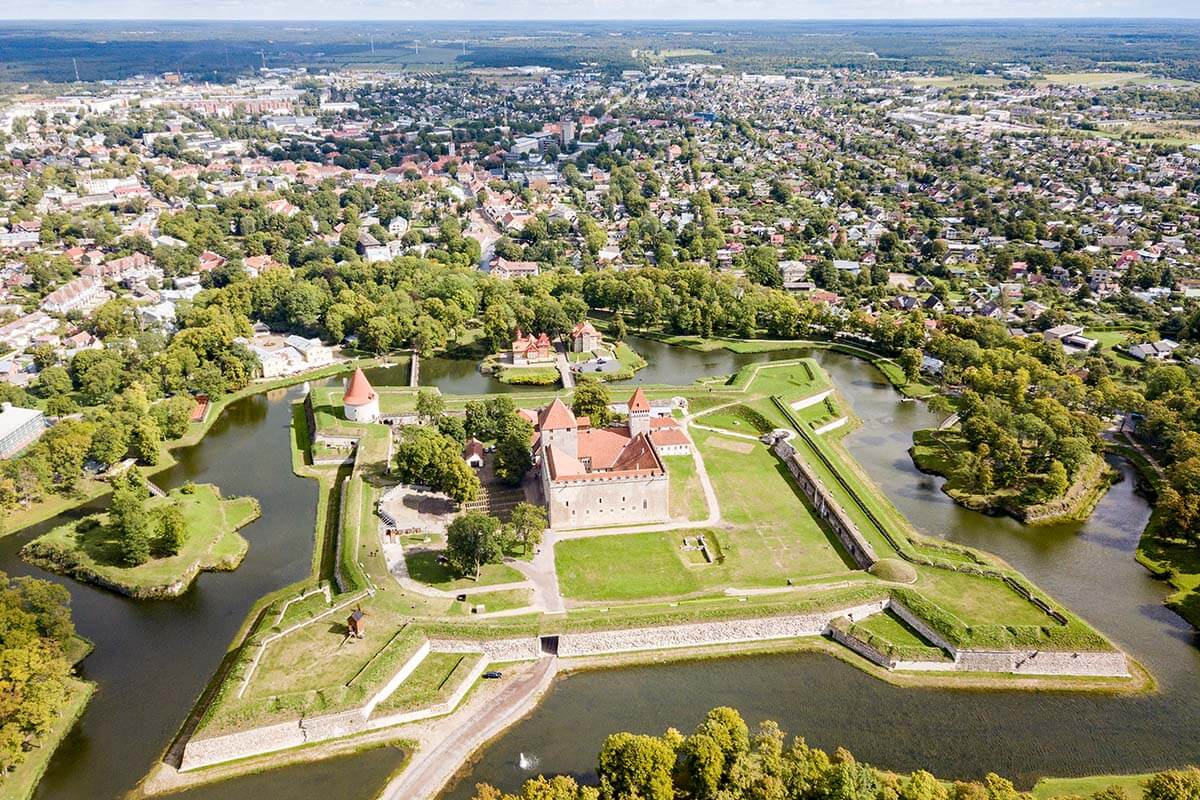
Another highlight of Saaremaa are the Kaali Meteor Craters , which you can visit in the village of Kaali. Scientists believe that the impact happened anywhere between 6,400 and 400 BCE, and it had the same explosive force as the Hiroshima bomb blast. All trees in a radius of six kilometers burned.
If you’d rather take it slow, head to the beach or find a spa to relax. Kuressaare is famous for its spas, and many Estonians come here to unwind for a few days. So why not join them and experience some traditional Estonian sauna culture!
Where to Stay in Kuressaare
There is a big choice of accommodations in Kuressaare, but since it’s a popular resort town, be sure to book well in advance, especially if traveling during summer or popular holidays. We recommend Johan Design & SPA Hotel , or – on a slightly higher budget Arensburg Boutique Hotel & Spa .
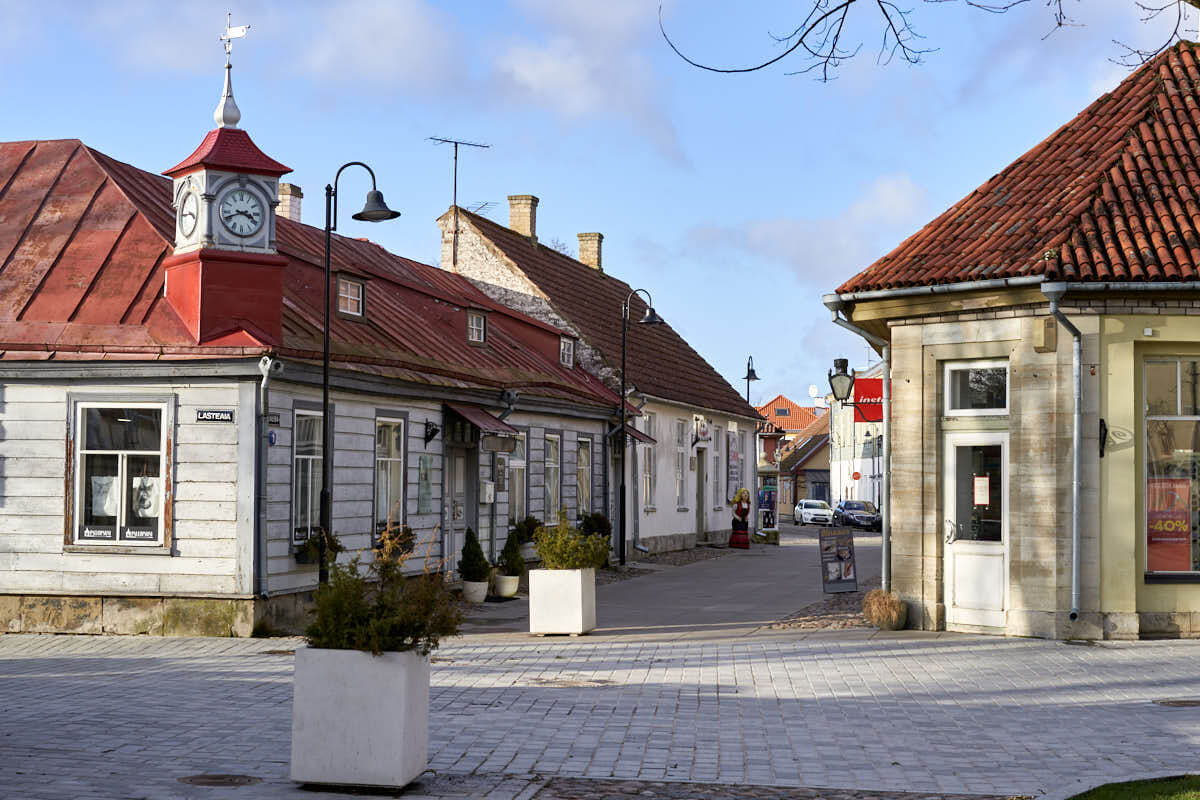
Day 5: Tartu
Today, you have a long drive ahead of you. It takes almost 6 hours to get to Tartu from Kuresaare by car and a little longer if you use public transport. Therefore, make sure to leave Kuressaare as early as possible, so you can enjoy the afternoon in Tartu.
Tartu is a cute town in Southern Estonia that is famous for its university. While here, check out the University Museums. On top of Toome Hill, you can find the University of Tartu Museum as well as the Old Observatory . Both are worth visiting, but if you only have time for one, head to the Observatory.
In the 19th century, Friedrich Georg Wilhelm von Struve measured the length of a meridian and eventually became the first person to accurately determine the shape and size of Earth. He conducted much of his work from this observatory, which is why it is now part of a UNESCO World Heritage Site. In the observatory, you can learn more about Struve’s work and see astronomical instruments from that time period.
While in Tartu, make sure to go for a walk through the Old Town. Town Hall Square is famous for its Kissing Students fountain, and you can discover many historic buildings around the square. Take some time to walk through the cobblestone streets and admire the architecture of Tartu. Be sure to check out the restored ruins of the Tartu Cathedral (Toomkirik). You can also climb the tower for some nice views over the city.
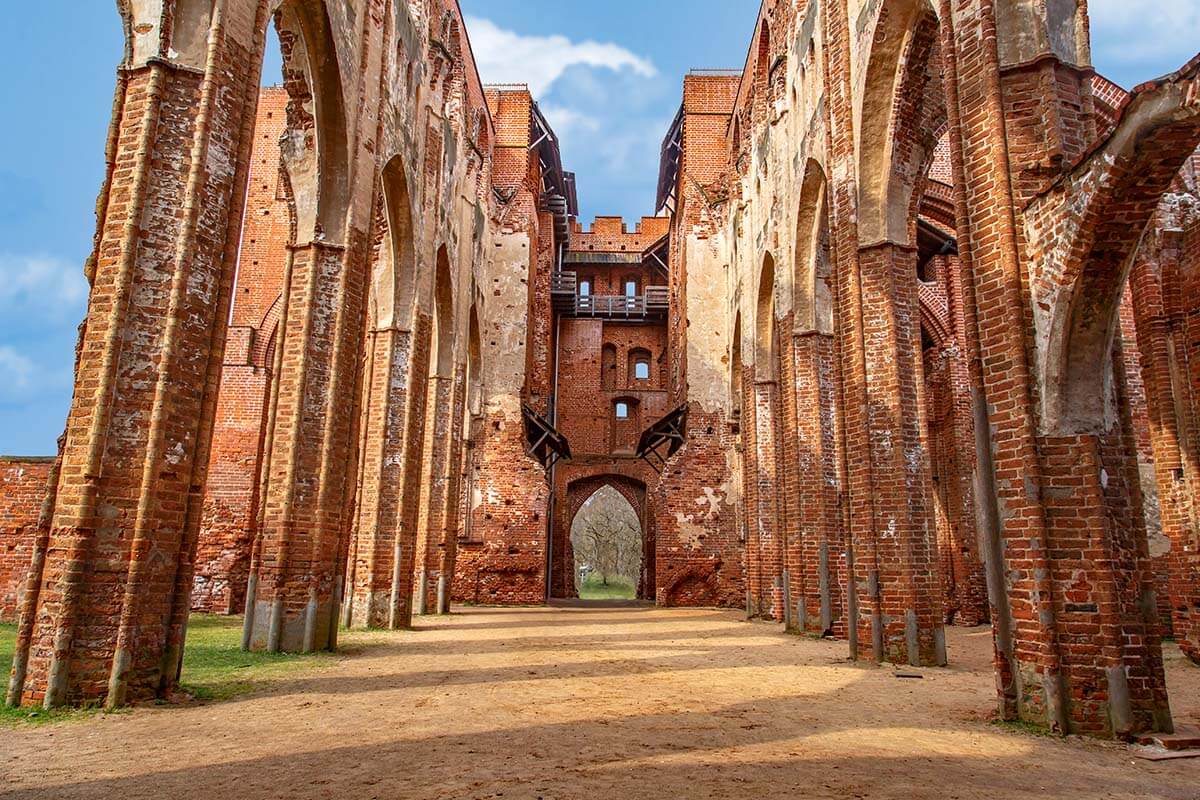
TIP: If you have a car and some time to spare, you could also visit Alatskivi Castle about 30-40 minutes drive north of Tartu. But if you only have half a day in the city, this will likely be too much.
Where to Stay in Tartu
Tartu is a popular tourist destination and you’ll have no trouble finding good accommodation at reasonable prices. We recommend Lydia Hotel , however, their parking is quite expensive since it’s in the heart of the city. A nice alternative (still very good location) if visiting by car is Art Hotel Pallas by Tartuhotels .
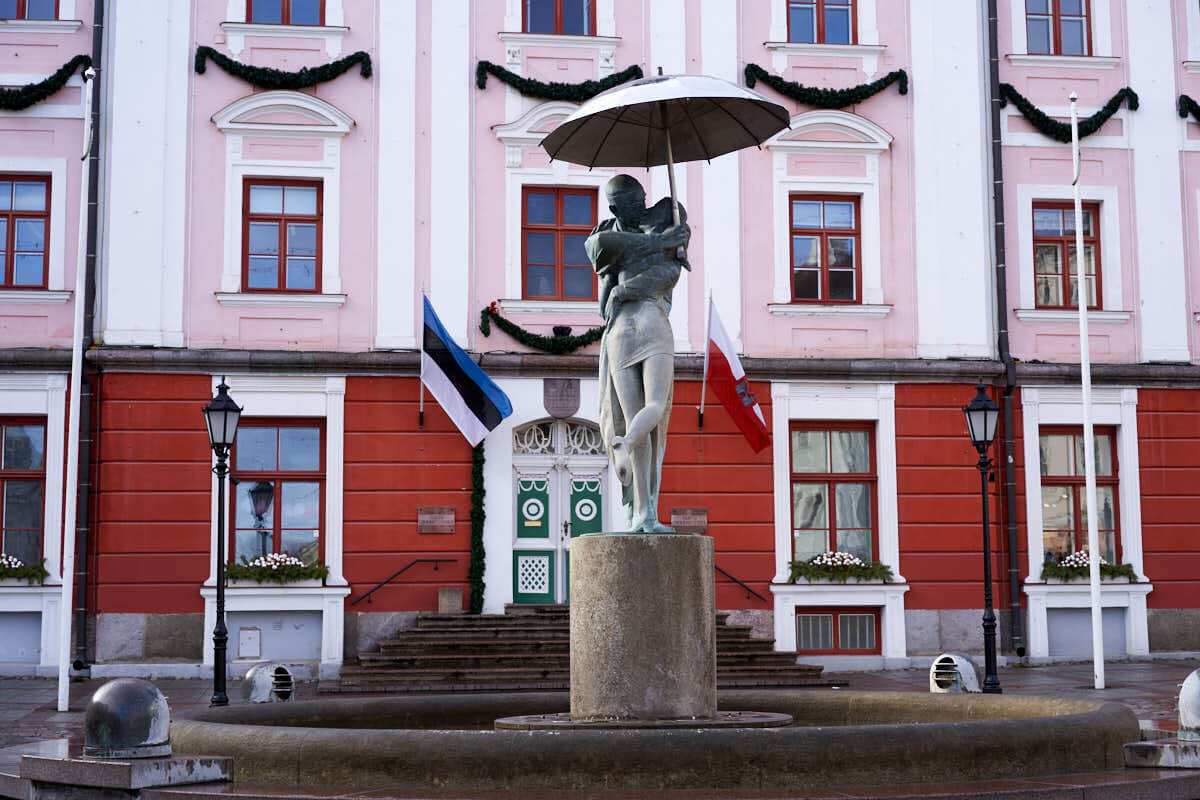
In the morning, drive from Tartu to Cesis in Latvia. The drive is about 2.5 hours and if you leave early enough, you have plenty of time to explore Cesis on this day.
Without a car: If you are traveling without a car, it’s easier to take a bus from Tartu to Riga, stay in Riga for 3 or 4 nights in total, and make day trips from there to Cesis and to Sigulda. There are also tours that visit these places from Riga in one day .
Cesis is a cute medieval town known for its two castles. You can get a combination ticket that includes entrance to both the Medieval Castle and the museum in the New Castle . As there are no electric lights in the old castle, you will need to carry a lantern. Exploring the ruins with a candle in your hand is an incredible experience you’ll remember for a long time.
After visiting both castles, take some time to stroll through Castle Park . At the edge of the park, you can see the remains of the oldest brewery in Northern Europe . Cesus Ale, the owner, has since moved the beer production to a more modern building on the outskirts of Cesis, but you can still see the old brewery.
Where to Stay
You could stay in Cesis for a night, but we suggest driving to Sigulda – the next town on this itinerary, about 30 minutes drive further. There is a bigger accommodation choice in Sigulda and much nicer hotels and you could stay here for two nights. We recommend Hotel Sigulda – it’s a nice hotel with great facilities, easy parking, and they have a very good restaurant.
Good to know: If you are really in a hurry, you could see just the main highlights of Cesis and Sigulda on the same day.
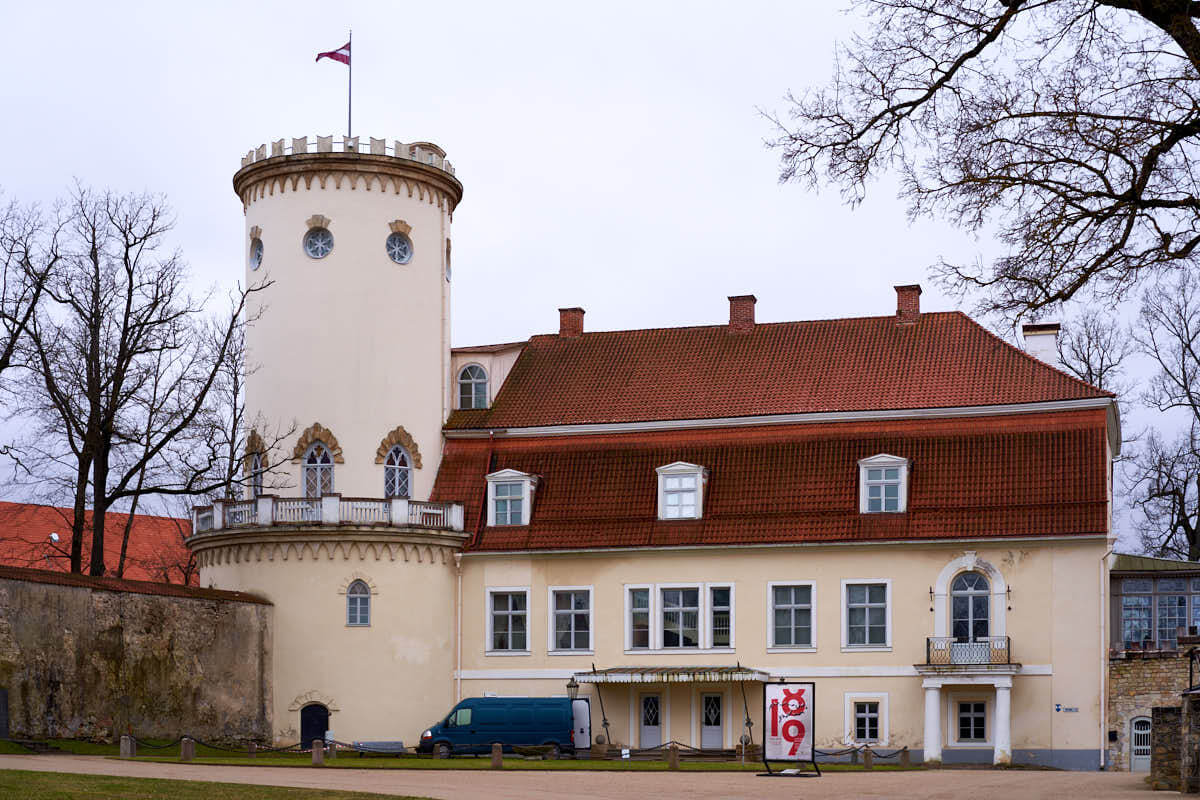
Day 7: Sigulda
Today, spend a day in one of Latvia’s most beautiful destinations – Sigulda in the Gauja National Park . Sigulda has multiple sights and attractions to keep you busy all day. You can find several castles in the area, which are all different and exciting to visit.
If you visit just one castle in Sigulda, make it Turaida Castle , a red-brick castle a few kilometers away from town. It houses a museum, and it’s part of the Turaida Museum Reserve, where you can also visit traditional houses from the area. This is the most-visited museum in Latvia!
Sigulda Medieval Castle (Castle Of The Livonian Order in Sigulda) is also nice to see. You can climb to the top of the Northern Tower from where you have a fantastic view of the valley. Just next to it, you can see the recently renovated Sigulda New Castle (Siguldas Jaunā pils) which used to serve as a city council and is now a museum.
Another place worth checking out is Krimulda Medieval Castle , which is the ruins of the 13th castle. Here, you’ll also find the beautiful viewpoint ‘Bellevue’, with great views of the bends of the Gauja River. Please note that this castle ruin is not to be confused with Krimulda Manor , which is a sort of rehabilitation center/ hotel.
TIP: One of the best ways to see the main castles is to go for a hike, from Sigulda Medieval Castle to Krimulda Castle (take the cable car to cross the valley) and then onwards to Turaida Castle. Don’t miss Gutmanis Cave , which you can find between Krimulda and Turaida. Locals have left graffiti here for centuries, and the oldest inscriptions date back to the 17th century.

If you want to take it easy, stay in the same hotel in Sigulda as the previous night. As already said, Hotel Sigulda is one of the best options here. Alternatively, you could continue to Riga already, which is about a 1-hour drive.
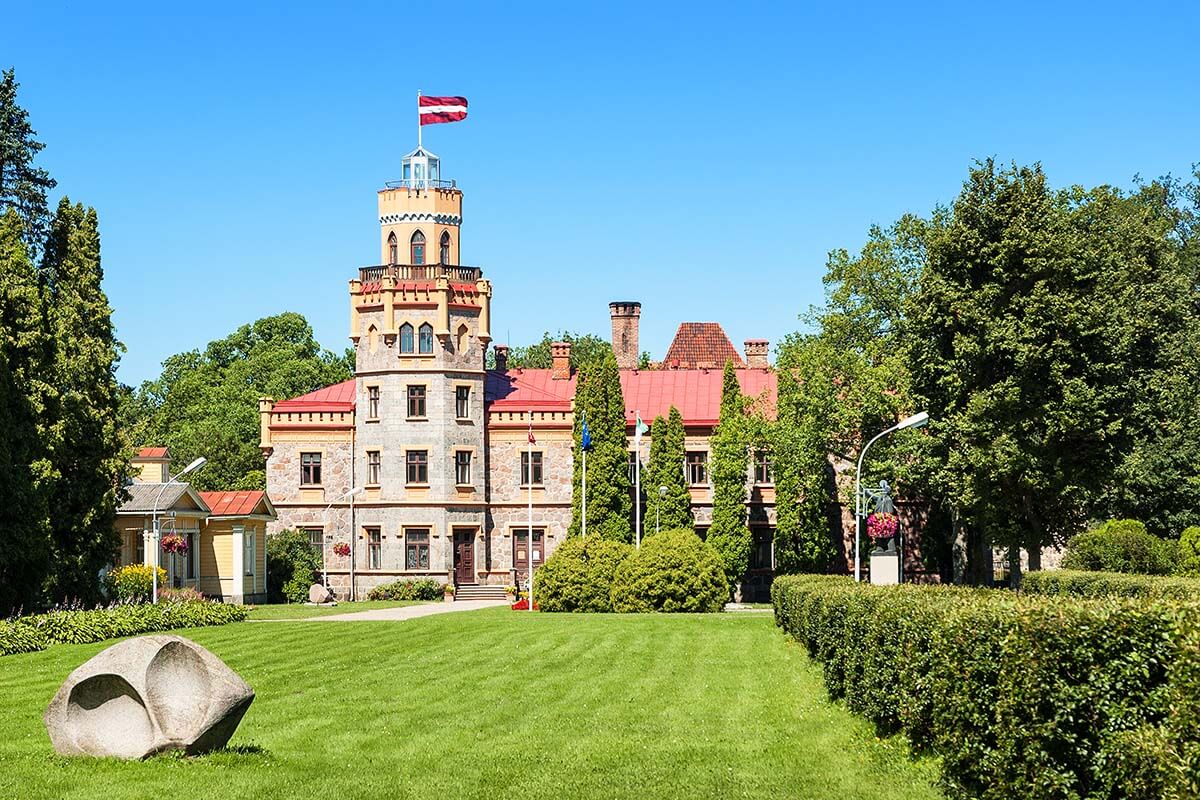
Days 8-9: Riga
In the morning, drive to Riga (about a 1-hour drive). With its location in the center of the country, Riga is also the perfect base for day trips to places like Cesis and Sigulda mentioned above. As already mentioned, if you are traveling without a car, it’s best to come here from Tartu (so on day 6 of this itinerary). In that case, stay in the city for 3-4 nights and make day trips either by public transport or by taking tours.
For the next two days, you have the chance of exploring Riga . Be sure not to miss the following highlights:
Riga Old Town
It’s easy to get lost in Riga’s cobblestone streets and to spend hours wandering through the Old Town . Along your way, you should pass the Three Brothers , a famous landmark in the city. All three houses belonged to men from the same family but date back to different time periods, so this is a fantastic place to see how architecture in Riga evolved over the centuries.
If you want to see the Old Town from above, stop by St Peter’s Church . The tower rises high above the houses, so from its top, you have a fantastic view of Riga.
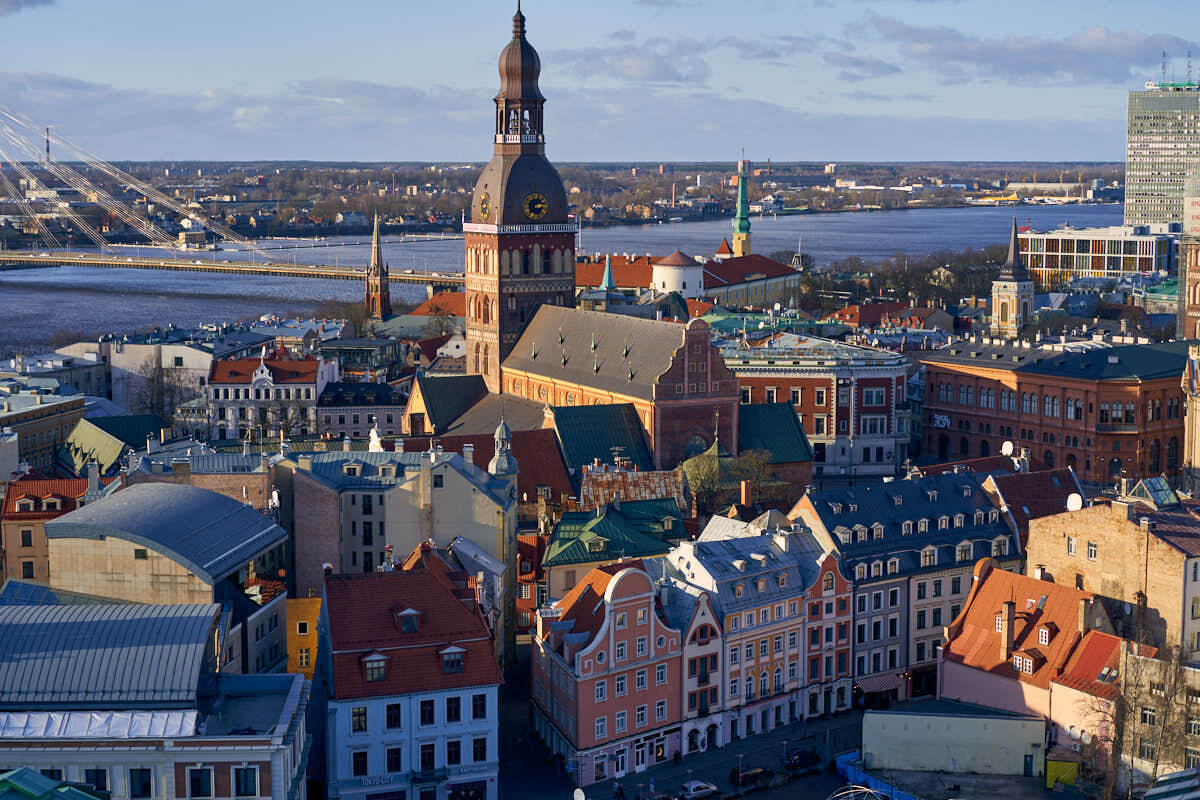
House of the Blackheads
If you only visit one museum in Riga, it should be the House of the Blackheads . You’ll notice the extensively decorated building while walking through the Old Town, and if you go inside, you can learn more about the Brotherhood of the Blackheads.
This guild was an organization of merchants and craftsmen, and in Latvia, they came together in the House of the Blackheads for meetings and social gatherings. They even erected the first Christmas Tree in Europe, though it is unclear if it was in Riga or Tallinn.
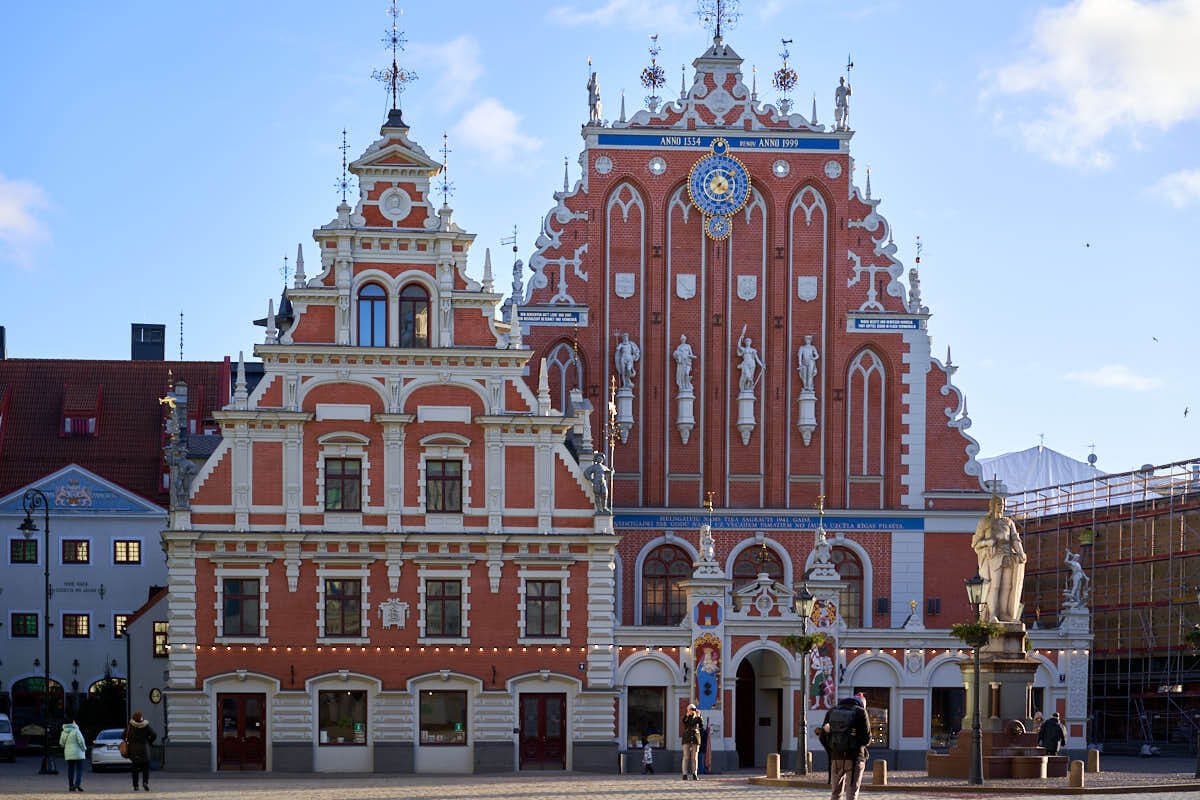
Ethnographic Open-Air Museum of Latvia
If you want to see a different side of Latvia, head to the Ethnographic Open-Air Museum of Latvia , which you can find on the outskirts of Riga. Buses 1, 28, or 19 can take you here if you don’t have a car, and you’ll have the chance of seeing more than 100 traditional buildings from all over the country.
The museum grouped these houses by region, and you’ll be surprised to learn how different building styles and rural life were, depending on the area. Don’t miss the giant windmill in the middle of the park, and make sure to go inside the houses. Some are open, and in summer, you might see weavers and blacksmiths perform their craft.
Practical information: The museum is open the whole year round, but opening days and times vary per season. Check their website for more information. You could easily spend an entire day here. As a minimum, count half a day.
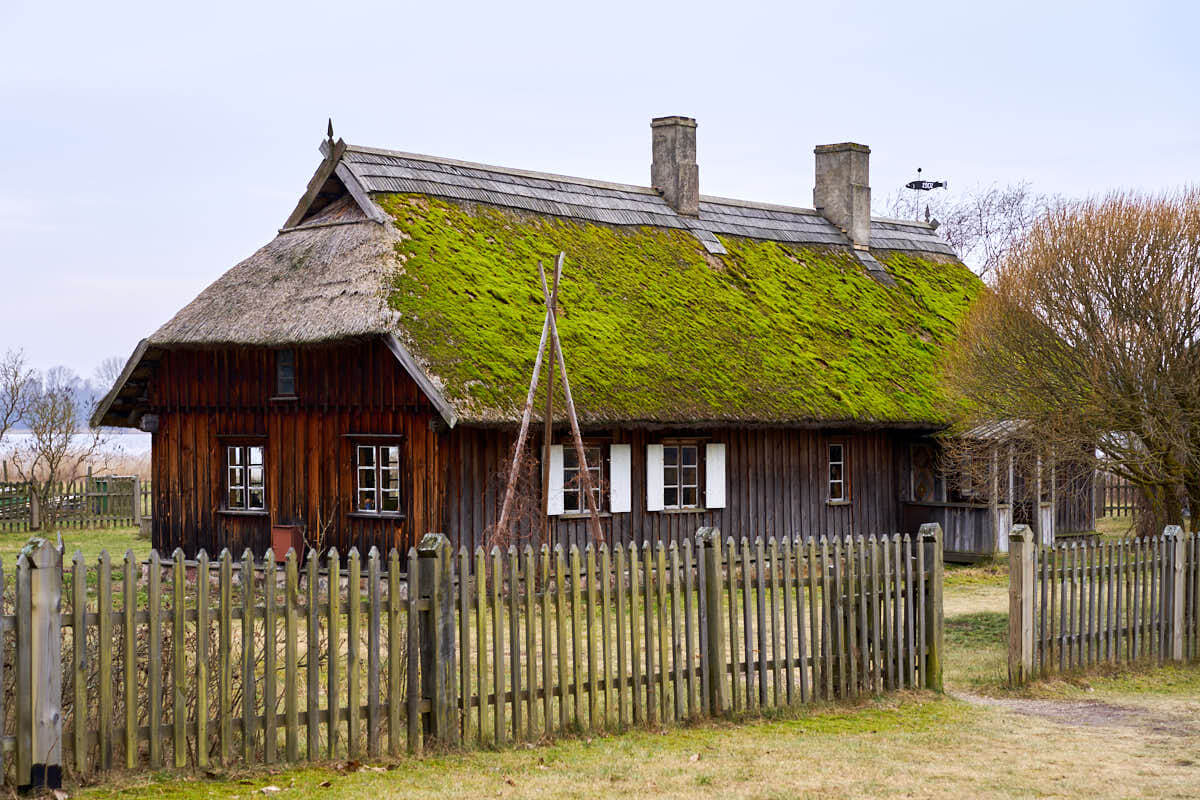
Where to Stay in Riga
Riga is a big city and there is no shortage of accommodations for all budgets . For the best experience, we recommend staying close to the city center. If you are traveling by car, be sure to check that the hotel has parking available! We recommend Wellton Riverside SPA Hotel .
Day 10: Hill of Crosses & Klaipėda, Lithuania
After leaving Riga, cross the border to Lithuania and head to Klaipeda. The drive is about 4 hours, and you can stop at the famous Hill of Crosses near Šiauliai on your way. It’s conveniently located for this itinerary, about 2 hours drive from Riga and about the same from Klaipeda, and a visit here doesn’t require more than half an hour. Still, be sure to leave Riga early so that you can explore Klaipeda in the afternoon.
Without a car: If you are traveling by bus, there are direct bus connections from Riga to Klaipeda, and the trip takes around 4-5 hours. It will be difficult to visit the Hill of Crosses on this day, but you may still be able to come here on your way from Klaipėda to Vilnius two days later. See day 12 of this itinerary for more details.
The Hill of Crosses is one of the most unique places in Lithuania, and you can see hundreds of thousands of crosses on this hill. The sight is almost unreal, and as you walk around, you will notice hundreds of small crosses wedged into the ground between the larger ones. Here you can find our complete guide to visiting the Hill of Crosses .
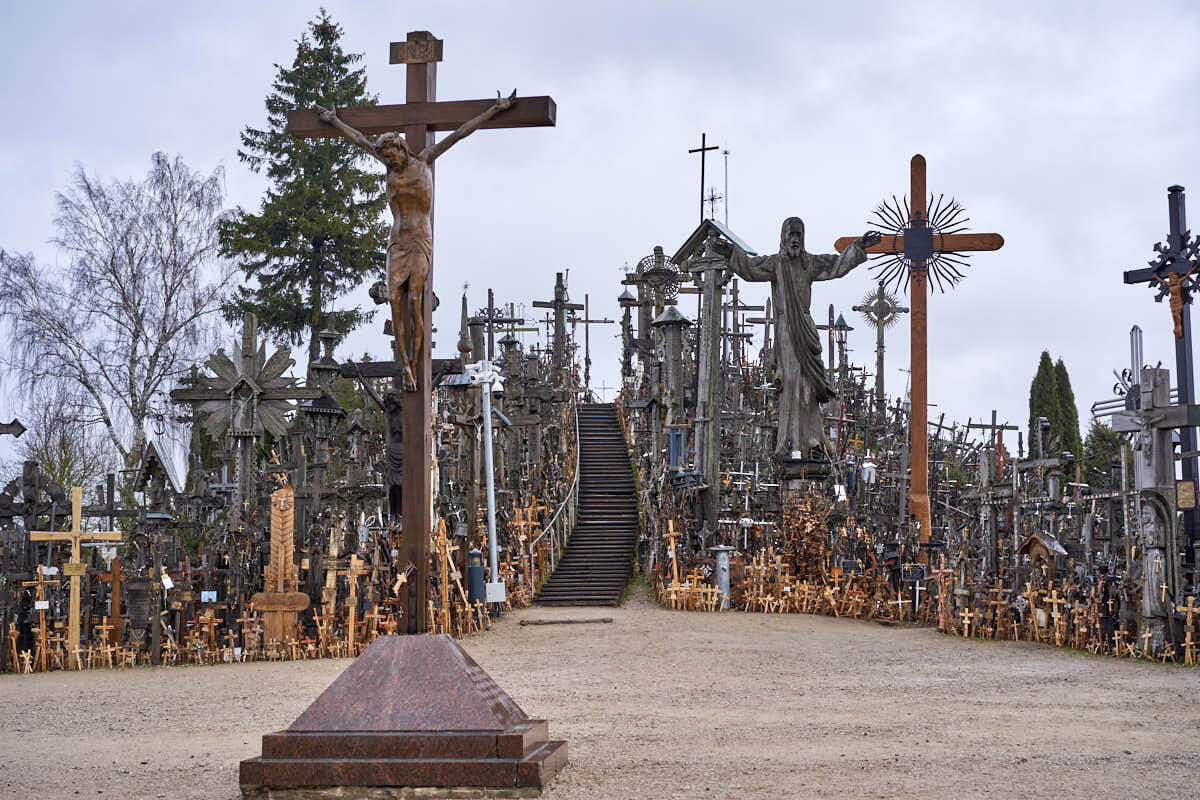
After spending time at the Hill of Crosses, continue to Klaipeda . You should arrive in the early afternoon, so still plenty of time to explore the city. While Klaipeda is Lithuania’s third-largest city, its historic center isn’t that big and you can see all the musts in half a day.
When you stroll through the Old Town of Klaipeda , you will notice that the architecture is different from anything else you’ve seen in the Baltics before, and some of it even looks German. That’s because the area once belonged to Germany, and you can still see the influence in architecture today.
Make sure to visit the History Museum of Lithuania Minor if you want to learn more about the history of the region. Don’t miss Theatre Square and be sure to check out the little hidden gem Fredericho Passage , where you can also find a restaurant serving local dishes.
Afterwards, head down to the riverside and to the harbor. The waterfront is one of the most pleasant areas to go for a walk in Klaipeda, especially in summer. During the warmer months, you can also rent kayaks or pedal boats to explore the city from a different angle.
Where to Stay in Klaipeda
Klaipeda is a harbor town and so it’s nice if you can stay close to the water. We recommend either Old Mill Hotel or Michaelson Boutique Hotel – both near each other and both excellent choices, in beautiful historic buildings. There is big public parking just nearby (the fees aren’t high) and the Old Town is within walking distance. Stay here for two nights.

Day 11: Day trip to the Curonian Spit
Today, take a day trip to one of the most beautiful places in the Baltics, the Curonian Spit . This 98km-long narrow piece of land perched between the Curonian Lagoon and the Baltic Sea is a National Park and a UNESCO World Heritage Site.
Curonian Spit is famous for its wandering sand dunes. The biggest dune that you can climb is Parnidis Dune, just next to Nida. From here, you can see the lagoon on one side and the Baltic Sea on the other side. It might not look like it, but Parnidis is a wandering dune that moves a few centimeters every year. Over the past centuries, these dunes have even swallowed a few villages!
During your day trip, visit the nicest dunes and villages of the region, and be sure to go for a walk around Nida, the main town of the Curonian Spit. Here, you can see many traditional fishermen’s houses, several museums, and a beautiful waterfront promenade. For more information, please see our complete guide to the best things to do in Nida .
But there’s much more to see in the beautiful Curonian Spit National Park than just its biggest town! So if you are self-driving, check out our complete guide to the Curonian Spit in Lithuania . It also has all the details on how to get there by car.
Without a car: Curonian Spit is best explored by car since there are many beautiful places scattered all over the region. If you don’t have a car, you can best opt for an organized tour – see this private day tour from Klaipeda. Alternatively, take a passenger ferry from the pier north of the city center (Senoji Perkėla), and once you reach the other side, you can take a bus to Nida. Nida is a nice day trip in itself, but you won’t be able to see the rest of the area if you take a bus.

Day 12: Kaunas
Today, leave Klaipeda and head to Lithuania’s second-largest city, Kaunas. If you are driving, it’s a long but easy drive on a highway and takes about 2.5-3 hours, leaving you plenty of time to explore Kaunas.
Without a car: If you are traveling through the Baltics by public transport, it’s easier to skip Kaunas and take a train from Klaipeda directly to Vilnius (with a stop in Šiauliai for a visit to the Hill of Crosses). In that case, take a train to Šiauliai and book a private tour to the Hill of Crosses (they can pick you up at the train station and the hours are flexible). Afterwards, continue your trip to Vilnius by train. If you decide to go to Kaunas from Klaipeda and skip the Hill of Crosses, then take a bus to Kaunas – it’s much faster than by train.
There is enough to see and do in Kaunas to fill a few days, so you could easily add a night here if you have more time. But you can get a taste of the city and see some of the main highlights in half a day as well.
The best way to explore Kaunas on a short visit is by taking a walk through its main pedestrian streets that run through the entire city center – from Kaunas Castle and Cathedral in the Old Town via Vilniaus Street and all the way to St. Michael the Archangel’s Church at the far eastern end of Laisvės alėja (Freedom Avenue). If you have the time to visit one museum, check out the M.K. Čiurlionis Museum of Art . If you are looking for something more unique that you won’t find anywhere else, then don’t miss the Devils’ Museum .
Where to Stay in Kaunas
We recommend staying in the city center, close to the above-mentioned pedestrian streets. That way, you can leave your car at the hotel and explore Kaunas on foot. Check out BEST WESTERN Santakos Hotel – it’s right in the middle between the Old Town and the popular pedestrian avenue Laisvės alėja and has free private parking. Here you can find more hotels and accommodations in Kaunas .
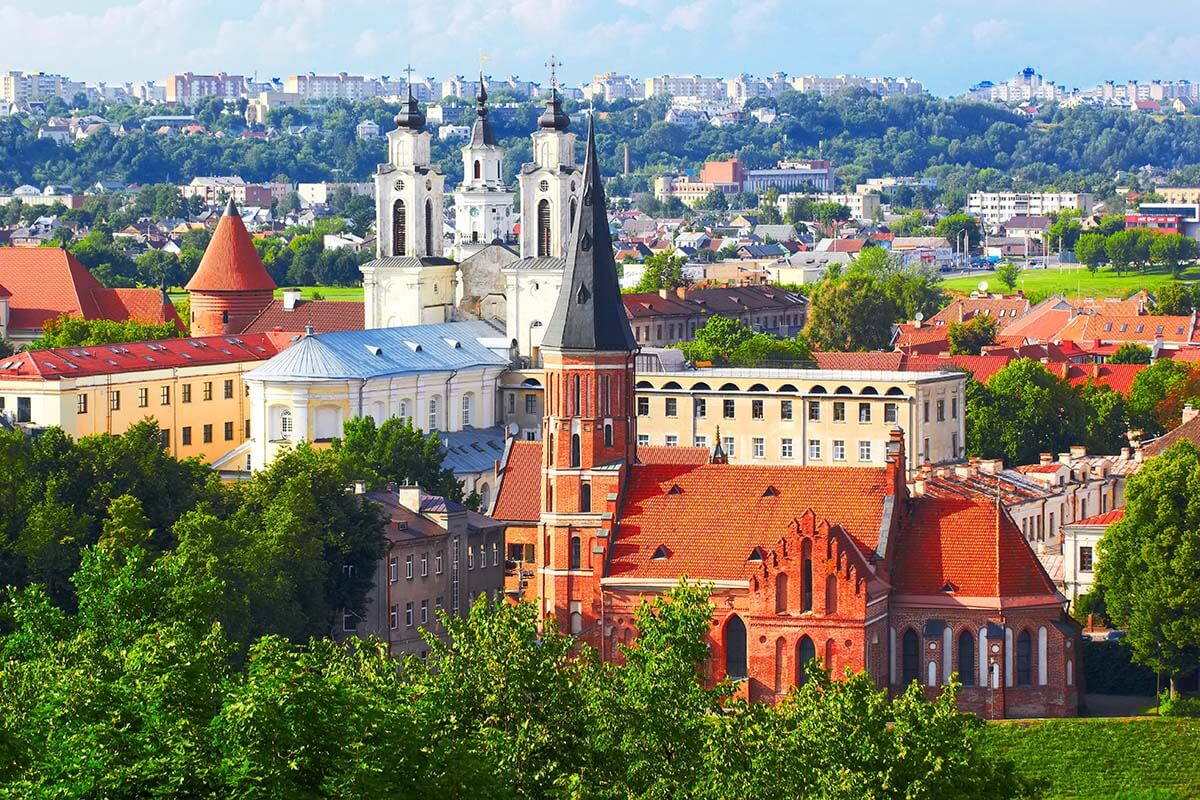
Day 13: Trakai & Vilnius
With two weeks in the Baltics, you’ll have to make some tough choices and skip some places, so if you want to take it easy, today, we recommend that you drive to Trakai from Kaunas, and then head to Vilnius in the late afternoon.
However, if you have an entire next day to explore Vilnius and so if you find a day in the city sufficient, then you may want to visit a few other nice places between Kaunas and Vilnius. In that case, you could also visit Pažaislis Monastery and Lithuanian Folk Museum in Rumšiškės .
Both these places are just a small detour from the Kaunas – Vilnius highway and both are well worth your time. But don’t try to squeeze too much in a day or you won’t have much time to actually enjoy it.
Without a car: Take a train from Kaunas to Vilnius and spend a day in Vilnius. You can take a half-day tour to Trakai the next day. In summer, you can also opt for a full-day tour from Vilnius that visits the castle and includes canoeing on the lakes around it.
Anyway, if you are going from Kaunas to Trakai, it’s an easy drive, mostly on the highway, and it takes a bit over 1 hour. From there, it’s just a short drive to Vilnius (but can take an hour if traffic is busy), so you can spend as much time in Trakai as you like. This town is famous for its island castle, one of the must-see places in Lithuania.
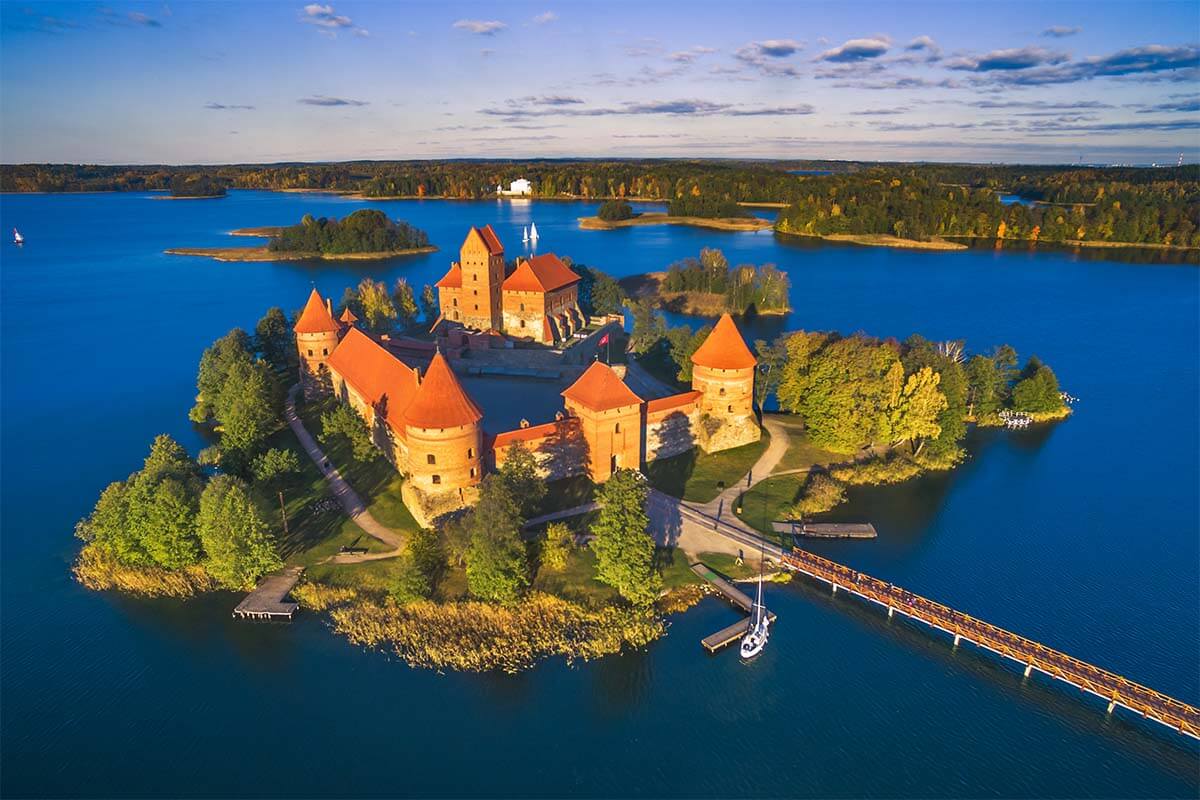
Trakai Castle dates back to the 14th century, a time when Trakai was an important town in Lithuania, and – for a few years – even the capital city. The Grand Duke of Lithuania often received important visitors here. The Castle was recently restored and is the most impressive castle you can visit in Lithuania these days. Its location on an island, surrounded by lakes and forests, makes it even more special. And don’t worry, you won’t have to swim to the island – there is a nice pedestrian bridge connecting it to town.
Inside the Castle, you can visit an exhibition about the history of Trakai, and you also have the chance to learn about the Karaites, a Turkic Jewish minority that lives in the area. Lithuanians call them Karaimai .
And speaking of them, when in Trakai, be sure to try Kybyns (LT: kibinai ), traditional Lithuanian food of the Karaite ethnic minority. You can find them at most of the local restaurants in Trakai. This is the best place in Lithuania to try this traditional meat-and-onion pastry. You may also find it in Vilnius and a few other places in the region, but they are nowhere as good as in Trakai.
If the weather is nice, take a boat tour on the lake to see the castle from a different perspective. Afterwards, head to Vilnius, walk around the Old Town, and end your day with some typical Lithuanian food.
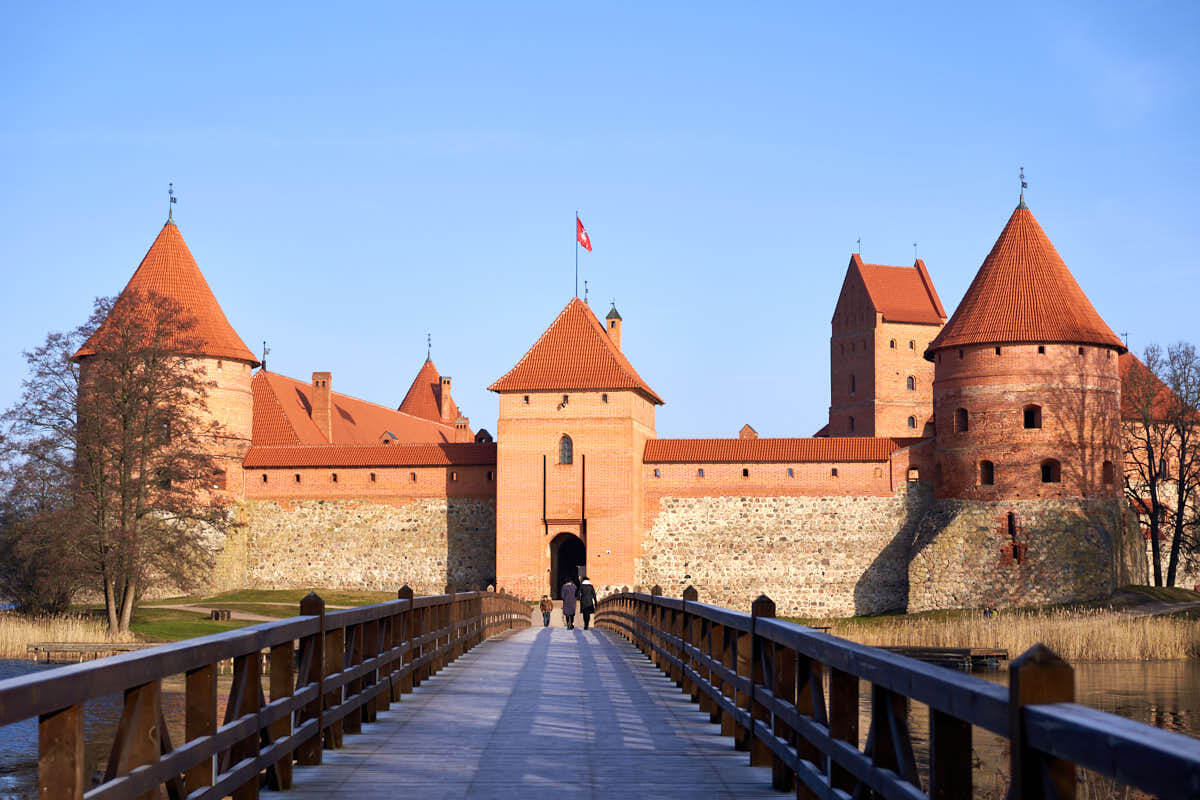
Day 14: Vilnius
Today, it’s time to explore Vilnius. Lithuania’s capital city has a lot to offer, but if you have just a day, be sure not to miss the following places:
Walk around the Old Town
Walking through the Old Town of Vilnius is the best way to get to know the city. It has such a great atmosphere and you’ll find something nice behind every corner.
Don’t miss the Town Hall Square ( Rotušės aikštė ), Vilnius University , Presidential Palace , and one of the must-see streets in Vilnius – Castle Street ( Pilies gatvė ). Also worth visiting is Literature Street ( Literatų gatvė ). This picturesque street is lined with plaques detailing names of authors who have either lived in Vilnius or written about the city.
Another must-see is the Gate of Dawn , a city gate that dates back to 1522 and was once part of the city wall. Inside, you’ll find a religious artifact, an icon of the Blessed Virgin Mary Mother of Mercy, which still attracts pilgrims today.
Stiklių Street , in the vicinity of the Restaurant Lokys, is also worth passing by. They usually have some nice decorations hanging above the street and it’s always worth seeing what kind of creations they come up with next. And the restaurant is very good too!
There are also lots of beautiful churches in the Old Town of Vilnius. They say there are 28 churches just in the Old Town… If you visit just one of them, don’t miss St. Anne’s Church – it’s a stunning example of Gothic architecture.

Cathedral Square, Gediminas Castle & Neris River
Cathedral Square is home to Vilnius Cathedral. With its many columns and a white Bell Tower , this building is one of the city’s most famous landmarks.
Just next to it, you’ll find one of the best museums in Vilnius – the Palace of the Grand Dukes of Lithuania . If you have at least an hour to spare, definitely check it out. The Virtual Reality 3D experience is so well done and gives you a good introduction to the history of Vilnius.
Behind the Cathedral, you’ll see a hill with a tower on top. Head up there to discover Gediminas Castle Tower and to enjoy the fantastic view of Vilnius. You can walk up the hill or take a funicular which can be found on the other side of the hill, on the riverside. And once you are here, be sure to take a walk along the river.
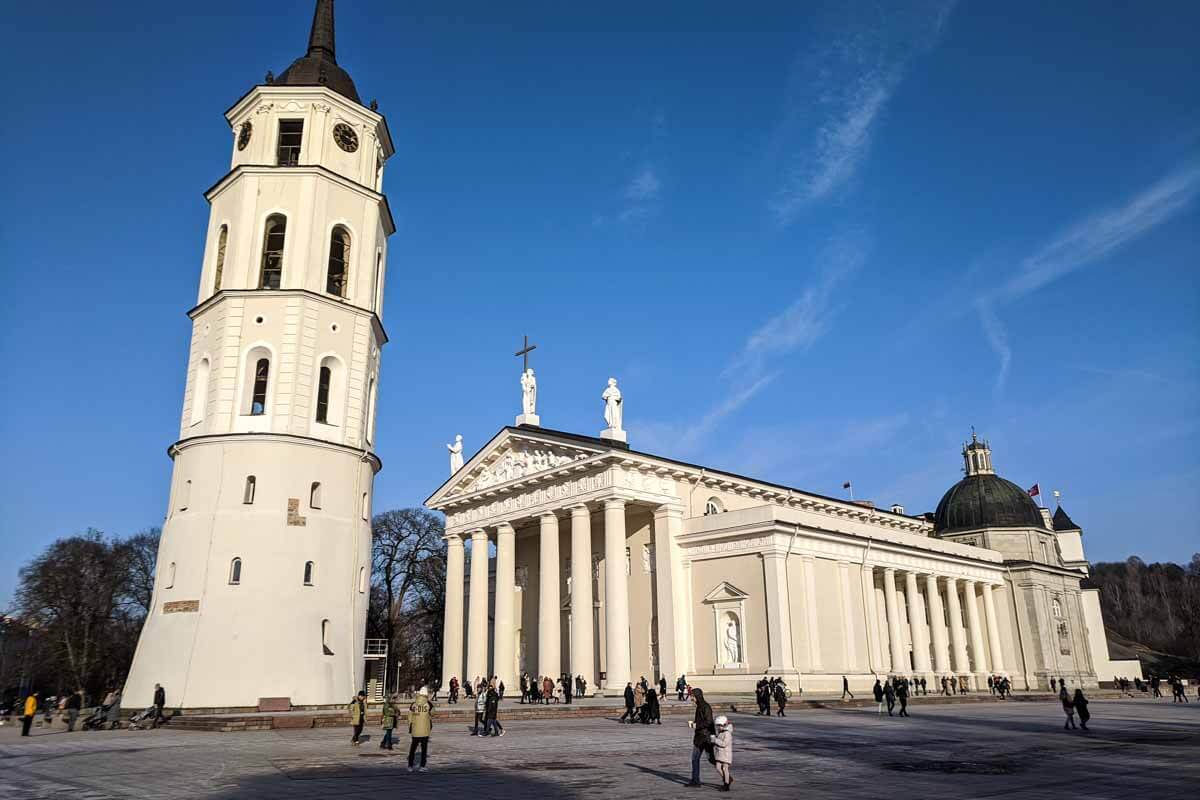
Gediminas Avenue & Museum of Occupations and Freedom Fights
Gediminas Avenue (Gedimino Prospektas) is one the main streets of Vilnius. This is the place where you’ll find many shops, restaurants, theaters, etc.
Be sure to walk at least a part of this street, up to Lukiškės Square, the largest square in Vilnius. Here, you’ll also find the former KGB building, now the Museum of Occupations and Freedom Fights .
It’s a very interesting and eye-opening place where you can learn more about the way the Soviets treated innocent people. It will surely help you to better understand the not-so-distant history of Lithuania and the other Baltic States.
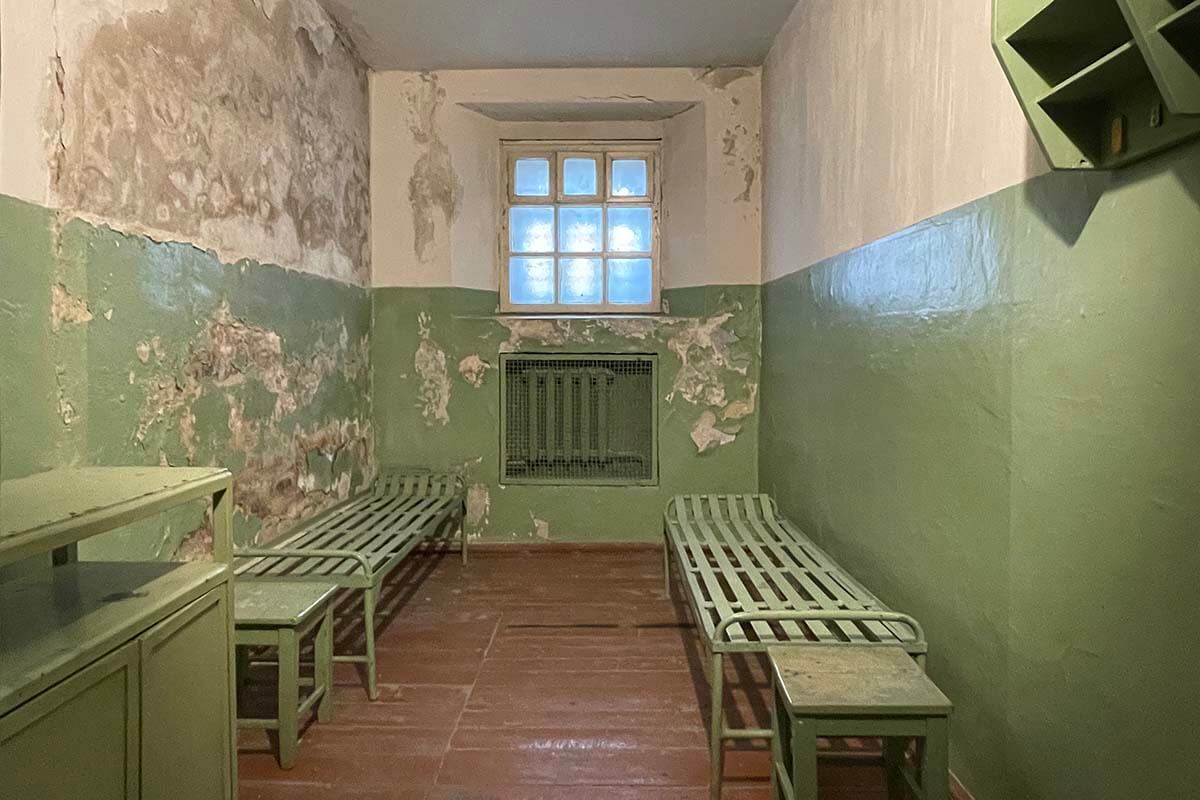
Republic of Užupis
One of the most curious neighborhoods to visit in Vilnius is Užupis (literal translation “behind the river”).
This “republic” declared its independence in 1998 as a joke by local artists. Uzupis has its own parliament, border post (bring your passport if you would like a stamp), and even a constitution. Check out the Angel of Uzupis, a statue that represents the freedom of art and expression.
While nobody recognizes the independence of Uzupis, the neighborhood is a great place to discover art galleries and cafes. As you walk around, you can also find impressive street art, so keep your eyes open and don’t forget to glance into the small alleys and sidestreets.

Where to Stay in Vilnius
There are lots of nice hotels and accommodations in Vilnius. Many people like to stay in the Old Town and if you already returned your rental car, it can be a good option. In any case, be sure to look for a hotel that has parking (or public parking nearby).
Radisson Blu Hotel Lietuva is a nice modern hotel by the river, on the other side from the Old Town, but you can easily get everywhere via a pedestrian bridge from here. It will also be easier to park here.
If you rather stay in the Old Town, take a look at NARUTIS Hotel . It’s a great choice in the heart of the city and within short walking distance to everything. They also have free parking and an indoor pool. And, of course, there are many other options all over the city center, for all budgets.
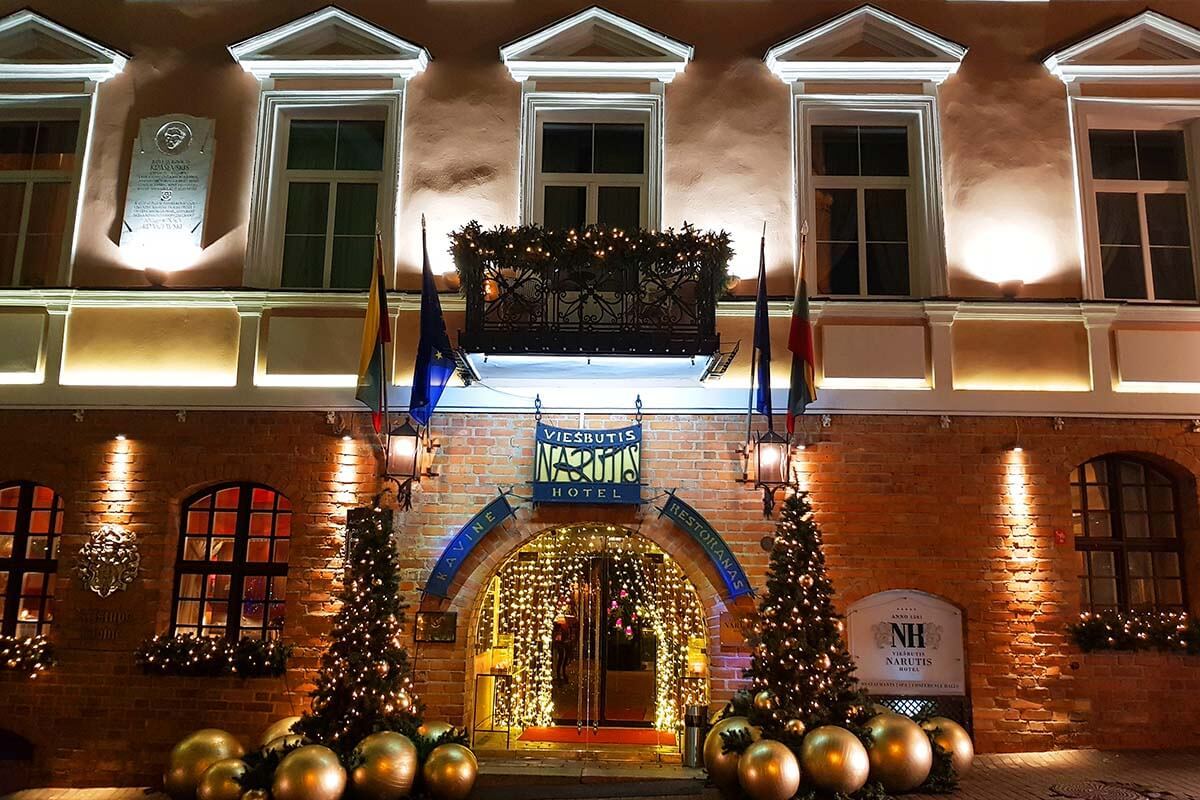
If you have a few more days in the Baltics…
Even though this itinerary is already packed with things to do in the Baltics, you can easily spend more time in the region – there are so many other nice places to see. If you have a few extra days, you can distribute them between the countries however you wish, and here are some additional suggestions:
- In Estonia, consider visiting Pärnu, a relaxed beachside town, or head to Lahemaa National Park to go hiking for a day.
- In Latvia, you could visit the seaside in Jurmala or go on a day trip to Rundale Palace.
- In Lithuania, you could stay longer on the Curonian Spit, add a day in Kaunas, and also an extra day in Vilnius.
Map of this Baltic States Itinerary
To help you plan your trip to the Baltics, we created a map indicating all the main places that we recommend visiting in Estonia, Latvia, and Lithuania. This map is just an overview and doesn’t contain all the details, but it will give you a better idea of where everything is and how you could adjust this itinerary if you have less or more time.
You can click on the picture below and see this map on Google Maps. The entire Baltic States road trip – as it is suggested in our itinerary and shown on the map – is about 1500 km over 14 days.

Some Practical Info for Planning Your Trip
Best time to visit.
The best time to visit the Baltics is in the summer. The weather is generally very nice, the days are long, and there are lots of events and celebrations. As a downside, it’s much busier in June, July, and August than the rest of the year and accommodation prices at the popular vacation destinations soar. For the best experience and fewer crowds, plan a trip to the Baltic states in May or in September.
The Baltics in the winter
If you want to avoid the crowds altogether, you can also travel to the Baltics in autumn or in winter. In some of the stops on this itinerary, you will barely see other travelers at all, and with a bit of luck, you’ll experience snow. However, if you are planning a self-drive Baltics road trip, don’t visit in winter if you are not used to driving in winter conditions.
If you are planning a trip in winter, then consider visiting in December. Vilnius, Riga, and Tallinn host wonderful Christmas markets! So if you visit in the winter, you’ll enjoy a great Christmas atmosphere and much fewer people than at the most famous Christmas markets in Western Europe… Here you can read more about the Christmas Market in Vilnius, Lithuania – they have the most original Christmas Trees every year.
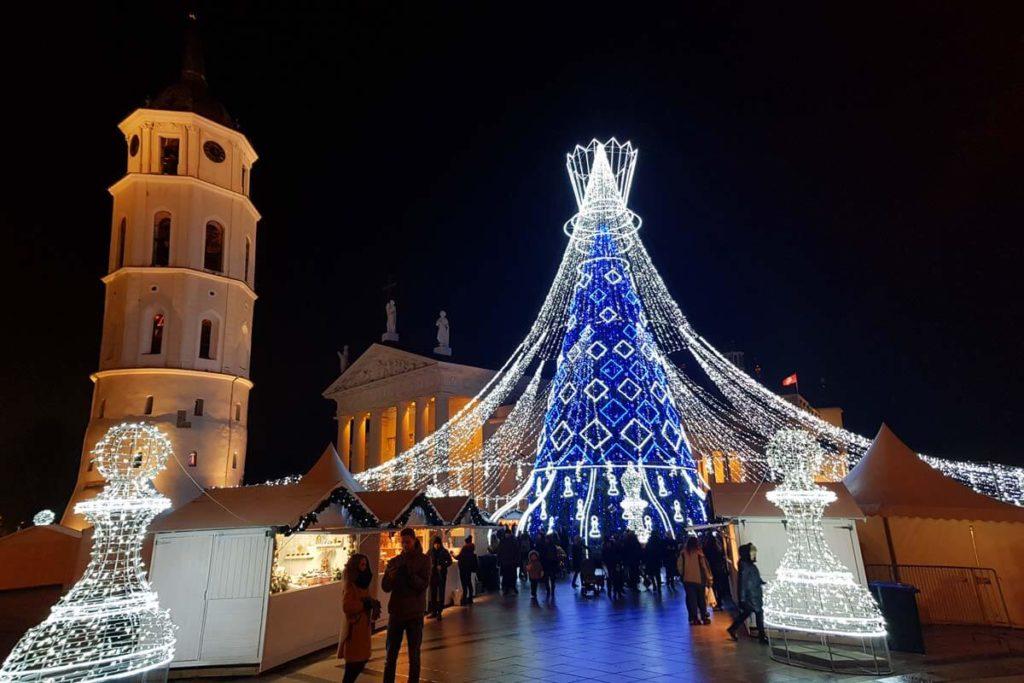
Renting a car vs. public transport
You can easily visit the Baltic states by car. The roads and infrastructure are good and comparable to any other EU country. Traffic can get very busy around the biggest cities and at the seaside on summer weekends, but apart from that, driving in the Baltics is quite relaxed. Just be sure to follow speed limits and other traffic rules since police controls are frequent.
If you prefer not to drive, you can also visit all three Baltic countries by public transport. There are good bus connections between all major cities, so if you are mostly interested in visiting the main towns, you can easily do that without a car as well. That being said, if you want to explore the Baltics a bit deeper, it’s definitely better to rent a car.
Is it safe to travel to the Baltics?
Yes, traveling in the Baltics is safe and very comparable to the rest of the EU. In fact, you’ll likely feel safer walking around Vilnius or Riga at night than you would in London, Paris, or Brussels… Just as everywhere, use common sense, but in general, there’s nothing to worry about. If you are traveling to the Baltics in winter, you may encounter ice on the roads and on the pavements, so be careful.
Which is the best Baltic state to visit?
It’s hard to compare three countries of the Baltics and say that one or the other is better. They are all different and each is worth a visit, and if you follow this itinerary, you can get a taste of all three countries and decide for yourself. That being said, if you have the time to visit just one country, then go to Lithuania. It has everything – nice towns with a great atmosphere, interesting museums and lots of cultural events, stunning nature, friendly people, and delicious Lithuanian food . And yes, I’m biased since Lithuania is my home country, but I haven’t met one single person who didn’t love it!
READ ALSO: Best places to see in Lithuania
So, this is our suggested Baltics itinerary for two weeks. We hope that this inspired you to visit this beautiful and still very little-discovered region in Eastern Europe. Have a great trip!
If you found this post helpful, don’t forget to bookmark it and share it with your friends. Are you on Pinterest? Pin these images!
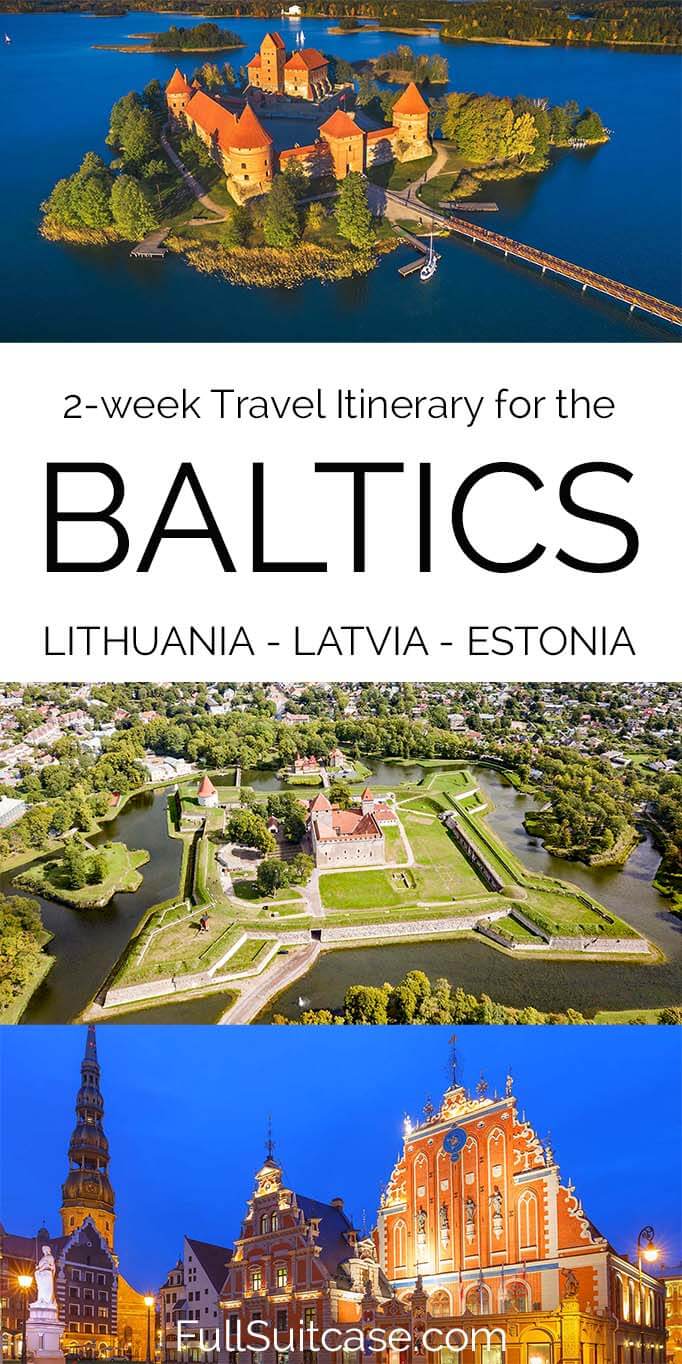
Image credits: personal collection, Toptravelsights.com , raigvi/Shutterstock.com, Wide Wings/Shutterstock.com, Chamille White/Shutterstock.com, and Depositphotos.com.
This site uses Akismet to reduce spam. Learn how your comment data is processed .
Friday 23rd of June 2023
My friend and I are planning to visit the three Baltic states in September. around 15 days. Your guidance is the best. I think we will follow your suggestions. We plan to hire a car. Any helpful hints?
Saturday 24th of June 2023
Hi Philip, that's a very general question ;). You can find all the helpful hints in our article already. Just one thing - book your car asap and I also recommend booking accommodations in advance as well. Have a great trip!
Wednesday 1st of March 2023
Thanks for the invaluable guidance. Is March a good time to visit? Will sights and restaurants be opened? Sometimes it is good to have more people around to soak up the culture of the place.
Hi, you can really visit the Baltics at any time of the year. And yes, everything will be open as usual, except in the smaller seaside villages. In the bigger cities and towns, it's always lively, and everything is open. There are also lots of concerts, theater performances, etc. in the winter months. As for the weather in March, it's more difficult to predict. It can still be quite wintery (especially in the north), or you may get lucky and it will be warmer and a bit spring-like already. Be sure to check the weather forecast a few days before you go. In general, at this time of the year, you have to be prepared for winter conditions. Have a great trip!
Thursday 5th of January 2023
Looking to do a similar trip! Wouldn't a one way car rental be pretty astronomical? I think we need to find a way to make it a loop if we are gonna rent a car. :-/
Saturday 7th of January 2023
Hi, it really depends and a one-way rental is not always more expensive. It's quite common for travelers to start in one Baltic State and end in the other, so many car rental companies are offering quite normal prices for one-way rentals. But you'd have to check what cars/prices are available for your travel dates and decide based on that. We're just back from a trip where we rented a car with a drop-off a few thousand kilometers away and they didn't even charge us any one-way fees. So you never know until you check. Good luck!
Monday 13th of June 2022
What an amazing trip plan!! I was planning a trip just like this but was a bit apprehensive given the war in Ukraine and proximity of Baltics to Russia. I see this was updated in May 2022. Do you know if there are any complications of border crossings, etc. due to the war. Looks TRULY amazing!
Tuesday 14th of June 2022
@Jurga, yes thank you!! Just booked my flight and will visit both. I plan on following this itinerary so many thanks!!
Hi Kari, my entire family lives in Lithuania and we are also visiting there soon, and I see no reason not to travel to the Baltics at the moment. Life is as usual everywhere there and if you just stay in Lithuania, Latvia, and Estonia, I don't expect any issues. These are all EU countries so there are no border controls in between them. And they are also all NATO countries, so let's hope that's sufficient to keep things stable. For the rest, nobody can ever guarantee anything, but that is no different in the Baltics than anywhere else really. Hope this helps.

Baltics Travel Guide: Plan Your Visit to the Baltics

There are few areas of the European Union that have been explored less by international visitors than the three Baltic States of Lithuania, Latvia, and Estonia. While Tallinn, Estonia has seen a massive influx of tourism in recent years due to its capacity as a cruise ship port and Riga, Latvia has increased in popularity as Ryanair began to offer cheap connections from other major European cities, the rest of the Baltics remain essentially untouched by foreign tourism. The sheer lack of tourist crowds can make travelling in the Baltics an appealing option for those looking to get truly off the beaten path in Europe.
This Baltics travel guide will cover the basic information needed for you to begin to plan your Baltic adventure. Topics including currency, transportation, budget and accommodation information, safety concerns, religious and cultural nuances, and regional cuisine are all things worth considering before you embark upon your journey through these three undiscovered countries.
Disclaimer: This guide contains affiliate links. That means if you click a link and make a purchase, we make a small commission at no extra cost to you. For more information, see our privacy policy.
Table of Contents
Baltic Countries
Located in Northeastern Europe and bordering Poland to the south, Belarus and Russia to the east and the Baltic Sea to the north, the Baltics countries comprise the nations of Estonia, Latvia and Lithuania. Distinct in culture and tradition, these countries are great to visit as one block or individually and you can easily spend months exploring and getting to know them.
If you want some country-specific information rather than a more holistic view of the region, you can browse guides and articles specifically for Estonia, Latvia & Lithuania below.

Planning a Baltics Route
Though the Baltics are only comprised of three countries, planning the perfect route through them can actually be quite a bit of an undertaking. While many of those visiting this incredible region will plan to visit only the capital cities of Tallinn, Riga and Vilnius and fail to branch further, this is also a huge mistake.
There is so much to see and experience in Lithuania, Latvia and Estonia that you really need to make sure that you put in a good amount of time to plan your route. While the capitals are lovely, dynamic and diverse and very much worth visiting, you also cannot miss the smaller cities and towns, either.
If you want to plan out the perfect Baltics itinerary to suit your travel style or are unsure which capital city to prioritise then make sure to have a look at our detailed articles below.

The Perfect Baltics Itinerary: Explore Estonia, Latvia, & Lithuania

The Ultimate 5 to 7 Days in Estonia Itinerary

Tallinn or Riga or Vilnius: The Best Baltic City to Visit
Places to Visit in the Baltics
While most notable for their capital cities, there is a lot more to the Baltic states than just the major metropolitan areas.
From second cities like Kaunas, Lithuania and Tartu, Estonia to beachy wonders like Liepaja, Latvia or the incredible Curonian Spit in Lithuania, the Baltics have so much to offer visitors beyond the capitals and top tourist sites and it is well worth taking the time to seek them out.
So if you’re trying to figure out where to go in this beautiful region and to step a bit beyond the well-trodden tourist trail, then have a browse through some of the articles below. Here we outline how to dig deeper in the capitals along with what to do in some of the lesser-visited cities!

2 to 3 Days in Vilnius Itinerary: Things To Do in Lithuania’s Capital

Things To Do In Klaipeda: Lithuania’s Charming Port City

My Perfect Itinerary for One Day in Kaunas

Things To Do In Liepaja: A Two-Day Itinerary

The Ultimate 2 to 3 Days in Tallinn Itinerary

A Perfect Day Trip to Lahemaa National Park from Tallinn

12 Best Things To Do In Saaremaa, Estonia

Best Things To Do In Tartu, Estonia: A 2-Day Itinerary

11 Best Things To Do In Parnu, Estonia

2 to 3 Days in Riga Itinerary: Things to Do in Latvia’s Capital

7 Things To Do In Jurmala & Kemeri: A Day Trip from Riga
Best Time to Visit the Baltics
Elsewhere in Europe we generally recommend travelling the shoulder seasons of March-May and September-October in order to get good weather while avoiding tourist crowds.
However, arguably the best time of year for Baltics travel would be in the high season months of June-August. Because the Baltic nations are so far north, they see disparate temperatures — winter highs fall well below freezing and both autumn and spring and be quite chilly and rainy as well.
If you truly want to get the most out of your Baltics itinerary, going in the summer months is highly recommended, especially if you want to enjoy the pristine coastline and white-sand beaches that rival many of those found in the tropics.
The weather is mild and never gets too hot, but be warned that there are mosquitos! We both were feasted upon while in the Baltics in July, so come armed with some bug spray if you don’t want to be covered in itchy welts for the majority of your holiday.
There aren’t huge tourist crowds in the summer, either, particularly if you venture outside of the capital cities. Another benefit to travelling in the high season vs shoulder or off-seasons is that all of the interesting tourist attractions, museums, and tours will be fully operational.
Many businesses catered toward tourists close from October-May due to a lack of crowds, so if you want to be able to experience everything the Baltic nations have to offer, travelling in summer is the best decision!
There is something to be said for visiting the Baltics in December, however. The snow-covered cities and towns look like something out of a fairytale and there are Christmas markets to rival those of Bavaria — just make sure to bundle up!
Autumn can be another appealing time to visit the Baltic States if you don’t mind a little bit of rain and cold. Lithuania, Latvia, and Estonia are incredibly green countries (all three have gone through a massive period of reforestation since gaining independence from the USSR) and the fall foliage is any nature-lovers dream! Just make sure to pack appropriately.

Cost of Travelling to the Baltics
Just one point on the long list of pros for Baltics travel is that they are quite possibly one of the most affordable regions in the EU. Your money can go a long way in all three countries and the affordability of the region can allow even the most miserly of budget travellers to live a bit more luxuriously.
It is worth noting, however, that prices in the Old Towns of Tallinn and, to a lesser extent, Riga can see prices that are nearly double than what you can find in less touristy areas of the city. These are really the only areas where you might need to penny-pinch.
If you are trying to save money, we recommend staying away from the tourist centres in the capital cities where prices can be very high. Find accommodation outside of the Old Towns and search for restaurants that cater to locals rather than tourists.
This will not only help you stick to a tight budget but will also give you greater insight into how and where residents of whichever city you’re visiting live on a day-to-day basis.
Read More: Baltics Travel: How Much Does it Cost?

Currency in the Baltics
Unlike travelling in the Balkans or even through Central Europe , where most countries use different currencies, all the countries in the Baltics use the Euro! Estonia was the first to adopt the Euro in 2011 while Latvia and Lithuania followed in 2014 and 2015 respectively making exchanging and converting currency a breeze when travelling through the Baltic states!
ATMs are also prevalent and easy to find wherever you may be in the Baltics so you should have no problem withdrawing cash, and it is always preferable to go with this route rather than relying on exchange booths with their less-than-savoury rates and fees. It is recommended that you find a debit card that refunds ATM fees and doesn’t charge for foreign transactions.
Credit cards are also widely accepted in most major establishments, which eliminates the need to carry large sums of cash at all. Again, just make sure that your card doesn’t charge foreign transaction fees and you should have a seamless and affordable trip to the Baltic states!

Baltic Cuisine
Baltic food is incredibly diverse and draws significant influences from its neighbours including Russia, Poland and Nordic countries.
Plenty of dishes you’ll encounter during your Baltics travel will be very similar to other Eastern European countries such as potatoes, pelmeni (dumplings), rye bread, dairy products and soups.
What sets the Baltic states apart from other Eastern European countries is their geographic location on the Baltic Sea meaning there is plenty of fish incorporated into their diet, such as smoked salmon and pickled herring!
Apart from standard drinks such as beer and vodka, it’s worth sampling local spirits such as Black Balsam (herbal liqueur) in Latvia, Vana Tallin (rum liqueur) in Estonia and Krupnikas (honey liqueur) in Lithuania. Fermented soft drinks made from rye bread known as Kvass in Latvia and Gira in Lithuania are also worth trying and taste similar to root beer.
For those that are interested, Estonia, in particular, has a thriving craft beer scene that can rival some of the most established further west. If you are a fan of a craft brew, Estonia is the place to go for fantastic and innovative beers that can be found throughout the country.
Read More: A Traveller’s Guide To Latvian Food And Drink

Transportation in the Baltics
Whether you want to rely on public transport for the entirety of your trip or would rather have the ease and flexibility of a rental car, there are a few things to keep in mind. For instance, whilst trains do exist for some routes, generally, it is more convenient and practical to use buses when travelling between Baltic countries.
Lux Express is the main bus company that operates routes between the Baltic States and Poland. Their buses are fantastic and very comfortable and offer amenities such as individual TV screens, WIFI, hot drinks and plenty of legroom! Furthermore, as the three Baltic states are part of the Schengen Area border crossings are seamless! You can book bus tickets for the Baltics here.
It is worth noting that, especially in summer, buses can book out early so it is good practice to book at least a couple of days in advance. This can save money as well, as it is usually cheaper to book online as many travel deals are offered. If you know which days you are planning on moving from city to city, this is a great option.
When moving between cities within one country during your Baltics travel, it’s worth investigating whether buses or trains are best for your route. Buses usually have the most extensive network however in some countries, particularly Latvia, there is a great train network for moving between the major cities surrounding Riga.
Though the public transit between cities in the Baltics is frequent and reliable, if you want to venture into more rural parts of the country or just don’t want to be at the mercy of bus timetables, it can be very worth renting a car.
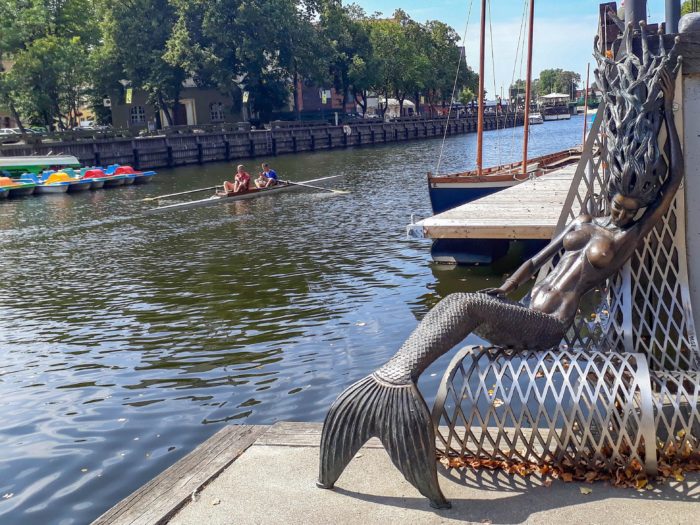
Accommodation in the Balkans
One minor inconvenience of Baltics travel a budget backpacker might find is that there is a lack of hostels outside of the bigger cities.
This, however, doesn’t mean that there is a shortage of budget accommodation in the Baltics. Airbnb rentals are prevalent, and there are also more traditional guesthouses and BnBs in most larger towns and cities that can be an affordable accommodation option.
One thing to keep in mind if you happen to be travelling in the high season is to make sure to book a bit in advance, especially in the capitals and coastal towns as the best places tend to book out early.
If you’re looking for accommodation in either Riga or Vilnius, then you also happen to be in luck as we have written detailed guides outlining different areas to stay and options including hostels, Airbnbs and budget, mid-range, and luxury hotels! Browse the articles below to find your ideal accommodation in these Baltic capitals.

Where to Stay in Riga, Latvia: The Best Areas & Hotels

Where to Stay in Vilnius: The Best Areas and Hotels
Language in the Baltics
Following the collapse of the Soviet Union, the Baltic countries went through a process of reinstating their national language as the official language of their country. Latvian and Lithuanian are Indo-European languages that share similarities while Estonian is more closely related to Finnish.
The second language for many people from the Baltics is Russian, particularly for older people that went to school during the Soviet occupation. In some cities, particularly those closer to the Russian border, the main language will actually be Russian rather than the Baltic equivalent.
There is a higher Russian population in Latvia and Estonia than in Lithuania and you are more likely to hear Russian being spoken in these two countries than in Lithuania, with the possible exception of the Curonian Spit, which shares a border with Russia and therefore receives a fair amount of Russian tourism.
If you do speak Russian and want to use it to communicate in the Baltics, it is worth knowing that some people might prefer that you speak English to them first . Baltic people from all three countries are very proud of their national identity and don’t necessarily want to be associated with Russia today — including in language.
Younger people and those living in the capital cities will be more likely to be able to speak some English while German will also be common in some parts of the Baltic states.

Religion in the Baltics
Though the general public and governments of the Baltic nations are largely secular, religion is a very important topic to discuss as there is a lot of diversity in the region.
The majority of people from the Baltic states subscribe to a particular form of Christianity. In Lithuania, the majority of people are Catholic, in Latvia, there is a more diverse mix of Lutherans, Catholics and Orthodox Christians while Estonia is predominately a mix of Lutherans and Orthodox Christians.
Many younger people, in particular, don’t see religion as a significant part of their lives. As an example, Estonia has one of the largest per capita populations of people who don’t believe in God.

Travelling through the Baltics is a wonderful, rewarding experience that is sure to delight all those who try it. There is so much to see, do and experience that you’re certain to be astounded by just how much these small countries have to offer.
From dynamic cities to white sand beaches to medieval castles, the Baltics can encapsulate a quintessential European experience with a fraction of the tourist crowds of Western European destinations.
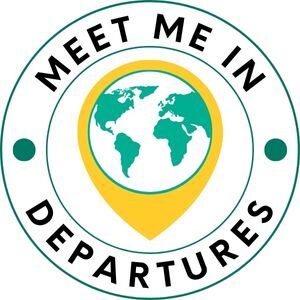
Best Of The Baltics: 23 Unmissable Things To Do In The Baltics
Compared to other destinations in Europe, the Baltics are relative newcomers to tourism. However, you’ll find an abundance of things to do in the Baltics making them a great destination for anyone interested in culture, historical cities and stunning landscapes.
The 3 Baltic countries Latvia, Lithuania and Estonia were under Soviet rule until 1991, which meant they were pretty much off limits to the outside world. That hasn’t held them back with the Baltic tourism industry seeing a huge influx in visitors wanting to explore this once restricted region.
This article delves into the best of the Baltics and covers a multitude of bucket list worthy things to see in Estonia, Latvia and Lithuania.
With their outstandingly well preserved UNESCO listed mediaeval historical centres, rolling and untouched landscapes dotted with fairy-tale castles and captivating history, you can see why visiting the Baltics is on the up, and for good reason!
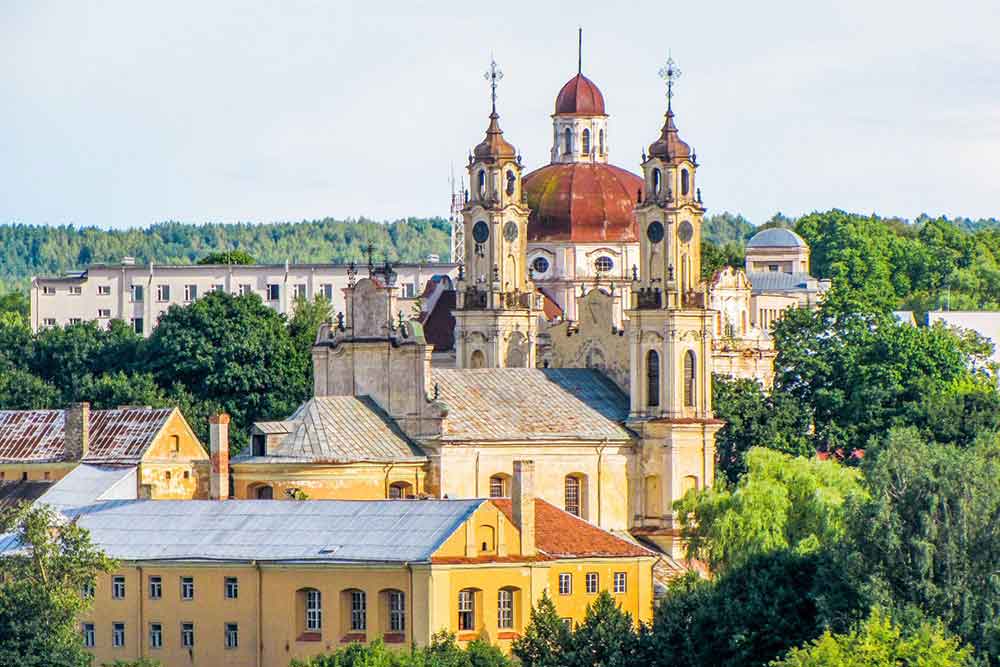
This post may contain affiliate links. To find out what this means and more information visit my disclosure page .
Top 3 Things To See In Lithuania
Organised tours of the baltic states, street art of tartu, druskininkai, what currency does the baltic states use, save it for later, best of the baltics – overview.
This best of Baltics travel guide is divided into sections. The first part gives a list of the 3 top things to see in the Baltic nations as well as gives some useful information to read before you visit.
The second section goes into the best things to see in each of the Baltic with insider information about what to expect, getting there, and the location.
Finally, there’s an FAQ section which answers any other questions you might have about planning your trip to the Baltics. You can also download this free checklist, planner and information sheet straight to your inbox.

Your download is on its way to your inbox 🙂
Top 3 Things To Do In The Baltics – By Country
If you’re planning your Baltic itinerary, and only have a limited amount of time then this section covers what to see in Latvia and Lithuania as well as Estonia. You could easily visit all these highlights within a week, especially if you have access to your own transportation .
Top 3 Things To See In Estonia
- Tallinn UNESCO Historical Centre
- Lahemaa National Park & Viru Bio reserve
- White Sandy Beaches of Pärnu
Top 3 Things To See In Latvia
- Riga UNESCO Historical Centre
- Art Nouveau District, Riga
- Jurmala Beaches & Villas
- Vilnius UNESCO Historical Centre
The Hill of Crosses
Trakai castle, baltic states travel guide – useful info.
So, you’ve got an overview of what to see in the Baltic states. If you’re in the planning stages of your Baltics vacation, this section covers some useful information to know before you get there.
You can easily do the items listed in this article by public transport, especially if you base yourself in one of the nation’s capitals. The Baltic states also make for a great road trip destination . If you want someone else to do the leg work, then you can also join a small group guided tour.
Getting To The Baltic States
It’s easy to get to the Baltic states, you have several options. The obvious is to fly, Tallinn, Riga and Vilnius all have international airports.
You could also opt for entry via land – the Baltic states share borders with Poland, Belarus and Russia with trains and buses going from each. To get the best deals on travel, book in advance using the Omio App .
Getting Around The Baltic States
When you plan your Baltics itinerary take into account how you’re going to get around. I started in Estonia and worked my way down through Latvia and then Lithuania. Each of these cities is connected by an efficient bus service.
You could fly between each country, but honestly, it’s not worth it. By the time you get to the airport, check in, and wait, it’s quicker to go by land.
An alternative is to rent a car and drive. Roads in the Baltic states are well maintained, and outside of the cities, there’s little traffic, so this is a great destination for a road trip.
If you’ve only got a limited time, don’t want to navigate the public transport system or hire a car, then an alternate way of visiting the Baltic States is on a small group guided tour .
Check Availability: Best of the Baltics Highlights 8 Days Tour
What To Do In The Baltics: 23 Things For Your Baltic Bucket List
This section goes into the best places to visit in Baltic States and is categorised by country. Don’t forget you can download this Baltic best-of guide straight to your phone for future reference.
Best Things To See In Estonia
Because of how close it is to Finland, a big chunk of Baltics tourism goes to Estonia as day trips between Helsinki to Tallinn . The city certainly has the most Scandinavian feel compared to the likes of Riga and Vilnius.
Aside from Tallinn, there’s an abundance of things to do in Estonia, and although I really liked all of the Baltic states, this country was my personal favourite. Here’s the lowdown on the best things to see.
Tallinn Historical Centre
Undoubtedly, one of the best things to do in the Baltic States is to spend time exploring the UNESCO listed city of Tallinn .
You might be wondering which is the best Baltic city. Truth is, they are all stunning. However, Tallinn, for me, was the most visually beautiful. The UNESCO listed historical centre ticks every box for being a quintessential mediaeval city, with walls, defence systems connected by a myriad of pretty cobbled courtyards and alleyways to spend hours getting lost in.
The city is also rich in history, which includes a pretty harrowing Soviet past. There is still an abundance of relics left from the Soviet era including the eerie KGB prison and headquarters, which is actually housed in a beautiful Art Nouveau building right in the heart of the old town.
Check Availability: Tallinn City Tour with Local Guide

Inside the historical centre, there are so many things to see. Tallinn is best explored on foot as the city is compact and mostly pedestrian. The city is surrounded by hills, and there are several look-out points dotted about to walk up to and take beautiful panoramic photos of the city going past the fantasy like Alexander Nevsky cathedral.
One of the most popular things to do in the historical centre is to walk around the remaining segments of the city walls. Once, these surrounded the entirety of the city to protect it from invaders. Today, they no longer make a complete circuit, but you can walk along parts of it. Lots of the sections still have watch towers to climb.
If you want to learn more about the history of the city, then it’s worth doing a walking tour of Tallinn with a local guide to give you more insight into the city.
Make sure you visit the gigantic and rotund Kiek in de Kok. Ideally, you’ll want to spend a couple of hours here. This building also houses the entrance to the super eerie Bastion passages which are built under the city and used in several wars. If you’re looking for a great Instagrammable spot, then be sure to visit St Katherine’s passage.

Tours of Tallinn
There’s a lot to do in the Estonian capital, it’s a great city to wander about by yourself. However, to make the most out of your time in Tallinn, I reccomend joining a tour.
Related Article: 33 Things To See In Tallinn
If you want to escape Tallinn and leave the other tourists behind, you should catch a bus to Kuressaare. This town, with its cute historic centre, is located on Saaremaa, Estonia’s biggest island.
Most travellers visit Kuressaare to see the Episcopal Castle, a huge fortification that dates back to the 14th century. From its towers, you have a great view of the town, but the highlight is the museum inside the castle.
Here, you can learn everything you’ve ever wanted to know about the history of Saaremaa. Oh, and did we mention the hidden passageways? The castle is full of them, small, winding staircases that you can take to get from one floor to another.

If you’re tired of climbing stairs, it’s time to relax. Kuressaare is famous for its spas, and here, you’ll have the chance to unwind in a typical Estonian sauna. If you travel to the Baltics in the low season, you could even look into renting a room in a spa hotel. They offer great discounts in winter.
In the evening, we recommend having dinner in a traditional windmill. Here, you can try lots of typical dishes from the region, like wild boar or kama jelly. Give it a try; we’re sure you’ll love it.
Explored by Daniel and Ilona from Top Travel Sights
Mooska Farm Smoke Sauna
Located in Võru County 3 hours from Tallinn, Mooska Farm Smoke Sauna is an Estonian must-see! Mooska Farm Smoke Sauna is a farm and smokehouse, but the traditional Estonian smoke sauna is by far the biggest attraction here.
No Baltics tour would be complete without experiencing a traditional sauna. The smoke sauna experience has been awarded a UNESCO Intangible Cultural Heritage of Humanity certificate and is meant to improve your overall sense of wellbeing – in body, mind, and soul. It gave us important insight into local traditions and was an experience we will remember for years to come.
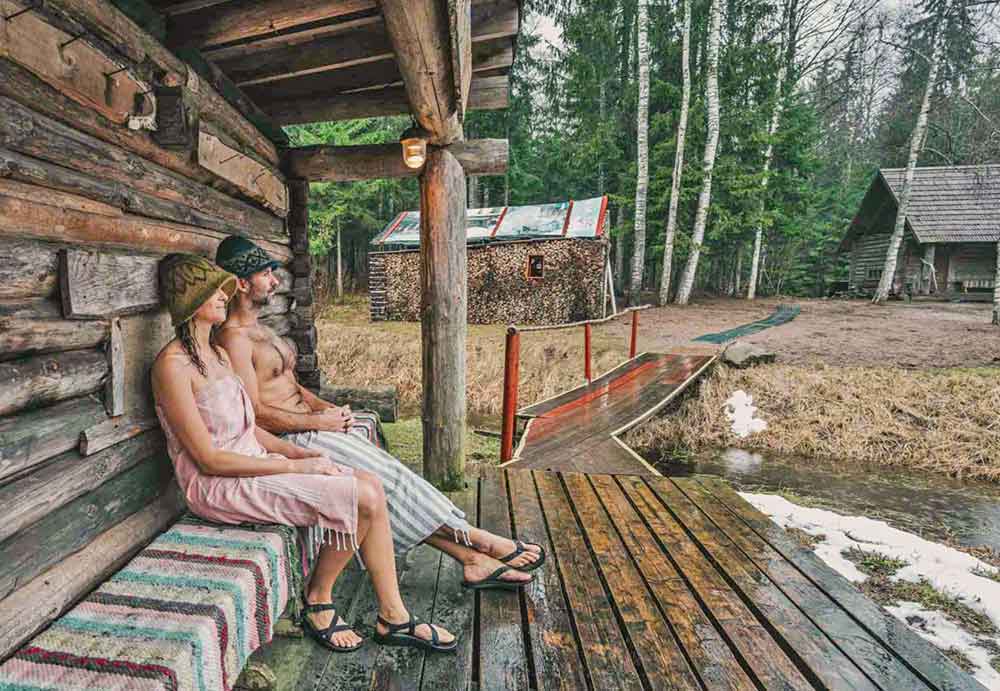
The 3-hour Smoke Sauna experience is guided by the mother of the smoke sauna and wonderful hostess, Eda. She’ll instruct you in and out of the sauna and lead the chanting, meditation, and whisking with leaves, twigs, and honey scrubs. There is also an optional ice-cold skinny dip!
Meats are traditionally cured inside the Estonian smoke sauna and after our sauna experience, we were given the chance to try some alongside other local products from the farm. The meal was homemade and made us feel like the food was reason enough to visit the farm.
Depending on the time of the year, you can also partake in a nature tour with Mooska Farm which typically involves snowshoeing, skiing, or walking through the local forest.
Explored by Oksana & Max from Drink Tea & Travel
Pärnu is home to one of the best Baltic beaches, and one of the most popular beach destinations across the three Baltic States. Czars and Russian officials made the journey here for their retreats and tourists continue the tradition every summer.
During the long summer days, the town roars to life with tourists and the sandy shores of the Baltic Sea become party central. When the temperature drops, though, it becomes quiet once again and a peaceful place to wander.

Did you know that Pärnu was where Estonia’s independence was first proclaimed? It was read in 1918, and not in Tallinn, from the balcony of the old Endla theatre. The Soviets may have demolished it and a new one was rebuilt in the city, but a replica of the balcony has sprung up in the original spot, with the proclamation inscribed on it. You’ll find it close to the bus terminal.
Away from the beaches, there is still plenty to see in Pärnu during the off-season : A leisurely walk (watch out for the black ice in winter!) takes in marshes teeming with birdlife, traditional wooden houses, including the poet, Lydia Koidula’s, childhood home. You’ll also find decorative art nouveau buildings such as the Villa Ammende, along with historic mud baths and ancient fortifications like the red tower and the Tallinn gate.
It’s enough to turn a rest stop on the Riga-Tallinn journey into an overnight stay.
Explored by Nicholas from Rambling Feet
The Struve Geodetic Arc
If you’re into the sciences or even interesting facts, then this is a must-see on your Baltic States itinerary. The Struve Geodetic Arc is a series of triangulations done by Tartu University astronomer and geographer Friedrich Georg Wilhelm Struve between 1816 and 1855.
The measurement of the meridian, which used the observatory at Tartu University in Estonia as its base point, represented the first accurate measurement of a long segment of an earthly meridian.
This work helped determine the exact size and shape of the planet and marked an important step in the development of earth sciences and topographic mapping.
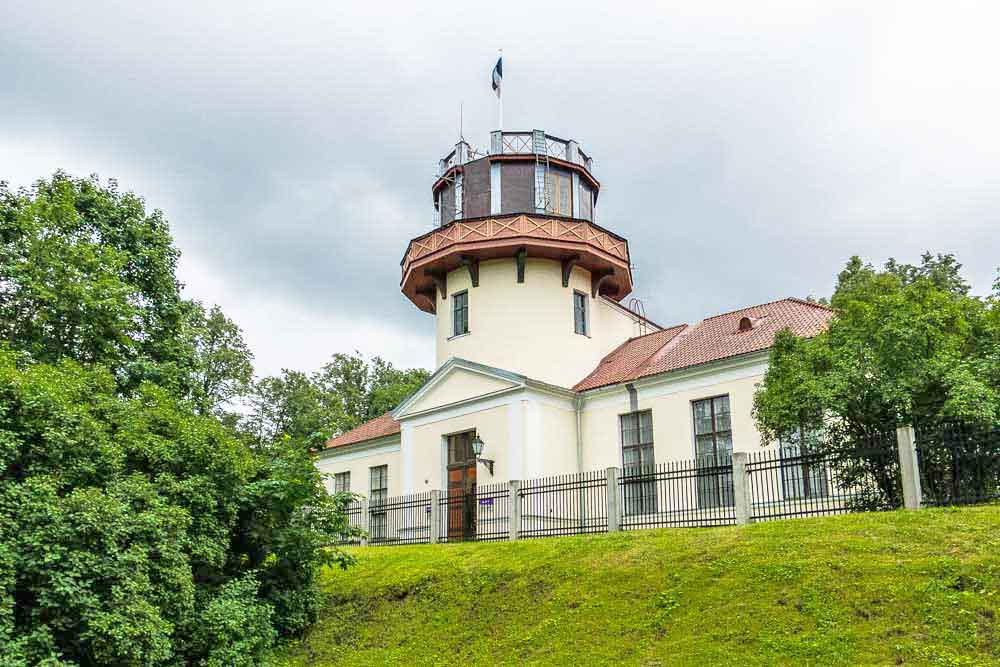
Struve did important early astronomy work on the nature of binary stars. But his actual thesis work was on determining the exact geographic coordinates of the Tartu Observatory. This, indirectly, led to his geodesic project.
The observatory is no longer in use, but now serves as a museum and includes many of the measuring instruments, many handmade by Struve, that he used in his work in mapping and astronomy.
The Tartu University site, along with other points along the meridian in 10 countries stretching from Norway to the Black Sea, are a UNESCO World Heritage site.
Explored by Tom from Travel Past 50
Lahemaa National Park
After touring the cities, it’s sometimes nice to take a break from the concrete and decompress in nature.
Estonia never gets its dues as a significant tourist attraction. When someone mentions Estonia, the first reaction is “Brrrrr. It’s cold.” Yes, the country borders Russia and the capital city of Tallinn is only a 2.5 hour ferry to Scandinavia, but summers in Estonia are a hidden gem.
Lahemaa, the largest national park in Estonia, is a short 1-hour bus ride from Tallinn. If you don’t want to go by bus, then book onto a full day tour of Lehemaa instead.
Summer days this far north of the equator mean EIGHTEEN hours of sunlight. The seemly endless days allow for exploring Estonia’s gorgeous national parks, of these fantastic natural areas, I highly recommend adding Lahemaa to your Baltic travel itinerary.
Check Prices: Tallinn To Lehemaa National Park Full Day Tour

The park is perfect for a picnic in the forest, exploring quaint seaside villages, overnight glamping at the eco-hostel at Projekt Kodu, and hiking the wooden planked path of the Viru bog. Viru bog hike is a uniquely Estonian nature walk.
The 2 to 4-mile hike is over a giant biodiverse peat bog. To keep from disturbing the ecosystem, you hike over wooden planks. The path is well marked, simply follow the planks, with information signs highlighting the plants you will commonly encounter.
The highlight is the view from the lookout tower overlooking the dark pools of bog water. From that viewpoint, I felt transported back into time, as if I was looking over a scene from Jurassic Park.
Explored by Marco from Nomadic Fire
The university city of Tartu is located 186 kilometres (116 miles) southeast of Tallinn and is the hub of Estonian street art . So much so that each year there is a street art festival, Stencitibility.
Although technically street graffiti is an illegal activity in Estonia, the festival has been running for over 10 years. If you’re a fan of street art, then this is one of the best Baltic cities to visit to find it, in abundance.
The styles differ and are created by local and international artists. With pieces ranging from playful and cartoon-like, to full on political satire. No matter where you walk in the city, you’ll pass some form of street art that adorns every possible surface.

Large murals decorate the walls of buildings, but you’ll also find artwork on letter boxes, street lamps, doors and roads. Don’t forget to look up and back over your shoulder. You’ll be surprised by how much artwork you will see.
Urban art is a constantly evolving medium, with new pieces cropping up all the time. I’m sure you’ve heard of the urban artist, Banksy, well Estonia has their own answer who uses a similar signature stencil style with pieces provoking political and social issues. Again, like Banksy, Edward von Lõngus keeps his real identity hidden.
Read Next: Visit Tartu – Estonia’s Street Art Capital
Best Things To See In Latvia
Baltic states tourism is alive and kicking in Latvia. Nestled between Estonia and Lithuania, this is the middle sister that attracts visitors passing through the states, with the capital Riga a solid favourite.
There’s an abundance of things to do in Latvia. Here’s the lowdown on the best things to see.
Riga Historical Centre
The Latvian capital has been dubbed the ‘Paris of the north’. It’s easy to see why; beautiful architecture, located on a river and plenty of café culture. If you’re spending any time in Latvia, make sure that you dedicate a couple of days to explore Riga city .
The Old Town of Riga is a listed UNESCO heritage site and is filled with remarkable buildings and picturesque cobblestone alleyways. The historic centre has been lovingly and painstakingly restored and brought back to their original glory after the city’s turbulent past.
The compact city is ideal to get lost in. When you visit Riga, be sure to see Town Hall Square and make sure to visit the House of the Blackheads . The colourful unmissable facade is one of Riga’s oldest and most beautiful buildings.
Book Here: Riga Guided City Walking Tour

Then climb one of Riga’s most iconic landmarks, featuring the bulbous spire, St Peter’s Church for an amazing view across the river and the city. If you want to learn more about the history of the city, then book onto a guided Riga city walking tour .
If you’re after one of the livelier places in Riga, then head to Livu Square or the areas surrounding the cathedral where you’ll frequently find street entertainers, live music and market stalls as well as plenty of places to drink. Don’t forget to try the local drink; Riga Balsam!
For the architecture aficionados, then Riga is also the Art Nouveau capital of the world . Albert Street is where you’ll find the highest concentration of them. It’s certainly worth half a day exploring the opulence of a bygone era. If you have more than a couple of days in Riga, then it’s also worth doing a day tour out to Rundale Palace.
Tours of Riga
There’s a lot to see in Riga. One of the most efficient ways to see the best of the city is on a tour. You might like these Riga city tours.
Read Next: The Complete Guide To Riga
Kemeri National Park
If you’re wondering what to do in Latvia to get away from the bustle of the city, then head out to explore some of the unique nature tucked away in the region.
Kemeri National Park is located about 45 minutes away from Riga, Latvia, and makes for a perfect day trip from the city . The park is home to stunning bogs, forests, therapeutic mud, and mineral waters.
Popular things to do here include hiking through the park including the Great Kemeri Boardwalk, Lake Sloka, Forest House, and Lake Kanieris. It’s also a great place for birdwatching and cycling.
Check Availability: Full Day Trip From Riga to Kemeri National Park

The most popular and beautiful thing you can do in the park is to walk the Great Kemeri Boardwalk at sunrise. You’ll be shrouded in mist, walking through the bog, enjoying the painted sky, wrapped in silence. Towards the end of the walk, climb to the top of the observation tower for amazing 360-degree views of the entire bog.
To get to the Great Kemeri Bog Boardwalk, you can take a train from Riga train station every 2 hours for just a few euros. Get off at the Kemeri Railway Station. It’s a bit of a walk from the train station to the beginning of the hike, follow the signs for “Leila Kemeru tirela taka”. If you don’t want to go by train book a tour to Kemeri from Riga .
If you’re travelling the Baltics by car, then you’ll be glad to hear there is plenty of free parking at the park.
Explored by Kelly from Snap Travel Magic
Gutmanis Cave
Gutmanis Cave is located in the Sigulda region of Latvia, about 1 1/2 hours by bus from Riga. It’s not very big, but what makes Gutmanis Cave famous is the number of legends that happened here. The most famous one is The Rose of Turaida, a Latvian love story.
This tragic tale is about a girl who was found as a baby during the Swedish – Polish war. She was adopted, baptised and given the name Maia. One day she fell in love with a gardener named Victor Heil and soon after they were engaged.

Legend says they met at Gutmanis Cave in the evenings, but an army deserter named Jakubowsky also fell in love with Maia. One day Jakubowsky sent Maja a love letter pretending to be Victor asking her to meet him at the cave. She arrived, and Jakuboswky appeared out of the shadows and attempted to force himself on her.
She begged for him to stop and said in return, she would give him a scarf that would protect him from all injuries, and if he didn’t believe her, he could try it out on her first. He stabbed her with his sword as blood gushed from her neck. She would have rather died than betray her fiancé.
Today, every Latvian knows this story, and if you visit the Sigulda region during your Baltics travel you will certainly come across it. It’s so famous that there is even an opera based on the legend.
Explored by Marika from Clumsy Girl Travels
A warm sea breeze, colourful art nouveau villas, flower-lined pedestrian streets, and a carefree attitude are just some of the signature hallmarks of Jurmala .
This cheerful little resort town is located right in the middle of the Gulf of Riga, and just 40 minutes from Latvia’s capital, Riga. For added effect, take the retro elektrichka (electric train). If you’re pushed for time, you can also book a half day trip to Jurmala .
If you’re travelling to Latvia, don’t miss visiting Jurmala – especially in the summer!
Although this town was known for its healing sanatoriums back in the USSR, it hasn’t lost its charm. It’s still the go-to place for travellers around Eastern Europe.
Book Here: Jurmala Half Day Tour From Riga

Grab a towel and start your trip at one of Jurmala’s beaches. My personal favourite is Majori beach, which is clean, has plenty of space to spread out, and is close to the centre. If you prefer something more active, then hire a bike and cycle along the coast .
Speaking of the centre: don’t travel to Jurmala without taking a casual stroll along Jomas Street! This is the main high street of Jurmala and is full of beautifully photogenic villas, boutique shops selling local Latvian goodies, and delicious cafes.
If you’re craving nature, the Dzintari Forest Park is the place to be: It’s the perfect spot for families, as there’s an entire children’s area. Whether you’re travelling to Latvia for a day or a week, Jurmala is a must for any Baltic States travel itinerary!
Explored by Luda from Adventures with Luda
Ventspils is a great stop off for a Baltic Road trip. Founded over 700 years ago this beach city is located on the western coast of Latvia. Ventspils is known as the Latvian capital of flowers and fountains.
Ventspils Port is Latvia’s oldest and one of Europe’s busiest ports. In the town centre, there is a beautiful historic carillon bell which plays the melody “Pie dzintara jūras” each hour. Other must-visit places are Livonian Order Castle and Ventspils Town Hall Square.
The entire city is adorned with flowers from spring to autumn. It is famous for its artistic spirit and numerous cow sculptures around the city. During the ‘City Festival’ in August, florists from Baltic states cover the Promenade of Ostas Iela with carpets of flowers. During this time, you will find several extraordinary flower sculptures and unusually shaped greenery, flower beds, and fountains all around the city.

Like many of the beaches in the Baltic States, Ventspils offers a beautiful white sandy beach with special areas for surfers and nudists as well as having plenty of amenities nearby.
If you want to learn more about the history of the area, you can discover Ventspils’s marine history in the Seaside Open Air Museum with its nostalgic collection of fishing boats, nets, and huts. Take a beautiful ride on a narrow-gauge steam train running from here.
If you’re after souvenirs, Ventspils market square is the best place for buying locally made products. The market was established in the 17th century and alongside the handmade gifts, you’ll find locals shopping for vegetables, fruits, clothes, flowers, plants and meat. If you have time, and you’re on a Baltic States road trip, you could spend at least a couple of days in Ventspils.
Explored by Moon Ray from Nomadic Mun
Sigulda is one of the most charming, yet underrated and lesser visited towns of Latvia . If you’re wondering what to see in Latvia that’s a little off the beaten track, then this is a true hidden gem.
Known as the ‘Switzerland of Latvia’, this region has an abundance of appeal for active travellers. I recommend renting an electric bike for half or a full day or joining a hiking tour of Sigulda . This way you can get closer to wonders like the Sigulda castle.
Take the cable car to the opposite slope passing over the Gauja river, the Sigulda’s bobsleigh track, and the hipster Jāņa market; a great option to stop for lunch and coffee.
Book Here: Full Day Tour From Riga to Sigulda with Castle, Ruins and Cave Visit

If you have your own vehicle, you can go a little further to discover places like Gutman’s cave, Krimulda manor, and Turaida museum. Finally, if you enjoy walking, don’t miss the nearby Cecili and Amata hiking trails in the wonderful Gauja National Park, a short distance from Sigulda.
If you don’t have a car, then book on to one a full day tour to Sigulda instead.
Ideally, you would want to visit Latvia between late spring or early autumn to make the most of the outdoor activities, however, if you visited during the winter, then be sure to add a visit to a local sauna into your plans.
Explored by Inma from A World to Travel
Best Things To See In Lithuania
Lithuania is the largest of the 3 Baltic states. Along with another UNESCO listed historical capital, there’s a load of stuff to see here.
Wondering what to see in Lithuania ? Here’s a list of the best things to see.
Vilnius Historical Centre
The Old Centre of the Lithuanian capital is one of the most beautiful Baltic cities, and as with Estonia and Latvia, is listed as a UNESCO world heritage site. The mediaeval city is known for its mixture of architectural styles with a huge emphasis on baroque style buildings.
A guided walking tour of Vilnius will give you loads of insight into this fascinating city. The main hub of the Old Town is Pilies Street and Gediminas Avenue. Both are lined with these exquisite buildings which are now a buzz with stylish cafes. boutique restaurants and often lined with street markets.
You could easily spend a couple of days in Vilnius getting lost and exploring the quaint cobbled paths, courtyards and alleyways. Be sure to visit Cathedral Square, the Vilnius Cathedral and the Town Hall Square as well as one of Vilnius’s most beautiful buildings, the Vilnius University – it’s got 13 courtyards!

Other must-see places are St. Anne’s Church and the Gate of Dawn, a 16th-century gate which once guarded the entrance to the original city.
One of the more interesting areas in Vilnius and certainly worth a few hours is the autonomous district of Užupis. This community within the city is filled with quirky artwork often made from recycled and reclaimed materials and thought-provoking and sometimes political messages.
Just outside of the historic city centre, you’ll find that Vilnius also has an outstanding street art scene.
Tours of Vilnius
Just like the other captials mentioned in this article, there’s a lot to see in Vilnius. This is another UNESCO listed city with an abundance of things to see. To make sure you don’t miss anything, book onto a guided city tour.
If you’re looking to get into a bit of Lithuanian history, Trakai Castle is for you. Completed at the start of the 15th century, this mediaeval castle stands proudly on an island in Lake Galvė in the town of Trakai. While the castle itself became obsolete centuries later, it stands as an important symbol of Lithuanian statehood.
To get to the Castle, you take a long wooden bridge from the shore across the lake. In the summer, the lake provides a beautiful relaxing escape from the city. In the winter, you can walk across the frozen lake to get to the Castle (ice conditions depending).
Inside the castle walls, there are numerous areas like the courtyard, keep, and chapel that you can explore. Spend some time wandering around the gallery rooms reading and exploring the artefacts. Trakai Castle is a great place to learn about the history of Lithuania .
Check Availability: Guided Tour of Trakai Castle

It is really easy to get to Trakai. The town is only about 40 minutes drive from the capital, Vilnius. Take the bus from Vilnius. The bus station in Trakai is south of the castle so you walk through the town – with cafes and shops – before spotting the castle across the water.
Because Trakai Castle is located on an island in the middle of a lake, there are various ways of seeing it; by kayak in the summer and by kick sledge in the winter when the lake is frozen.
Explored by Eric from Penguin and Pia
Located in the north Lithuania, not far from the small unassuming town of Šiauliai, you have perhaps the most fascinating thing to see anywhere in the country and also one of the best places to visit in the Baltics.
Thousands upon thousands of people flock here every year to visit the Hill of Crosses . A small hill in the countryside, dominated by more than 100,000 crosses!
Pilgrims have congregated here ever since the 1800s when there used to be a matter of hundreds of crosses here. In recent decades’ popularity has exploded and now it’s a wonderful sight to behold regardless of whether you are religious or not.
In 1993, the Hill of Crosses was so widely renowned that it was worthy of a visit from the then-reigning Pope John Paul II.
Book Here: Hill of Crosses Guided Tour with Transportation from Vilnius

Even if you aren’t religious, most people still find their visit here to be pretty magical. It’s fascinating walking up and over the hill taking in the incredible array of crosses, and the pictures look pretty cool as well!
After your visit, take some time to walk a bit further out from the hill, enjoying the large church behind as well as taking in views of the never-ending Lithuanian countryside in all directions.
A no-fuss option for visiting Hill of Crosses is to opt for a tour that includes transportation and a guide .
Explored by Bradley from Dream Big, Travel Far
If you’re looking for the perfect small city to visit in the Baltics, then you really can’t go wrong with the charming port city of Klaipeda. Often overlooked as simply a jumping-off point for the Curonian Spit, there are several things to do in Klaipeda that make it worth visiting in its own right.
As a very important ice-free port in the Baltics, Klaipeda has been a strategic city for centuries, giving it a robust and interesting history.
There is plenty of maritime history here that is worth learning about and a few museums that can help you to understand just how influential Lithuania’s third-largest city historically was. One of the most relaxing ways to explore Klaipeda is from the water in a handcrafted canoe .

Along with boasting a charming riverside pathway lined with lovely historic ships, Klaipeda also has a pretty old town worth wandering through and a great restaurant scene that showcases the newfound love for modern Lithuanian cuisine.
The city also has a couple of beautiful, white-sand beaches perfect for taking advantage of the long, sunny days of a Lithuanian summer.
Explored by Maggie from The World Was Here First
Grūtas Park
If you’re interested in either dark tourism, or Soviet history, then Grūtas Park will be one of the top things to do in the Baltics. Grūtas Park is located in southern Lithuania, not far from the border with Belarus. The nearest town is Druskininkai, about eight kilometres away.
When Lithuania declared its independence from the Soviet Union in 1990, the Soviet statues that had been on display in public spaces were pulled down and dumped in various places around the country. Then in 2001, a wealthy local man collected them and turned them into a kind of Soviet theme park, nicknamed “Stalin World”.
Check Availability: Dzukija National Park and Grutas Park Full-Day Tour

This idea was opposed by many at the time and remains controversial today, but the intention was never to glorify the Soviet regime. When you look at the park’s recreation of prison camps, barbed wire fences and guard towers, it’s clear that the purpose is to document the horrors of this difficult time in Lithuania’s history.
For a better insight, it’s worth exploring the parks and statues as part of a guided tour .
Among the 86 statues in the park, you’ll find a dozen or so of Lenin and even two of Stalin, which is pretty unusual. Even today, you’ll often come across Lenin statues while travelling in Russia and some other former Soviet countries. But de-Stalinization has been ongoing since the 1950s, so it’s rare to come across an image of him.
While I understand why some Lithuanians are not in favour of the park, I believe that it can help locals and visitors alike to better understand the country’s recent history.
Explored by Wendy from The Nomadic Vegan
Any trip to Lithuania, particularly in the summer, wouldn’t be complete without at least a day trip to Palanga! The Baltic sea brings large crowds together in the summer months when visitors can get their fill of swimming, sunning, and playing in the sand.
One of the most famous Baltic sea landmarks is the Pier of Palanga. It’s a great spot for photos as you head to the ocean, which you can also walk under depending on the tide. I highly recommend spending time at the Seaside Regional Park, a unique gateway to the sea with large trees that line the sand out to the water in some places.

This park is noted for the Dutchman’s Cap, which is a sand-dune climb to the highest elevation. Seaside Regional Park is also a breath-taking spot for sunsets. Bring a picnic basket and settle in the sand for a gorgeous light show through the trees.
Besides the typical beach activities, tourists can rent bikes to ride through green forest paths. A family favourite is the nearby Lithuanian Fairy Tale park, which features several interactive sculptures that kids like to climb and play on.
Palanga is located in the northwestern-most tip of the country, so it is an easy addition to any road trip through Lithuania and its neighbouring country, Latvia.
Explored by Monica from This Rare Earth
Dvina Missile Base and Žemaitija National Park
In September 1960 the Soviets started a top-secret construction. 10,000 soldiers moved to Žemaitija National Park, in northwest Lithuania to build a nuclear missile base that had the potential to destroy every city in Europe.
Once completed, its strategic importance to the Soviets in the Cold War was second only to Cuba. One of the best ways to enjoy the Žemaitija National Park is by canoe .
It was finally discovered in 1978 by U.S. reconnaissance teams but had been decommissioned 4 years earlier. Thankfully no missiles were ever fired.
Check Availability: Full Day Canoeing at Žemaitija National Park

Now it’s one of the very few nuclear missile silos in the world actually open to the public as a museum. The 100-foot deep missile silo is a highlight, tours also include displays of propaganda and the history of the Cold War.
You can easily visit the Cold War Museum when taking a road trip through the Baltics and enjoy the Žemaitija National Park that surrounds it. The vast parks, forests and lakes are home to rare wildlife such as Lynx and are well worth spending a day or two exploring while travelling in Lithuania.
Explored by Jo from Lost Wanders
Kaunas, the second-largest city in Lithuania, is one of the coolest places to visit in the Baltic States. The city has big historical value, it used to be an important trade centre in the region in the 15th century, in the interwar period Kaunas was the capital of Lithuania.
These are not the only reasons why you should visit the city! With its diverse history, old port and wars, Kaunus is steeped in ghostly stories.
With all the great things to do in Kaunas , you won’t be bored there for sure. Besides the traditional monuments; churches, old houses, and the remnants of the castle from the 14th century, Kaunas offers a great street art scene, exceptional modernist architecture from the interwar period, and some unique museums (like the only Devils Museum in the world).

This is also the only city in Lithuania with funicular trains, there are two of them in Kaunas, both built before World War 2. The coolest spot to visit in the city is the hidden Yard Gallery.
A local artist wanted to bring the community together and created a real wonderland, with numerous art installations, street art and photos of Jewish families that used to live in that complex.
When you get hungry numerous restaurants and cafes along Vilniaus street and Laisves avenue invite you to sit down, relax and enjoy the vibrant atmosphere of Kaunas.
Explored by Kami from My Wanderlust
Curonian Spit
On the western edge of Lithuania, drawing a line across the edge of the Baltic Sea lies the Curonian Spit; a thin strip of land 61 miles long and just over a mile wide that connects Lithuania to a small piece of Russia.
This idyllic gem is a UNESCO World Heritage Site shared by both countries and is the perfect destination for beachgoers, casual hikers, sailors, families and anyone who wishes to relax in nature. If you’re after something more active, then you can do a full day by canoe around the spit .
The Curonian Spit has a folkloric creation legend on the Lithuanian side. It was made by Neringa, a beautiful and good-hearted Lithuanian giantess, who collected sand in her huge skirt and poured it out to form the Spit so that it could protect the people on the coast from raging storms. Because of this, part of the land is named in her honour.
Book Here: Full Day Curonian Spit by Canoe

The town of Nida is also a draw for literary enthusiasts, as the Nobel Prize-winning author Thomas Mann spent summers in a holiday home he had built there in the 1930s.
In addition to this, on the Lithuanian side, the Curonian Spit is also home to the Hill of Witches – a supernatural-themed sculpture park in the village of Juodkrante, featuring wood carvings of people and creatures from mythology and supernatural lore.
The easiest way to get to the Curonian Spit is from the town of Klaipeda, and catch the ferry over to the spit.
Explored by Jeremy of Cultura Obscura
Druskininkai is a special place in Lithuania, this city is well known for spas, relaxation, healing mud, clean air, and mineral water. In the 50km spectrum, there are no factories, and Druskininkai is surrounded by forests that’s why the weather there is extremely fresh.
You can pick your own forest goodness like mushrooms, blueberries, cranberries, etc. Actually, this region of Lithuania has an old saying: “if there were no mushrooms and berries then Dzūkų women would be naked”. In the Lithuanian language, it rhymes.

If you love spa holidays or just want to relax for a weekend then Druskininkai is your destination. Also, there are many trekking roads, bicycle roads, lakes, and beautiful nature.
One of the top spas is UPA Medical Spa it is modern and minimalistic, the staff is super professional and they offer a variety of procedures. For top-notch Spa treatments and luxury accommodation, it’s well worth checking out this hotel.
I love that this city is small that’s why all restaurants and hotels personally take care of you and you make really warm memories of your stay. Also, I highly recommend going to a restaurant called “Sicilia” and trying their mussels, it’s just extremely delicious. It is one of the best restaurants in the city where you should come before dinner time during weekends or you will have to wait in line outside.
Recommended by To Youpiter
Best of Baltics – Frequently Asked Questions
So, are the Baltics worth visiting? Yes! I’ve given you plenty of great reasons to go.
This section has the answers to questions that frequently come up about the practicalities of visiting the Baltic states as well as useful travel tips .
What Are The Baltics Known For?
The Baltics are known for their UNESCO capitals, cultural richness, and unspoilt forests and lakes and white sandy beaches.
Can I do a small group tour of the Baltic States?
There are several companies offering tours of the Baltic States. Opt for a small group tour to get the most out of your visit. Check out this great small group tour of the Baltic States .
How do I get to the Baltic States?
Each country has their own designated international airport located just outside the capital. This makes getting to the Baltic States, from destinations within Europe or from as far away as the United States very easy.
Is it easy to travel around the Baltic States?
If you are travelling to the Baltic States without a car or not going on a tour, you’ll be pleased to hear that it’s easy to travel around the countries.
There are decent train and bus networks across all three countries, and services are very affordable and regular. If you really wanted you could get a flight between each of the capitals, but this isn’t necessary as they are only a few hours apart by bus.
A great travel app to search across bus, train and flight is the Omio App.
Where can I find a list of Baltic countries?
This article covers the three Baltic states, it’s made up of just three countries; Baltic countries list = Latvia, Lithuania and Estonia.
Which is the best Baltic country to visit?
It’s difficult to determine which Baltic country is the best to visit as the three Baltic states share a lot of common features as well as having a similar history.
Each of the Baltic capitals holds UNESCO world heritage status, fascinating history as well as beautiful landscapes. Purely based on the capital Tallinn, I thought Estonia was overall the most beautiful Baltic country, then Lithuania and then Riga but this is so subjective.
What are the best things to do in the Baltics?
Not sure what to do in the Baltic states? Here are some great tour ideas to give you some ideas.
When is the best time to visit Baltic States?
The winters in the Baltic States are cold, so unless you enjoy sub-zero temperatures, this probably isn’t the best time to visit the Baltics. However, that said, the festive season can be incredibly picturesque, with the pop-up Christmas markets, particularly in Tallinn.
Also, these countries are geared up for the cold weather, and things like saunas and ice skating are popular activities.
The best time to visit Baltic countries is from late spring through to early autumn, with July and August being the warmest months. Because the Baltic states are located high up in Europe, in June you can expect over 18 hours of daylight per day.
What should I pack for the Baltic States?
It can rain all year round, even in the summer. It’s best to pack layers of clothing, as well as have a lightweight, wind and rainproof jacket.
In the peak of winter, pack a thick jacket, hat scarf and gloves as well as thermal socks and waterproof shoes. It gets extremely cold.
For all year round, pack a pair of comfortable shoes as most likely, you will be doing a lot of walking. Take a pair of shoes with a good grip on the bottom, especially if you’re visiting historical city centres, as often they are cobbles and can be difficult to walk on.
You’ll be glad to hear that the three Baltic nations all use the Euro, so you won’t need to change currency when you enter a new country. Hotels and tourist places will accept cards and ATMs are frequently available.
Planning On Visiting The Baltic States?
If you had any doubts about are the Baltic states worth visiting, I hope this article has answered that.
How many of these places are you adding to your Baltic bucket list? I hope this Baltic travel guide has given you lots of inspiration.
Whether you’re backpacking the Baltics, on a short weekend break to just one of the countries, or on an extended Baltic States vacation, I’m sure you’ll find plenty of places of interest.
If you enjoyed this best Baltic places article , you might also like…
- Riga 3 Days Itinerary
- What To Do In Tallinn
- Estonia’s Street Art Capital of Tartu
If you found this article useful, or know someone that will, then please like and share. Don’t forget to pin it for future reference.
Have a question about visiting the best Baltic State? then head to the Contact page and drop me a message.

Hey, I'm Becki......and I'm a self-confessed travel addict and experience connoisseur!
In other words, I’m a bucket-list traveller, on a mission to experience the best things our fabulous little planet has to offer with the least environmental impact.
When I'm not climbing mountains, scuba diving, spotting wildlife or exploring ruins, you'll probably find me sipping coffee, or with a glass of wine in hand planning my next adventure.
Similar Posts

One Day in Granada, Spain: A Complete Visitor’s Guide
FacebookTweetPin Welcome to your ultimate guide for spending one day in Granada, a gem nestled in the heart of…

Hiking & Cycling Sicily: Best Group Cycling Trips in Sicily Review
An exhilarating hiking & cycling Sicily trip is the best way to see the island & 2 top-class companies bring you the best in Sicily small group tours.

Is Peloponnese Worth Visiting? 15 Reasons to Visit the Peloponnese Region, Greece
FacebookTweetPin In the heart of the Mediterranean lies a region seeped in history, rich in culture, and resplendent in…

Best Packing for Winter in Europe Guide: Hand Luggage Only Packing List for Winter in Europe
FacebookTweetPin Planning a trip to Europe in the winter, and looking for a comprehensive guide to packing for winter…

Best Holiday Destinations To Relax And Unwind In 2023
FacebookTweetPin While there’s a time and a place for action-packed adventure holidays, sometimes you just need to get away…

Best Riga 3 Days Itinerary: Exploring ‘Paris of the North’
This incredible Riga 3 days guide, tells you everything you need to know about visiting ‘Paris of the North’. A perfect 3 Days Riga itinerary in the Latvian capital.

The Pilot Who Explores
Travel the world like an Airline Pilot.
The Ultimate 1 Week Baltics Itinerary (Lithuania to Finland)
Last summer, my partner and I embarked on a surprisingly awesome journey to the Baltics . We had heard nice things about these far away, isolated Northern European countries – but nothing we heard captured just how fascinating they would end up being.
From Lithhuania northbound to Finland, we embarked on a journey we will never forget.
Countries you should see during your week in the Baltics
Obviously, the Baltic Sea is rather large, and encompassing countries all the way from Germany to Norway and Russia. But right now, we’re only going to concentrate on a handful of distinct, special, and smaller countries you will love.
We will start our journey in the incredibly cute town Vilnius, Lithuania .
Through a combination of bus, rental car, ferry boat, and rideshare apps, we will smoothly make our way up to Finland , making sure to spend time in the wonderful countries of Latvia and Estonia and smell the roses, then fly out of Tallinn at the end.
- Lithuania (2/3 days)
- Latvia (2 days)
- Estonia (2 days)
- Finland (Day trip)
Note that this itinerary is reversible; if it’s easier for you, you can start in Estonia or Finland.
Related: The Ultimate 4-7 Hour Frankfurt (FRA) Airport Layover: by a Pilot
Lithuania: 2 days in the intriguing land of Baltic medieval Europe (with castles and more!)
On our journey last summer, we flew into Vilnius , the capital of Lithuania, on a sweltering hot summer day. Low on energy after much travel, sweating from all corners, we pushed through and started exploring from day 1.
And what we saw did not disappoint us. Rather to the contrary, we felt enchanted by the charming old town, the surrounding elegant architecture, the bright colors of the city, and lovely marble and stone used extensively around the city.
How do I get to Lithuania?
Lithuania is very well connected from practically all over Europe, especially in the summer. There are tons of easy connections here from all over the world.
Flying into Lithuania
Air Baltic has a large base in Vilnius, Lithuania. You can fly here from:
- London Gatwick
You can purchase connecting codeshare SkyTeam flight tickets to Lithuania departing from the US for a seamless experience.
You can also fly to Kaunas, a stupefyingly cute medieval town 1 hour outside Vilnius, from many cities in Europe. Ryanair serves this airport extensively, offering very cheap fares from all over Europe.
Vilnius By Bus
You can take a bus from Riga or Tallinn for relatively cheap. We enjoyed our experience on LuxExpress .
What to do in Vilnius for an epic Baltics adventure
You should spend at least a day exploring Vilnius, especially its exceedingly cute old town and surrounding castles, churches, monuments, restaurants, and parks.
- Exploring the Gediminas Castle Tower
- Visiting the Palace of the Grand Dukes of Lithuania and it’s museum
- Making your way to the lovely Cathedral Square and its charming architecture and fountains
- Strolling around the Vincas Kudirka Square , and surrounding lovely shopping area often filled with live performances and even parades
- Entering the Old Town via the ancient and fabulous Gates of Dawn
- Walking along the main streets of Old Town Vilnius for a beer at a charming little restaurant
- Hiking to the Three Crosses Monument and Altana Hill for epic views on the city (especially at sunset)
Where to eat in Vilnius
Vilnius absolutely delighted our taste buds, with marvelous cuisine and fantastic flavors. Most are little family-owned restaurants in old houses with seating outdoors, or cozy dining indoors. These were our favorites:
- Head to Faustino Cafe for amazing coffee and great, healthy food options
- Bazilijonai is an excellent option for lunch and dinner. You’ll find local food full of flavor and warmth.
- Don’t miss Beigelistai , another great local option – this one in the heart of old town. It’s the perfect place for a romantic date
- Vegan lovers will be delighted with RoseHip Vegan Bistro , conveniently situated right outside the Gediminas Castle Tower
- In the morning, stop by Coffee Circus Piano for amazing coffee and pastries
Where to stay in Vilnius
Between charming B&B’s and even more charming local hotels right in the heart of Old Town, there’s no lack of choice here. But here’s what we recommend.
Our top choice: the Artagonist Hotel (4.8 on Google)
The Artagonist Art Hotel
Our Top Choice in Vilnius
We stayed at this 4-star boutique hotel on a whim and ended up really appreciate its artistic vibes, comfortable rooms, lovely views, and excellent location – only a 5 minute walk from the castle!
The rooms are spacious with views on the Old Town and an excellent cafe on property.
The Ultimate 5-Star Vilnius Hotel: The Kempinski
There isn’t a way to overstate just how nice the Kempinski of Vilnius is. With the top reviews of any hotel in Vilnius, you are sure to have a peaceful, relaxing time right in the heart of Old Town Vilnius.
5 Stars on a Budget: The IMPERIAL Hotel & Restaurant Vilnius
Look for a truly amazing experience in Vilnius without breaking the bank? The IMPERIAL Hotel offers 5 star amenities for 3/4 star prices , and it has an epic location in the direct center of Old Town Vilnius.
The ultimate Baltics day trip: visiting fairytale land in Kaunas, Lithuania
As we started our descent on our flight from Amsterdam to Vilnius, I looked out the left side of the airplane, glancing at something that surprised me: a massive full fledged castle and surrounding estate.
My first thought was “I have to go there!”. I looked it up on Google Maps, and much to my pleasure it was only an hour away!
Castles, moats, a medieval fortress, green mystical forests, Gothic architecture, bright colors, and an incredible Old Town – all of this is in nearby Kaunas .
Plus there is a plethora of excellent cafes and restaurants, lots of wonderful green parks and river walks, and friendly people to make your visit fascinating.
Only an hour by car or train ( see schedules ) from Vilnius, Kaunas is such an easy trip, whether it’s for a single day an overnight (lots of great AirBnBs here).
LuxExpress: the best (cheap) way to get from Vilnius to Riga and beyond
Onwards to Latvia. Our next stop on this enchanting medieval journey is Riga, the capital. So the next logical step is to get there! We took a “luxury” bus;
We ended up using LuxExpress several times during our trips, finding their coaches super comfortable and very accessible and cheap.
The driver checked our CDC-issued vaccine cards prior to boarding and that was it. Nice and simple.
The highways in the Baltics are incredible smooth and well done. The buses typically make stops at small towns where you can get out and walk, use the facilities, and enjoy fresh air for a couple minutes.
Latvia: Riga & The Beaches of the Baltics
Riga, the capital of Latvia, has a fantastic location. Why?
It’s only 45 minutes from the beach! And whether you take a bus, or rent a car (as we did), you’ll love the quaint small villages on the water and experiencing how Latvians holiday.
Renting a car in Riga for the day and visiting the beach
We rented a car right from the heart of downtown, steps from the Coach station, for an epic day trip; heading to the beach!
Hertz has a few convenient locations included the aforementioned one, with great rates and ease of use.
We drove down to the wonderful Majori Beach area, where locals flock during the summer – and for good reason. Whether you’re visiting the Dzintari Forest Park , walking along stunning beach boardwalks, or just embracing the heritage and truly unique architecture of the area, you’ll enjoy it.
In fact, we preferred the Latvian beachside over Riga. It’s a lot more laidback and enjoyable to explore.
What to see in Riga
Though Riga was our least favorite Baltic capital, it still offers some incredible food and amazing history.
But there’s even more history about the early 1900s and the world wars. Much of what you can visit entails this gruesome history;
- The Freedom Monument , dedicated to Latvians who fought for independence in 1918-1920
- Monument 190 5 The Fighters
- Latvian Riflemen Monument
- Monument to the Liberators of Soviet Latvia and Riga from the German Fascist Invaders
- Museum of the Occupation of Latvia
- The Latvian War Museum
As a lover of green, lush vegetation, I enjoyed visiting:
- The University area around the Riga Canal and all of its charming riverside parks and walkways
- The Riga Cathedral – incredibly big and beautiful, and especially unique
- Riga Castle
- Plus, the Riga Central Market
Where to stay in Riga
One thing we loved about Riga, a down-to-earth and charming city, was it’s great selection of accommodations.
Naturally, my favorite option would be something in between. The Relais Chevalier right in the Old Town Riga offers the best blend of boutique-ness, amenities, views, location, and pricing.
Where to eat in Riga
Although Riga wasn’t our absolute favorite city, I have to admit one thing: the food is pretty dang good here.
As a Belgian-American, I was naturally drawn to KwakInn Belgian Beer in Riga right in the heart of Old Town.
Vegans will delight themselves at Kozy Eats , whereas fine diners will love Martinelli Riga, likely the nicest restaurant in town.
Other awesome areas to visit in Latvia
Thanks to our rental car , we were able to cram in a few other extraordinary Latvian points of interest into our short weeklong experience. These included:
- Jūrmala , for its epic monastery church and totally beachy vibes
- Gauja National Park (Enter Gauja) and the Turaida castle. Absolutely gorgeous riverside hiking
- Cēsis and it’s wonderful castle which you can fully explore. The Old Town here is super cute.
I actually enjoyed visiting these more than Riga itself.
Getting from Riga to Tallinn, Estonia
We deposited our car at the downtown Hertz location, gathered our stuff, and then took an Uber down to the Coach station for our bus to Tallinn.
Once again we relied on LuxExpress for a cheap and comfortable ride. But there are other options;
- Flying from Riga to Tallinn
- Flying from Riga to Helsinki then taking a ferry
- Renting a car one way at great expense
- grabbing a “BlaBlaCar”, via its hitchhiking app , towards Tallinn
Tallinn, Estonia: the most marvelous Baltics Old Town of all
If you can’t already tell, I might a just a touch biased.
Tallinn, Estonia’s capital, is downright incredible. Not only is it’s Old Town absolutely delightful, it’s also big enough to have a lot to explore.
The food here is also spectacularly great, the people are particularly friendly, and the architecture is magnificently charming. It’s the quintessential old town.
What to see and do in Tallinn
There is just so much to explore in Tallinn. Truly. It’s a brilliant town.
There’s an upper and a lower Old Town, built around Medieval castles and fortresses. You will never have any doubts of the authenticity of this old town.
Tallinn is probably one of the best cities to get lost in. But if you want a more targeted experience, make sure to visit:
- The Tallinn Town Hall and its fabulous 13th century center square
- The Master’s Courtyard, a cute passageway with all the Old Town feels
- Viru Gate , a 1300s watchtower entrance to the city
- The Nunnatorn , Kohtuotsa and Patkuli viewing platforms for epic views on the city
- The Maritime museum on a cold, rainy day
- Freedom Square and the Harjumae Park area
- The Kiek in de Kok (haha, funny name) and Bastion tunnels for the cannon towers and awesome exhibition
- The Alexandar Nevsky Cathedral , super Orthodox and out of place, it truly stands out
- And of course, the Toompea Castle – from the 9th century!!
This list only scratches the surface; you’ll just have to see for yourself!
Where you should stay in Tallinn, Estonia
The absolute best hotel in Tallinn: the surprisingly affordable 5-star Schlössle Hotel in Old Town Tallinn.
- It’s right in the heart of Old Town. Literally the center, the highlight, the perfect location.
- The best reviews of all hotels in Tallinn, with excellent rooms and a vibrant mix of comfort and art
- A fantastic restaurant serving up delicious local dishes
Alternative options include Hotel Telegraaf , another exceptional 5-star hotel in the heart of town. And those looking for a cheaper, but still excellent option will love My City Hotel which is also right in the heart of Old Town Tallinn.
Where to eat in Tallinn
Ah, the food. Maybe the most important part! Well, hey, why not?
To start with, make sure you don’t miss Restaurant Rataskaevu 16 and its absolutely epic local dishes. Fabulous. Right across from it is our favorite vegan place in Tallinn, Vegan Restoran V . Don’t ask me about why there are numbers in the name. I don’t know. But maybe I should.
Craving pancakes? Head to Pub Kompressor for a delicious treat. Looking for seafood? Head to Restaurant The Nautilus for freshness.
There is no lack of options for food in Tallinn.
An epic day trip across the Baltic Sea from Tallinn to Helsinki
We took the opportunity to head to Finland’s capital city of Helsinki. Only a short ferry ride away from Tallinn, Helsinki is compact enough to make a great day trip, but big enough to be interesting to visit.
Riding the ferry between Tallinn and Helsinki
There are three main providers linking these two Baltic capitals: Tallink , Linda Line, and Eckerö Line. These ferries provide both car transport and simple passenger transfers. As a simple (very simple) passenger, I found Tallink’s schedule most conducive to a day trip.
We left on the 10:30AM ferry for only 29 Euro per person, and enjoyed the 2 hour journey with ample shopping opportunities. However, dining options were paltry.
After a day of exploring, we returned on the 1930 ferry, enjoying the late evening and making it back to Tallinn by 2200.
What to see on your day trip to Helsinki, Finland
We found Helsinki to be not as quaint or charming as Tallinn, and more resemblant of other typical European capitals. But we enjoyed the truly waterfront feel and accessibility of the city.
From the ferry dock, you’ll immediately find a Tram line that takes you right into town. SUPER convenient.
Although visiting Helsinki in a day means your itinerary will be jam packed, make sure to visit:
- Esplanadi and its Market Square , the heart of downtown
- The Kaivopuisto area for gorgeous waterfront views and great trails
- Suomenlinna island, acdcessible by a short ferry
- Hakasalmi Villa and its surrounding parks
- The Sternwartenpark
- Senate Square area
- Lapinlahden Lahde for a cultural and local experience
- The Sibelius Monument
Seafood in Helsinki is amazing, and I recommend taking out from the Market Square. But if you want a sit down restaurant like we did, I recommend Restaurant Minato Sushi . It’s fantastic sushi, truly.
Is one week in the Baltics enough?
Our week exploring, trepidating across the Baltics was absolutely wonderful. It was the perfect blend of relaxation, discovery, curiosity, and comfort.
I found that one week exploring the Baltics was the perfect amount. It enabled us to clearly define the similarities and difference between these wonderful countries, finally get a true and authentic taste of Medieval times, and satisfy our craving for discovery while leaving us feeling like we could come back.
So while I’d like to come back someday and explore some more, I felt that one week across the Baltics was perfect .
Share this:
Keep exploring the world, 10 things you need to know before visiting iceland right now.

Croatia: One Awesome 8 Day Road Trip Itinerary

The Ultimate Guide: How to get COVID-19 Test Results in One Day

Leave a Reply Cancel reply
This site uses Akismet to reduce spam. Learn how your comment data is processed .
Discover more from The Pilot Who Explores
Subscribe now to keep reading and get access to the full archive.
Continue reading
What to Know Before You Travel to the Baltic Region
Lithuania, Latvia, and Estonia
:max_bytes(150000):strip_icc():format(webp)/RussianKerry2-56a39e8d5f9b58b7d0d2ca8c.jpg)
When to Visit
Countries of the baltic region, the culture of the baltic region.
The Baltic Region of Eastern Europe is a unique territory inhabited by non-Slavic natives as well as ethnic Slavs. Travelers to the Baltic Region will discover the centuries-old folk culture, strong national pride, and the refreshing air of the Baltic Coast.
Visiting this region offers sights and activities not found in other countries in East or East-Central Europe. The capital cities may provide the most as far as entertainment, sights, and shopping go, but a trek into the countryside will mean the exploration of castle ruins, enjoying a day at an open-air museum, or spending a revitalizing holiday by the sea. Furthermore, villages and towns showcase interesting snapshots of life in the Baltic Region.
While most people visit the Baltics in the summer, other seasons have a wealth of options for the off-season traveler. Autumn and spring are beautiful times to visit these three countries. Winter has the remarkable advantage to visit as it is the season during which Christmas markets and related events allow visitors to participate in holiday traditions. When you dine out in the Baltics, seasonal dishes such as cold beet soup in the summer and hearty stews in the winter will be popular fair at restaurants serving traditional fare.
Nestled together on the coast of the Baltic Sea—Lithuania, Latvia, and Estonia—make up the Baltic Region of Eastern Europe.
Latvia is situated between Estonia, its neighbor to the north, and Lithuania is its neighbor to the south. To get a better idea of location, look at these maps of the Eastern European countries . Because Russia (and Belarus), Poland, and even Germany have shared borders with the Baltic Region, the Baltic countries may share some characteristics of nearby countries. Each Baltic nation has a coast on the Baltic Sea, which has provided fish, amber, and other ocean resources to Baltic Region locals.
Visiting all three Baltic countries is easy, with regular flights between the capital cities of Tallinn, Riga , and Vilnius. Short distances between the cities also mean that travel by bus is convenient, affordable, and comfortable and that seeing all three cities in one visit is possible.
Although Lithuania, Latvia, and Estonia are grouped geographically as the Baltic Region, they differ from one another culturally and linguistically. The countries consistently strive to encourage the world to see them as unique nations. Locals and visitors alike can learn about the folk cultures and the evolution of languages in art and history museums in the Baltic Region.
As far as language goes, both Lithuanians and Latvians share some similarities of language , though the two are not mutually intelligible; Lithuanian is considered to be the more conservative of the two. Meanwhile, the Estonian language derives from the Finno-Ugric branch of the language tree, making it entirely different from both.
Festivals and markets across the region year-round also highlight unique elements of each nation's culture and history through folk dances, songs, crafts, and food. These song and dance festivals preserve this essential part of these countries' cultures, which was integral to gaining their independence during the Singing Revolution.
Countries in the Baltic Region also celebrate holidays according to local customs, so Christmas in Lithuania, while similar to Christmas in Eastern Europe, is definitely unique, with many special customs and traditions of its own.
Guide to the Countries of Eastern Europe
Lithuania in Spring: Weather, What to Pack, and What to See
Fall in the Baltics: Weather, What to Pack, and What to See
Major Cities in Eastern Europe
Lithuania Facts
After Decades of Disconnection, These 3 Countries Will Join the European Rail System
Introduction to the Baltic Capitals
An LGBT Guide To Tallinn, Estonia
Geography and Culture of Bulgaria
8 Latvian Dishes You Should Try in Riga
Lübeck: Planning Your Trip
Maps of Eastern European Countries
Maps of Northern European Countries Visited by Cruise Ships
November Festivals in Germany
Lithuania Christmas Traditions
Best Tour Companies for Singles

The Ultimate 10-Day Baltic Itinerary: How to Visit Baltics?

Wondering how to visit Baltic countries and what to see in Baltics? This article covers it all and includes a 10-day Baltic itinerary that you will want to steal.
The Baltic countries consist of Estonia , Latvia , and Lithuania and are located in Northern Europe. It used to be a true hidden gem in Europe, however, nowadays, this region has gained a lot of popularity and attracts many tourists from all over the world.
From the medieval Hanseatic League to the more recent Soviet era, the Baltics have endured and emerged as sovereign states, each with its language, traditions, and unique national character. And traveling around the Baltic countries guarantees unforgettable memories and sights.
This comprehensive Baltic guide will cover everything that you need to know before visiting Baltics. We will cover a lot of practical travel tips, like how to move around and when is the best time to visit the Baltics. And then we will dive deeper into the perfect 10 days in Baltic itinerary for first-timers.
*Disclosure: This article contains affiliate links. If you make a purchase after clicking one of these links, I earn a small commission at no extra cost to you.
Useful information to know before visiting Baltic countries
Where are the baltic countries.

The Baltic countries, Estonia, Latvia, and Lithuania, are situated in Northern Europe, along the eastern coast of the Baltic Sea. Estonia is to the north, Latvia in the middle, and Lithuania to the south, collectively creating the Baltic region.
These nations form a distinctive region with shared historical ties and a rich cultural heritage. The geographical proximity to the Baltic Sea has significantly influenced the development of these nations over the centuries.
Are Baltics worth visiting?

Yes, exploring the Baltic countries is definitely worth it. Estonia, Latvia, and Lithuania offer a unique blend of rich history, diverse landscapes, and vibrant cultures.
From the medieval charm of Tallinn’s Old Town to the Art Nouveau architecture of Riga and the serene natural beauty of Vilnius, the Baltics provide an amazing travel experience.
Whether you’re interested in historical sites, cultural traditions, or simply enjoying the natural beauty of the region, the Baltics have something to offer for every traveler.
Is it safe to travel to the Baltic states?

Generally, the Baltic states are considered safe for travelers. They have low crime rates compared to many other European countries, however, like any travel destination, it’s essential to exercise common safety precautions.
While no place is entirely without risk, the Baltic countries are one of the safest places in Europe for travelers who take basic precautions and stay informed about their surroundings. Which makes it a great destination for solo female travelers as well.
Are Baltic countries cheap?

The Baltic countries, Estonia, Latvia, and Lithuania, are often considered more budget-friendly compared to many Western European destinations. While prices may vary depending on specific locations and your personal spending habits, the Baltics generally offer good value for money.
Accommodation, food, and transportation costs in the Baltic states are often more affordable than in Western Europe. Local markets and eateries can provide cost-effective dining options, and public transportation is usually reasonably priced.
I have to mention that over the years the Baltics have raised the prices, so if you visited these countries a couple of years ago, you might be surprised. However, you can certainly plan a budget trip to Baltic countries.
That being said, the level of perceived affordability can vary from person to person, and factors like the specific cities you visit, the type of accommodation you choose, and your lifestyle preferences will influence your overall expenses.
How to get around Baltic countries?

Getting around the Baltic countries is relatively easy, and there are various transportation options to choose from. Let’s dive in and explore the ways to get around Baltic countries.
Public Transportation: Each capital city—Tallinn, Riga, and Vilnius—has well-developed public transportation systems, including buses and trams. Public transport is an affordable and efficient way to explore these cities.
Buses: Intercity buses connect major towns and cities in the Baltic region. Several bus companies operate, providing a cost-effective means of traveling between countries and exploring different regions.
Trains: The Baltic countries have a rail network that connects major cities. Trains are a comfortable option for traveling between capitals and other notable destinations. Check the schedules and book tickets in advance for long-distance journeys.
Car Rental: Renting a car is a convenient option if you want to explore rural areas or have more flexibility in your itinerary. However, you won’t need a car to follow this Baltic itinerary.
Taxis: Taxis are available in urban areas, and ride-sharing services like Bolt operate in some cities. Taxis are a convenient option for short distances or when public transportation is less practical.
If you are planning to follow this Baltic States travel itinerary, you will use the bus to move between Baltic capitals. Make sure you check Flixbus for the most affordable prices and purchase your ticket in advance. Other great alternatives include EcoLines and Lux Express.
When you finally reach the Baltic capitals, you will be walking most of the time. Occasionally, you can hop on a public transport or book a Bolt ride. And to explore the countries beyond the capital, you will be able to use buses or trains. Or join some of the best tours.
However, you don’t have to worry about these things, because this 10-day Baltic itinerary will include all these details and all the information on how to travel between Baltic states.
When is the best time to visit Baltic countries?

The best time to visit the Baltic countries—Estonia, Latvia, and Lithuania—largely depends on your preferences for weather and activities. Here’s a general overview.
Summer (June to August)
This is the peak tourist season when the weather is generally mild and pleasant. Summer brings longer days, allowing for more exploration and outdoor activities. However, popular tourist destinations can be more crowded during this time.
If you ask my personal preference, summer is the best time to explore the Baltics and make the most of your trip.
Spring (April to May) and Fall (September to October)
These shoulder seasons offer milder temperatures, fewer tourists, and the added beauty of blooming flowers in spring or colorful foliage in fall. It’s a good compromise between pleasant weather and avoiding the crowds.
The fall foliage was one of my favorite seasons growing up in Latvia, however, you will have a high chance of rain and a cloudy sky.
RELATED : Why You Should Visit Latvia in Autumn?
Winter (November to March)
Winter can be cold, with temperatures often dropping below freezing. If you enjoy Christmas markets and winter sports like skiing, this could be an excellent time to visit, especially in Lithuania. However, many outdoor attractions may be less accessible during this period.
Chasing winter wonderland in the Baltics is a truly unique experience and overall, it is more affordable compared to Scandinavian winter destinations.
How many days in the Baltic countries?

The ideal duration for your visit to the Baltic countries depends on the depth of exploration you desire and your travel preferences. However, the Baltic itinerary for first-timers should consist of at least 10 days.
During the 10 days in the Baltics, you will be able to discover the essence of the Baltic capitals and even pick one of the best day trips to see beyond the big cities.
I have to say that this is a relatively easy Baltic itinerary for 10 days because I want you to enjoy your time not just chase sights. Also, it is very flexible, so you can easily exclude the things that you don’t want to see or visit and add other alternatives.
What is the best route to visit Baltic countries?

The best route to visit the Baltic countries often depends on your starting point and personal preferences. However, if you’re looking for a general route that covers the highlights in a logical sequence, you might consider the following.
Start in Tallinn, explore the Estonian capital and beyond. Head south to Riga, spend a few of days there, and then make a day trip to see more of Latvia. Conclude your trip with a stop in Vilnius and plan a short visit to Trakai.
You can also do the same route and start from Vilnius instead. If you have to fly back from your arrival point, plan an extra day on the route, which is not ideal, but totally doable.
The ultimate Baltic itinerary for 10 days
This is a quick overview of your Baltic itinerary for 10 days.
- 2 days in Tallinn
- Day trip from Tallinn
- 2 days in Riga (with an optional extra day)
- Day trip from Riga
- 2 days in Vilnius
- Day trip from Vilnius to Trakai.
If you are wondering how to see the best of the Baltic in 10 days, you will need to plan at least 3 day trips – one from each capital. But if you want to see other beautiful places to visit in the Baltics, you can always add an extra day.
Also, I suggest you plan a day trip, so you don’t have to worry about checking out and checking in to a different hotel every day and drag your luggage with you. This way you can base yourself in each Baltic capital for 3 days and plan a short trip from there.
As you can see there is an extra day for Riga, however, you can use it for an additional day trip from Tallinn or Riga, depending on your interests. Or you can simply enjoy a chill day in the middle of your trip. If not, this trip to the Baltics will take 9 days, but I wanted to keep it flexible.
This is truly the best way to spend 10 days in the Baltics. But let’s dive deeper and discover more details of your Baltic vacation.

The northernmost capital, Tallinn, is a blend of medieval charm and modern vitality. The heart of the city is its UNESCO-listed Old Town, where cobblestone streets wind through well-preserved medieval structures.
Tallinn’s skyline is dominated by the imposing Toompea Castle and the spires of churches like St. Olaf’s Church and Alexander Nevsky Cathedral.
It is the starting point of a 10-day Baltic sightseeing itinerary. 2 days in Tallinn is the perfect amount of time to enjoy all the essentials of Tallinn, taste unique food, and try unforgettable experiences.
In this itinerary, we will cover how to spend 2 days in Tallinn and how to maximize your time in this charming city. I will add some optional stops, so this itinerary suits different travelers and interests.
RELATED : 40 Photos to Inspire You to Visit Tallinn, Estonia
2 days in Tallinn itinerary

Day 1 in Tallinn
- Morning: Viru Gate, self-guided tour in the Old Town, Town Hall Square, Town Hall Pharmacy.
- Lunch: Pub Kompressor.
- Afternoon: Hellemann Tower, St Olaf’s church or Cafe Maiasmokk (optional), Alexander Nevsky Cathedral, Kohtuotsa viewing platform, Patkuli viewing platform.
- Dinner: Draakon or Rukkilill Cafe.
Day 2 in Tallinn
- Morning: Rotermani (optional), Kadriorg.
- Lunch: Balti Jaam.
- Afternoon: Telliskivi, Fotografiska.
- Dinner: Old Hansa or Cru.
If you want to see a detailed version of this itinerary, make sure you read how to spend 2 days in Tallinn . It includes a lot of useful tips that will help you in the planning process.
Day 3 – pick the day trip from Tallinn

The compact size of Estonia and the convenient location of Tallinn means that you can plan an amazing day trip from Tallinn and see beyond the Estonian capital. If you ask me, there are a lot of great options for nature lovers and I would focus on that, but it is up to you.
Click here to discover the best day trips from Tallinn to fill up 3rd day of your complete Baltic itinerary for 10 days. You will see that you can even go to Helsinki, but considering that you are on a mission to discover the Baltic states, let’s just focus on the places within Estonia.
Where to stay in Tallinn?
It is important to find the right accommodation for your trip, so I have prepared a list of the best hotels in Tallinn for every budget. Depending on your travel style, I am sure you will find something suitable, so take a look and decide where to stay in Tallinn.
Luxury: Radisson Collection Hotel, Tallinn

If your travel to Tallinn is focused on a luxurious experience, the Radisson Collection Hotel is the right hotel for you.
This modern and stylish hotel offers all the comforts to its guests, including a rooftop terrace on the 24th floor. Some rooms boast stunning city views, while some others even include a sauna.
Unique: Schlössle Hotel – The Leading Hotels of the World
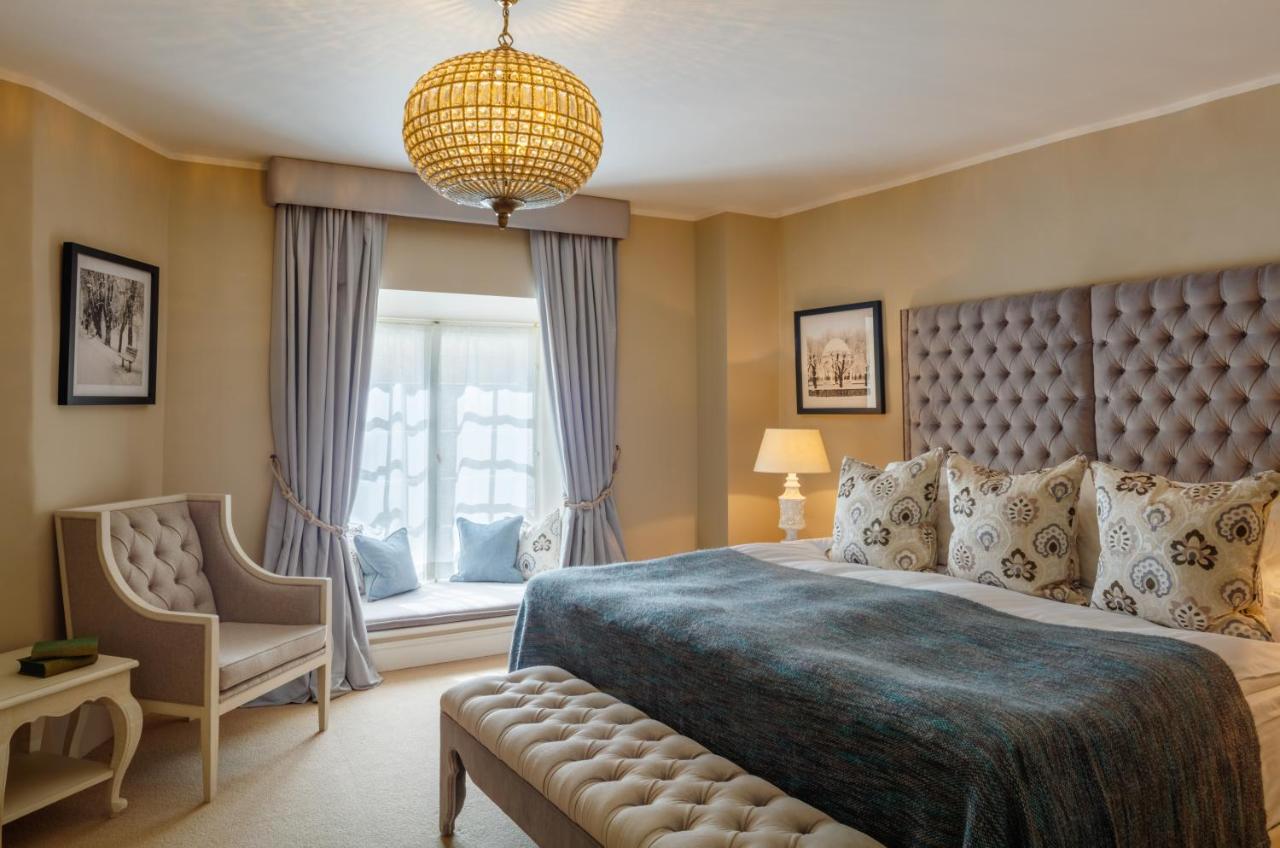
If you want to make your 2 days in Tallinn unforgettable, Schlössle Hotel is the place to be. Renovated in 2016, this stylish 5-star hotel is housed in 13th-century buildings in the heart of Tallinn’s Old Town.
The wonderful atmosphere, the antique furniture, and the sauna are just some of the reasons that make Schlössle Hotel a unique place to stay for your Tallinn vacation.
Mid-Range: Citybox Tallinn City Center

Citybox Tallinn City Center is a very modern hotel that is the perfect location to visit Tallinn without giving up any comfort and without squandering your finances.
Located between the port and the Old Town, it’s perfect if you have three or two days in Tallinn.

Affordable: St.Olav Hotel

St.Olav Hotel is the perfect place to explore Tallinn if you are on a budget. The hotel is housed in an ancient palace, it offers many rooms and can keep a competitive price.
The rooms are basic but nicely decorated and the location inside the Old Town is perfect for spending a long weekend in Tallinn.

Riga, the capital of Latvia, is a city that seamlessly intertwines its medieval past with a more cosmopolitan present. The Old Town, a UNESCO World Heritage site, is a picturesque maze of narrow streets, medieval buildings, and charming squares.
Riga’s rich architectural heritage is particularly notable in the Art Nouveau district, where intricate facades showcase the city’s artistic flair. The vibrant Central Market, housed in former Zeppelin hangars, is another must-visit place in Riga.
It is your next stop on Baltic States travel itinerary and you can choose whether to spend 2 or 3 days in Riga. I am originally from Riga, so want to share it through the eyes of a local and help you discover beyond the main attractions, so I suggest you plan 3 days, but that is up to you.
RELATED : 100 Photos to Inspire You to Visit Riga, Latvia
2 days in Riga itinerary

Day 1 in Riga
- Morning: Mārtiņa Beķereja, Latvian National Opera, Freedom Monument, Bastejkalna Park, Livu Square, The Swedish Gate, Three Brothers, Latvian Museum of Architecture.
- Lunch: Ezītis miglā or Petergailis.
- Afternoon: Our Lady of Sorrows Church and St. Saviour’s Anglican Church, Riga Cathedral, DOM Restaurant , House of the Black Heads, views from the St. Peter’s Church.
- Dinner: Salve Restaurant, ALA Pagrabs.
Day 2 in Riga
- Morning: Riga Central Market, Latvian Academy of Sciences .
- Lunch: Lido (either Dzirnavu or LIDO Atpūtas centrs).
- Afternoon: Riga Nativity of Christ Orthodox Cathedral, Corner House or Latvian National Museum Of Art, Art Nouveau district.
- Dinner: Riviera or Lidojošā varde, Cloud Nine.
In order to get a better look at this itinerary, please read this travel guide for 3 days in Riga . It covers the following day but you can easily turn into a day trip if you prefer. Also, you will find a lot of useful travel tips for visiting Riga.
Optional extra day in Riga

If you still want to explore Riga and discover all the hidden gems in the Latvian capital, here is a list of places you don’t want to miss.
Head to the left side of Daugava and enjoy the views on your back. I suggest you cross Vanšu Bridge and make a stop at the Vanšu Bridge Viewpoint.
After head to Agenskalns where you will find a vibrant market and the picturesque Holy Trinity Church located in Meža iela 2. Nearby, you will also find the National Library of Latvia, which is a gem of modern architecture.
You can end your day with a sunset over Riga panorama and visit AB Dambis for some of the best views of Riga.
If you prefer spending a day in nature, the Ethnographic Open-Air Museum of Latvia is a good idea to take a glimpse at the old Latvian way of life. Another hot spot to enjoy some sunny days in Latvia is Mežaparks. This beautiful modern park is one of the most loved by the locals.
If these locations don’t excite you, feel free to skip to the next day.
Day 4 – pick the day trip from Riga

Just like Tallinn, Riga offers some amazing day trip options because of its small size and convenient location. While Tallinn day trips are great for nature lovers, Latvia offers some great cityscapes to historical towns, and charming villages.
Click here to discover the best day trips from Riga and decide the next stop of your Baltic States travel itinerary. This article features some of the best cities to visit in the Baltics, however, it includes some great spots in nature as well.
Where to stay in Riga?
Riga is not a big city and you shouldn’t have any problems moving around, but there are some tips to make your weekend in Riga even more sufficient.
The old town (Vecrīga) is the most beautiful area of Riga. The city center (Centrs) is a big area in the heart of Riga, but I don’t advise you to go anywhere after Lāčplēša Street. The area near the Freedom Monument is great and very practical.
If you are looking at the map, you see that Riga is divided by a river called Daugava. And it might look close, but I don’t advise staying on the other side of Daugava. It can be trafficked and not very pleasant to walk.
Luxury: Grand Hotel Kempinski Riga

If you want to have a luxurious and romantic escape during your Baltic vacation, this is your place to go.
Grand Hotel Kempinski is one of the most popular 5-star hotels in Riga and it offers phenomenal spa facilities to make your stay unforgettable. The location in the Old Town makes it perfect to discover the best photo spots in Riga.
Boutique: Grand Poet Hotel and SPA by Semarah

Grand Poet Hotel is the best place to stay in Riga with style. This fabulous five-star hotel in Riga’s old town is the best place for relaxing and sightseeing. In fact, guests have free access to the fitness center and spa zone.
The wellness center includes a pool, sauna, hot tub, and hammam. Various massages are offered at a surcharge.
Mid-range: Wellton Centrum Hotel & SPA

Wellton stands at the entrance of the old town, in one of the most picturesque streets in the Latvian capital. The hotel is stylish and also offers a great spa to relax after a day visiting Riga.
If you want to have a quality stay, at a reasonable price this is the right spot for you.
Affordable: Allure Rooms & Coffee

If you are looking for cheap accommodation while you visit Riga without giving up the quality, look no further.
This lovely guest house is conveniently located in the old town and it even offers a romantic view of Riga. It’s the perfect place to pick to get the best of your time in Riga at an affordable price.

Vilnius, the southernmost capital, is a city of contrasts and layers. Its Old Town, a UNESCO World Heritage site, unfolds with narrow alleys, baroque churches, and the iconic Gediminas’ Tower overlooking the city.
Beyond its historical treasures, Vilnius is a city that embraces modernity while cherishing its cultural roots. The Užupis district, often referred to as the “Republic of Užupis,” is a bohemian neighborhood that celebrates art, creativity, and free expression.
The culinary scene in Vilnius is a delightful reflection of the city’s diverse influences and traditions. From traditional Lithuanian dishes like “cepelinai” and “kugelis” to international cuisine, Vilnius offers a variety of dining experiences to suit every palate.
Just like the other Baltic capitals, you will need 2 days to see the best in Vilnius, and here are some of the best places that you absolutely have to see.
2 days in Vilnius itinerary

Day 1 in Vilnius
- Morning: Gates of Dawn, Orthodox Church of the Holy Spirit, Town Hall Square, Literatų g.- St. Anne’s Church.
- Lunch: Etno Dvaras.
- Afternoon: St. John the Baptist and St. John the Apostle and Evangelist Church, Cathedral Square, Gediminas Castle Tower.
- Dinner: Lokys or Senoji trobelė.
Day 2 in Vilnius
- Morning: Uzpis, Biržų duona, Subačiaus apžvalgos aikštelė.
- Lunch: Paupio Turgus.
- Afternoon: Church of Sts. Peter and Paul, Three Crosses Monument.
- Dinner: Ertlio Namas or Amatininkų Užeiga.
Day 3 – day trip from Vilnius to Trakai

While there are many beautiful sights around Lithuania, a day trip from Vilnius to Trakai is a must during your Baltic itinerary for 10 days. It is a wonderful choice to explore the historical and picturesque Trakai Castle and enjoy the scenic surroundings. Trust me, you don’t want to miss it.
The centerpiece of Trakai is the majestic Trakai Island Castle, a masterpiece of medieval architecture set on an island in Lake Galve. This iconic fortress serves as the residence of the Grand Dukes of Lithuania and a symbol of the country’s medieval heritage.
Beyond the castle, Trakai town itself is a quaint and welcoming place. Visitors can stroll the charming streets, lined with traditional wooden houses, and perhaps stop in local cafes to try traditional Lithuanian delicacies.
Užutrakis Manor Estate, located near Trakai, further enriches the region’s appeal. The estate, with its elegant mansion and beautifully landscaped gardens, offers a glimpse into the life of Lithuania’s nobility. The expansive park, designed by renowned French and Italian architects, provides a peaceful retreat.
How to reach Trakai from Vilnius?
You can easily reach Trakai by using public transport since the buses regularly operate between Vilnius and Trakai. The journey takes approximately 40 minutes. The ticket will cost you 3 euro and you can buy it at the station.
Another option is to train. Trains depart regularly from Vilnius Railway Station, and the journey takes around 30 minutes. The price is 2.80 euros and you can purchase your ticket at the station.
Taxi is also a popular choice to visit Trakai from Vilnius if you have limited time. The ride will cost you approximately 20 euros depending on the traffic.
Finally, there are plenty of companies that organize daily trips from Vilnius to Trakai. This one is one of the best-rated tours and it offers a professional guide to learn more about Trakai.
Where to stay in Vilnius?
Here is a list of some of the best hotels in Vilnius for every budget and style. If you don’t like any of these options, I highly recommend that you pick a hotel near Old Town, so you can make the most of your limited time in the Lithuanian capital.
Luxury: Relais & Châteaux Stikliai Hotel

If you want to make your stay in Vilnius special, book Relais & Châteaux Stikliai Hotel. This 5-star hotel in Vilnius is housed in a historic building with Baroque and Gothic features and is located in the heart of the Lithuanian capital. The hotel boasts a sauna, an indoor pool, and a fitness center.
Mid-range: Courtyard by Marriott Vilnius City Center

If you are looking for quality accommodation without squandering your finances, make sure you check the Courtyard by Marriott Vilnius City Center. Its prime location and modern & stylish rooms are perfect for exploring Vilnius in style. The rich breakfast is also worth mentioning.
Affordable: Domus Maria

Domus Maria is definitely the best budget choice to stay in Vilnius. It is located in a former monastery in the Old Town and it’s perfect to visit Vilnius city on foot. The rooms are simple but cozy and welcoming and the value for the money is simply unbeatable.
More things that you should know before visiting the Baltics
What language do they speak in the baltics.

The Baltic countries each have their own distinct languages.
The official language of Estonia is Estonian, which belongs to the Finno-Ugric branch of the Uralic language family and it is closely related to Finnish. The official language of Latvia is Latvian, a Baltic language that is part of the Indo-European language family. Lithuanian is the official language of Lithuania. It is a Baltic language and one of the oldest languages in the Indo-European language family that is still spoken.
As a Latvian, I can say that all these languages are very different and unfortunately, we are not able to understand each other. There are some similarities between Latvian and Lithuanian, but nothing remotely close to having an actual conversation.
As a foreigner visiting the Baltics, you will notice that the older generation speaks fluent Russian and the younger generation can communicate pretty well in English. I am sure you won’t have any problems with the language during your trip, but I recommend you learn some basic phrases and surprise the locals.
What is the local food in the Baltics?

The culinary scene in the Baltic countries is a delightful fusion of traditional flavors, influenced by the region’s history, climate, and agricultural practices. Each country has its unique dishes and culinary traditions, however, you will notice a lot of similarities.
One notable dish of Estonian cuisine is “Mulgipuder”. It is a dish of mashed potatoes and groats and is a hearty staple, often served with bacon. Fish, particularly herring, plays a significant role, and “kiluvoileib,” an open-faced sandwich with smoked or marinated herring, is a popular choice.
Vana Tallinn is the most famous local drink and a great souvenir to bring home.
While in Latvia you should try “grey peas with bacon”, which is a traditional Latvian dish. “Latvian rye bread” is a staple, and garlic bread can be found in every local restaurant. But layered rye bread is a popular dessert that you will need to try.
Sklandrausis is a vegetable pie (or tart) made from rye pastry that is filled with a mixture of carrots and potatoes and eaten cold. Latvia’s proximity to the Baltic Sea influences its seafood offerings, with smoked fish, especially sprats, being a common delicacy.
And just like Vana Tallinn, Riga Black Balsam is a must-try when visiting Latvia.
Lithuanian national dish is “Cepelinai” – large potato dumplings stuffed with meat, curd, or mushrooms. “Kugelis,” a potato pudding baked with bacon, is a beloved comfort food. “Šaltibarščiai,” a cold beet soup, is a refreshing and vibrant option, especially during the warmer months.
RELATED : Where to Eat in Riga Like a Local? 10 Local Restaurants in Riga, Latvia
What is the local currency in the Baltics?

While every Baltic country used to have its own currency, nowadays, it is part of the Eurozone and the local currency in the Baltics is Euro.
Further reading for 10-day Baltic itinerary

Photography Guide: 15 Best Photo Spots in Tallinn, Estonia

20 Best Photo Spots in Riga, Latvia + Photography Tips From a Local

10 Best Day Trips from Riga, Latvia (Top Guided Tours Included!)
Plan your trip to Estonia:
- 10 Best Day Trips from Tallinn, Estonia + Top Rated Tours
- Complete Tallinn Itinerary: How to Spend 2 days in Tallinn
- How to Plan a Day Trip to Helsinki from Tallinn via Ferry
- 40 Photos to Inspire You to Visit Tallinn, Estonia
Get ready to explore Latvia:
- 100 Photos to Inspire You to Visit Riga, Latvia
- Riga Art Nouveau Guide: Where to Find Art Nouveau in Riga?
- 10 Amazing Coffee Shops and Best Cafes in Riga
- How to Spend 3 days in Riga + Riga Itinerary and Tips From a Local
- Where to Eat in Riga Like a Local? 10 Local Restaurants in Riga, Latvia
- Weekend in Riga: Perfect 2 Day Riga Itinerary and Tips From a Local
- Why You Should Visit Latvia in Autumn?
Or read more about: Riga | Latvia | Tallinn | Estonia | Baltics
Other useful tips for visiting the Baltics
🏠 Need a place to stay? Browse Booking or Agoda 💃 How about fun experiences? GetYourGuide and Viator have it all 🚗 Considering renting a car? Use Rentalcars ✈️ Looking for the best flight deals? Check WayAway 🔒 Don’t forget about travel insurance from HeyMondo
In conclusion…

This is the end up the ultimate guide to seeing the Baltic in 10 days and I am sure that you have a great vision of how to plan your trip to the Baltic countries.
I would love to hear your thoughts, so if you have any feedback or additional tips, leave a comment below. Also, check out my Instagram for regular travel videos and travel inspiration. Or explore other destinations on this travel blog.
Pin it and save 10-day Baltic Itinerary!

Leave a Reply Cancel reply
Your email address will not be published. Required fields are marked *
Terms and Conditions - Privacy Policy

The Perfect Baltics Travel Itinerary: Lithuania, Latvia, Estonia, and Finland
10 Comments
- Last Updated On: November 21, 2023
The Baltics were always high on my list of places to visit in Europe. It’s a lesser traveled (although rapidly changing), cheaper, and equally as beautiful area of Northern Europe. The history of this region is very unique As the Baltic countries are small and neighbor each other, I always wanted to do the countries at the same time.
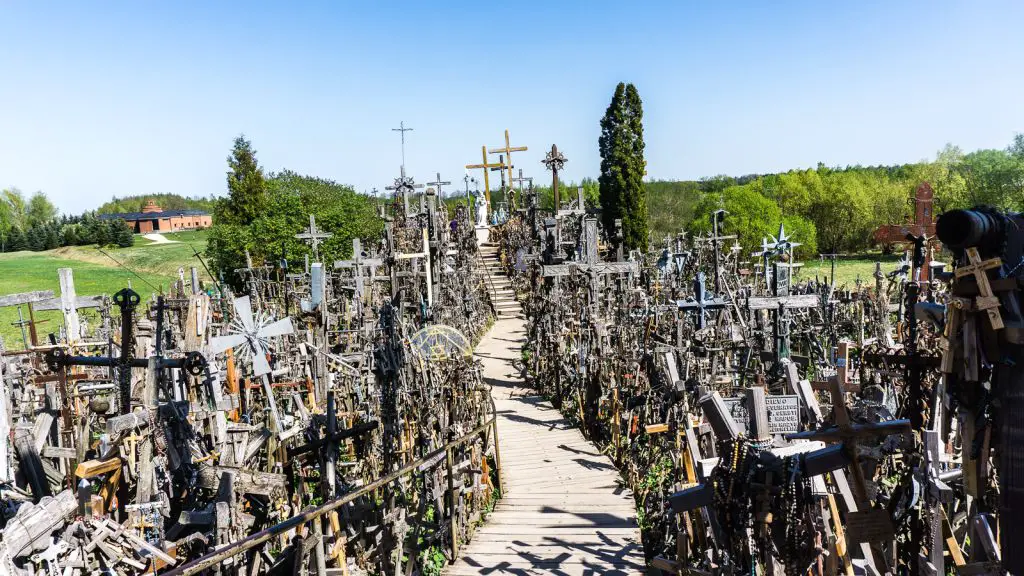
The Baltics comprises three countries: Lithuania, Latvia, and Estonia. Finland is part of Scandinavia but for the purposes of this itinerary, it is part of the Baltics as there is an easy ferry connection between Tallinn and Helsinki so I couldn’t pass up adding this to my trip! This itinerary is for anyone that has roughly 8-10 days to visit this beautiful area of Europe.
Essentially, I allocated 2-3 nights per city which is enough in my opinion. If you have less days, this itinerary is also possible depending on which city you want to spend less time in. I also give ideas for those that have more time as there are so many charming little cities that are well worth the stop as well.
Where I went in the Baltics
I visited the Baltics for just over a week. As it is Europe, most of the sightseeing is done in the cities (with a few things to see in between). I went in end of April, beginning of May which was great because I got quite lucky with the weather. It was record temperatures in Riga and I could wear shorts for most of my trip. However, as this area is not know for its warm weather, expect volatile weather pretty much all throughout the year.
The summer months of course are most ideal as you get super long days and warmer weather but then you also have far more tourists. Even when visiting in April/May, the sun would set after 9pm and the temperature was a very comfortable 20-25 degrees while I was there.
In total, this itinerary is for anyone that has 7-10 days. Of course this itinerary can be shortened or lengthened depending on your schedule. I visited the following areas on this itinerary
- Vilnius, Lithuania
- Kaunas, Lithuania
- Hill of Crosses, Lithuania
- Riga, Latvia
- Tallinn, Estonia
- Helsinki, Finland
If these places ring a bell and sound like the places you want to visit, this is the perfect itinerary for you! Also, the Baltics can easily be combined with other countries like Poland to the south , Belarus, or Russia where you can easily combine St. Petersburg and Moscow. Of course, make sure you have your Russian visa before visiting.
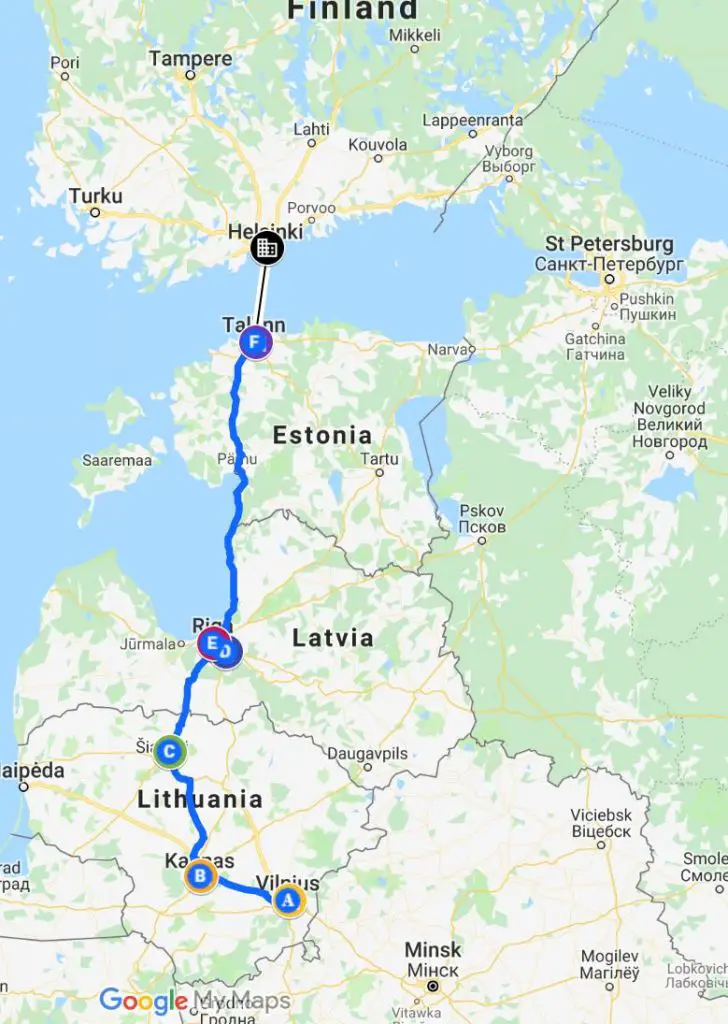
Getting around the Baltics
The Baltics are small countries and getting around the countries is easy. There are numerous ways to get from one capital to the other and almost all these options are quite affordable. The Baltics are cheaper than Western Europe as they were under Soviet occupation less than 30 years ago, but it is not as cheap as say the Balkans .
Most people that I met got around the Balkans with Bus. There is solid bus service that connects Vilnius to Riga to Estonia and vice versa. There are also numerous bus companies that you can choose from but I mainly went with LuxExpress as they have a good website online. I’d definitely recommend booking your bus tickets a month in advance if possible. I checked bus tickets for same day departure at the Riga bus station and they were going for €20-30 whereas buying them in advance was under €10 euros.
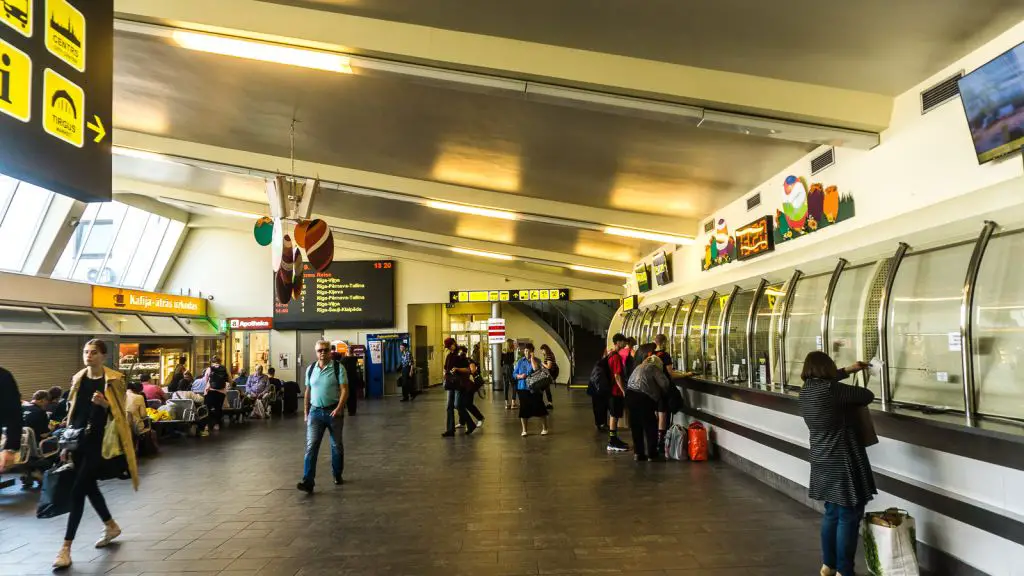
The bus ride is 4-5 hours between Lithuania and Riga, as well as to Tallinn.
Flying with AirBaltic
Air Baltic is the national airline of Latvia (and de factor airlines of the other Baltic countries). They have multiple daily flights between Vilnius, Riga, Tallinn, Helsinki in all different combinations. Prices are also very cheap for under €50 one way. This is especially useful if you’re flying into Riga for example, going by land to Vilnius, and then you can fly AirBaltic from Vilnius to Tallinn and not have to take a 8-9 hour bus ride.
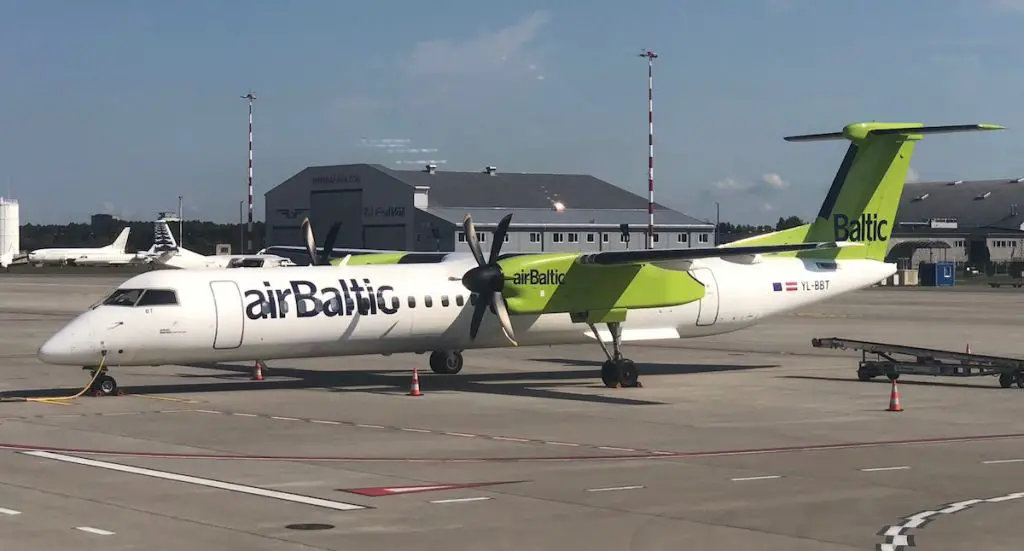
Getting around within the cities
All of the cities are very small and if you’re in the Old Town, you won’t need anything besides walking. However, if you need to go to the airport or some further away destination like the Marine Museum in Tallinn, then I can recommend using the ride share apps. Sure the public transport is fantastic in these cities but if you’re multiple people, ride sharing apps will be even cheaper than taking the metro. I’m a huge fan of ride sharing apps in foreign countries because it makes sure you don’t get ripped off.
Bolt (formerly Taxify) is a startup out of Tallinn that has a major presence in the Baltics. I used it for all my airport transfers and a few other rides and it is super cheap. From Vilnius to the airport, it was 20 minutes and only €4-6. Whatever you do, do not take the official taxi services because it is many times more expensive. For example, the metered taxis in Riga charged almost €30 for a transfer to the city when Bolt was €6!
There is also Uber in the Baltics, but not in Riga (yet).
Airbnb accommodations
Of course there are plenty of very cheap hostels that you can stay in, but if you are two or more people and want some privacy, the Airbnb options in the Baltics is fantastic. We stayed in huge and centrally located penthouse style accommodations in Vilnius and Riga for €100/night or so.
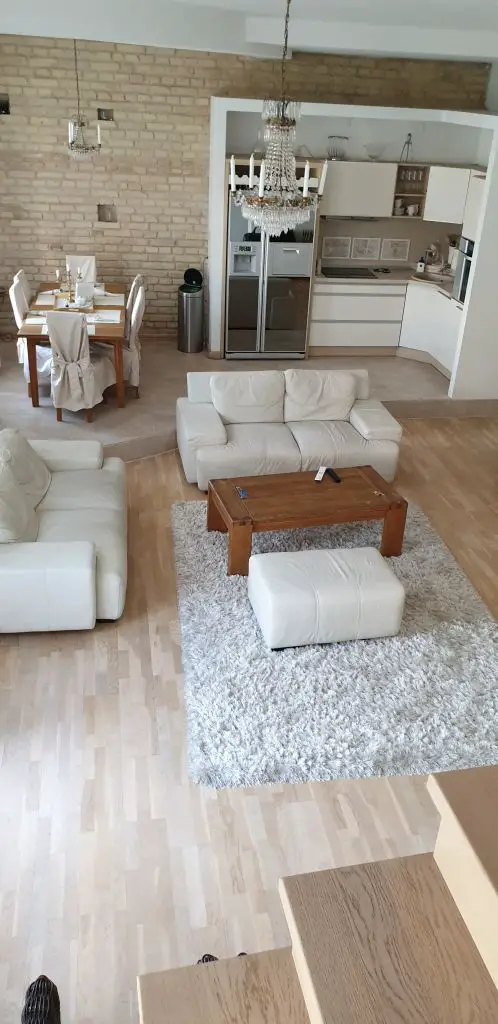
Full Itinerary
This itinerary starts in Vilnius, Lithuania. Generally, most people start in Vilnius and work their way north to Helsinki, or vice versa. There is really no advantages/disadvantages to where you start, just a matter of which flights make the most sense at the time of travel.
I started in Vilnius where I spent two nights exploring the Old Town. From Vilnius, I took a full day tour from Vilnius to Riga that stopped at various locations in the countryside including Kaunas, and the Hill of Crosses (super cool). From Riga, I spent another 3 nights exploring the capital of Latvia. I took a day trip to Jurmala which is a beachside town about 30 minutes away. From Riga, I took a bus to Tallinn, Estonia for 2 nights. Finally, I took the ferry from Tallinn to Helsinki where I spent 2 quick nights before flying home from Helsinki.
Compared to other destinations like Peru and Bolivia , or Guatemala and Belize , traveling around Europe is quite simple so this itinerary should be very easy to follow!
Day 1-3: Vilnius, Lithuania
The itinerary starts in Vilnius, Lithuania! Like I mentioned before, if you’re landing at the airport, skip the taxis entirely and go straight for Bolt or Uber as it should be no more than €6 for a trip to the old town. Otherwise take the bus which is also quick for just €1.
Vilnius is perhaps of the least known capital cities in Europe, but it won’t be for much longer. It’s old town is a Unesco protected heritage site and boasts an endless maze of cobblestone streets, cafes, restaurants, museums, and bars. It is also adorned with beautiful baroque and neoclassical buildings with colorful stucco rooftops.
What to do in Vilnius
As I like to do for all my trips around Europe, I always start with the free walking tour in a new city. This always gives me a good flavor and the highlights of the city that I can choose to re-visit later on in the trip. There are a few free walking tours in the city leaving at various times throughout the day. We visited all the highlights of the city and got in depth history lessons as well.
It seems that the three countries share similar history in that they were all pagan at one point before being forcefully converted in some degree by Germanic missionaries in the medieval ages. In more recent history, all three countries were controlled by the Nazis during world war 2 before succumbing to generations of Russian rule in the Soviet Union. One of the most interesting things I learnt was that the Baltic countries cannot understand each other. Latvian and Lithuanian are similar but not enough where they can hold a conversation, while Estonian is completely different and more similar to Finnish but also not similar enough to make conversation.
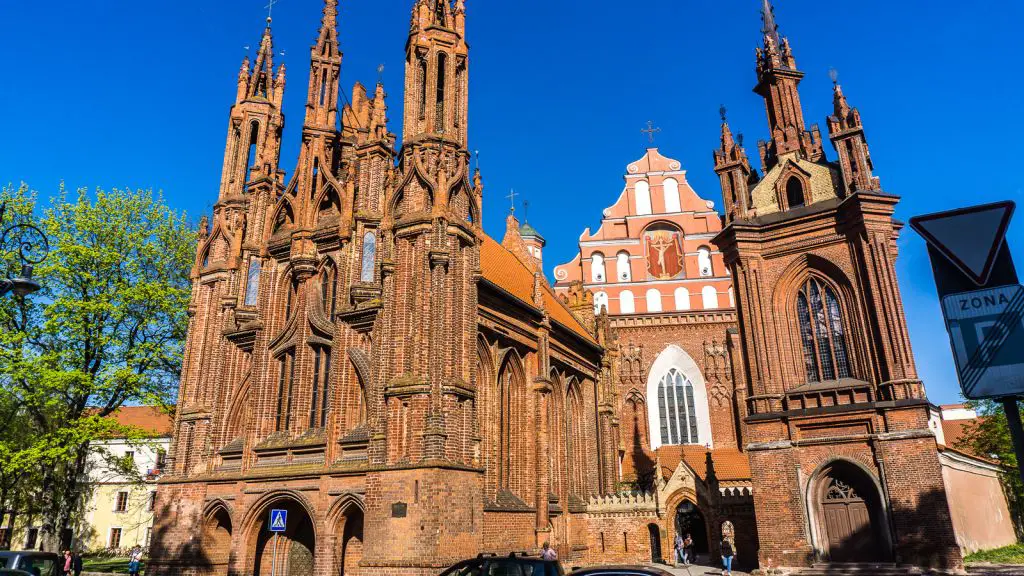
For views of the city, visit the Belltower of St. John’s Church
For the best views of the city, go to the Belltower of the St. John’s Church. It is just a €3 entrance fee and there is an elevator taking you to the very top. The belltower offers panoramic views of the old town where you can see the hill of three crosses and the Gediminas Castle. I prefer this view to the one at the castle because the belltower is in the city center giving you better views Vilnius’ red rooftops.
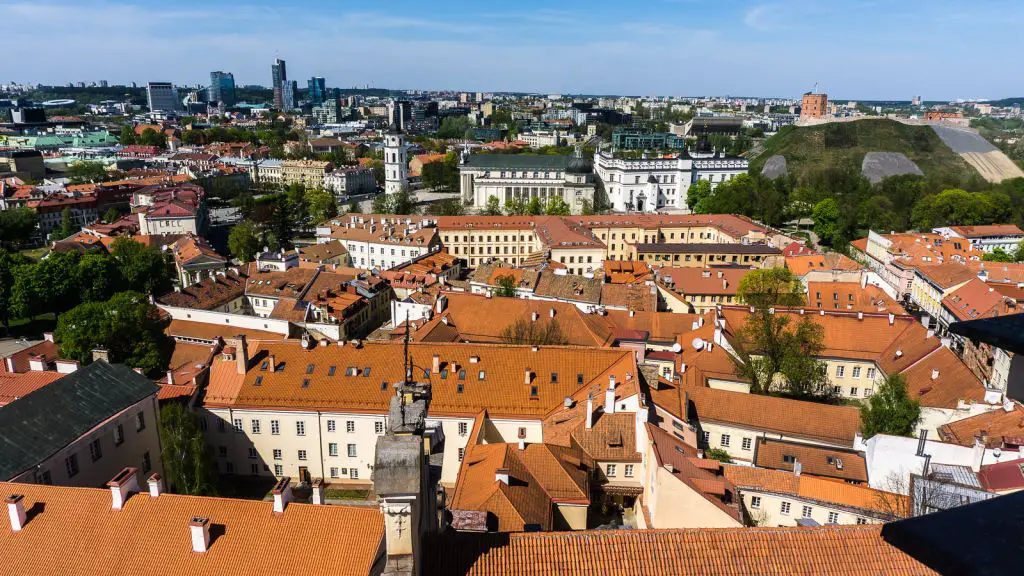
Vilnius is a beautiful city on the ground. The buildings are all in fantastic condition and the architecture of beautiful baroque variety. From the air, you can see that all the buildings are adorned with orange stucco rooftops that make it look like a Baltic version of Dubrovnik . The church also doesn’t see that many tourists so we had the entire viewing platform to ourselves for much of the day.
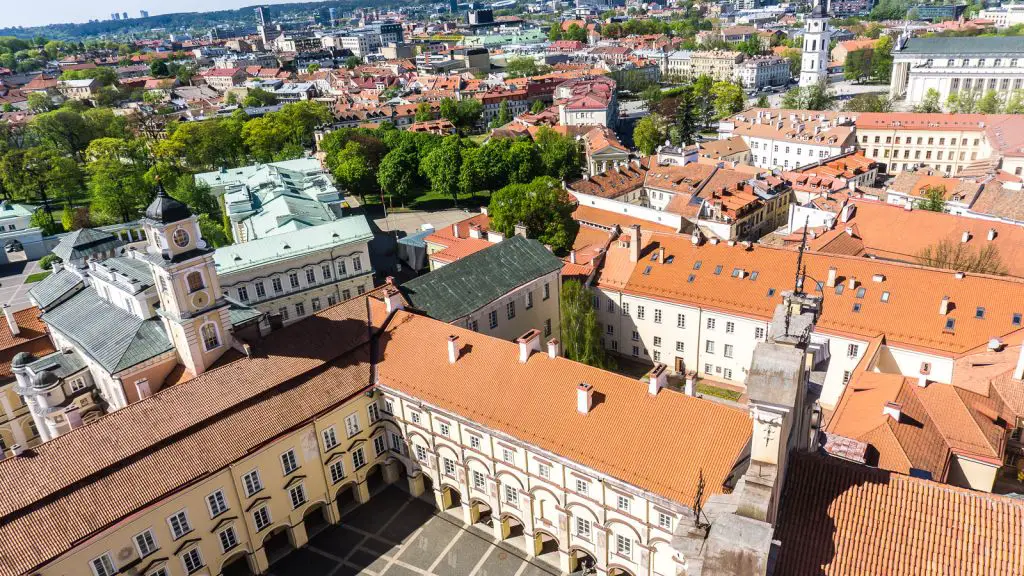
Visit the neighborhood of Uzupis
Užupis, a cool and edgy neighbourhood on the wrong side of the Vilnia River, declared itself an independent republic on April 1, 1997. Say what you will about autonomous hipsters, but the postcode is awash with trendy bars, shops (conceptual shoe shop, anyone?) and restaurants. Make sure you have a pint in the country’s “parliament” by the river, where the state’s constitution is on display.
Eat some Lithuanian Food
The Baltics are not known for their culinary prowess and I’m here to say that you won’t be wowed by the food but there are a few items that you must try. My favorite thing that I had in the Baltics is also the most simplest, fried rye bread with cheese sauce or kepta duona in Lithuanian. It doesn’t sound that appetizing but this is the ultimate bar food after a good chicken wing. I’m not sure why this hasn’t been adopted anywhere else because it would be incredibly successful. If you don’t eat this here, don’t worry as they have it all over the Baltics.

Another food I enjoyed was the cepelinai, or stuffed potato dumplings. These are special soft potatoes that have been boiled and stuffed with ground meat covered with a sour cream and bacon sauce. It is tasty, incredibly filling, and certainly not healthy.
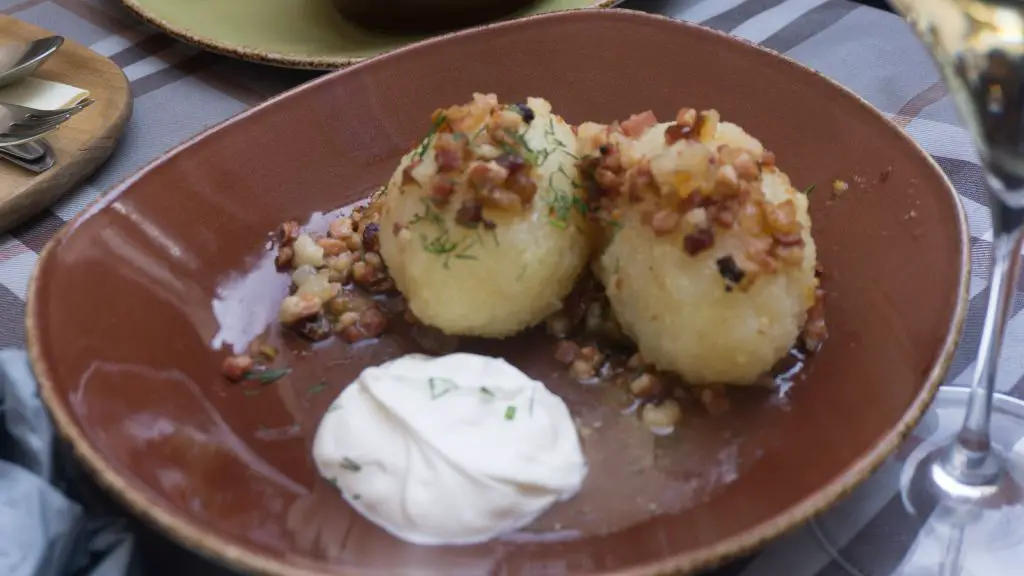
Day 4: Day Trip from Vilnius to Riga with Riga Travellers
Day 4 is about getting from Vilnius to Riga. Most people will elect for the bus services between the two cities but I stumbled upon a much more interesting and innovative concept.
Riga Travellers started out by doing small tours around Riga before coming up with the idea of doing a full day trip between Riga and Vilnius and stopping at the numerous sights in between. There are a few very cool things to see in the Lithuanian countryside that you would need to travel the whole day for anyway so why not see those things and end up in the next destination of the itinerary in Riga!
The total cost of the trip was €65 which is considerably more than the regular bus but I think it is well worth it. Our guide was very engaging and had a lot to tell us about the culture of the two countries. All in all, we made 5 stops along the way and it was about 11-12 hours in total. We left at 9am and arrived just before 9pm. You can also do this trip in reverse, Riga to Vilnius.
They also offer Riga to Tallinn tours (and vice versa) so this is a great way to get around the Baltics!
Trakai Castle
Trakai Castle is the first stop of the day. Located on Lake Galve, the Trakai castle was built by Lithuanian Dukes in the 14th century and was used as a residence. It is the only island castle in Eastern Europe. Nowadays it is a big tourist attraction and serves as perhaps one of the most epic settings for summer music festivals. If you have more time in Vilnius, I would recommend coming here on your own for sunset as I hear the views are spectacular.
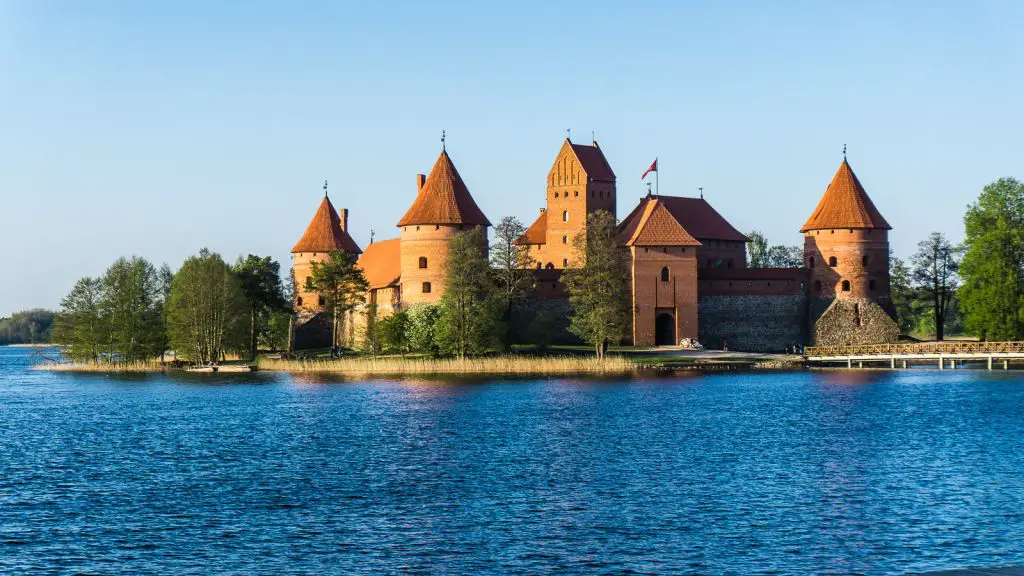
Kaunas City
Kaunas, Lithuania’s second biggest city was the second stop fo the day. During the past couple of years, Kaunas has invested heavily into tourism and infrastructure making it an attractive city for all travelers. The old town is much smaller than Vilnius but boasts the same beautiful buildings and cobblestone streets.
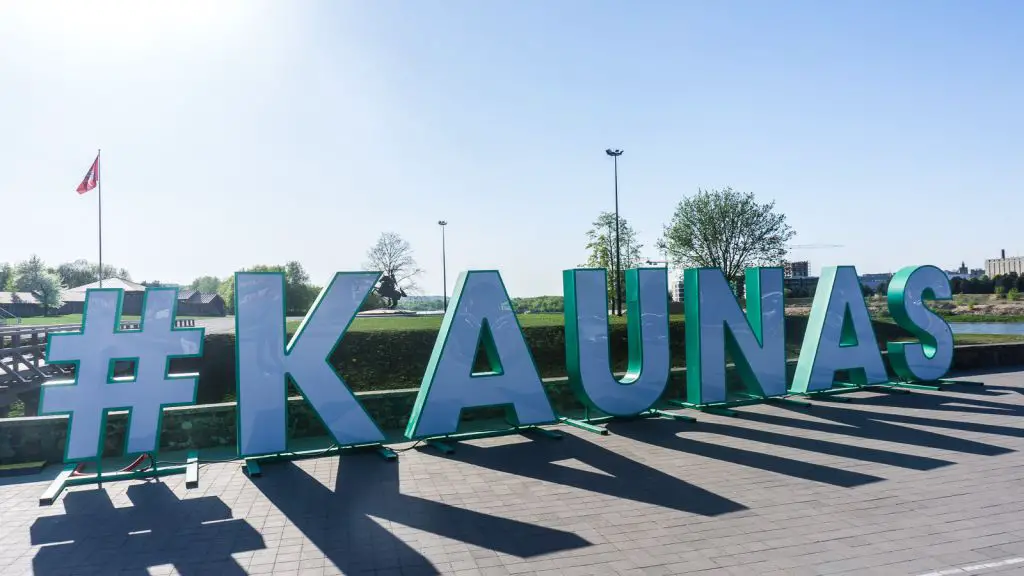
We didn’t have much time here unfortunately and if I had more time, I would definitely have stayed here for a night. There are loads of craft breweries in Kaunas producing delicious local brews that I wanted to try.
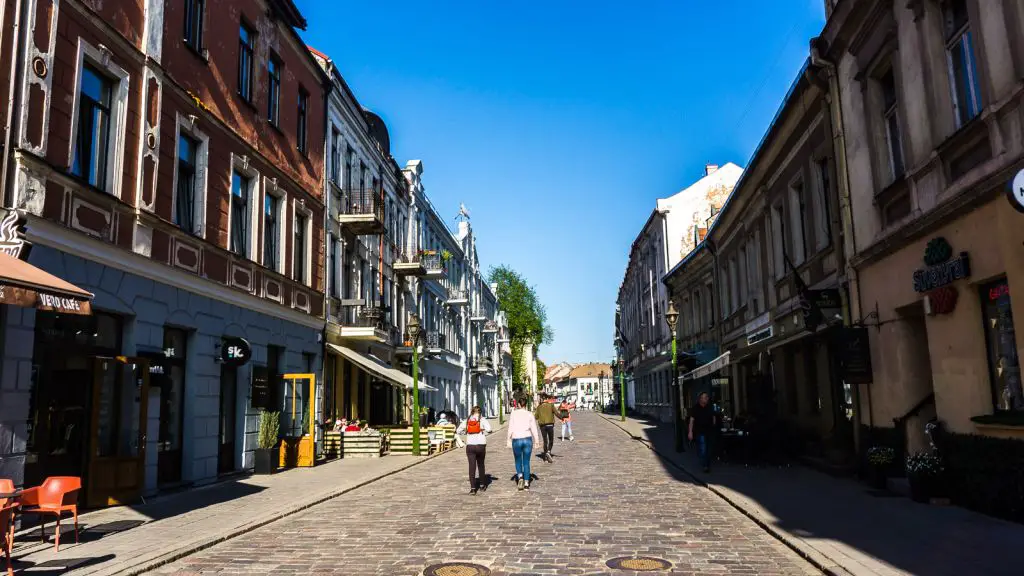
Hill of Crosses
The Hill of Crosses was next on the list after lunch. A Christian pilgrimage site with hundreds of thousands of wooden crosses erected on a small hill in Lithuania. The crosses start appearing as a protest to Russian occupation of Lithuanian lands. Families would plant crosses as a way to remember those sent to Siberia to their inevitable deaths. During soviet occupation, religion was of course not a thing so they bulldozed the site on numerous occasions and put soldiers to guard the site from future crosses.

Lithuanians continued sneaking in and planting rogue crosses until it was bulldozed again. And again. Nowadays, the Russians are no longer there and the amount of crosses have increased to the point where all walks of life are remembered here. It is supremely impressive to look at. I had no idea that this was on the itinerary and was completely wow’d at the sheer amount of crosses and the attention to detail of many of them. This was probably the highlight of the day in my opinion. We also visited on a sunny day but I can definitely see this place being super creepy on dark cloudy winter day. In fact, it would be the perfect place for a horror movie setting!
Rundale Castle
The next stop was the Rundale Castle, crafted by one of Lithuania’s dukes. It’s a nice palace with a big garden but if you’ve been to the Schonbrunn Palace in Austria , or the Palace of Versailles in France, then this will just look like any other palace.

Salaspils Soviet Memorial
The Salaspils Memorial Ensemble was erected where an extended police prison and labour correctional camp of Nazi Germany was located from 1941 to 1945. The memorial consists of a museum housed in a large open-air rectangular structure, and many statues. These statues showcase the struggle of the Latvian people, as well as the stoic might of the Soviet liberators. I found the statues to be a big creepy but overall, the memorial was very unique.
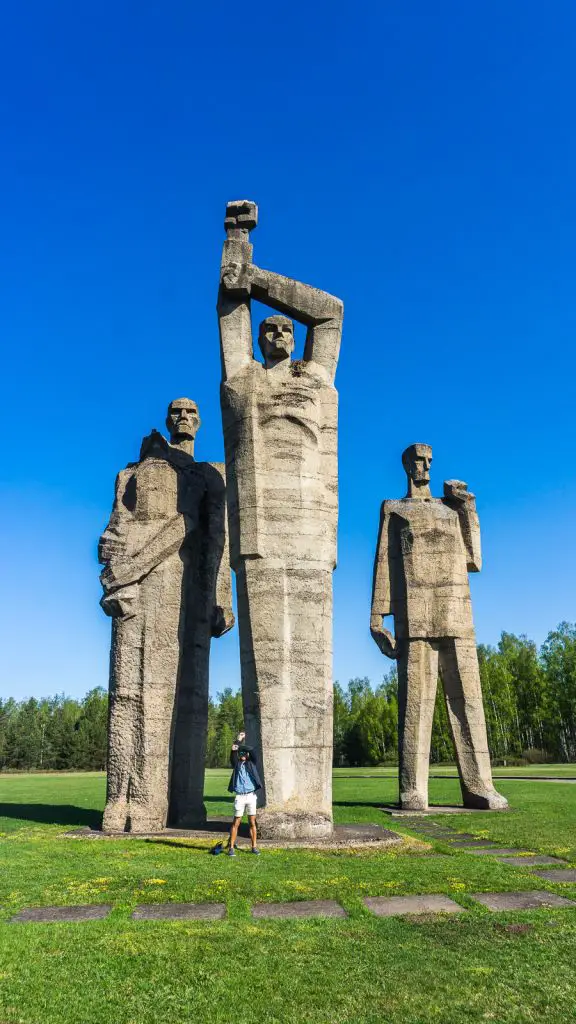
The museum inside the wooden building is also quite interesting as it shows the conditions that people had to endure here. A grim view for sure but a reminder of what much of Europe had to endure in the 1940s.
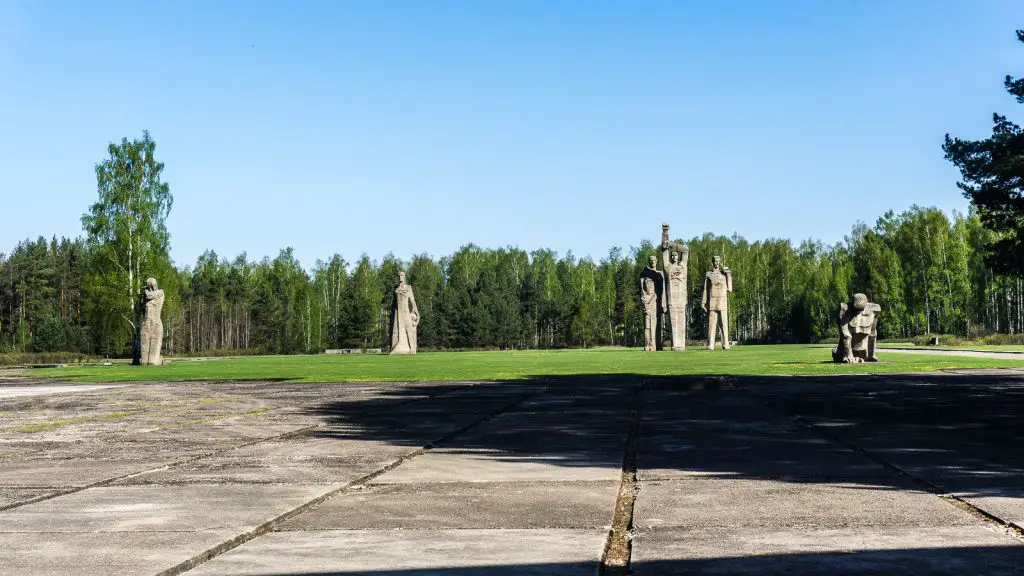
After this last memorial, we were only about 20 minutes from Riga where we ended our tour just before 9pm. Just in time for dinner in the city.
Day 4-6: Riga, Latvia
The next part of the itinerary centers around Riga. With around 700,000 people, Riga is the largest city in the Baltics. In its 800 years of turbulent history, everyone from German knights to Swedish kings and Soviet commissars have left their footprints, and today Latvia’s capital is an exciting European metropolis at the crossroads of eastern and northern Europe.
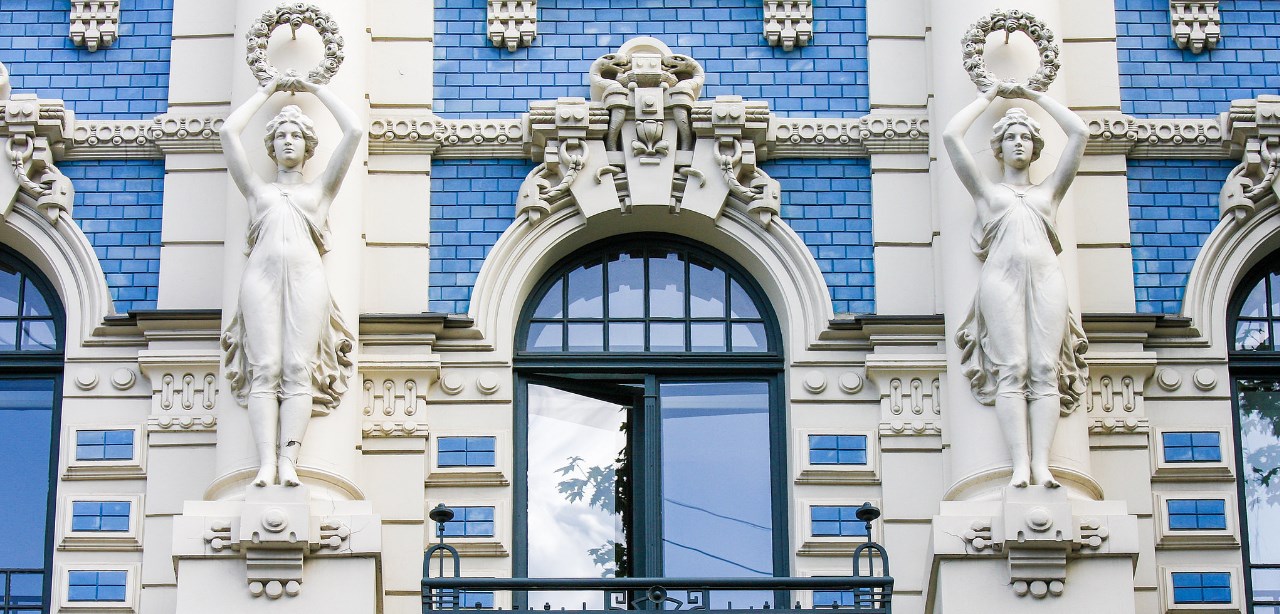
Riga is a UNESCO World Heritage site of cobblestones and breathtaking river views, as well as Europe’s Wifi capital with almost 1,000 spots to get online for free.
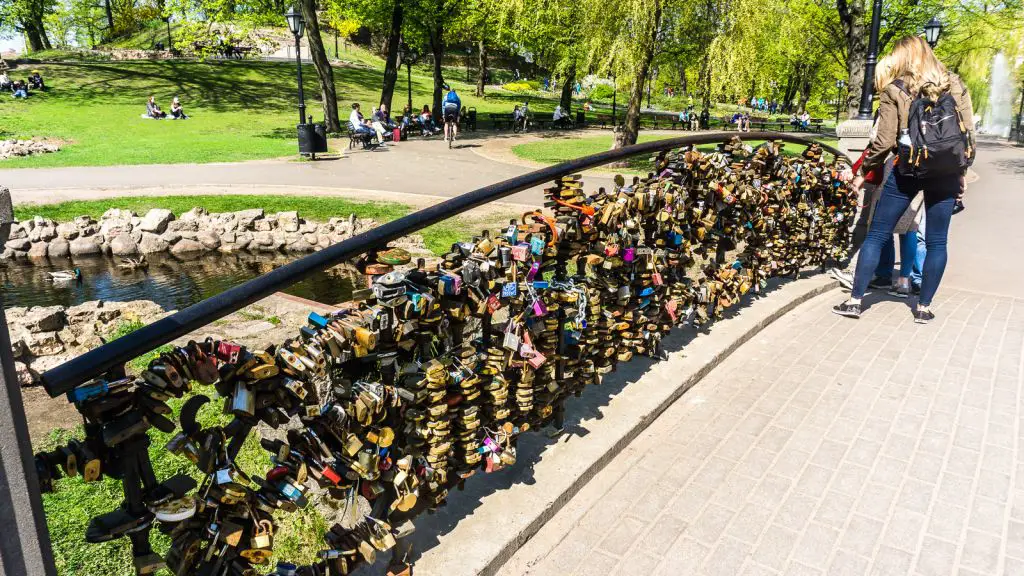
Walking Tour of Riga
As always, I sought out the free walking tour which is offered by multiple companies at multiple times throughout the day. Our guide was a big quirky taking us too way too many Guild houses that were the meeting points of Latvian fisherman in the past. Nevertheless, we visited all the main churches and buildings of Latvia, and received a lot of history lessons along the way.
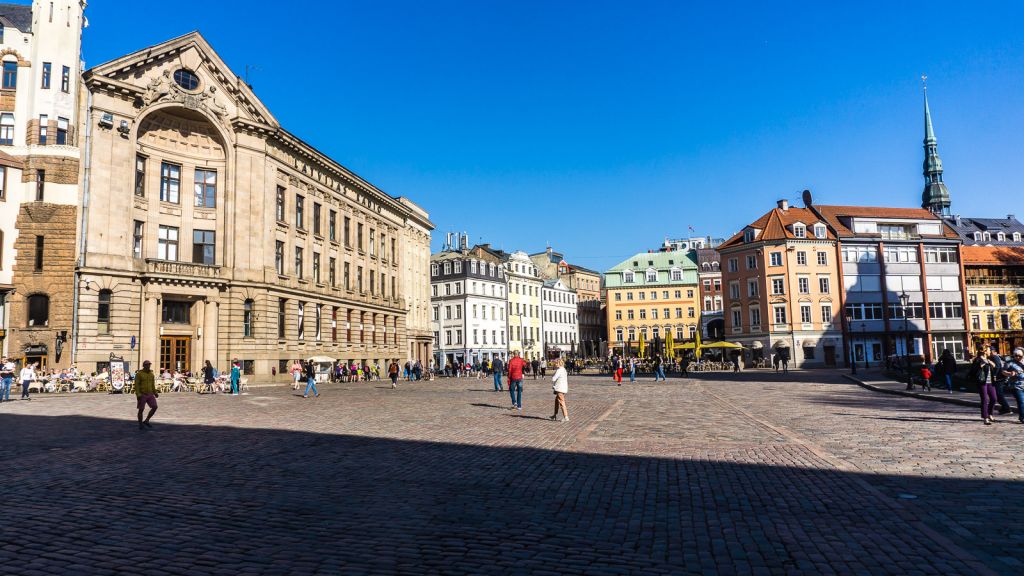
Visit the food market
Riga is an adventure for the taste buds too. The enormous Central Market is a treasure trove of earthy sausage, cheese and black bread, smoked fish, and much more. Sample the goods on a picnic in one of Riga’s lovely parks, or enjoy a hearty meal in many great value bistro and cafes.
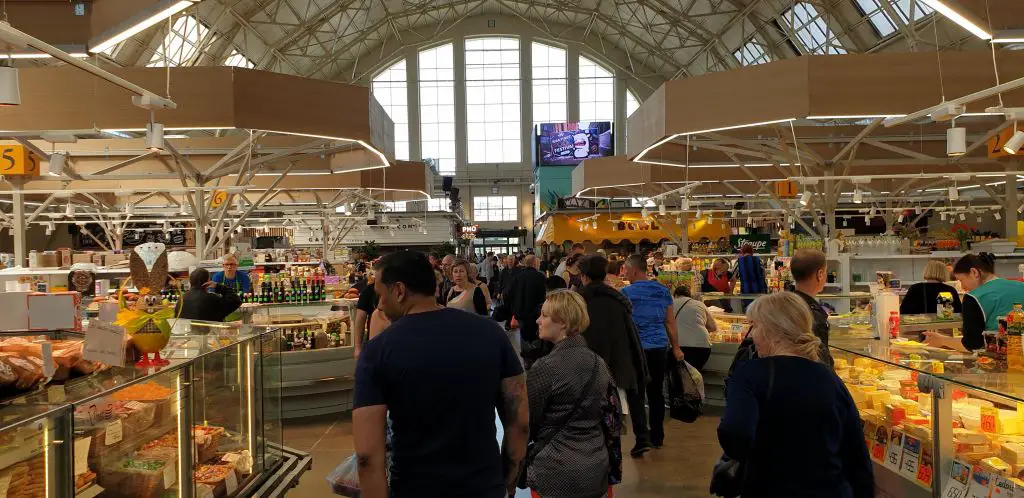
To wash it down, sample intriguing local beers in the brew pubs along hipster strip Miera iela, or a cocktail with the mysterious Riga Black Balsam in fun-filled bars across town.
Visit St Peter’s Church for Panoramic Views
Like I did for every other Baltic country, I always look for viewing points. St Peter’s Church is the best place to do this in Riga. Located at the top of 9 floors at the spire of St Peter’s church, you have 360 degree views of the city. The entrance fee is €9 and is well worth it.
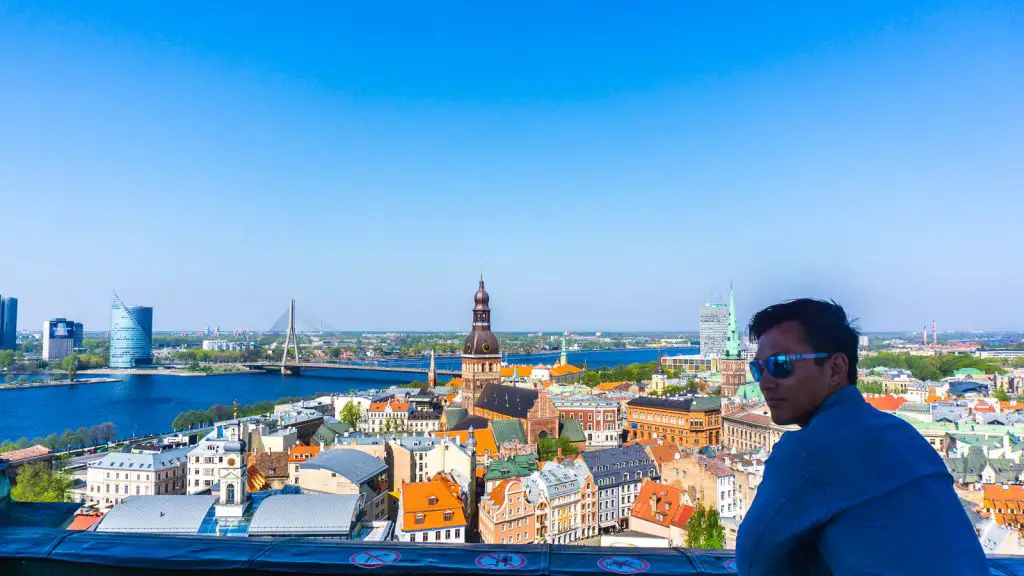
Rooftop drinks at the Galleria Mall
While most people recommend the rooftop at the Radisson Blu, I would whole-heartedly recommend you skip that and walk down the street to the Galleria Mall. The Radisson Blu is much higher and the view is spectacular but it is enclosed. The rooftop at the Galleria Mall (on the 8th floor) is completely open so you can watch the sunset, feel the air, and an overall much better experience.

Cocktails here are a very reasonable €7.5 and they are delicious. Grab some cocktails and watch the sunset!
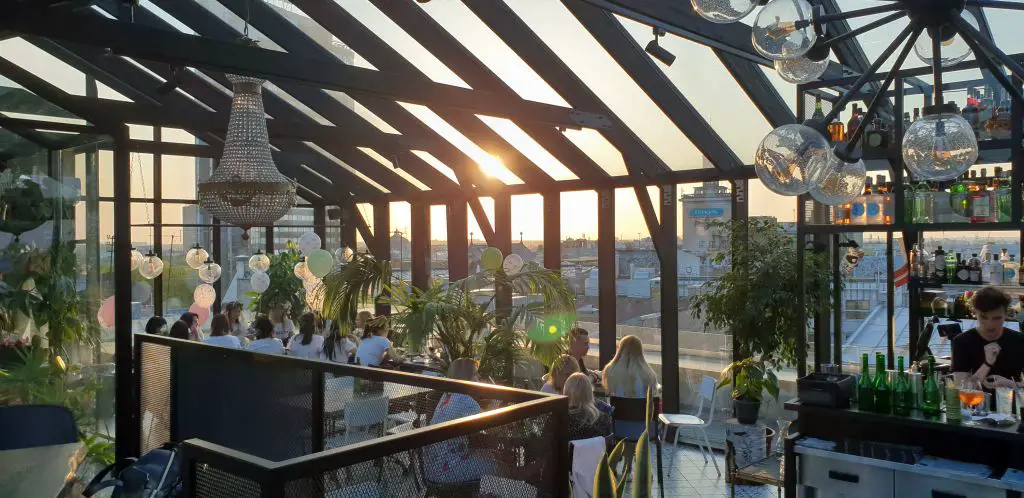
Day 6-8: Tallinn, Estonia
Tallinn is the last stop in the Baltics. From Riga, you can take a quick bus ride or an even quicker plane ride to Tallinn.
The Old Town consists of the Upper Town or Toompea located on a hill, currently housing the parliament and the government of Estonia, and the Lower Town with many wonderful theatres, cafés, restaurants and pubs in addition to its sights. The Old Town is surrounded by the fortifications of the medieval Tallinn city wall and a green area that runs along the former esplanade.
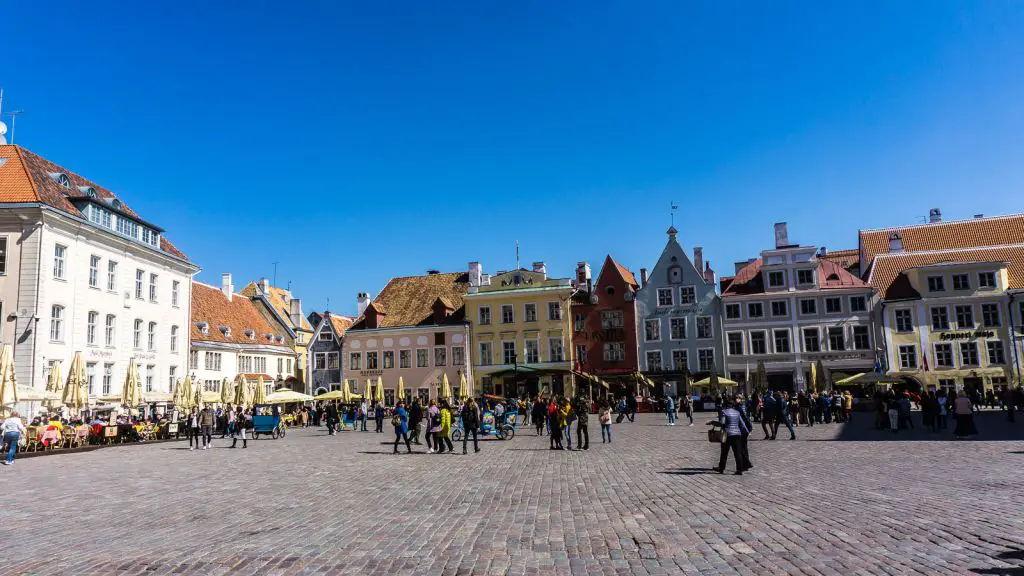
Free walking tour in Tallinn
The free walking tour in Tallinn goes every day and meets in the city center square at multiple times during the day. Starting from May, they meet at 10am, 12pm, and 3pm. As always, I find that free walking tours are always very interesting and this one was no different.
Our guide really knew her stuff and had great stories to tell about the history of Estonia, the culture, language, food etc. The walking tour was about 2 hours and we visited many of the highlights of the city including numerous churches, fortified walls of the city, viewpoints, and much more.

I learned a lot from our guide. Estonia is one of the, if not the least religious countries in the world. The Baltics were one of the last areas of Europe to “convert” to Christianity and Estonia was never really all about it. In fact, after their independence from the Soviet Union, they had plans to take down some of the churches in the city as no one ever used them. They realized they were iconic landmarks to foreign tourists and would be better served as such.
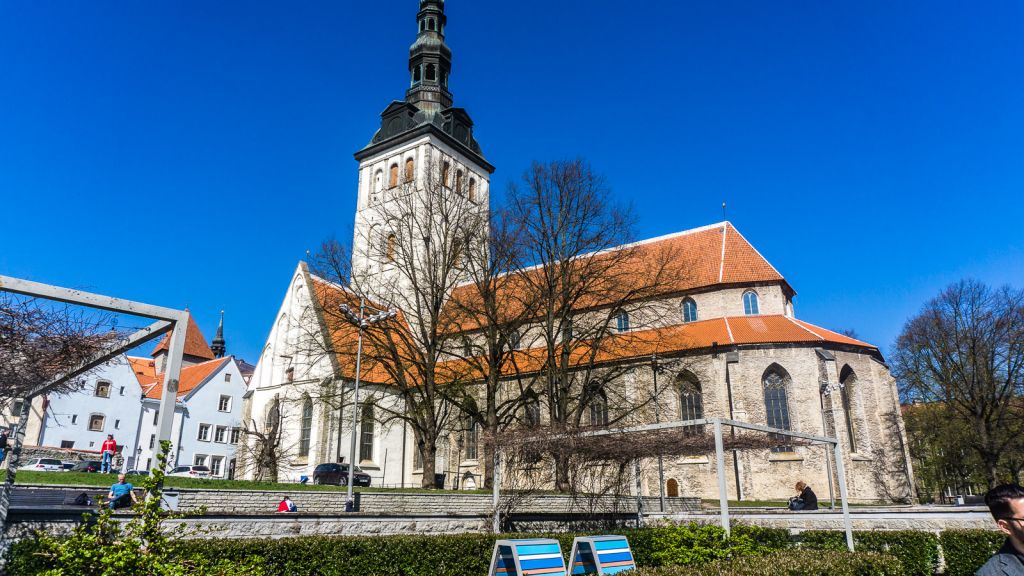
Visit the Creative neighborhood of Teleskivi
Everyone should pay a visit to the neighborhood of Teleskivi just outside of the old town of Tallinn. Think of this neighborhood as the nouveau, industrial, and ultra hipster neighborhood of Tallinn. There are loads of craft beers, restaurants in converted train cabins, and more.
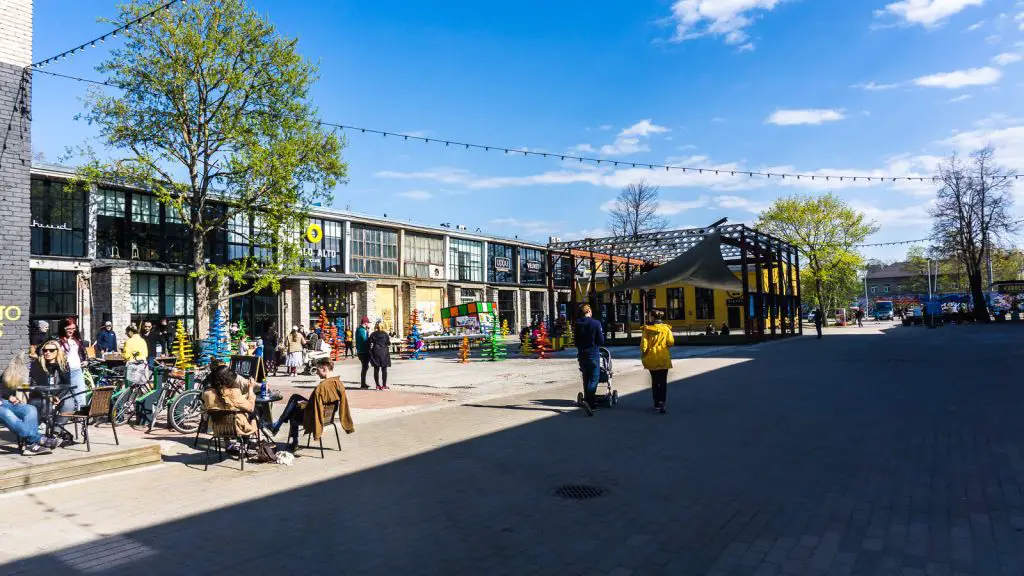
It was once Soviet origin factories and nowadays is the center of the vibrant artist and startup communities in Estonia. Estonia is the startup capital of Europe nowadays and Tallinn is the epicenter.

For views, visit the Kohtuotsa Viewing platform
For the best views of the city, head over to the Kohtuotsa Viewing platform. It is completely free and it was part of the walking tour I did. I came back later and spent more time here as the crowds were less. This would also be a great place to bring some drinks and enjoy the sunset over Tallinn’s skyline in the summertime.
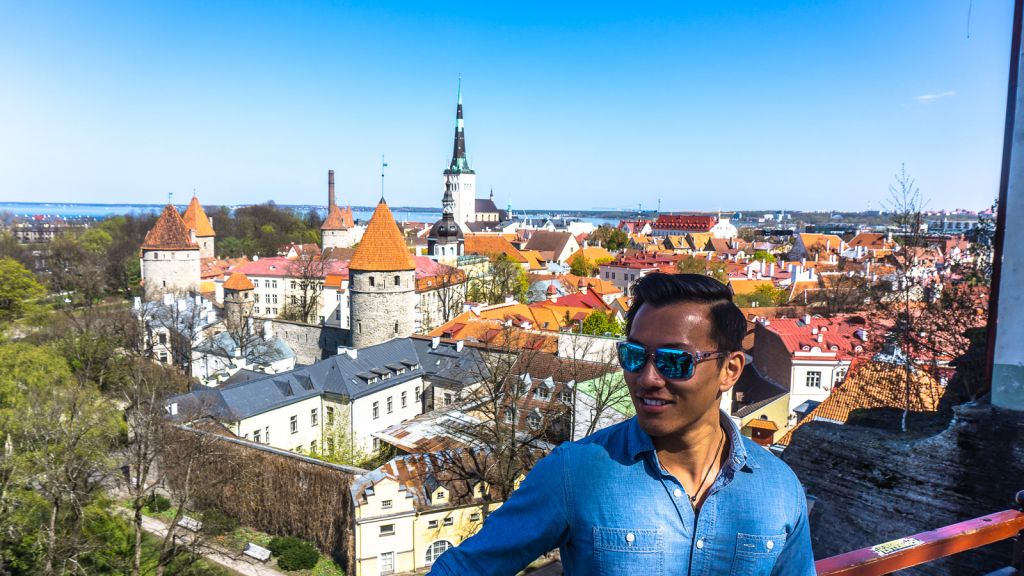
Day 8: Ferry from Tallinn to Helsinki
The next step on the list is Helsinki, Finland! While Helsinki is not a part of the Baltics but rather Scandinavia, it is super close to Tallinn. From Tallinn, it is just a 2 hour ride to the capital of Finland.
While exploring the vibrant culture and stunning landscapes of Finland, a unique aspect of Finnish leisure that’s gaining popularity is the concept of 1 euron talletus casino . These online casinos offer the convenience of enjoying a variety of games with a minimal deposit of just one euro. This feature is particularly appealing for those who prefer to experience the thrill of casino gaming without a significant financial commitment. Whether you’re relaxing in your hotel room after a day of sightseeing or enjoying the serene Finnish landscapes, these online casinos provide an accessible and enjoyable form of entertainment at any time.
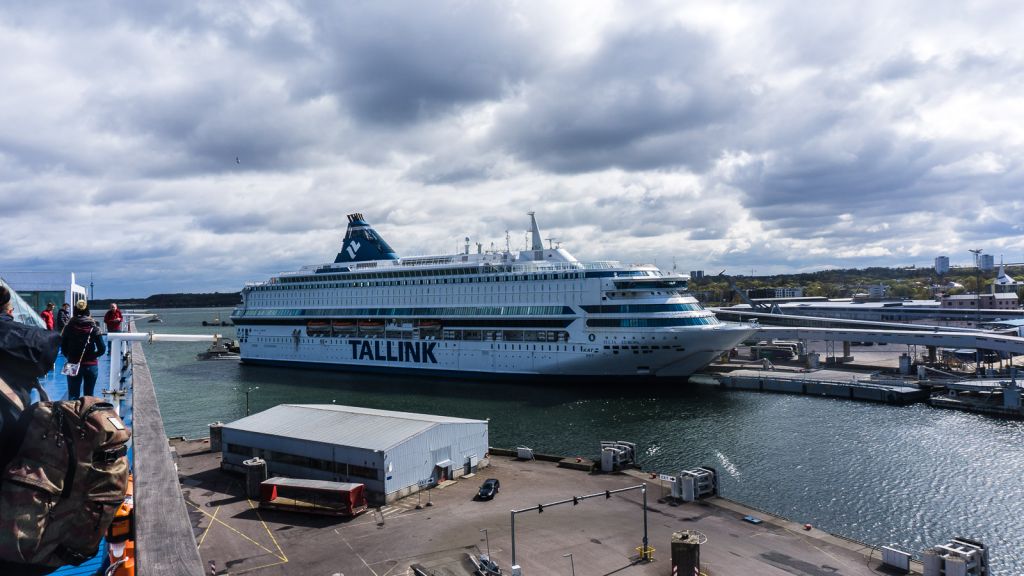
Which ferry company should I use from Tallinn to Helsinki?
There are three companies that service this route: Viking Line, Eckero, and Tallink . Tallink has the newest boats and is the most expensive, while Eckero is the cheapest. The three companies seem to use the same type of ships which are the size of small cruise ships. They are all car ferries so you’d expect the boats to be large.
I saw pictures of the new Tallink Megastar and it looks absolutely stunning. When looking for tickets, Tallink charged €30-40 per ticket, Viking was €25-30, and Eckero was the cheapest at €20 or so. These prices probably fluctuate greatly but I ended up just booking the cheapest ticket which was with Eckero. You can buy your ticket online or at the ferry terminal.

It is such a short ferry ride that it doesn’t matter what you end up using. Ferries are pretty frequent and you can find one of the companies ships once an hour that do this route.
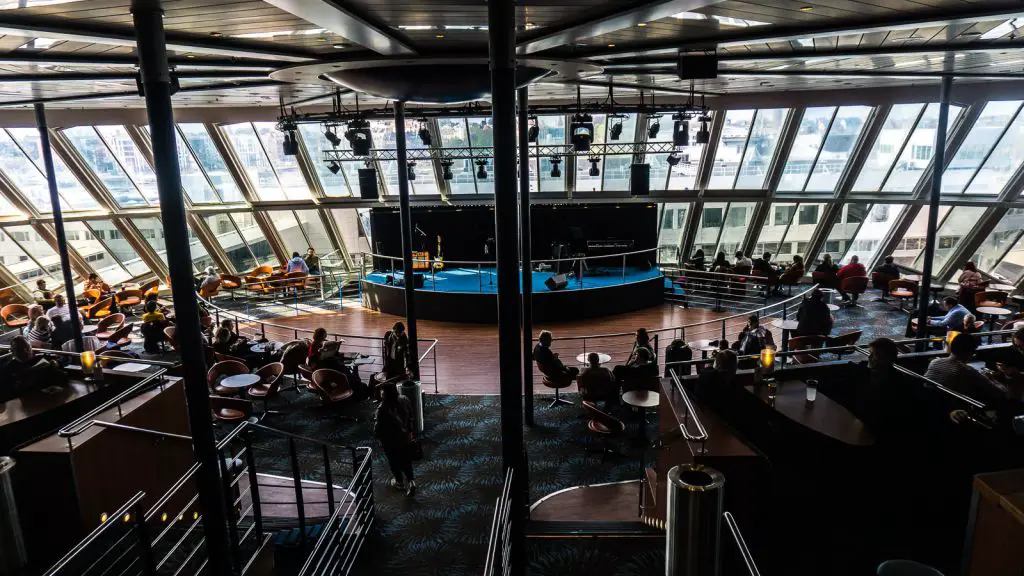
I was very impressed with the Eckero ferry. I went straight to the top of the boat to the sun deck to enjoy the views. They had a bar outside where I could sample some of the local Finnish beers. There is free wifi but the signal was pretty spotty at best. They also have what looks to be a delicious buffet for €24 per person.

Day 8-10: Helsinki, Finland
Helsinki is a beautiful and peaceful capital, famous not only for its history and heritage but for its Old Town, coastline and archipelagos. The city offers a wide range of historic attractions, top museums, art galleries, tours and experiences for everyone to enjoy.
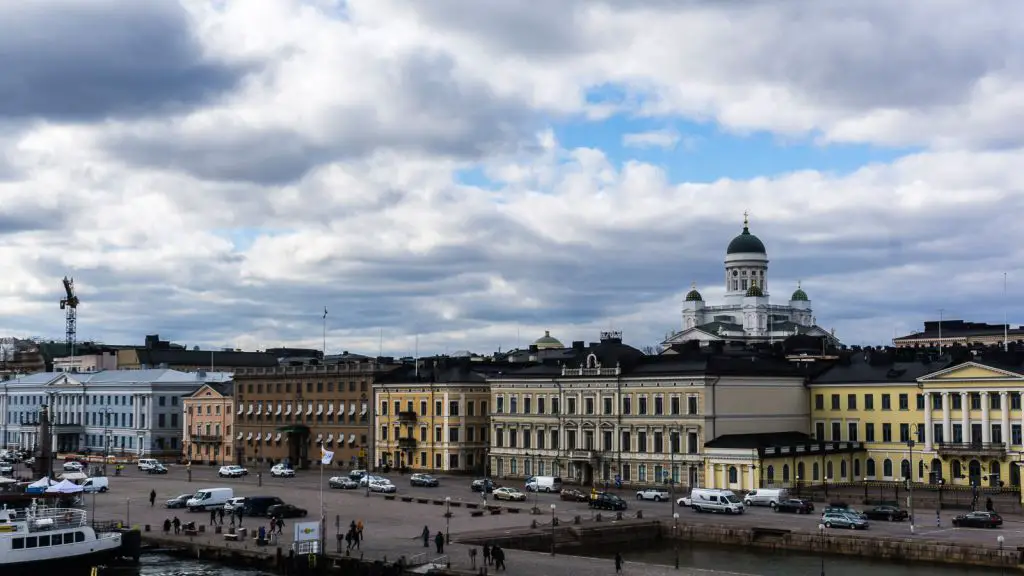
I was very impressed with Helsinki. It is totally an underrated city that I feel like many people forget about when visiting Europe. When people visit Scandinavia, they tend to gravitate to Oslo or Copenhagen. If they visit the Baltics, then Estonia, Latvia or Lithuania because it is significantly cheaper. Helsinki is kind of somewhere in between. This is good because it means less tourists and especially less drunk Brits on their Stags.
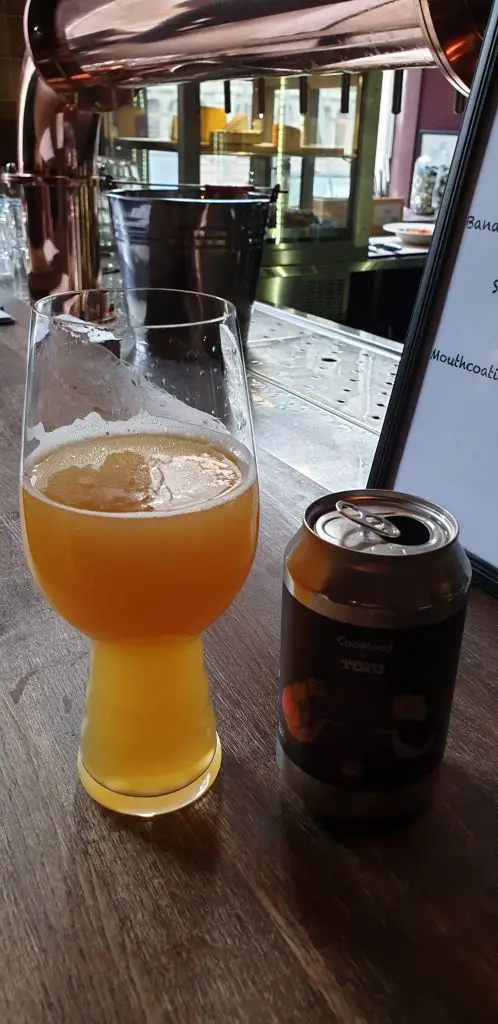
I came away totally impressed with the city. The architecture and buildings are stunning, the streets are super clean and orderly as you would expect from Northern Europeans, and the views from the harbor are fantastic. If Helsinki is the last stop on your Baltic itinerary, one thing to note is that it is considerably more expensive in Finland than it is in the Baltics. Beers are €8-10 on average, and food is twice the price. Starting from Vilnius, you can expect your trip to get gradually more expensive with Finland being the biggest shock to the system.
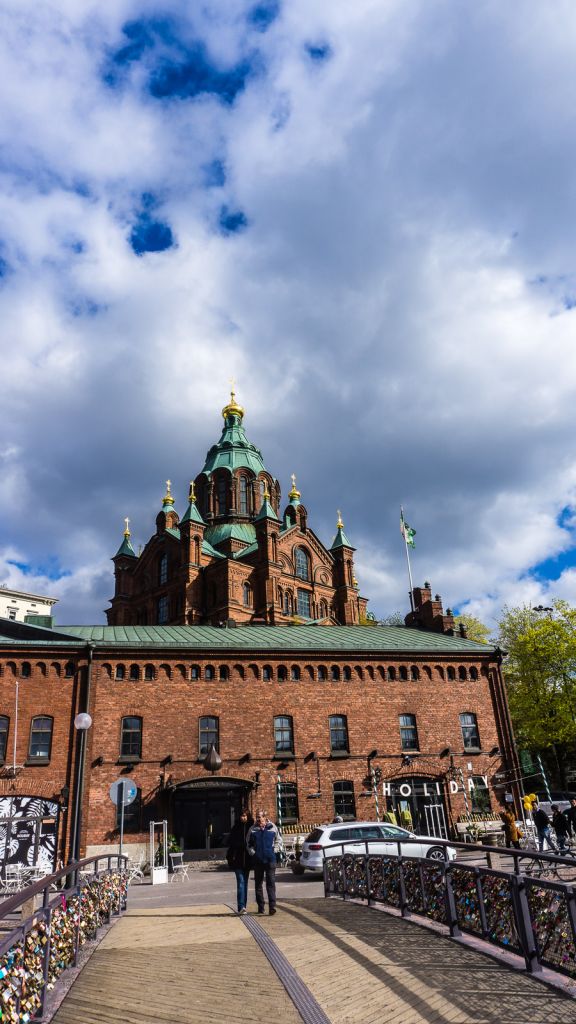
Free walking tour of Helsinki
I did the free walking tour with Green Cap tours, which appeared to be the only outfit in Helsinki doing these free walking tours. They only do it once a day at 11am and expect it to be packed. My Finnish guide was one of the most knowledgeable and interesting guys I’ve had. He had a lot to say about Finnish culture, like why the language is so different than their Scandinavian neighbors, the Finn’s obsession with karaoke, and all your standard history tidbits.
Here are some highlights of the Helsinki Free Walking by Green Cap Tours
- Senate Square
- Helsinki Cathedral
- University of Helsinki
- Wellfare State functions
- Bank of Finland
- The Mecca of the Finnish Karaoke Scene
- Uspenski Orthodox Cathedral
- Presidential Palace
- Sauna Centre
- Market Square
- Epicenter of National Celebration called Vappu
- Esplanade Park

Old Market Hall
The old market hall is one of the most popular sights in Helsinki. Located next to the main harbor, come here to sample some delicious local Finnish cuisine like Salmon soup, open faced sandwiches, and Reindeer meat. They also have other cuisines here as well like kebabs and Vietnamese food.
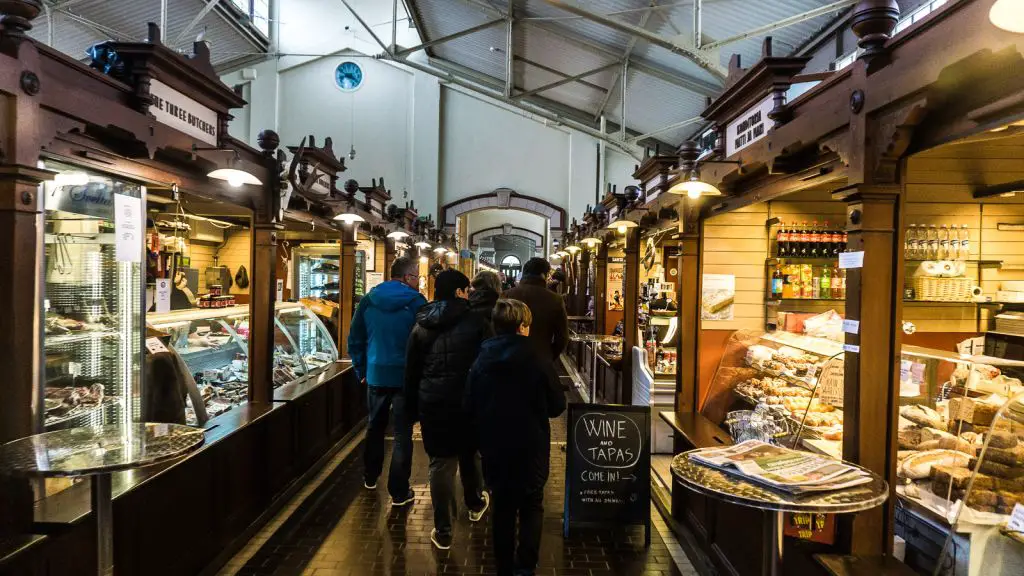
The food is not cheap however, as you can expect to pay upwards of €70/kg of salmon. I sampled a bit of everything from the salmon to the reindeer, but found that the best deal was the Bahn Mi sandwiches at the Vietnamese shop that was only €5.5 per sandwich.
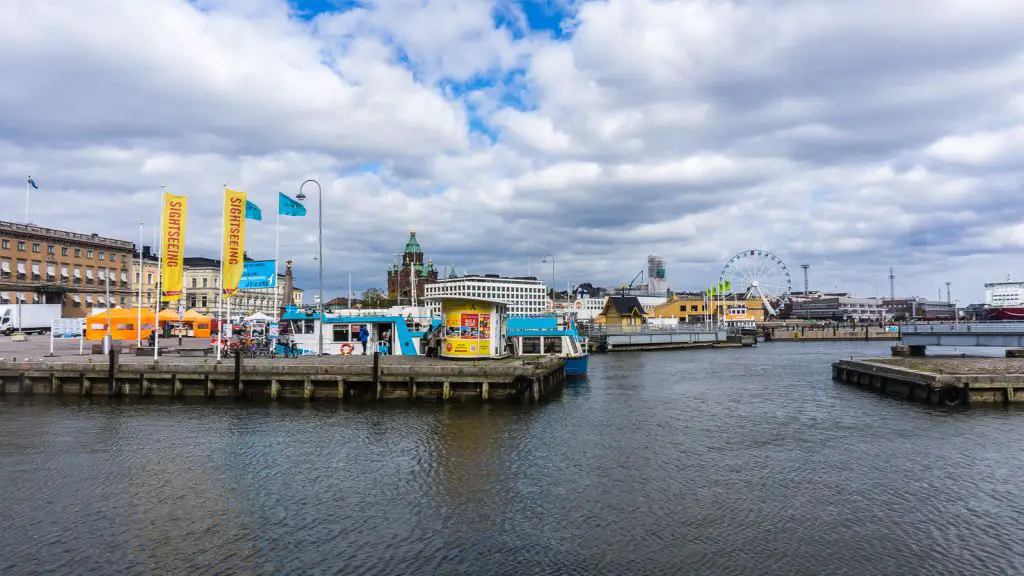
Day trip to Suomenlina
One of the most popular historic attractions in Helsinki is the UNESCO World Heritage Site, Suomelinna Fortress Island , which played an integral part in the naval history and defense under Swedish, Russian and Finnish rule. A visit to this fascinating island includes a guided tour, three museums, and a submarine! Another historic landmark not to be missed is the stunning Rock Church for its awe-inspiring architecture.
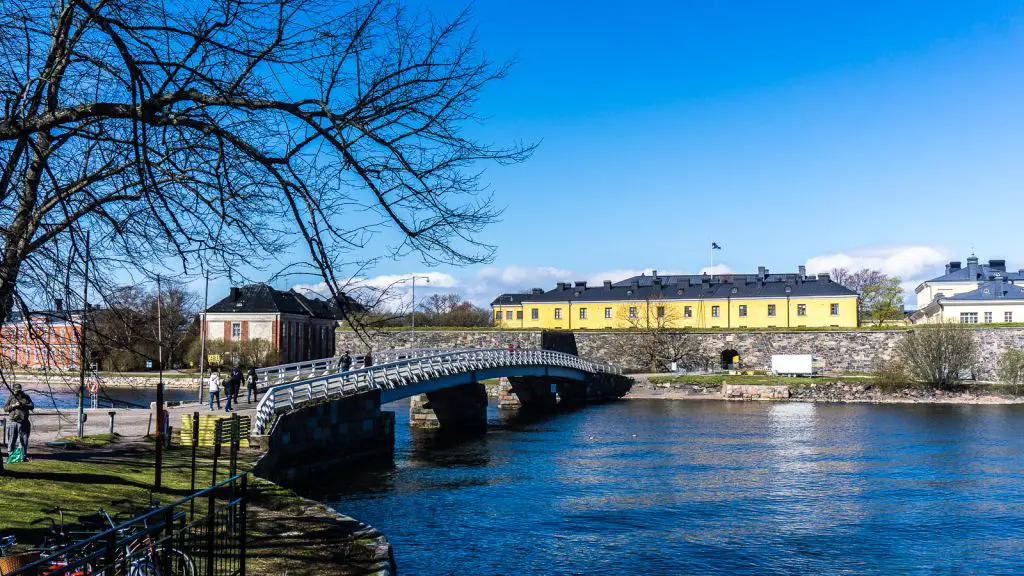
The ferry to Suomenlina Island leaves from the Helsinki harbor every 20 minutes and the cost is €5 for roundtrip tickets. Make sure to take the public ferry for the cheapest price as opposed to the smaller boats nearby that advertise this as a tour.
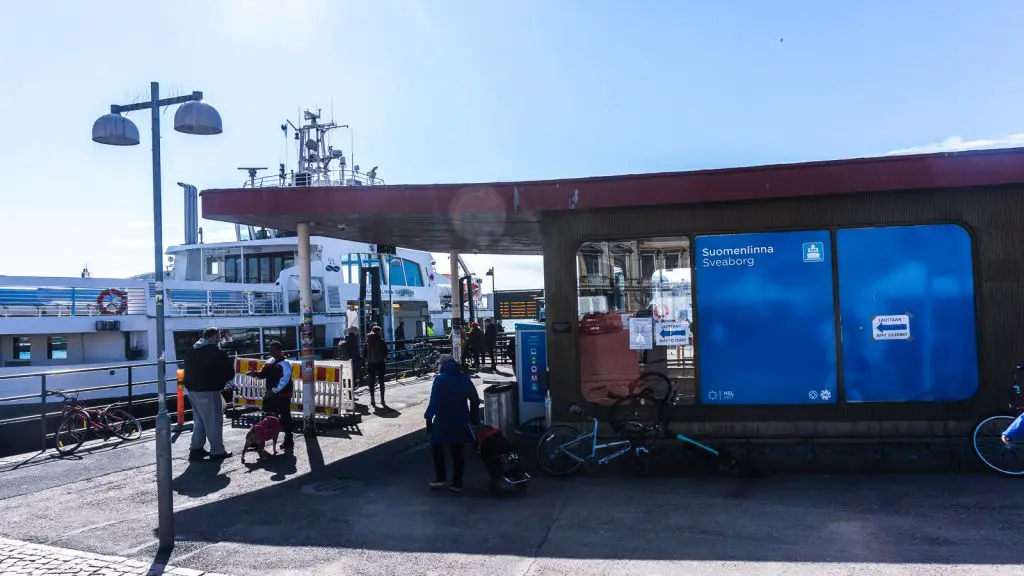
Day by Day breakdown of Baltics Itinerary
Here is a day by day breakdown of the Baltics itinerary. It is pretty straight forward trip as it mostly focuses on visiting the big cities.
Day 1: Land in Vilnius to start the trip Day 2: Full day Vilnius Day 3: Full day Vilnius Day 4: Vilnius to Riga full day tour stopping at various locations along the way Day 5: Riga full day Day 6: Riga to Tallinn Day 7: Full day Tallinn Day 8: Tallinn to Helsinki ferry Day 9: Full day Helsinki Day 10: Depart Helsinki
Two week Baltic Itinerary
If I had another 4-5 days, I would structure my trip like this as I could spend more time in some of the smaller cities which also deserve some time:
Day 1: Land in Vilnius to start the trip Day 2: Full day Vilnius Day 3: Full day Vilnius Day 4: Vilnius to Kaunas, spend the night in Kaunus Day 5: Kaunus to Riga, with stops at Hill of Crosses Day 6: Full day in Riga Day 7: Riga to Jurmala beach town Day 8: Riga to Tartu, spend night in Tartu Day 9: Tartu to Tallinn Day 10: Full day in Tallinn Day 11: Full day in Tallinn Day 12: Tallinn to Helsinki Day 13: Full day in Helsinki Day 14: Helsinki to Turku Day 15: Turku back to Helsinki for a flight home
Combining The Baltics with Russia
I have not visited Russia yet as the visa is a huge pain to obtain but if you have even more time, this itinerary would be perfect in combination with Russia’s highlights including St Petersburg and Moscow. From Tallinn or Helsinki, there are trains and ferries that make the journey into Russia in a matter of hours. I will eventually visit Russia and make another itinerary combining these destinations!
Continue Reading:
- The Perfect Two Week Itinerary For The Balkan Countries
- The Perfect Travel Itinerary For Slovenia: Ljubljana, Lake Bled and More
- The Perfect One Day And Two Day Itinerary for Zurich, Switzerland
- The Perfect Mexico Travel Itinerary: Mexico City, Puebla, Oaxaca, And Mazunte
- The Perfect One And Two Day Itinerary For Ljubljana, Slovenia
- The Perfect Romania Travel Itinerary: Timisoara, Cluj-Napoca, Sibiu, Brasov, Bucharest
- The Ultimate Two Week Travel Itinerary For Turkey
- The Perfect Bulgaria Travel Itinerary: Sofia, Plovdiv, Black Sea
- The Ultimate One To Two Week Travel Itinerary For Guatemala
- Guide to Visiting Cape Town
- The Perfect Travel Itinerary For Malta and Gozo
- The Perfect Two Week Mexico and Belize Travel Itinerary
- The Ultimate Dublin To Cliffs Of Moher Day Trip Itinerary
- The Perfect Travel Guide For Freiburg im Breisgau
Related Posts

The Perfect Sri Lanka Travel Itinerary: One Week, 10 days, and Two Weeks
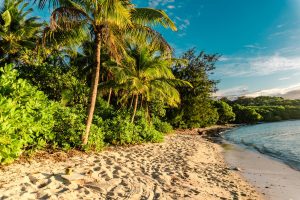
The Perfect Fiji Honeymoon Itinerary: One To Two Weeks

The Perfect Fiji Travel Itinerary: Beaches, Diving, and Island Paradise

The Perfect Vietnam Travel Itinerary: One Week, Two Weeks, and Three Weeks
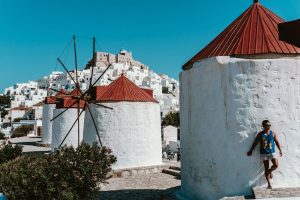
The Perfect Two Week Travel Itinerary For Greece

The Perfect One Week Itinerary For Greece
Leave a reply cancel reply.
Your email address will not be published. Required fields are marked *
Yes, add me to your mailing list
Add Comment *
Save my name, email, and website in this browser for the next time I comment.
Notify me of followup comments via e-mail. You can also subscribe without commenting.
Post Comment
Any concerns about safety while in the area, given the conflict in Ukraine?
Hi Andrea, I would not be concerned with safety there. It’s an EU country and part of NATO. If Russia actually attacked it would be WW3 and even they are not that stupid.
Hello! I love this post , thank you for writing this up ! What was the name of your tour through Lithuania on your way to Riga? Thank you
Hi Kath, I used Riga Traveller tours as my way to get from city to city. They are fantastic and perfect way to get from one city to the other while seeing some cool stuff in between!
If you go for any tour you have frequently known the place of that country. But for better travelling and also safety purpose you have choose a Transportation service provider company. Last month I had visited for a tour in Latvia through the Riga Airport Transfer company. This company provide best travel & transportation service in Latvia. I had seen many beautiful scenario and enjoy the delicious food of Riga restaurant. This tour is one of the best tour for me because I had comfortably visit all these places.
Nice to come across your blog, very informative. I’m also planning similar route as yours, will it be too tight? I am travelling solo, usually faster pace. Or Do I need to give another 1-2 days more?
Day 1: Arrive Helsinki at 7am Day 2: Fly to Vilnius, arrive 9am Day 3: Vilnius Day 4: Day trip to Kaunas Day 5: Bus to Riga Day 6: Riga Day 7: Bus to Tallinn Day 8: Tallinn (Midnight bus to St Petersburg)
Hi jas, I think this is probably enough but could recommend another day in Helsinki. But if you can’t swing another day, I wouldn’t sweat it!
Thanks Johnny! That’s very helpful, I will find out more for Helsinki.
Sauna is very popular attraction in the Baltics (different from Finnish sauna). Sauna is getting more and more popular among tourists and I personally know foreign tourists who return to Baltics every!! year just to have sauna procedure which usually last for up to 5 hours max for 2 persons and gives absolutely magical bliss, restart of the mind and body and life long memories of this part of the world. Strongly suggested while in these beautiful countries. 🙂
That’s good to know! I didn’t nkow about this and will def look into it next time I’m there.

This website uses cookies to ensure you get the best experience.
Baltics itinerary by public transport- 2 weeks Lithuania, Latvia, and Estonia
Share this post with others
Your guide on how to travel the Baltics. Including a 14 days Lithuania, Latvia, and Estonia itinerary with a map. All the resources you need for your Baltics backpacking trip plus the best Baltic country to visit.
We have spend 4 weeks in the three Baltic countries Lithuania , Latvia , and Estonia to compile a short but sweet 2 week Baltics itinerary for you - including realistic and up to date public transport options.
Travel the Baltics in two weeks by public transport. What to see in Lithuania, Latvia, and Estonia beyond the capitals.
Best Baltic country to visit
Lithuania public transport, latvia public transport, estonia public transport, travel between baltic states, lithuania itinerary, 3 days in vilnius, 1 day in kaunas, 2 days in klaipeda, latvia itinerary, a note on liepaja, 4 days in riga, estonia itinerary, 2 days in tartu, a note on saaremaa, 2 days in tallinn, what’s next helsinki, finland.
We loved our trip to the Baltics and 100% recommend you visit all three countries if you have the time (and more than the three capitals). Here’s what you can roughly expect from each country.
*We ate out much more often in Lithuania than we did in Latvia or Estonia.
Travelling the Baltics by Public Transport
Buses in Lithuania are cost-efficient and run frequently. It’s easy to go on day trips with local buses. Trains are a great alternative to buses although the network is not as extensive as the bus network.
Trains are the best option for day trips from Riga. They run frequently, reliably, and cheaply. You rarely pay more than 2€ for your ride.
To be honest the least suitable public transport network in the three countries for tourist purposes. Local buses for day trips run extremely seldom, long-distance buses proved to be very reliable though.
The train is a great alternative to travel in between Tallinn and Tartu.
We did our first border crossing from Klaipeda to Riga with Ollex and our second border crossing from Riga to Tartu with LUX Express . Both worked perfectly and can be 100% recommended. We needed to provide a passport or ID for booking but were not checked at the borders as the three countries are EU members.
14 days Baltics itinerary
For more in-depth information check out our detailed Backpacking Lithuania by public transport guide .
Vilnius is the charming baroque capital of Lithuania and should not be missed.
Day 1 for the city centre and old town
Day 2 for a day trip to trakai, day 3 for the modern part of town and the way to kaunas.
We wrote a short travel guide about Vilnius besides the old town .

Kaunas is the Lithuanian hub for Soviet architecture. Make sure to check out the Kaunas Modernism buildings around town.
Day 4 to explore Kaunas
Here are 33 amazing things to do in Kaunas .
How to get from Vilnius to Kaunas by public transport
A bus ticket costs around 9€. Buses run at least every 30 minutes during the day so you don’t really have to plan ahead. The ride takes under 2 hours.
At around 7€, the train is even cheaper. It runs around every hour, takes under 2 hours, and is super comfortable.

To see German architecture and visit the Curonian Spit.
Day 5 to make your way to Klaipeda and explore the small city centre
Day 6 for a day trip to the curonian spit, how to get from kaunas to klaipeda by public transport.
No trains are running from Kaunas to Klaipeda so the bus is your best option. Buses run approximately once per hour during the day and cost around 20€.

Check out the other Lithuania blogposts of our travelling the Baltics series:
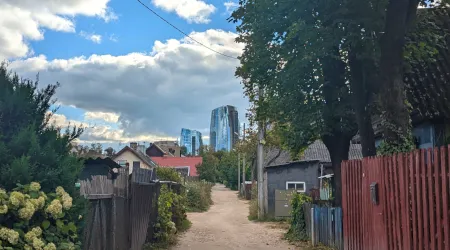
Lithuania Backpacking Itinerary – 1 Week With Public Transport
Travel Lithuania by bus and train. Our Lithuania 7 days itinerary brings you to Vilnius, Kaunas, and Klaipeda – including a map!
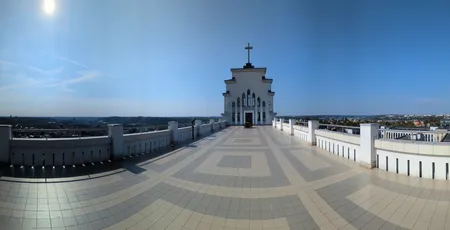
33 Things to Do in Kaunas, Lithuania (2023)
A short guide on what to see in Kaunas.
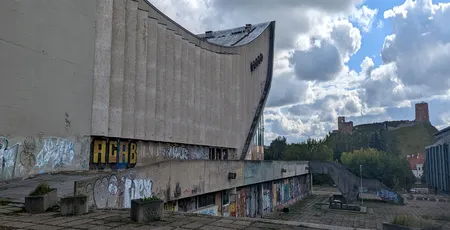
10 Places to Visit in Vilnius besides Vilnius Old Town (2023)
Untouristy Vilnius places to visit. Vilnius sightseeing off-the-beaten-path!
For more in-depth information check out our detailed Riga city break guide.
We decided to skip Liepaja as there are no direct buses from Klaipeda to Liepaja anymore. Instead of hitting the beach in Liepaja, we decided to visit Jurmala.
How to get from Klaipeda to Liepaja by public transport
Before the pandemic, you could take a direct bus from Klaipeda, Lithuania to Liepaja, Latvia. Nowadays you have to take a bus from Klaipeda to Palanga where a bus leaves several times per week towards Liepaja (currently it’s Monday, Wednesday, Saturday, and Sunday, not daily!).
Riga is the Art Nouveau capital of Europe!
Day 7 to make your way to Riga and explore the historic centre
Day 8 to explore the modern centre of riga and the art nouveau architecture, day 9 for a day trip to sigulda, day 10 for a day trip to jurmala and kemeri bog (you might even want to spend the night)., how to get from klaipeda to riga by public transport.
Currently, there are 8 daily buses from Klaipeda to Riga between 0:05 a.m. and 6 p.m. We bought our ticket at the bus station. The ride was comfortable and we had WiFi.

Check out the other Latvia blogposts of our travelling the Baltics series:

Weekend in Riga – Riga city break
The best things to do in Riga for your Riga city break - whether you spend a weekend in Riga or a whole week. Including a Riga sightseeing map with all the Riga must see attractions.
For more in-depth information check out our detailed Backpacking Estonia by public transport guide.
Tartu is a young and hip university town with loads of street art which should not be missed.
Day 11 to make your way to Tartu and start exploring.
Day 12 to explore tartu and all the amazing street art., how to get from riga to tartu by public transport.
Two daily direct buses leave from Riga, Latvia, to Tartu, Estonia. One Lux Express bus leaves at 9 a.m. and the other at 6:45 p.m. strongly deciding about the amount of time you have to explore Tartu.
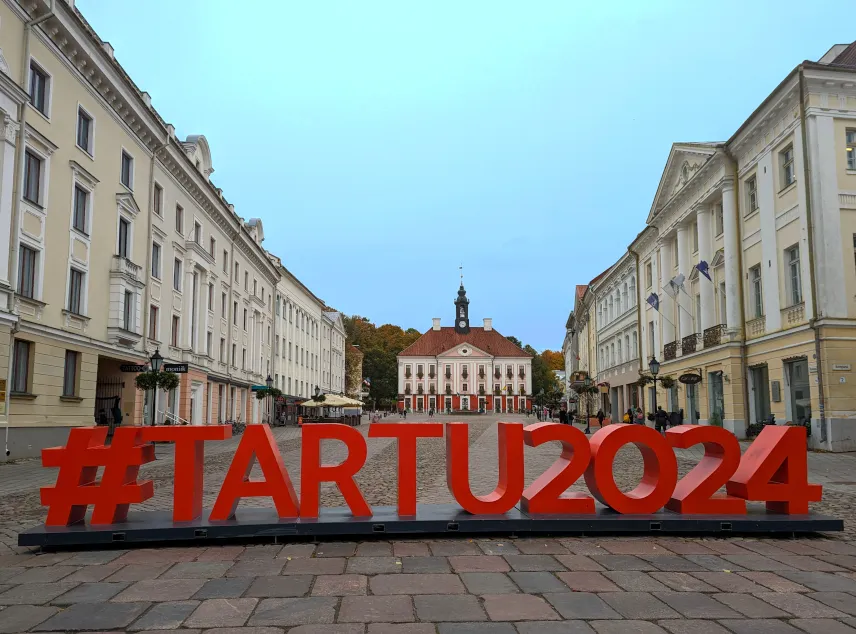
We decided not to include Saaremaa in our two weeks Baltics itinerary. Compared to other destinations, it takes a long time to get there and it’s not easy to get around the island itself by public transport. The beach in Kuressaare is super small compared to the Lithuanian and Latvian beaches we have visited and the hiking opportunities were slim.
How to get from Tartu to Saaremaa by public transport
There is one daily bus from Tartu to Saaremaa at stupid o’clock (we bought our ticket here ). It’s a direct bus hopping on the ferry with you and takes around 6 hours.
Tallinn is an amazing capital with loads of history and a vibrant modern side. As it’s tough to do day trips by public transport, two days are sufficient to explore Estonia’s capital city.
Day 13 to explore the historic centre
Day 14 to explore the modern side of tallinn and visit some museums, how to get from tartu to tallinn by public transport.
Lux Express buses leave hourly from Tartu to Tallinn.
You can also take the train which we have admittedly not tried ourselves.
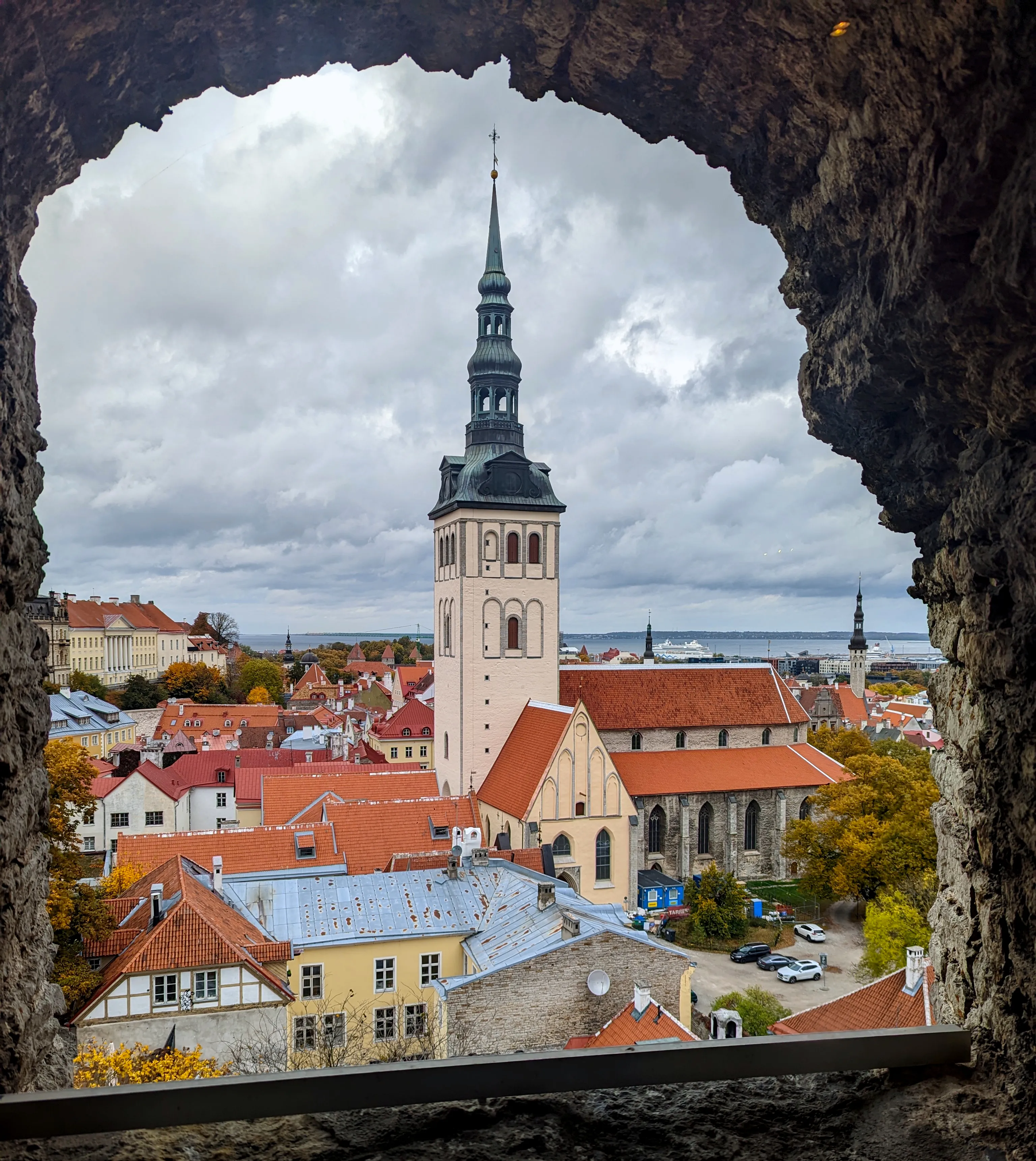
Check out the other Estonia blogposts of our travelling the Baltics series:

Estonia Backpacking Itinerary with Map
Travel Estonia by bus and train. This Estonia 7 day itinerary with public transport highlights what to see and what to do in Estonia beyond the capital Tallinn.
Helsinki is the logical next destination on your Baltics itinerary!

Helsinki itinerary - 3 days in Helsinki, 3 saunas
Visiting Helsinki? Our Helsinki guide and itinerary advise you on what to see in Helsinki including the best public sauna Helsinki has to offer.
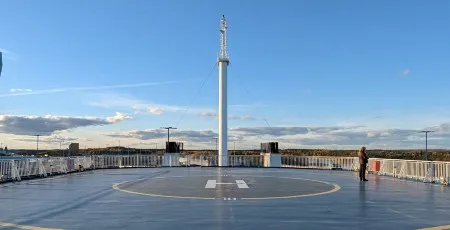
Travel Ideas
Travemünde Helsinki ferry - review and guide
Finnlines is currently the only way to take the ferry to Helsinki from Germany and back. Here’s our complete travel guide including budget, public transport, cabins, and food.
Interested in personal updates and honest travel guides? Sign up for our biweekly bucketlist2life newsletter for exclusive behind the scenes looks into our travel planning!
Want to support us buy us a coffe, a tea – or a whisky., leave a comment.
Do you have any thoughts on this article? – We would love to hear from you!
Do you want to follow us on our jouney? Check this box to also signup for our Newsletter and never miss an update!
You have a link you want to share with others? This is a good place for it!
Do you want to receive a Push-Notification when someone replies to your comment? – Check this box!

- Search for:
No products in the cart.
Return to shop
- TRAVEL PLANNING SERVICES
- The Caribbean
- South Carolina
- Eastern Europe
- Switzerland
- The Netherlands
- SOLO FEMALE TRAVEL
- PRIVACY POLICY

Travel Destinations , Europe , Travel Inspiration
Travel the baltics: guide to lithuania, latvia, & estonia.
FMTC Affiliate Disclosure: Blond Wayfarer contains affiliate links. If you make a purchase through these links, I earn a commission at no extra cost to you. This disclosure pertains to all affiliate links.
Sooo you have plans to travel the Baltics soon? You’re making some very awesome choices for your upcoming backpacking trip! These three countries, Lithuania, Latvia, and Estonia, are very unique compared to other parts of Europe. Your backpacking experience will be filled with fascinating (albeit dark) history, gorgeous architecture, delicious and cheap food, and new friendships with people – who’ve likely already traveled quite a bit of the world!
And safety? Yes, the Baltics are safe for solo travelers, including women who want to go alone. No worries there. You’ll be fine!

My Experience Traveling the Baltics
I traveled solo to the Baltics in summer of 2016. I did it completely on my own, no guided tour included. Pretty cool, huh? And certainly a testament to have safe the Batlics are.
As I planned my trip, though, I had a much harder time researching as I explored the internet for accurate information regarding solo travel in this region. Believe me when I say I had no idea what to expect when I stepped off the plane at Vilnius Airport.
However, my trip was worth it, and I have no problem advocating the Baltics as a solo female travel destination!
Although it’s been two years, I want to share all the bits and pieces I learned on my solo trip through the Baltic States. Enjoy!

Travel the Baltics: Where are the Baltics Located?
Not sure where the Baltics are located? No worries. These countries aren’t as popular as Germany and France for travelers so the misunderstanding is a reasonable one.
These three small countries are located in the north/central part of Europe. They border the Baltic Sea, as well as the countries of Russia and Belarus. It’s actually quite easy to pair the Baltics with a quick trip to Saint Petersburg. Just make sure you have your visa sorted beforehand to avoid any issues at the border.
However, keep in mind, not everyone in Lithuania, Latvia, and Estonia speaks Russian, and to assume such a thing is offensive to locals. Each country has its own unique language. In my experience, most people speak English, but of course it’s polite to learn a few phrases.
In addition, Estonia’s capital, Tallinn, is directly across the sea from Helsinki, making Finland another easy spot to pair with your Baltic vacation.
Due to the countries’ locations, summer is the best time to visit the Baltic States. The weather is usually awesome. I went on my own trip at the end of July, which resulted in extra long days and comfortable temperatures. I also experienced zero rain, although I can’t guarantee that, haha.

Travel the Baltics and Solo Travel
So why are the baltics great for solo travelers.
Oh, man, this is a loaded question that’ll take some time for me to explain. I hope you’ve some tea or snacks as you read this post.
For of all, each Baltic capital has great hostels for you to choose from. Even if hostels aren’t your thing, the social accommodation is your best method for meeting and talking to new people. What’s cool about traveling through the Baltics is you’ll meet people who are naturally adventurous.
I mean … think about it. The Baltics aren’t necessarily the first places you think of while planning a vacation to Europe. Paris? Sure! Riga? Um, less likely.
Going beyond the Baltics? Check out my 25 tips for solo female travel in Europe!

Not to mention, if you’re an older backpacker, you’ll encounter far less crazy eighteen year olds doing their first trip around Europe – which is a bonus!
A lot of travelers take the same “route” – Vilnius-Riga-Tallinn – through this part of Europe. So if you make good friends, you’ll likely stay together for the duration of your stay. Seriously, tours of the Baltics promise many wonderful bonds and friendships that are the essence of travel.
Finally, your meticulously planned tours of the Baltics are great for you as a solo traveler, because of the affordable price tag. You’ll notice a big difference in prices as a citizen of the USA, Canada, UK, and Australia. Kindness to your wallet is always a good thing.
Purchase Lonely Planet’s Baltics Guidebook for your Trip.

Backpacking the Baltics: Transportation
When i travel the baltics, how do i safely get around.
Believe or not, you can easily cover a lot of distance when you travel the Baltics. It’s not too complicated.
However, I want to give you all a quick word of warning. Train connections aren’t as frequent or quick as rail travel in Western Europe is. For example, comparing Germany’s trains to Estonia’s trains would be a pretty big mistake! Believe it or not, there are better ways to navigate the Baltic States! So forget about trains.
Instead take advantage of the many affordable bus routes that connect your destinations! On my own trip, I rode the Lux Express Bus between each of the capital cities, and had absolutely no issues with times or schedules. The buses are comfortable, offering travelers plenty of leg room, and they come equipped with clean bathrooms.
If you have time to spare, then taking ferries between countries is another available option. You’ll probably spent the night on the ferry, but I hear it’s fun. I know Busabout uses them on their trips.

Travel the Baltics: Country Is the Best?
So, which capital is the safest: vilnius, riga, or tallinn.
Honestly, I felt safe exploring all of the Baltic capitals. Sure, I felt a little nervous upon first arriving in Vilnius, but experiencing normal travel jitters doesn’t mean the area is unsafe. Each city was fine.
As a solo female traveler, I’m always aware of my surroundings and taking note of the people around me. Not once was I approached for money or fell victim to a crafty scam. Sure, you need to stay more alert at night time, but again, these are normal safety precautions.
However, I’ve heard two separate stories in the Baltics regarding safety, which I want to share here.

Occasionally, cabs will overcharge tourists especially late at night once the bars close. To avoid this problem, I had my hostel call me a cab to the bus and ferry stations, and never encountered a dishonest or aggressive driver. If you don’t feel comfortable hailing a cab on the street, then request that your accommodation make transportation arrangements for you. They know the reliable cab companies.
The second safety tip is a bit more intense. However, smart choices go a long way. A fellow backpacker tried to meet women using Tinder, and ended up at a sketchy bar far outside Vilnius’s Old Town limits and lost his passport to a strange man. Re: not the woman who he originally thought he was meeting. She never even showed up at the bar.
So my advice is if you want to meet someone through an app, please make sure you two hang out in a public place of your choosing. A legitimate person won’t feel bothered at your suggestion. After all, you’re visiting a new country and want to go someplace comfortable.
All in all, the Baltics’s capital cities were very safe. I wouldn’t hesitate to visit them again!

Travel the Baltics and Accommodation
Where should i stay when i travel the baltics.
Vilnius: On my trip to Vilnius, I stayed at Jimmy Jumps Hostel which was super friendly and fun. I personally enjoyed the free pancakes for breakfast, haha. Keep in mind, if you book a private room, you’ll be in a separate building, but it’s still easy enough for you to access the common room and kitchen.
Riga: On my trip to Riga, I stayed at Naughty Squirrel Backpackers which is an excellent choice for solo travelers who want to enjoy a bit of a party scene! This hostel has been consistently voted as one of the best hostels in the world. The staff is VERY friendly, and they arrange a variety of events for guests. However, make sure you book your bed in advance. Naughty Squirrel Backpackers was completely sold out on my visit! Many travelers wanted to extend their stay and couldn’t do it.
Tallinn: On my trip to Tallinn, I stayed at Euphoria Hostel which is perfect if you’re looking for a more relaxed atmosphere and vibe. This hostel invites musicians to perform for guests in the common room, which adds to a strong sense of community. If you’re looking for a bit more fun, then go to The Monk’s Bunk on your stay in Tallinn. Most of my friends stayed there, and lemme tell you, the Monk’s Bunk knows how to lead a quality pub crawl.
Book your accommodation in Vilnius , Riga , and Tallinn.

Travel the Baltics: More FAQ for Your Trip
1. i’m not interested in partying. will i feel comfortable.
Hmm. I won’t lie. You’ll encounter a party atmosphere along the backpacking trail in the Baltics. The cheap price of alcohol in combination with many pub tours make drunkenness commonplace at some hostels.
However, you still will feel comfortable traveling around the Baltics. You just need to know what tours to book and what places to stay to ensure a quieter experience.
Read reviews ahead of time. Avoid staying in hostels that advertise partying.
Book yourself on some historical walking tours, day trips, or food tours to find other travelers with similar interests as you.
And remember, you can always say “no” to nights out. Cool people won’t care or make fun of you, promise.

2. What Were Some of Your Favorite Attractions?
Ahhh, I have a lot of wonderful memories, but I wish I remembered more specific sites to share with you. Honestly, my trip through the Baltics is one of the reasons I advocate for writing a travel journal on a regular basis. Your memory isn’t as strong as you think it is!
However, I do have a few suggestions for you if you’re planning to travel the capitals of the Baltics.

#1 — IN VILNIUS
Gediminas’ Tower: This gorgeous red tower is the remaining part of the Upper Castle. This brick castle was completed in 1409. Come to Gediminas’ Tower to enjoy some of the best views in all of Vilnius!
Museum of Occupations and Freedom Fights: Previously called the Museum of Genocide Victims. Lithuania suffered greatly under the Nazi Regime and the Soviet Union. Located inside the former KGB headquarters, the Museum of Occupations and Freedom Fights is dedicated to the victims. Have a strong stomach ready. This museum is located at Aukų g. 2A, Vilnius 01400, Lithuania.
Palace of the Grand Dukes of Lithuania: This beautiful palace was originally constructed in the 15th century for the rulers of the Grand Duchy of Lithuania and the future Kings of Poland. However, it was demolished in 1801 and took 16 years to fully re-complete it in 2018! Wow.
“Republic” of Užupis: This self-proclaimed “republic” is the artistic district of Vilnius. What’s super cool about Užupis is it has its own president and constitution! Take a stroll here. You won’t regret it.
Three Crosses: Epic hillside monument of (you guessed it!) Three Crosses. It’s quite a hike to this monument so wear super comfortable shoes on your journey up to the very top.
Finally Vilnius has so many cool things to offer solo travelers that I can’t list them all here. Be sure to check out my Sightseeing Vilnius Guide for more in-depth information about attractions in Lithuania’s capital.

#2 — IN RIGA
Art Nouveau District: This distinct style, popular in at the end of the 19th and early 20th centuries, adorns all the buildings in this district. Take some good pictures. Instagram would be mad jealous of this neighborhood.
House of Blackheads: Travel through history when you visit House of Blackheads. This gorgeous building was built in 1334, and is one of the most popular images of Old Riga. Take a walk to the square and listen to the musicians.
Nativity of Christ Cathedral and the Freedom Monument: Nativity of Chris Cathedral is a stunning Russian Orthodox Church with incredible golden domes. Not far away, you’ll find the Freedom Monument, which honors the soldiers who died during the Latvian War of Independence that took place in 1918-1920.
Riga Central Market: An incredible market located outside of the Old Town. If you want a diverse shopping experience and delicious food for a picnic, then you need to go here. Riga Central Market is located at 7 Nēģu iela.
The Three Brothers: A building complex of oldest medieval dwelling houses in Riga. It’s hard to take a full picture of The Three Brothers, but they’re gorgeous to see in person.

#3 — IN TALLINN
There are plenty of cool things to do in Tallinn. Here are some of the highlights from my own trip:
Alexander Nevsky Cathedral: An impressive Russian Orthodox Cathedral typical Russian Revival style between 1894 and 1900. Definitely go inside and see the spectacular interior.
Raekoja Plats (Town Hall Square): This main square of Tallinn’s old town is beautiful! Go in the late afternoon after the day trippers from Finland go home. You’ll feel as if you were transported back in time.
Telliskivi Loomelinnak: Also known as Telliskivi Creative City. This former industrial area is now excellent for shopping and dining opportunities. It’s located outside Tallinn’s Old Town, but isn’t a very far walk. You can find Telliskivi Loomelinnak at Telliskivi 60a.
Toompea Hill and Castle: This impressive stronghold makes you feel like a knight in shining armor. Take advantage of the sweeping views from near Toompea Castle, and take plenty of photos to make your friends jealous. Today the pink building houses the Parliament of Estonia.

Do you plan to travel the Baltics? Where would you like to visit? Leave all your thoughts in the comments.

Rachel Elizabeth
At 22, I took my first overseas trip to Bermuda. Took a break to follow the "American Dream." Had my self-esteem broken. Embarked on my first solo trip to Scotland at 26. The travel bug dug its way under my skin. I now book multiple trips a year.
1 thoughts on “ Travel the Baltics: Guide to Lithuania, Latvia, & Estonia ”
Hi there! I am currently looking into visiting all three cities. My biggest thing is time. How long did you stay at each destination? I don’t have too much time for my holiday, but want to make sure I can thoroughly enjoy each place. Thanks!
Leave a Reply Cancel reply
You must be logged in to post a comment.
This site uses Akismet to reduce spam. Learn how your comment data is processed .
Privacy Overview
Username or email address *
Password *
Remember me Log in
Lost your password?
Solo Travel Story
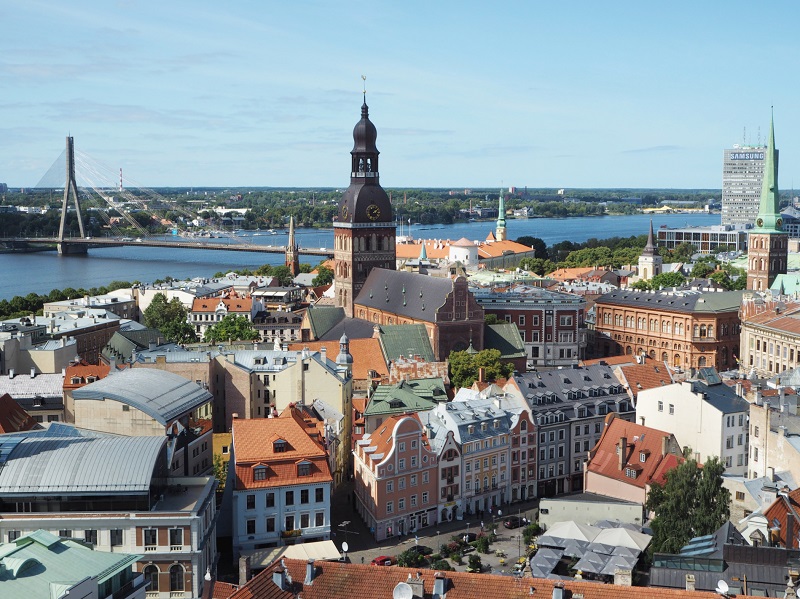
3 Week Itinerary For An Epic Baltics Tour & Finland Trip
I spent 2 ½ weeks travelling around the Baltics & Finland this summer. My Baltics tour and Finland trip covered over 1700 km and included four capital cities. Gotta be honest, the countries aren’t necessarily a top choice when it comes to your stereotypical summer destination. What made me go? The mystery aspect and being less overcrowded by tourists is always a big pull for me. Here are my tales, random observations, impressions and experiences from my Baltics tour & Finland trip. I hope you will find the information provided encouraging for your planning and inspiration.
Disclaimer : my blog post contains affiliate links. If you make a purchase through these links, I earn a small commission at no extra cost to you. The link is clearly marked with an *. Thanks!
Table of Contents
My Summer Baltics Tour Preparations
On this summer Baltics tour and Finland trip, I set aside three days for each Baltic capital city and booked an additional week for Helsinki in Finland. During my research, I focused on things to do that would keep me engaged and interested, such as special experiences, unusual art installations, viewing points and, of course, anything related to coffee culture, Camino and Leipzig connection.
Next, I looked at travel between the capital cities and how well they were connected. It became clear that although there is a train network, the fastest transport link is by bus. Flixbus and Eurolines operate in the Baltics, but the best and most luxurious option is LuxBus. Travel time between the cities is approximately 4 1/2 hours, and the crossing over to Finland is about 90 minutes, so you will lose a day to travel on this Baltics tour and Finland trip.
Once I had convenient flight dates, I booked the hotels, bus & ferry tickets and activities. Overall, I planned and booked my summer Baltics tour and Finland trip six weeks in advance for travel in August 2023.

Most of my travel budget went on accommodation, followed by food and activities. Travel (flights, bus & ferry ride) covered some of the least amount of my budget, which reflects how easy and accessible it is to move around in this part of the EU.
Please Note : All three capital cities of the Baltics had their own distinctive character and unique spark that engaged me. Therefore it is hard for me to choose a favourite one from my Baltic tour or suggest to you which one, out of the three, was the best.
Random Observations I noticed on my Baltics Tour & Finland Trip
- All countries had a low-key obsession with Brussels. The office buildings of the EU Commission are in central locations. There are many Belgian pubs and Brussels restaurants.
- All countries take a distance from the Soviet occupation. They acknowledge the past; and how it shaped their cultural identity and impacted their core values (e.g. freedom, independence), but there’s no glorification or desire to be associated with Russia.
- Locals are vocal about the war in Ukraine and their opinions towards Russia.
- Everyone happily speaks English. Locals are very friendly and open-minded. I had not a single bad encounter on my summer Baltics tour and Finland trip.
- The summer weather was unpredictable. The forecasts were often unreliable. Do pack rain clothes, a brolly and a jumper or two.
- Baltic countries are dog-friendly. Everyone has a dog and they have a presence in society, e.g. cafés in particular stood out.
- Bidet showers are common in public spaces and hotels.
- Baltic locals love foraging. The food market stalls are full of fresh blueberries, chanterelle mushrooms, strawberries, cherries and wildflower bouquets. The size of the food is gigantic!
- Consumer goods such as books or food were very expensive in the Baltics & Finland. Public transport, on the other hand, was one of the cheapest options I’ve encountered in Europe.
- Ladies, forget about Sephora and become obsessed with Lyko (Finland) and Tradehouse (Baltics). These beauty supermarkets have an insane offering of high-end quality and house-own brands.
- The Baltics & Finland use a fee system for PET and glass bottles. Usually 20-40p on top of the stated price. You’ll find the recycling machines outside the supermarket, often on the side of the building.
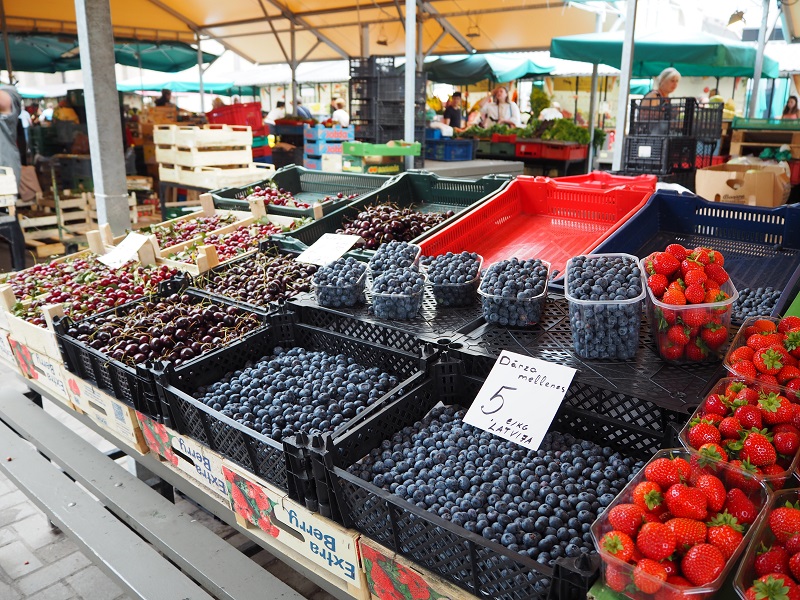
Baltics Tour Stop One: Vilnius, Lithuania
Vilnius, the capital of Lithuania, is cosy and super laid-back. The historic Old Town will feel homely and familiar in no time. The city retains this small-town character with a big international touch and cocoons you quickly. Add to that the friendliness of the introverted locals, an easy and accessible transport system and zero mass tourism.
The pace of life in Vilnius is slow. Take your time and enjoy all the cafés and restaurants in the world or sightsee the many UNESCO-certified churches. There is a bit of an edge to it, as there are many residential areas with panel blocks around, visible from viewpoints across town. But that is Vilnius, too. Often, most people don’t know much about Vilnius or haven’t even heard of it in the first place, which makes this city even more exciting to discover and get to know.

What’s THE top thing to do in Vilnius?
2023 is THE year to visit Vilnius. The city celebrates its 700th birthday by hosting many events, exhibitions and cultural offerings.
Vilnius received its UNESCO status in 1994 for its historic centre, marked by an array of churches. With 50 churches and 10 different religions, Vilnius is often described as the “Rome of the North”. This makes the city an important pilgrimage centre. More than 30,000 pilgrims visit Vilnius each year and have done so for over 400 years.
Another top thing to do in Vilnius during a Baltics tour is to experience a hot air balloon ride . Vilnius is one of the rare cities in Europe that allows hot air balloons to take off in the city. These flights can be expensive, but in Vilnius, they are on an affordable scale. There are a couple of tour operators providing trips. My tip would be to speak to the Tourist Information and find a good deal. I booked my experience through Get Your Guide (don’t get me started on them!). Even though I was with a local provider, the experience was in Lithuanian and I felt singled out. In that case, I would have loved a more international experience. A balloon trip costs around 140€.

Top Tip : Visit the Tourist Information , which has an array of materials, brochures, mini-guides and niche topics, e.g. hiking in Vilnius, neighbourhoods or pilgrimages. The staff are very knowledgeable, and their interest goes beyond the usual tour and experience sales. Take some of their recommendations with a pinch of salt, though. Their current café recommendations included Backstage Café, Strange Love and Coffee Spells – all places I visited but didn’t rate highly.
Where to stay in Vilnius
During my Baltics tour, I stayed at the 4*Neringa Hotel on the ever-so-trendy Gedimino Avenue, Vilnius’ eclectic flanering mile. Neringa is a historic landmark with a long history dating back to 1917 and operating as a hotel since the 1940s. It is known for its design and popular restaurant serving Lithuanian cuisine since 1960. The restaurant draws inspiration from a local fairy-tale by Mykolas Sluckis. It tells the story of Neringa, Lithuania’s Curonian spit (a long beach & dune stretch).
Neringa was fully refurbished in 2021 and has over 120 modern and tastefully decorated rooms. Mine was clean, and spacious, and I could fully relax here. The staff were amazing, too. Neringa’s rooftop bar is the place to be in town during a warm summer eve.
Vilnius charges a 1€ per night city tax.
BOOK*: Neringa Hotel in Vilnius

Did you know ? The Lithuanian word for “Thank You” is Ačiū, which is pronounced exactly like the sneezing sound. So if you hear the Lithuanians sneezing all the time, they are just very polite people.
Coffee, Camino & Leipzig Connection
Coffee Culture in Vilnius : cafés and brunch spots are aplenty in Vilnius. There are countless cute independent roasters serving cakes & pastries alongside modern chains (e.g. Chaif, Caffeine, Huracán Coffee). The quality of my coffee was mixed. I found Chaif served the best products in terms of quality/price. Plus their cafés are well designed and not just for coffee drinkers but attractive as a working environment, too. All cafés and brunch spots visited in Vilnius were dog-friendly.
Count around 3€ for a cappuccino and 8€ for brunch.
Best Cafés in Vilnius: Chaif, Cuproom and The Urban Garden Ok: Strange Love Avoid: Backstage Roasters and Coffee Spells Consider: Lola, Taste Map and Elska Café

Camino : Even though Vilnius is a centre for pilgrims, it wasn’t connected to the Camino at all. It was only in 2016 when a small group of local enthusiasts founded the Camino Lituano . The Lithuanian Way leads via Kaunas and connects with the Polish Camino. Theoretically, it passes by Vilnius but not through. However, Vilnius still feels connected to the Catholic Pilgrimage Way and has commemorated some of the “hot spots” in town with the typical Camino mark – a scallop on a yellow & blue backdrop. The Gates of Dawn, the Pilgrim’s office at the Church of St. Theresa and Vilnius Cathedral are Camino sites.
Leipzig Connection : I could not find a direct link to Leipzig. However, Vilnius is just as big. Vilniaus Gatvė food street is similar to Barefoot Alley. However, there is a connection to Vienna. I discovered a café by Julius Meinl – a brand that has a very strong presence in Viennese coffee culture.

What else is there to know about Vilnius before I move on with my Baltics Tour?
- The airport is small. Taking the bus into town is the best and fastest option. The train station nearby doesn’t have a ticket machine. You would have to pick up a ticket beforehand from the airport terminal.
- The climb up the Gediminas Hill to the tower is a challenge, but the views are stunning (especially worth it for the sunset).
- Not all churches are churches. One is a pancake restaurant.
- The nearby Vingis Park is a recreational and festival area. The parkland is natural and has free sports offerings e.g. a disc golfing course.
- The bus station is unpleasant and not a great area to be around. Make sure you don’t have to stay there for longer as needed.
Baltics Tour Stop Two: Riga, Latvia
Riga is on another level. This prosperous Hanseatic city by the river Daugava reminded me massively of Antwerp. Picturesque houses, quaint squares, engaging history and a lively atmosphere make Riga a memorable top spot on this Baltics tour. The Old Town of this merchant city is, of course, the touristic centre, but Riga invites you to explore beyond. The high concentration of Art Nouveau buildings with dramatic ornaments in the nearby neighbourhoods keeps the cityscape young and exciting. I’ve only spent a weekend here, but I was engaged non-stop and would love to visit again in winter.
What’s THE top thing to do in Riga?
Riga also carries the UNESCO title for its historic Old Town. The centre seamed with cobbled streets and cafés is the tourist hotspot. Highlights include the House of Blackheads , Liven Square , the Three Brothers and the Swedish Barracks near the Powder Tower.

The real attraction, however, is the exquisite art nouveau architecture . Indulge in the UNESCO-recognised Baltic art nouveau style, which dominates the cityscape. Over 800 buildings (⅓ of the city) designed by 25 renowned architects adorn Riga’s streets and keep it fresh, young and thriving. Make sure to visit the Art Nouveau triangle Alberta – Strelnieku – Elizabetes Iela. There are several shops, a museum and countless symbolic decorations to admire. For chunky perpendicular and romantic art nouveau style stroll along the Brivibas Iela.
Finally, take in the iconic panorama views from St. Peter’s Church . The generous viewing platform is accessed via a lift. There’s lots of space for moving around and postcard-perfect views of Riga. Standard tickets start from 8€.
Top Tip : A place I surprisingly enjoyed was the shopping centre Galerija Centres . The food court was amazing and came with an intimate rooftop terrace. A free exhibition encourages visitors to use the stairs rather than the escalators. The focus is on the first excavations onsite in 1937. Various artefacts and historical pictures display the developments, plus the centre won a prestigious award by the International Council of Shopping Centers, in 2008.
Where to stay in Riga
At first, I wasn’t too happy about the location of my hotel, as it was quite a walk away from the bus terminal and Old Town. Then I realised I stayed in the middle of the Art Nouveau triangle with the top-voted cafés nearby. My hotel, the AC by Marriott , was located centrally in the “silent centre”.
The Art Nouveau triangle was 5 minutes away; the town centre was roughly 15 minutes. The area had several highly rated restaurants and cafés around. My hotel room was smaller than my previous one in Vilnius, but I slept well and had everything I needed. Fluffy towels, daily housekeeping and a secure environment. After a day, I was familiar with the area and found shortcuts to the Old Town.
Riga charges a 1€ per night city tax.

Coffee Culture in Riga : Riga has countless cafés and brunch restaurants. The quality varied in the food, but my coffees were consistently better than in Vilnius. I would happily revisit most of these places, even if not all components have always been fully satisfactory.
Most cafés and brunch spots visited were dog-friendly. Count around 3.20€ for a cappuccino and 8€ for brunch.
Best Cafés in Riga: Rocket Bean, Conta Speciality Coffee, Cruffin Ok: Bakery Mikla Avoid: The Place that doesn’t need a Name Consider: Have you met Miss Jones? Mr Fox, MiiT Coffee, Terra, Mr Bunny Kitchen

Camino : Before my summer Baltics tour, I researched the Camino in Latvia and wasn’t too successful. I asked the Tourist Information which confirmed, that there is an active pilgrim community in Latvia. Riga is connected to the network. The best starting point in Riga is the St. Jacob’s Church near The Three Brothers. You’ll find the familiar scallop. A way marker is nearby, too.
Leipzig Connection : I haven’t stayed long enough in Riga to find a connection to Leipzig, but since Riga is part of the Hanse, there have been ties to Germany. I may have spotted the German language in buildings and on murals. The city of Bremen gifted Riga a replica of their famous Town Musicians in 1990, which you can find near St. Peter’s Church.
What else is there to know about Riga before I move on with my Baltics Tour?
- I picked up a fascinating book that caught my eye. It is a mixture of short tales & myths from the Old Town, intertwined with historical context and illustrated with local artwork. The Dali-inspired surreal art style, as well as the storytelling, are exquisite. Check out “Stories of the Old Town or the completely true History of Old Riga”, available at Jānis Roze bookstore.
- Riga’s Old Town is full of surprises and narrow alleyways. Make sure you explore everywhere, even behind broken city walls. You never know what you may find there…
- You’ll find the authentic art nouveau café Vilhelms Kuze on Jekaba Iela.
- Have a wander around the food market halls and the newly gentrified area Spīķeri.
Baltics Tour Stop Three: Tallinn, Estonia
Oh, Tallinn, where to start? Tallinn is a gem of a city. It is supremely manicured, polished, effortlessly modern and gentrified. Tallinn is not as big as Riga, nor are the energies as buzzing. However, the international flair is there, and it is crystal clear that the medieval character is Tallinn’s bread and butter. At times, this was an overkill for me and felt too perfect and pristine. I can appreciate Tallinn for its history and the care that goes daily into the Old Town’s preservation. The neighbouring quarters are equally well maintained and reflect a high standard of living and lifestyle. An area I enjoyed was the Rotmann Quarter, converted warehouses with shopping opportunities, cafés, art and an energetic buzz.

What’s THE top thing to do in Tallinn?
The top thing to do in Tallinn is to sightsee and admire the highly preserved medieval city wall with its essential Turret Towers . Approximately 25 towers remain, and you can visit all of them (have your bingo card at the ready!). They provide lovely views and perspectives over the Old Town. The best parts still intact are the Kiek in the Kök museum (with underground passages), Helleman Tower next to the Viro entrance gate, Nunne & Sauna Tower , and the stretch Plate Tower along Laboratooriumi.
Another popular spot is the Telliskivi area , a gentrified creative quarter with many urban and cool cafés, restaurants and local crafts & artists. To the north of the Old Town is the neighbourhood Kalamaja , known for its Estonian wooden house constructions.
Apart from the city wall, Tallinn is a popular day trip destination from Finland.
Where to stay in Tallinn
I was not so lucky with my choice, the CityBox Tallinn . I had lots of stress and drama upon my arrival. They had cancelled my booking without telling me. The rest? Well, this accommodation was more a glorified hostel but defo not a 4* hotel. There was zero service and the cleanliness was desirable. I was disappointed as I usually love quirky and minimalistic concepts. This time, my chosen stay felt like “a place to sleep” rather than a relaxing holiday hotel. Bugger! At least the views were good and the bed was comfy.
Alternative accommodation in Tallinn : if I visited Tallinn again, I would look at Nunne Boutique Hotel, Metropol Spa Hotel (the Spa is important as there is a second hotel), Nordic Hotel Forum or Tallinn City Hotel
There is no city tax in Tallinn as of August 2023.

Coffee Culture in Tallinn : I didn’t get far at first with my research, but then the Tourist Info pointed out two exhibitions: one about Budapest cafés, and the second about Tallinn. Both exhibitions were shown at the Kiek in de Kök Museum. I learnt that Tallinn has a thriving coffee culture and is home to Estonia’s oldest coffee house, the Café Maiasmokk . This coffee house not only has a historic coffee room but in true Hanse style, there is a marzipan confectionery, too. Overall, the coffees I had in Tallinn were too bitter for my liking. The pastries made up for it.
Most cafés and brunch spots visited were dog-friendly. Count around 3.50€ for a cappuccino and 11€ for brunch.
Best Cafés in Tallinn: Maiasmokk, Gallery Café Ok: OA Coffee, Reval, Levier Consider: RØST, Trip, Surfcafé, Värav, Orangerie

Camino : You can start your pilgrimage in Estonia. The Tourist Info wasn’t helpful at all and provided no information for my research. After a long search, I finally found the familiar sign near St. Mary’s Church. Unfortunately, there was no further way marker. Best to study the full Camino Estonia route in advance to avoid getting lost.
Leipzig Connection : OK, I wouldn’t necessarily take that as a direct link, but the first car number plate I saw in Tallinn listed Leipzig as a car dealer. I unexpectedly found my Leipzig at the Architecture Museum . On the bookshelf between the Helsinki and Berlin sections, there were two books about my Leipzig.
What else is there to know about Tallinn before I move on with my Baltics Tour?
- Tallinn has many high-end quarters worth checking out if you want to escape the medieval overkill for a while. Currently, the harbourside gets an upgrade. The Rotermann Quarter is another shopping and creative area with converted warehouses.
- The Baltics are rich in architecture. More on the topic can be researched at the Architecture Museum and its free library.
- Tallinn has a handful of art nouveau buildings scattered around the walkable town centre. Well-known buildings include the Dragon House (Pikk 18) and the Reval German Theatre.
- More points of interest outside of the Old Town: Kadriorg Park & Palace, Pirita convent ruins, Vabaohumuuseum, Port cruise terminal with a viewing platform.
- The harbourside is currently under construction but still worth checking out. Terminal D has a lovely square, perfect for a quiet spot for reading, and there are free exhibition displays in various places. One exhibition is on the reconstruction of the harbour, whilst another is on alcohol culture in Estonia.
- Terminal D is the brand-new terminal for ferries to Finland. The slightly more expensive Tallink sails from Terminal D. Terminal A & B are outdated and not as grand, but they are currently under renovation.
Baltics Tour Final Stop: Helsinki, Finland

Helsinki is not your typical sightseeing city. It is not London or Rome, but more like Madrid. You come here to experience its Nordic lifestyle and get to know Finnish culture. That means, for example, going for a sauna session at Allas Sea Pool, riding the Ferris wheel, island hopping with the excellent ferry links, strolling along Senate Square or eating a reindeer hot dog at the market. Of course, Helsinki has an insane amount of unique architecture to admire. You can also party at a music gig at Tavestia Night Club, get sick on the rides at amusement park Linnanmäki (Lintsi), try delicious Fazer chocolate, read at the trendy Oodi library or buy Moomin mugs to take home. Helsinki is all about creating life moments.
What’s THE top thing to do in Helsinki?
Helsinki has one of seven UNESCO sites in Finland. Suomenlinna , a Swedish sea fortress, is Helsinki’s most visited attraction. The fortress was built over 8 inlets. Two of them are residential areas and home to approximately 800 inhabitants. The overall vibe is rural. You can explore the underground bunkers, visit the museums, or admire the King’s Gate. I have to be honest, Suomenlinna didn’t impress me much. It was too quiet for me and the history engaged me only a little, plus the cobbled streets were exhausting and tiring to walk around all day. It was okay for a stroll around on a Sunday afternoon and luckily the experience was free, as my weekly transport ticket included the ferry to Suomenlinna.

Helsinki is a treasure trove for architecture and design . Both have a respective museum in the Design Quarter. The Helsinki Art Nouveau guide is one of the best-selling books in town for self-guided tours around the neighbourhoods. You can easily fill an afternoon or two admiring the buildings. Popular areas are Katajanokka and Huvilakatu in Eira – apparently Helsinki’s prettiest street. The Helsinki City Museum offers guided tours in English, but they aren’t as regular. They need to be booked in advance. Make sure to check the Helsinki City Museum events calendar for the next available tour in English.
Other tourist favourites are the Helsinki Cathedral and the City Museum . The latter is free to visit and voted Finland’s most popular museum. The small exhibition about Helsinki is well-curated, even though the section on Finnish sauna culture is a bit questionable.
Another museum worthy of your time is the National Museum of Finland . Here you learn all about the history of the Finnish people and how they developed their cultural identity through the centuries. Finns originate from Asia and have been influenced heavily by the Russian and Swedish occupation before becoming independent in 1917. The museum not only covers history but also cultural aspects such as Finnish mythology (the Kalevala), coffee, metal music and the uniqueness of the Ugric language.

Where to stay in Helsinki
On my summer Baltics tour & Finland trip, I spent a week at the ever-so-cool art-inspired Hotel AX in Jätkäsaari. This stylish new hotel combines art with relaxation. Every room is themed with a local artist. Mine was a phoenix fighting an octopus inspired by a Finnish poem. The bedding was so luxurious and super soft, I slept well here and I usually have a light sleep in hotels. AX was lovely, modern, top service and exactly what I look for in a hotel.

BOOK*: Hotel AX He lsinki
Jätkäsaari was a wonderful area: modern, developed and well-connected to the centre. It took 10 minutes by tram 9 to get to the central train station. Nearby were supermarkets, a lovely harbourside and a quirky art installation that could rival Manneken Pis in Brussels (have a look at art installation Bad Bad Boy by Tommi Toija). The views from the SkyBar at Clarion Hotel were exquisite.
There is no city tax in Helsinki as of August 2023.
Coffee Culture in Helsinki : A Finnish café visit is certainly not cheap with an average of 10€ for coffee and a treat. I’m happy to report though that all coffees and kakkukhavi (coffee and cake) sessions were of great quality. I tested chains (e.g. Paul’s, Fazer, Espresso House) and small independent ones. The Finnish chain Fazer was my favourite as the coffee was delicious and their confectionery was divine. I found Finnish establishments had a friendlier demeanour than some of the independent cafés run by internationals.
Best Cafés in Helsinki: Kaffeezentralen, Fazer Café, Good Coffee Company Ok: Andante Café, Paul’s Café, Johan & Nyström, Lauran Kaffila (Vantaa) Consider: Cafétoria, Bakery Levain, Kaffa Roastery, Ekberg 1852, Café Savoy, Café Esplanad
Find Out More : Brand New Coffee Guide to Helsinki Cafes & Finnish Coffee Culture

Camino & Leipzig Connection : Unfortunately no Camino connection. Finland’s historical development provides better context and understanding here: the country is primarily pagan and its rich mythology (Kalevala) has great significance for them. Finns weren’t too keen on getting christianised when the Catholic Church gained influence in Sweden in the 11th century. It never really took off. There is, however, one Roman Catholic pilgrimage site, the Kirkkokari . Connected to it is the legend of bishop Henry who was killed by Lalli on the ice of Lake Köyliönjärvi. There is, however, no fundamental proof that these characters have actually existed. Every summer, you can join an organised pilgrimage tour to the site. Pilgrimages as such are seen as a way of slow travel and Finns do appreciate quietness and spending time finding their inner balance. Find out more about Pilgrimages in Finland at the pilgrimage centre at Turku Cathedral.
No Leipzig connection so far, but I got to see, do and experience other things instead. Overall I loved my time in Helsinki and really look forward to visiting again.

What else is there to know about Helsinki before I travel home?
- Swedish is an official language and is very present in everyday life. It sometimes felt more dominant than Finnish.
- Finns are very happy when you make some effort and speak their language. They are the nicest people I’ve ever encountered on my travels. Introverted yes, but kind, direct & honest. I vibed well with their general demeanour and humour.
- Books, food & drinks are expensive in Finland. Public transport on the other hand was affordable.
- Maybe not: the churches (Cathedral, Rock church, Kampin chapel, Uspenski) required a 5€ entrance fee.
- Finnish restaurants are often fine dining establishments. A meal starts from 80€ onwards.
- Moomin mugs cost around 25-40€. I found mine for 18€ at the supermarket S-Market Kasarmitori.
- If you have fallen in love with Fazer chocolate, too, there is an experience centre in Vantaa.
- Helsinki’s name goes back to the Swedish “Helsinge fors” (Helsinge rapids), which is a real place, the Vanhankaupunginkoski waterfall. You can find it in the north-east of town.
- The Finnish summer may be warmer and nicer in June/July. The weather in August was temperamental and cold. There was also no Midnight sun.

FAQs on My Summer Baltics Tour and Finland Trip
I understand this is quite a lengthy post, and you may have some quick questions about my Baltics tour and Finland trip. You can, of course, always come back to any section of my post and read in more detail what you’d need for your trip. If you have questions or need help, please get in touch and I’m happy to assist.
How did you travel around the Baltics?
The Baltics and Finland belong to the EU and Schengen Zone. Therefore there are no border checks, and travelling around the area is easy. There are train connections, but most of the logistics are done via a comprehensive bus network. Flixbus as well as Eurolines operate in the Baltics. I found the best price/quality (and most luxurious) option is LuxBus , an Estonian company that connects Vilnius with Riga, Tallinn and beyond. The LuxBus buses are clean and modern with comfortable seats. There is onboard entertainment, including films, TV shows and free Wi-Fi. The routes from Vilnius to Riga and Riga to Tallinn took 4 1/2 hours.
When should I book my Baltics Tour & Finland Trip?
I booked my Baltics tour and Finland trip 6 weeks in advance for August, the pinnacle of European summer. However, the weather was very mixed and often, the forecast was unreliable. The average temperature was 20 degrees, overcast and moderate rain showers. Not necessarily “summer” like. Next time, I will try and book a Baltics tour & Finland trip for June or July.
Do they speak English in the Baltics & Finland?
All locals speak English and happily switch when you explain to them politely that you can’t speak their language. They are very understanding and accommodating. The level of English proficiency is good. They can use a wrong noun or preposition, but you’ll get the meaning nonetheless. Baltics and Finns make efforts to communicate and strongly identify with the EU. Of course, they will be impressed if you make some effort, too and speak their language.
Is this Baltics Tour and Finland Trip solo travel-friendly?
Yes, the Baltics and Finland are safe countries to travel to. I got asked twice if I travelled solo and received positive encouragement from the locals who asked. The people of the Baltics and Finland are also introverted and will not actively seek out contact with you, so you can relax and most likely won’t get harassed.
Thanks so much for reading. If you’ve enjoyed my Baltics Tour and Finland Trip post and would like to support my blog & research, you can do so via B uy Me a Coffee .
Till next time,
You may also enjoy reading:
- Complete 3 Day Copenhagen Itinerary For Your 2022 Travel Plans
About SoloTravelStory
Blogs about her travel adventures in the world from her London home.
You Might Also Like...
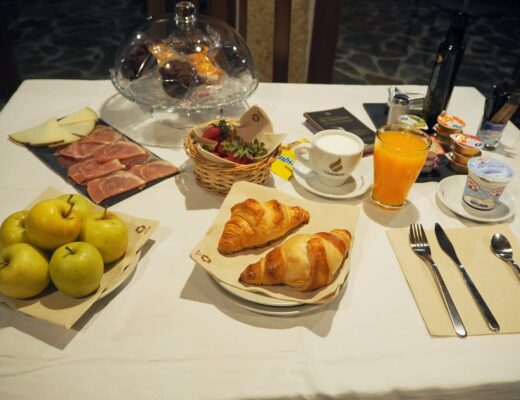
Day 3 On The Camino Frances. Palas De Rei To Arzua

47 Random Facts about Santiago de Compostela That Will Make You Want To Visit
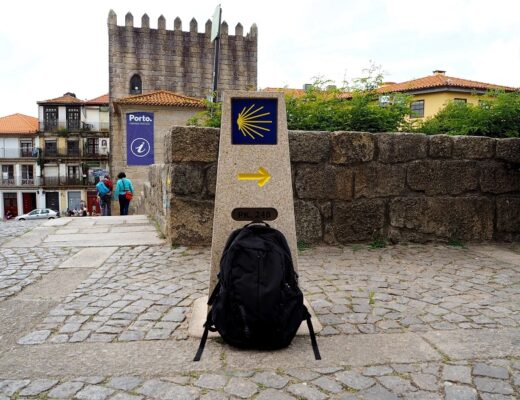
My Camino Portuguese Coastal Route Itinerary For A 15-Day Hike
11 comments.
Riana Ang-Canning
What a great tour through the Baltics and Helsinki! Based on your post, I’m most excited to visit Riga, as the architecture and Old Town look beautiful. But you’ve sold me on all of these cities (especially a church that serves pancakes? My kind of church!). Thank you for another amazing, well-researched post with lots of great info and beautiful photos. Can’t wait to visit the area one day soon!
Looks like we stood in the same place in so many of your photos when I did the exact same tour of the three Baltic countries. I loved them all but probably Vilnius came across as the most enchanting for me – for just the same reason as you discovered – that the pace of life is slow here. I did enjoy seeing the lifestyle in the three capitals and despite them being do close to each other I found each had a very different character.
James Fahey
Really in-depth post as usual!
I think the Baltics are both underexplored and underappreciated by most people in Western Europe which is a shame. I’ve only been to Riga and found it to be less crowded than other European cities and a fun place to spend a weekend. Vilnius has since been added to my list and this post shows me what I can expect which is great. A hot air balloon ride would be a pretty amazing thing to do. Six weeks is a good shout when putting together a trip of this stature.
Good idea placing yourself close to The Art Nouveau triangle which I enjoyed a lot in Riga. Helsinki also looks worth a visit with a good number of UNESCO sites, museums and cathedrals too!
Looks like you had a huge and wonderful journey so fair play for completing it. Well done!
Loved reading about your tour through the Baltics and into Finland. We have visited Riga, Helsinki, and Tallin (just a day trip from Helsinki), but it was a long time ago so your post has prompted us to think about returning as well as finally getting to see Vilnius. How great that you can do a hot air balloon ride from the city. (Interesting about booking via the tourist information if you want a more international experience.) As ever, this post was extremely well researched with lots of practical advice about travelling through these wonderful cities. Like you, we often find that tourist information centres offer a wealth of advice on attractions. As you say, each city has a unique character and it’s difficult to pick a favourite – we’ll just have to visit them all!
Lyn (aka Jazz)
There is so much that I love about this post. I have not seriously considered any of these locations but now I’m really interested. The Art Nouveau architecture would be a major pull for me in the cities but I have to admit, the whole medieval vibe and turret towers in Tallinn would work for me, too.
I always appreciate your coffee culture focus and reviews and I really liked the tips/what else to know
As I read each section I kept thinking “oh, this is my favourite” and then I read the next section. I shall have to plan a trip that includes all of them. This list is not getting any shorter!
Lyn | http://www.ramblynjazz.com
I had been trying to search for some reading materials about the Baltics for awhile now and this post is a wonderful addition to what I have collated so far. You let us in to some quirks about each city and I think it speaks a lot in trying to find out what makes a city tick. Can’t say I have my favorite yet but it would be exciting to find out and even retraced your steps. To know that it is certainy less crowded in the height of summer in the Baltics is something that every discerning traveler like to poke one’s nose into. Thanks for sharing this with us Carolin and happy travels #flyingbaguette
Jan – https://flyingbaguette.com/
Sounds like an amazing time! I loved Helsinki and wasn’t expecting to, even in the winter. I wish we got to Tallinn but with covid protocols in 2022, we kept it safe and didn’t leave the country. I love the architecture though. I truly believe the Baltics & Scandinavia are really underrated destinations for travelers. They have so much to offer. I’d love to visit in the summer and compare it to the winter.
I’m one of those sorry people who know little about the Baltic capitals, sad to say. Hopefully one day I will make it there, as they seem to all be cool places to explore. Helsinki looks beautiful, too, and I especially love that rainbow street. That Suomenlinna UNESCO site may not have captured you, but I think it might be something I’d enjoy so thanks for including it
You and I need to swap our experiences. I did this exact trip but in winter (and minus Vilnius which is now top of my list to visit). I absolutely adore Riga though, one of my favorite European capitals and cities in general. I’m glad you got to spend extra time in Helsinki. I really wanted more time there so I’m going to have to go back. and I’ll have to do all of this in summer I think
What a fabulous article! If I already had a strong desire to explore the Baltic, now my curiosity has been piqued. It’s incredible how these countries are so undervalued and unexplored in terms of tourism, compared to Western Europe. All the tips in the post are enlightening and encourage everyone to visit these fabulous cities, but your photos give the content a huge boost! If anyone had doubts about putting the Baltic countries on their travel list, I think they’ve been cleared up!
Clazz - An Orcadian Abroad
Great post! I would love to do this trip some time, especially the ferry between Tallinn and Helsinki ever since I found out you can do that. Although Riga looks amazing (and has flights from Edinburgh which is always a bonus!) and has been on my list for years.
We stayed in a CityBox in Oslo but it was just for a night which was fine – I agree though, very no-frills and basic, check in on a screen in the lobby. We just needed somewhere to stay when we arrived before our train the next day, and when we got back to Oslo we stayed in a nicer hotel, which I was glad we did to be honest.
Leave a Reply Cancel Reply
Save my name, email, and website in this browser for the next time I comment.
© Copyright 2019 - Solo Pine. All Rights Reserved. Designed & Developed by Solo Pine
Privacy & Cookie Policy
Privacy overview.

- Destinations
- Travel Checklist
- Travel By Sea (Ferries)
Travelling the Baltics – Budget Backpacking Guide For 2024
Travelling the Baltics is an excellent way to discover some of Europe’s most charming destinations. The Baltic states are often a forgotten travel destination, with many people preferring to jet off to the Amalfi Coast or a Greek island.
However, this part of the world is truly magical and offers so much to travellers, so yes, the Baltics are definitely worth visiting! Backpacking the Baltics is one of the best ways to discover this part of Northern Europe.
If you are looking for somewhere off the beaten path with beautiful scenery, but that doesn’t attract hordes of tourists every year -this is the destination for you!
The Baltics refers to the countries of Estonia, Latvia, and Lithuania. Each is unique in its own right, and a trip around this region isn’t complete without visiting each one.
This article will include everything you need to know when backpacking the Baltics. That includes transport, currency and of course the best places to see!
So, without further ado here are the things to know before travelling the Baltics.
Boring stuff: I have visited each of the places I recommend and give you my honest opinion, warts and all. All photos are my own unless otherwise stated and may not be reproduced without permission. Affiliate links may earn a commission at no extra cost to you.
Table of Contents
Where are the Baltic Countries?
The Baltics is a northeastern region of Europe that is located on the eastern shores of the Baltic Sea. It contains the countries of:
How do you Travel Around the Baltics?
When it comes to travelling the Baltics, there are a few different ways to get around.
Although it’s possible to travel around the Baltics by plane, or train, the bus is the most popular choice.
Generally, public transport is pretty cheap and convenient in this region, making most areas easily accessible.
You can also choose to go on the Ultimate Baltics road trip and hire a car. It’s often a cheap option and gives you the freedom to visit wherever you want.

Travel by Bus
The bus networks in Estonia, Latvia, and Lithuania are very good, and they are a great way to travel around each country.
A lot of the buses come with wifi, plugs, and USB chargers to make your journey comfortable too which is always a bonus.
Some even come with free or low-cost meals, drinks, and a screen with movies and games!
Not only is travelling by bus cheap and comfortable but there are a variety of companies to choose from.
Some of the companies include Ecolines, Ollex, and Busturas. Eurolines also operates in the Baltics, but only in Latvia and Lithuania, not Estonia.
Another popular bus company is LUX, which operates in all Baltic countries.
Travel by Train
Trains are a reliable form of transport in the big cities and within each country.
However, when it comes to crossing the border between countries it’s best to go by bus.
Getting a train service between countries is nearly impossible, and if you can get one, they are often very unreliable.
Hiring a Car
Hiring a car is one of the best ways to travel the Baltics.
Estonia, Latvia, and Lithuania aren’t very big countries so driving between them doesn’t take nearly as much time compared to other parts of Europe.
The highways are also pretty well maintained, and easy to use. Of course, as you head into more rural areas the roads become less maintained, but that’s to be expected in any country.
Travelling the Baltics this way is a great adventure and gives you plenty of flexibility and freedom. You don’t have to rely on public transport timetables and plan your trip around them.
If you do choose to hire a car, make sure you have the right insurance and driving license. There are also plenty of hire car companies located in the Baltics so do your research to find the best deals.
Border Control
Since Estonia, Latvia and Lithuania are all in the EU, there are no internal borders. That means you can drive and cross borders whenever you want, without any drama.
Baltic Ferry Cruises

The Baltic is home to ports offering passenger services around the region. There are many ferry services as well as specialist cruises that take in some of the top destinations in the region.
One of the most popular routes is the Helsinki to Tallinn / Tallinn to Helsinki ferry. Other services also include Stockholm in Sweden and St/Petersburg in Russia.
There is an overnight ferry between Stockholm and Tallinn taking 17.5 hours.
See the Direct Ferries website for more info on routes and prices.
Money in the Baltics
To make things easier, Estonia, Latvia, and Lithuania all use the euro. The value of the currency is of course the same, but each country has different designs on their coins.
Cards are widely accepted throughout the Baltics, especially at restaurants, hotels, and shops. However, when it comes to small markets it’s important to keep notes and smaller denominations on you, as often they won’t have much change to give you in return.
Cost of Backpacking the Baltics
Languages in the baltics.
Each country in the Baltics has its own language:
The second language for many people in the Baltics is Russian. This is especially the case for older people who were schooled during the Soviet occupation.
English is also widely spoken in the Baltics too, which is always good to know.
It’s important to remember that even though people here may know Russian, they may not necessarily want to be associated with Russia today. That’s why it’s always best to speak to people in English first if you don’t know any of the other Baltic languages!
Best Places to Visit in the Baltics
Here is a brief run-through of each country, and the destinations you need to visit.

Estonia is a wonderful country and is finally starting to get traction with travellers. This underrated gem is incredibly affordable and has a wealth of destinations to offer. With medieval cities, beautiful coastlines and scenic islands, Estonia has something for everyone!
Here are some of the top places to visit in Estonia:
- Tallinn – Estonia’s vibrant capital
- Tartu – the country’s second largest city
- Lahemaa National Park – perfect for hiking, swimming and getting back to nature
- Saaremaa Island – Estonia’s largest island
- Parnu – small, but charming city in the southwest of the country

Although not one of the most popular countries to visit in the Balkans, Latvia offers so much to tourists. With incredible cities, ancient castles, pristine beaches, and breathtaking national parks, it’s a country you don’t want to miss.
Here are some of the top places to visit in Latvia:
- Riga – colourful capital of Latvia
- Gauja National Park – home to stunning nature and a 13th Century castle
- Cēsis – castles, churches, and a quaint old town
- Jurmala – miles of sandy beaches a short train ride from Riga
- Kuldiga – a beautiful town preserved by time where the modern world seems far away

Lithuania doesn’t seem to get much publicity when it comes to travel, but it’s one of the most beautiful countries in Eastern Europe. The country is home to incredible architecture, UNESCO World Heritage Sites, beautiful scenery, and plenty of history.
Here are some of the top places to visit in Lithuania:
- Vilnius – the charming, laid back capital of Lithuania
- Klaipeda – major port city in Lithuania
- Trakai Island Castle – one of the country’s most beautiful attractions
- Kernave – the ancient medieval capital
- Kaunas – second largest city
Check out this list of 8 adventurous activities in the Baltics from Culture Trip!
The weather in the Baltics

The climate in the Baltics is influenced by the Baltic sea and the Gulf of Finland and differs depending on which country you visit.
Generally, the Baltic winters are long and cold, with the summers being short and warm.
Estonia: The warmest month to visit Estonia is July, with an average high temperature of 21°C. The coldest month to visit is February, with an average low temperature of -7°C.
Latvia: The warmest month to visit Latvia is July, with an average high temperature of 23°C. The coldest month to visit is January, with an average low temperature of -5°C.
Lithuania: The warmest month to visit Lithuania is July, with an average high temperature of 23°C. The coldest month to visit is January, with an average low temperature of -6°C.
Best Time to Visit Estonia, Latvia and Lithuania
The Baltics can be visited all year round, although it does depend on where you want to visit and the activities you want to do.
Generally, the most popular time to visit is between late June to August when the temperature is at its warmest and there is plenty of sunlight.
However, during this time locals and tourists alike flock to the coast and more popular areas of the Baltics so these places will be busier than normal.
If you don’t mind the weather being a little bit cooler, you can choose to visit in May, early June, or September. The crowds will be thinner, and the conditions are still favourable making it a great time to visit.
Accommodation in the Baltics
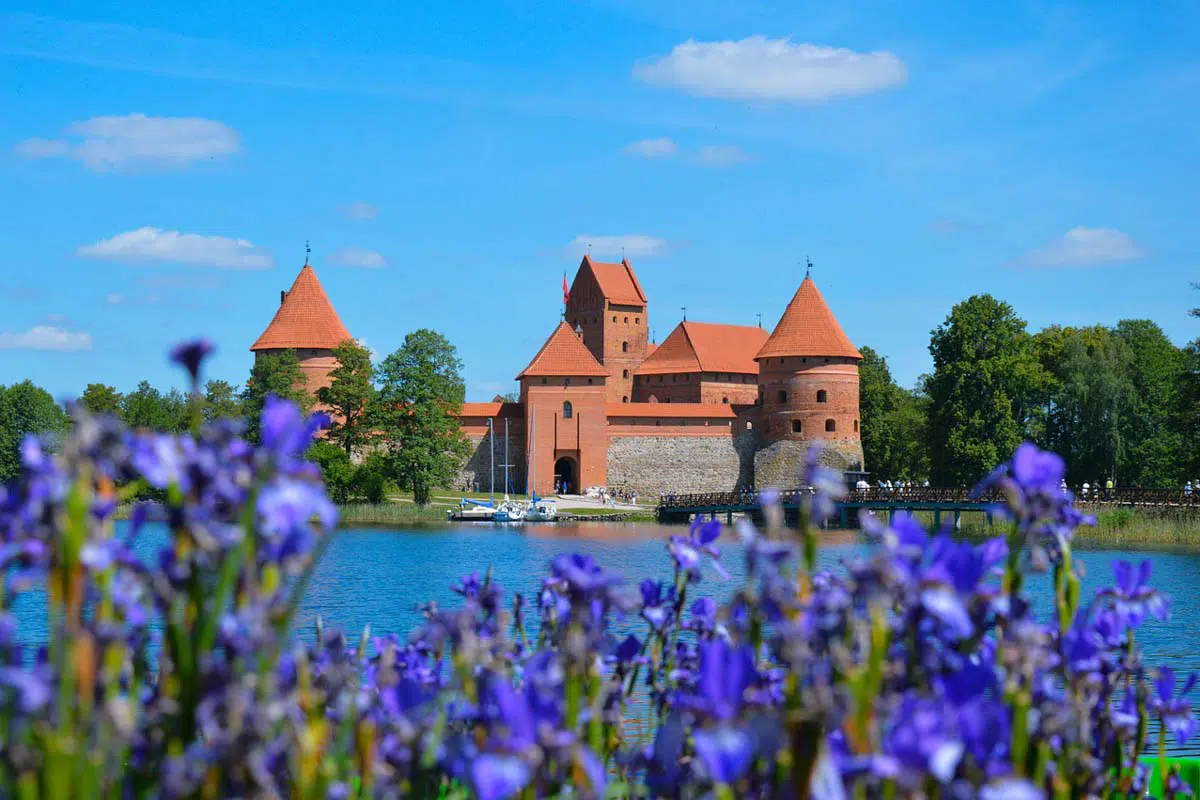
Travelling the Baltics is generally pretty cheap, and that goes for accommodation too. However, there are plenty of options for different travel styles.
You can splurge on a 5* hotel if you want to, or save your pennies, and go for a dorm bed instead.
Below are a few options when it comes to accommodation in Estonia, Latvia, and Lithuania.
Hostels/Cheap Accommodation
Tallinn, Estonia – Old Town Hostel Alur – perfect location within Tallinn’s old town
Tartu, Estonia – Hostel Tartu – Spacious hostel with luxuries including a sauna and bar
Riga, Latvia – Old Town Hostel and Backpackers Pub – Beautiful hostel set in Riga old town
Jurmala, Latvia – Vikingu guest house – Close to the beach with an outdoor pool
Vilnius, Lithuania – Hostel Jamaika – Hostel with plenty of spacious communal areas
Kaunas, Lithuania – Hostel Liberty – Friendly hostel close to tourist attractions
Tallinn, Estonia – Hestia Hotel Kentmanni – Excellent location with a spa and wellness centre
Riga, Latvia – Boutique Hotel KRISTOFS – Located in Riga old town with beautiful interior
Vilnius, Lithuania – Hotel Vilnia – Set in a 19th-century building with a lounge bar
For other accommodation in the Baltics, you can find a wide range of choices on Booking.com , HostelWorld , and Trip.com .
To find cheap accommodation, try and search for a place to stay with cozycozy .
Wild camping is allowed and even encouraged within the Baltics, and that goes for Estonia, Latvia, and Lithuania.
However, you should never camp in designated protected areas like national parks, nature reserves, or military zones. There will be signs to advise you when it comes to this.
Eurocapmings has over 100 campsites across the region (35 in Estonia, 37 in Latvia and 34 in Lithuania).
Is it Safe to Travel the Baltics?
The Baltic states are politically stable and developed nations, and so are generally very safe for tourists.
However, as with any country, petty crime is prevalent in touristy cities like Tallinn, Riga, and Vilnius.
Scams can also be quite common including being overcharged steeply by taxis and the ‘night club scam’. This is where people (especially women) if you’re travelling as a male, will encourage you to buy drinks all night, and leave you with a very expensive bill.
It may also be important to pre-plan your route slightly. If you are camping or spending a large amount of time in outdoor areas a vaccine for tick-borne encephalitis may be a good idea.
Our partners at SafetyWing provide cover for travellers, backpackers and Digital Nomads. Get a quote here and ensure you have the proper cover for your trip.
Top tips whilst Travelling the Baltics
- Whilst some nationalities don’t require visas to enter Estonia, Latvia, and Lithuania, some will so it’s important to do your research first.
- The Baltic countries are incredibly proud of their national identity, and many people don’t like to be associated with Russia after the Soviet occupation. Be mindful of discussing politics with local people.
- Although the majority of places accept cards make sure you keep loose change on you. This will be needed for buses, and tips if you decide to leave one. It isn’t a standard rule to tip but it’s greatly appreciated.
- Although many of the Baltic dishes consist of meat, vegan and vegetarian restaurants are picking up popularity, especially in the big cities.
- Estonia, Latvia, and Lithuania have some of the fastest wifi speeds in the world and are well ahead when it comes to free publicly accessible wifi.
- You can get a sim card that covers all the Baltic countries, which makes keeping connected incredibly easy.
- Although taking a flight across the Baltics may be quicker, travelling by bus is often the best option. It’s much cheaper and has plenty of luxuries including meals, drinks, and movies.
- Unfair pricing of taxis is still pretty common in this region, so be very mindful if you are choosing to travel around by taxi.
- When travelling the Baltics it’s important to research the climate before you visit. Even if you are travelling within just one of the countries, the weather can differ dramatically between the north and south.
Are you ready for a trip backpacking the Baltics?
Does travelling the Baltics sound like something you need on your bucket list? Well, it definitely should! Although not one of the most well-known or travelled areas of the world, the Baltics has so much to offer.
Whether you want to explore capital cities, lounge on the beach, or trek through national parks, this region has it all.
When it comes to backpacking the Baltics, there are so many incredible sights to see. And the best part? As the Baltics don’t have the popularity of other areas in Europe (although it should), you won’t have a problem with crammed tourist attractions.
With a great public transport network, cheap accommodation, and plenty of tasty dishes to try, the Baltics needs to be next on your list!
More Backpacking Guides from thetripgoeson:
Balkans Backpacking Guide
Russia Backpacking Guide
Central Asia Backpacking Guide

About the author: Steve Rohan is a writer from Essex, England. He has traveled to over 60 countries, lived in Armenia, China and Hong Kong, and is now living the digital nomad life on the road.
Steve prefers “slow travel” and has covered much of the world by train, bus and boat. He has been interviewed multiple times by the BBC and recently featured in the documentary Scariest Places in the World . See the About page for more info.
Where I am now: Yerevan, Armenia 🇦🇲
2 thoughts on “ Travelling the Baltics – Budget Backpacking Guide For 2024 ”
Steve, I found your backpacking the Baltics article extremely valuable. Thanks for sharing. I’m heading this spring for a 6 week, self guided, slow travel trip visiting all 3 countries. I especially enjoy small villages, hamlets, etc. Will I have any problem finding lodging in these areas? Any advice will be greatly appreciated. Safe travels!
Hi Rick, thanks for your comment. A 6-week trip around the Baltics sounds fantastic! I think in the smaller villages you may have problems finding accommodation, however as the three Baltic states are so small it shouldn’t be too difficult to get to the nearest town where you’ll have more options. Best, Steve
Leave a Reply Cancel reply
Your email address will not be published. Required fields are marked *
Classic Baltics
8 days | explore three colourful capitals and a forested island in the baltics..

Uncover the cultural wonders and historical riches of three fascinating countries on an 8-day tour through Lithuania, Latvia and Estonia. Wander the beautiful Old Town of Vilnius and learn about its complex modern history. Discover Riga’s Art Nouveau architecture and feast on Latvian cuisine at the city’s vast Central Market. Unwind in a log cabin set among evergreen forest on Saaremaa Island, sharing a meal of local favourites with your fellow travellers, and finish in Estonia’s cool capital, Tallinn. This tour takes in historic cities, a pristine wooded island and unique Baltic cultures – all while taking you well off the typical tourist trail.
Trip overview
- See the best of the Baltics in a week – soaking up centuries of history, getting a taste of the region’s hearty cuisine and meeting plenty of locals along the way.
- Join a local guide to discover the best bits of Vilnius, from its legendary beginnings and UNESCO-listed Old Town to its tiny independent republic, Uzupis.
- Discover the treasures of Riga – both historic and culinary – on a walking tour through the cobbled streets of the Old Town followed by a Latvian lunch at the lively Central Market.
- Take a breath of pine-scented air during a relaxing stay on forest-covered Saaremaa, the largest island in Estonia, sharing a dinner of local favourites before snoozing the night away in a log cabin.
- See some of the region’s finest art and stroll through manicured gardens at Tallinn’s Kadriorg Palace Art Museum, a grand baroque building built by Peter the Great.
- We recommend packing light and smart for this trip as you'll be required to carry your own luggage between train and bus stations and hotels, which can include going up and down multiple flights of stairs, and across cobblestones.
- This trip covers a lot in a week, so there are some long drives. However, all travel is in comfortable private vehicle or public bus, with one ferry ride. Please review the itinerary for details.
Labas! Welcome to Lithuania. Tonight you’ll attend an important welcome meeting at 6 pm at the hotel. Afterwards, you’ll have the option to join your leader and new travel companions for dinner at a local restaurant. If you arrive early, spend some time getting to know Vilnius. This charming capital is remarkably green and oozes history – but hip bars, cool cafes and a plethora of street art add a modern twist that makes it a joy to explore.
- Hotel (1 night)
There are no meals included on this day.
It’s very important that you attend the welcome meeting as we will be collecting insurance details and next of kin information at this time. If you are going to be late please let your travel agent or hotel reception know. Ask reception or look for a note in the lobby for more information on where the meeting will take place. If you can't arrange a flight that will arrive in time, you may wish to arrive a day early so you're able to attend. We'll be happy to book additional accommodation for you (subject to availability).
This morning, join the group for a city tour led by a local guide. Pass through Cathedral Square and the UNESCO-listed Old Town, and learn about the legend of Vilnius' creation and the prestigious history of Vilnius University. Continue to the painting of Our Lady of the Gate of Dawn, a famed painting of the Virgin Mary that adorns the 16th-century city gates. The afternoon is yours to spend as you wish. Maybe take a hike to Gediminas Castle Tower or check out expansive views from the lofty TV tower – the latter is Lithuania’s tallest building and the location of a history-making event on 13 January 1991, when Lithuania gained independence from the Soviet Union. Alternatively, you could spend an hour or two exploring the tiny independent republic of Uzupis, which was declared in 1997. Ask your leader for more recommendations.
- Vilnius - Walking Tour with Local Guide
- Vilnius - University Museum - EUR3
- Vilnius - National Museum - EUR5
- Trakai - History Museum & Castle - EUR12
- Vilnius - Gediminas Castle Tower - EUR6
- Vilnius - TV Tower - EUR14
- Museum - EUR6
Hop aboard a comfortable public bus to Riga, Latvia. On arrival, transfer to the hotel, located a short walk from the symbolic Freedom Monument – or, as she's affectionately known to the locals, Milda. Head out on a guided walk with your leader, navigating the narrow, cobbled streets to discover the key sights of the Old Town. You’ll stop for lunch at the sprawling Central Market, housed within five repurposed Zepellin hangars. Countless stalls feature everything from local pastries and traditional Latvian soups to tempura and fried chicken. Opt to try a few local specialities – such as Riga Black Balsam, an herbal liqueur – before digging into a meal made from fresh, seasonal Latvian produce.
- Riga - Central Market Visit
- Riga - Leader-led orientation walk
Today’s travel time is approximately 4 hours.
Enjoy a free day getting to know Riga at your own pace. Most of the Art Nouveau architecture for which the city is famed is located in a neighbourhood known as 'the quiet centre'. A leisurely stroll along the canal that intersects the city's central park is another popular optional outing, as is a visit to one of its many museums. The National Museum of Art, located only a few minutes' walk from the hotel, is particularly impressive. Perhaps take in views of the city with a drink at a rooftop cafe (your leader will be able to make some recommendations) or, if the weather is right, make the trip to the popular beach resort town of Jurmala (30 minutes by train).
- Riga - Beer Spa - EUR151
- Riga - St Peter's Tower - EUR9
- Riga - Riverboat Cruise - EUR20
- Riga - Museum of War - Free
- Riga - Mentzendorff's House - EUR3
- Riga - Latvian National Museum of Art - EUR8
Rise early for the trip to Saaremaa island, the largest island in Estonia, by private minivan and public ferry. This heavily forested island is known among Estonians as the perfect place to relax in nature, and you’ll see soon why. Arrive in the island's south by late afternoon and transfer to your accommodation for the evening. You’ll stay in a cosy locally-owned property, surrounded by forests – a lovely spot to unplug after a few days of city escapades. A private room in a charming log cabin will be your home for the night. You may like to take a walk in the woods and work up an appetite for a dinner of hearty local favourites, perhaps Baltic herrings and potatoes with dill to fill you up.
- Cabin (1 night)
Today’s travel time is approximately 6 hours.
NOTE: Our farm stay won't be available for the departure on 16th JUNE, 2024 so instead our group will stay in a hotel for the night.
After breakfast, head to the biggest town on the island, Kuressaare. One of the biggest draws is Kuressaare Castle – one of Estonia’s best preserved fortresses, complete with terracotta conical spires and a shimmering moat. Opt to spend some time exploring the castle grounds and accompanying museum to learn more about life on Saaremaa throughout the ages. Later, hop on a public bus to the Estonian capital of Tallinn. Tonight's accommodation is in Tallinn's atmospheric Old Town, which is packed with tempting dining options for your free evening.
Today’s travel time is approximately 4.5 hours.
Today, your leader will get you acquainted with the key sights of Tallinn on an orientation walk. Then you’ll take a tram to the outskirts of the city to visit Kadriorg Palace Art Museum. Commissioned by Peter the Great in the early 18th century, this fine example of Baroque architecture features fabulous frescoes, decorative stucco and elaborate, colourful gardens – and of course, an impressive collection of early European and Russian art. Return later that day (your ticket is open so when you head back is up to you), perhaps opting to hire a bike for some active sightseeing, or continuing the cultural immersion at more of the city’s museums. Tonight, you might like to head out with the group for one last Estonian meal together, washed down with a glass of kali, a fizzy drink made from boiled rye bread.
- Tallinn - Kadriorg Palace Art Museum
- Tallinn - Kiek in de Kök Tower Museum - EUR12
- Tallinn - Estonian History Museum - EUR12
- Tallinn - City Bike Tour - EUR28
- Tallinn - TV Tower - EUR16
- Tallinn - City Museum - EUR8
- Tallinn - Peter The Great Museum - EUR5
Time to say farewell to your fellow travellers – your trip ends this morning after breakfast. There are no activities planned for today, but Tallinn has a lot to offer and there's plenty to keep you busy for a few more days. Let us know in advance if you’d like us to book additional accommodation for you (subject to availability).
7 breakfasts, 1 lunch, 1 dinner
Private vehicle, Ferry, Public bus
Comfortable hotel (6 nights), Cabin (1 night)
Dates and availability
Important notes.
1. A single supplement is available if you’d prefer not to share a room on this trip. The single supplement excludes Day 5 (farmstay) where you will be in shared accommodation and is subject to availability. Please speak to your booking agent for further information.
Want an in-depth insight into this trip? Essential Trip Information provides a detailed itinerary, visa info, how to get to your hotel, what's included - pretty much everything you need to know about this adventure and more.
Filter by rating

IMAGES
VIDEO
COMMENTS
Cheap flights from European cities to THAILAND for €312 (SELF TRANSFER) Posted on 3. May, 2024. 20:15by Emilija. 0. Baltics, Benelux, Central Europe, Germany, Scandinavia, UK/Ireland. HOT! Flights from Riga to Bangkok, Thailand from €396 (Self transfer) Posted on 3. May, 2024. 19:35by Admin.
3-Week Baltics Travel Itinerary. ... Situated in a great location, they have a number of rooms on offer, come very highly reviewed, and even have free breakfast included in the room rate. Maironis Apartment - This two-bedroom apartment is an excellent option if you'd like to have your own space while visiting Kaunas. Centrally located, you ...
Just go for a wander around Vilnius - you'll find some beautiful architecture. Estimated Time to Stay: 2 nights. How to Get There: Bus from Warsaw, Poland is about 7 hours, could also fly into Vilnius. Beginning the itinerary with a great first city, Vilnius is a rich city full of history around every turn.
Sep 21, 2023 • 6 min read. The Baltic Trails take ambitious hikers through the wooded national parks, beaches and historic towns of Estonia, Latvia and Lithuania. Architecture. A road trip through the Baltic States. Oct 9, 2019 • 4 min read. Food.
Here's our suggested Baltics travel itinerary: Days 1-2: Tallinn, Estonia. ... Hotel - it's right in the middle between the Old Town and the popular pedestrian avenue Laisvės alėja and has free private parking. Here you can find more hotels and accommodations in Kaunas. Kaunas skyline.
Best Time to Visit the Baltics. Elsewhere in Europe we generally recommend travelling the shoulder seasons of March-May and September-October in order to get good weather while avoiding tourist crowds. However, arguably the best time of year for Baltics travel would be in the high season months of June-August.
This best of Baltics travel guide is divided into sections. The first part gives a list of the 3 top things to see in the Baltic nations as well as gives some useful information to read before you visit. ... As a very important ice-free port in the Baltics, Klaipeda has been a strategic city for centuries, giving it a robust and interesting ...
The incredible Cathedral Square of Vilnius, Lithuania. Through a combination of bus, rental car, ferry boat, and rideshare apps, we will smoothly make our way up to Finland, making sure to spend time in the wonderful countries of Latvia and Estonia and smell the roses, then fly out of Tallinn at the end. Lithuania (2/3 days) Latvia (2 days ...
The Culture of the Baltic Region. The Baltic Region of Eastern Europe is a unique territory inhabited by non-Slavic natives as well as ethnic Slavs. Travelers to the Baltic Region will discover the centuries-old folk culture, strong national pride, and the refreshing air of the Baltic Coast. Visiting this region offers sights and activities not ...
When is the best time to visit? While our favourite travel time of the year is usually Spring (mid-March to mid-June) and Autumn (mid-September to mid-December), the three Baltic countries are best visited between the end of May/early June and mid-end August, when the temperatures are in the low 20s (centigrade that is), and the days are super long. . If you want to experience the Baltics in ...
The Baltics will not be a favourite for mountain climbers (at least not to practice their climbing skills). The reason: In the Baltics, you can't climb any higher than 318 metres above sea level. That's as high as Estonia 's Suur Munamägi (the highest point in the Baltics) gets. Latvia 's and Lithuania 's highest peaks are 312 metres ...
2 days in Tallinn. Day trip from Tallinn. 2 days in Riga (with an optional extra day) Day trip from Riga. 2 days in Vilnius. Day trip from Vilnius to Trakai. If you are wondering how to see the best of the Baltic in 10 days, you will need to plan at least 3 day trips - one from each capital.
Ferry station for the boat to Suomenlina. Day by Day breakdown of Baltics Itinerary. Here is a day by day breakdown of the Baltics itinerary. It is pretty straight forward trip as it mostly focuses on visiting the big cities. Day 1: Land in Vilnius to start the trip. Day 2: Full day Vilnius. Day 3: Full day Vilnius.
airBaltic Continues Expansion from the Baltics - 3 New Routes (Madeira, Kittila, Oslo) Posted on 20. March, 2024 ... Are You looking for the best travel deals? Then You`ve come to the right place. I will show You how to save money for Your next travel. No COMMISSIONS. ... Card for FREE + up to €80 Bonus. WorldRemit PROMO CODE: €25 BONUS ...
Advice for Driving in the Baltics. All of the Baltic States now use the Euro so they are becoming a little more expense. You can still travel easily on a budget though. A meal out will cost around €5-8 and a beer €2. Food got more expensive the further North we went, while petrol got cheaper. Free camping is legal in the Baltics.
We have spend 4 weeks in the three Baltic countries Lithuania, Latvia, and Estonia to compile a short but sweet 2 week Baltics itinerary for you - including realistic and up to date public transport options.. Travel the Baltics in two weeks by public transport. What to see in Lithuania, Latvia, and Estonia beyond the capitals.
As you'll discover in our Baltics holidays travel guide, Estonia, Latvia and Lithuania are great to visit as part of a small group holiday. Guides take the stress out of queuing for tickets, gambling with accommodation and getting to grips with languages, although it's still fun to dip your oar in and learn under your own steam - especially if you value free time to explore just as much ...
They border the Baltic Sea, as well as the countries of Russia and Belarus. It's actually quite easy to pair the Baltics with a quick trip to Saint Petersburg. Just make sure you have your visa sorted beforehand to avoid any issues at the border. However, keep in mind, not everyone in Lithuania, Latvia, and Estonia speaks Russian, and to ...
Flixbus and Eurolines operate in the Baltics, but the best and most luxurious option is LuxBus. Travel time between the cities is approximately 4 1/2 hours, and the crossing over to Finland is about 90 minutes, so you will lose a day to travel on this Baltics tour and Finland trip. Once I had convenient flight dates, I booked the hotels, bus ...
Travelling the Baltics - Budget Backpacking Guide For 2024. Travelling the Baltics is an excellent way to discover some of Europe's most charming destinations. The Baltic states are often a forgotten travel destination, with many people preferring to jet off to the Amalfi Coast or a Greek island. However, this part of the world is truly ...
8 Days | Explore three colourful capitals and a forested island in the Baltics. 4.6 out of 5 based on 7 reviews submitted. Explorer. From. USD $1,990. Add to my wishlist. View dates and book. Show all the images. Trip summary.
Gate 1 Travel has provided quality, affordable escorted tours, river cruises and vacation packages for 40 years. ... historic towns and diverse cultures in the Baltics; Marvel at the medieval architecture and history in Tallinn, Riga and Vilnius ... About Tax-Free Shopping Tax-Free Shopping allows shoppers to reclaim the VAT (Value-Added Tax ...